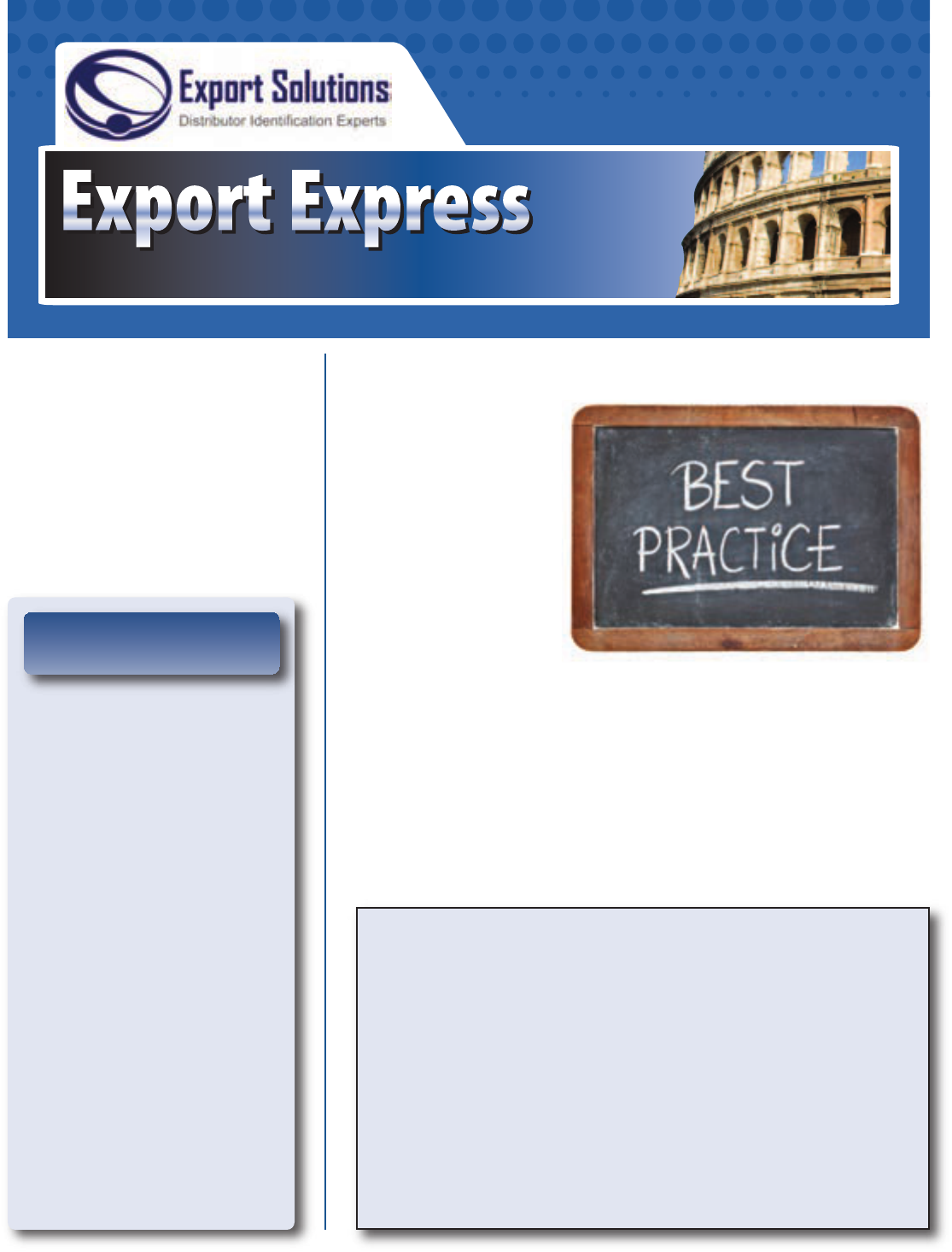
Insights to Accelerate International Expansion
Distributor Management Guide
Our Mission: Help Manufacturers “Spend time Selling to Distributors versus Searching for Distributors”
In This Issue
Sell to 96 Countries
Looking for new customers and
distributors in international markets?
Export Solutions’ distributor database
covers more than 9,200 distributors
in 96 countries. Our database features
extensive coverage of leading food,
confectionery, and beverage distributors.
New! Export Solutions’ retailer database
now tracks 2,700 retailers in 96 countries.
Order now at www.exportsolutions.com.
Page 3
Distributor Performance: Recognize the
Leaders, Push the Laggards
Page 17
Ten Tips: Measuring Distributor
Enthusiasm for Your Brand!
Page 25
10 C’s – Cooperation Model
Page 36
How to Win 2022 – Ten Tips
Page 43
Currency Exchange – Tough Tactics
for Tumultuous Times
Page 50
Retailer Annual Business Review
Page 58
“Best in Class” Distributor Standards
Page 80
Contacting New Distributor Candidates –
Best Practices
Export managers spend
our lives working with our
international distributor
networks. Our days are
filled with meetings, emails
and phone calls discussing
shipments, new items, and
promotional activity. There
is a definitely a “science” to
our methods for partnering
with distributors.
Export Solutions’ Distributor
Management Guide seeks
to capture strategies,
techniques, and templates that we use to
build international businesses. Much of
the material will be familiar, if not
forgotten for many export managers.
Our Distributor Management Guide serves
as a reference tool for all export
managers and a gentle reminder of good
ideas that work.
These insights represent Best Practices
from some of the 400 projects I've
completed across Europe, Asia,
Middle East, and the Americas. Export
Solutions’ newsletters and handbooks
represent the collective thinking of
more than 9,900 export managers and
government trade groups that form my
network. I try to learn something new
from every company that I work with
and every distributor that I meet. Like
our ideas? Contact us to take your
international business to the next level.
3 “Distributor Respects what the Brand Owner Inspects.”
3 “What's Measured is Treasured.”
3 Judge distributor success by in-store visibility for your brand,
not only containers purchased.
3 Visit stores independently without your distributor to observe
realistic market conditions.
3 How much money does a distributor make for servicing your brand?
3 Track the number of countries where you have the #1, #2, or #3 brand,
not the total countries you sell to. No one is impressed if you sell to
70 countries, but your volume totals 1-2 small shipments per year in
most of them.
Greg's Guidance: Distributor Management
Distributor Management Guide
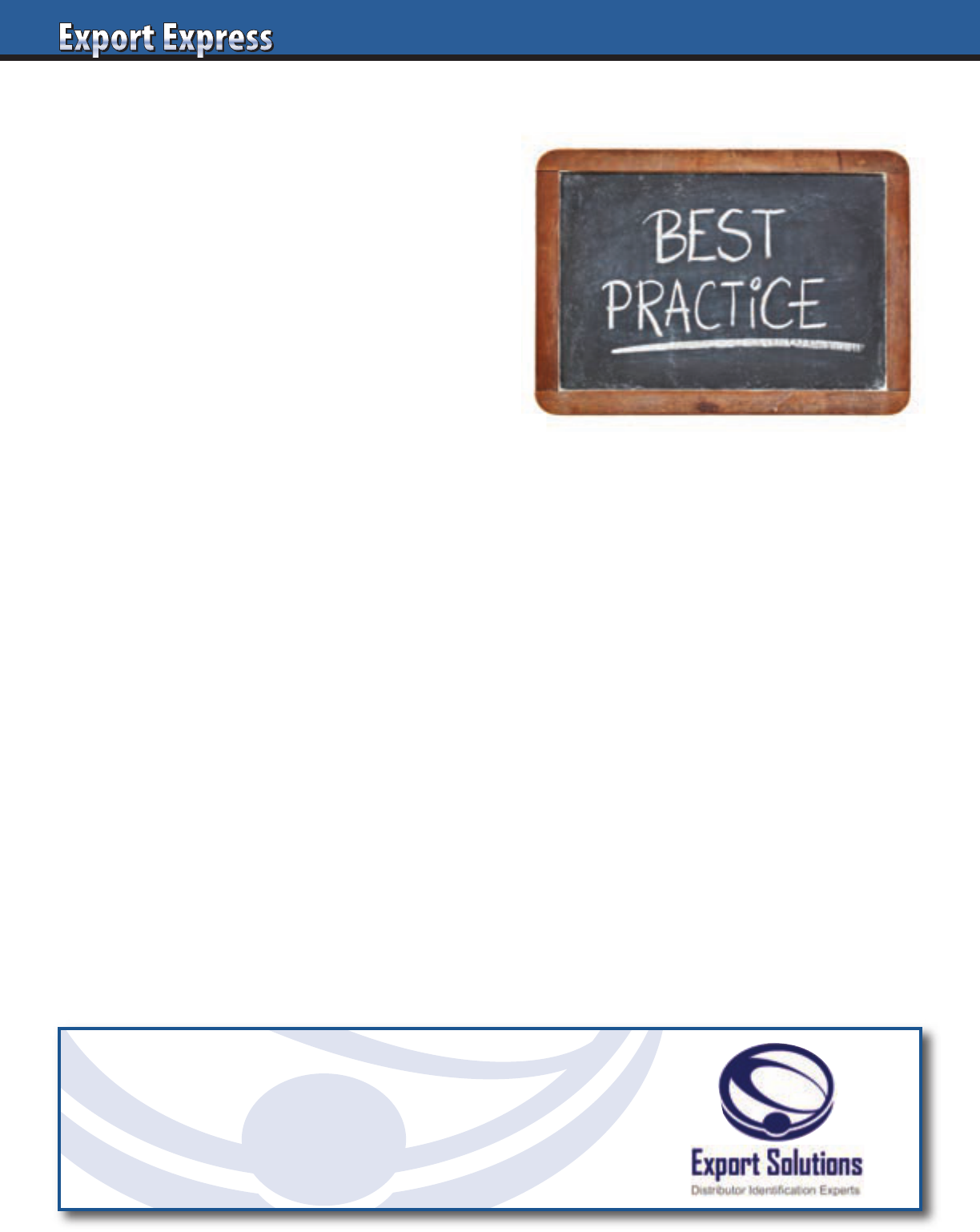
How can you take your business to the next level? Export is not
easy and managers are constantly challenged to create miracles.
Game-changing results demonstrated by sales increases of
20 percent, 50 percent or more require aggressive strategies,
not just a repetition of last year’s promotion program.
Read Export Solutions’ 12 tips (20 percent more than 10 tips!)
for driving exceptional results.
1. Big Bet – Focus Country
Pick one mid-size country where you have a decent business,
but significant potential to grow. Test a “heavy-up” marketing
investment program. Invite the distributor to visit your
headquarters to meet senior management and secure
commitment for delivering the “stretch” plan.
2. Dedicated Brand Manager at Distributor
Fund a dedicated brand manager “in house” at your distributor.
This person should maintain a dual reporting relationship to the
distributor and you. Your exclusive manager will immediately
identify issues (and solutions) and supply laser focus against
priorities. Allocating a budget for a “junior” brand manager
may pay out.
3. Mergers and Acquisition
Consider buying a local category competitor. This may increase
your scale and provide access to resources such as factory or a
direct sales team. “If you can’t beat them, buy them.”
4. E-Commerce Focus
E-commerce represents a different sales channel. We’ve viewed
cases where a brand is a “sales hero” in e-commerce, but not
available through conventional supermarkets or pharmacies.
E-commerce sales may be highly incremental.
5. Costco Global Deal
Costco ranks as a global retailer, with 2022 sales expected to
reach around $150 billion. Costco operates 770 stores, including
245 high volume outlets outside the USA. Costco loves exclusive,
“mega pack” offers and can purchase large quantities centrally
for the USA or certain international regions.
6. Celebrity Endorsement
Millennials are glued to their phones, waiting for the latest
news to cross their Instagram feed. Hire a local agency to snare
celebrity endorsements or mentions from popular bloggers.
7. Drop Your Price
How much incremental volume would you generate with
a 20 percent price drop? 30 percent? In some cases, your
distributor will share or co-fund a meaningful price reduction.
The incremental sales and fatter market share may represent
a good return on investment.
8. Co-Promotion
Link with a famous local brand in an adjacent category.
Challenge your distributor to offer a group promotion with
several of his brands. I have observed promotions where you buy
one brand with a higher price point and another brand (could be
yours) is given away free and the other manufacturer reimburses
you for your wholesale cost.
9. Sales Contest
Everyone loves a sales contest! Feature an expensive prize like
a trip to a resort destination or a big screen television and watch
your reps sell like crazy.
10. Local Co-Packer
In-country production may translate to more competitive prices
by avoiding duties and dealing with local cost inputs. In other
cases, consider shipping in bulk and packing finished goods
on site.
11. LTO – Limited Time Offer Pack
Create a special pack with vintage labeling or celebrating a local
sports event. I thought that the “Share a Coke” campaign with
personalized bottles was outstanding.
12. Monthly Market Visit
Most export managers rely on periodic visits to measure
distributor progress. This prevents a “deep dive” into the issues
and familiarity with your brands performance outside the capital
city. Select a country like Saudi Arabia, Peru, Philippines or
Malaysia where visit frequency can impact results. “A distributor
respects what the brand owner inspects.”
Twelve Tips: Generating Game-Changing Results
Looking for Good Distributors?
Export Solutions’ database covers
9,200 distributors in 96 countries.
www.exportsolutions.com
2
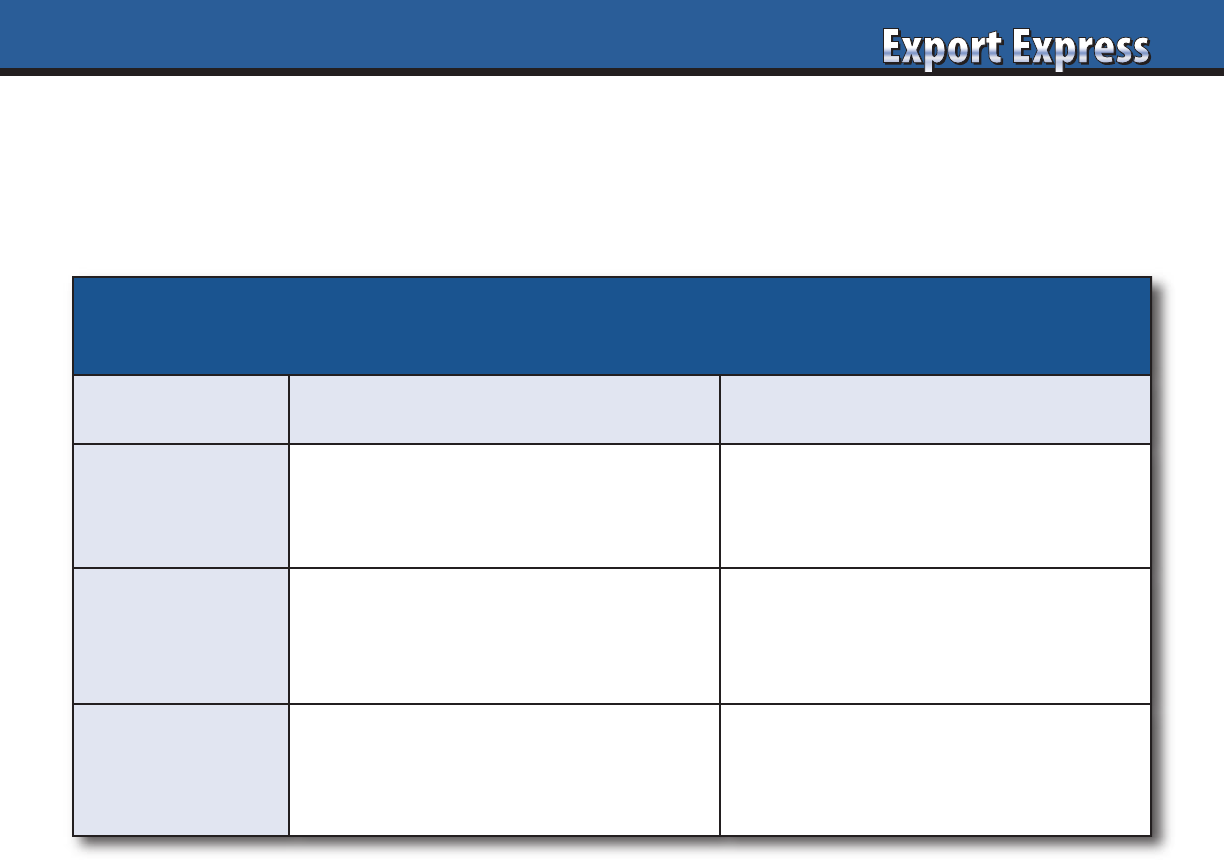
3
Distributor Performance: Recognize the Leaders, Push the Laggards
The start of a new year is an appropriate time to review distributor performance. This process starts with the evaluation of the usual
metrics such as shipment results, market share, and success delivering new item placement. Normally, distributor performance ranges
across the spectrum from outstanding results delivered by top distributors to under-achievers who fail to meet their shipment budget.
Each scenario warrants a different approach in terms of managing for the future.
Distributor Segmentation Analysis
A valuable exercise is to segment your existing distributors into
the three groups: Leaders, Performers, and Laggards. Look at
the organizational models of your “Leaders” and Laggards.”
Are there consistent threads between the business specialization
of your distributor network? For example, do you find that your
“Leaders” are all Large Distributors (versus small), Big Brand
Distributors (vs. niche), Category/Ethnic specialists (vs. all types
of Food), technologically savvy versus “old school?” A similar
analysis should cover your “Laggard” distributors. Are under
performers small organizations that fail to meet your
requirements? Or alternatively, large distributors where your
brand is too small to gain sufficient attention? Your analysis
may reveal that one type of model works well for large or
adjacent countries while another approach works best for
smaller or remote countries. Look for the trends!
Lessons Learned
Completing the distributor segmentation exercise described
above should yield some important conclusions on the best
partner models to pursue for your brand. For example, an Italian
manufacturer of candy may confirm that his best performing
distributors are international confectionery experts, versus
distributors specializing only in Italian products. On the other
hand, an ethnic Asian food producer may find that the best
candidates to represent his brand are Asian channel specialists
versus distributors that represent all types of fine food categories
such as Tea & Olive Oil.
Next Steps
Honor your leaders and drive them to higher levels. Recognition
such as Distributor of the Year, visits with your company CEO,
or requests to deliver a presentation on their “success story” are
inexpensive motivators. “Laggards” impact our own ability to
achieve our personal objectives. We often like the people who
work at “Laggards”, but at times, you must act to protect the
long term interests of your company and pursue a change in
distributors. It is important to recognize that all companies have
distributors that are “Leaders” and “Laggards.” Proactive attention
to fix the “Laggards” will only improve your results versus
suffering through another year with a poor performing partner.
Export Solutions Can Help
Our industry leading database has been used by more than
3,000 brands to locate partners in 96 countries. This includes an
average of 85 unique distributors per country. There are always
many alternatives to consider in every country when you have
access to the Export Solutions database.
Export Solutions serves as a consultant to European and
American brands of all sizes. Our work includes analysis
of distributor networks and development of strategies for
motivating, measuring, and rewarding distributors. Export
Solutions has helped companies identify, interview, and sign
distributors on every continent. Contact Greg Seminara at
[email protected] to discuss your project.
Our motto is “Spend time Selling to Distributors vs. Searching
for Distributors.”
Distributor Segmentation
Results Next Steps
Leaders
20% of total
Shipment increase of 10% or more.
Growing Market Share.
Innovative Strategies.
Recognition: Public & Financial.
Invest in team generated ideas.
Share learning with other markets.
Performers
60% of total
Shipments + 5% and in-line with
overall market growth.
Consistent results over many years.
Support current growth trajectory.
Challenge to reach “Leader” status.
Laggards
20% of total
Flat/declining shipments.
Poor results for 2+ years.
Low energy/innovation.
Probation status for existing partner.
Evaluate different representation options.
All markets have alternatives!

4
I admit it: I like big distributors.
They feature more critical mass which
allows them to invest in people and
technology. Retailers and large
distributors are “co-dependent,” leveling
the playing field. Also, big distributors
get paid first during financial crisis
and usually offer better multi-channel
coverage and retail services. However,
many small/mid-size brands feel lost at
a big distributors, securing mediocre
results and failing to access the massive
distributor’s resources. Listed below are
Export Solutions Ten Tips for “Getting
Better Results with Big Distributors.”
1. Develop a Personal Relationship
With Your Distributor’s CEO
Call him a few times per year. Invite him
to dinner or a high profile sporting event
when you are in town. Send him a good
business book. Stay top of mind.
2. Focus on 2-3 Priorities
Provide a limited number of specific,
measurable objectives that are critical
to the delivery of your annual business
plan. Many companies bombard their
partners with a myriad of priorities,
forms, and requests diluting focus.
Instead position communication,
reporting, and activities in context
of the 2-3 tasks that must happen.
3. Invest in Distributor Sponsored Events
Large distributors offer the possibility
of co-promotion with their other brands.
Frequently, a mid-size brand may be
able to gain promotional activity at a
reduced cost due to the scale of their
distributor partner.
4.Evaluate Your Distributor Brand Manager
Your distributor brand manager is your
primary point of contact. If your business
is not growing, this could signal a need
for a change in brand manager. Two
scenarios exist. In some cases, you may
have a senior brand manager with too
many brands and no time for you. In
these cases, it may be better to shift to
a junior brand manager with more
bandwidth. In other cases, your contact
may be too junior, with limited
organizational clout to get things
done. In this example, you may fare
better by changing to a more veteran
brand manager.
5. Spend Time With
the Field Representatives
I am an advocate of escaping distributor
conference rooms for the hustle of the
stores. Spend time with the sales
representatives visiting their customers
and stores. The field team is frequently
ignored by export managers, but serves
as the engine of the distributor. Take
them to lunch, listen to their problems,
understand their business, give them a
gift with your company logo and they
will be your dedicated warriors for life.
6. CEO Market Visit
Invite your CEO or other senior
executives to visit the market. Distributor
CEO’s love to “rub elbows” and solve
the world’s problems together. You’d be
surprised at the number of market issues
that will disappear in advance of your
CEO visit. It’s also a good idea to invite
your technical experts in information
technology or supply chain to visit.
Big distributors love to learn best
practices from their overseas suppliers.
7. Create a Distributor Advisory Council
Invite a select group of large distributor
CEO’s to advise your company on
international development. Meet twice
per year a year, with at least one event at
a resort location. This allows your large
distributors to build relationships with
your senior team in an intimate setting.
All members of your Distributor
Advisory Council will achieve their
annual objectives!
8. Sales Contest
Create some excitement with a sales
contest for the entire distributor
team.Make it fun and structure it to
maximize winners. Find a way to include
all the “non-sales” people if you can.
9. VIP Visit to Corporate Headquarters
Treat your distributor as a VIP at
your corporate office. This trip creates
a memorable bonding experience and
a chance for you to serve as a good host.
Take the distributor to a new product
development laboratory and organize
a meal with your CEO or executive
officers. Make him feel like a member
of the family.
10. Distributor Awards
Recognize your high performing
distributors with an award. This could
be Distributor of the Year or for achieving
$1 million in sales or for 15 years of
partnership. Some companies sponsor
smaller awards for key account manager
of the year in each market and retail
representative of the year. Publicize the
event by awarding a plaque, hold an
awards luncheon, take photos and share
a press release of the celebration.
In most cases, large distributors have
achieved scale through years of hard
work and success. Most suppliers
maintain a mix of large and smaller
distributors. Veteran export managers
will confirm that good results are possible
with distributor organizations of any
size. The key is to align yourself with a
committed partner who loves your brand
and is delivering shipment growth
consistent with overall market trends.
Ten Tips: Getting Better Results with Big Distributors
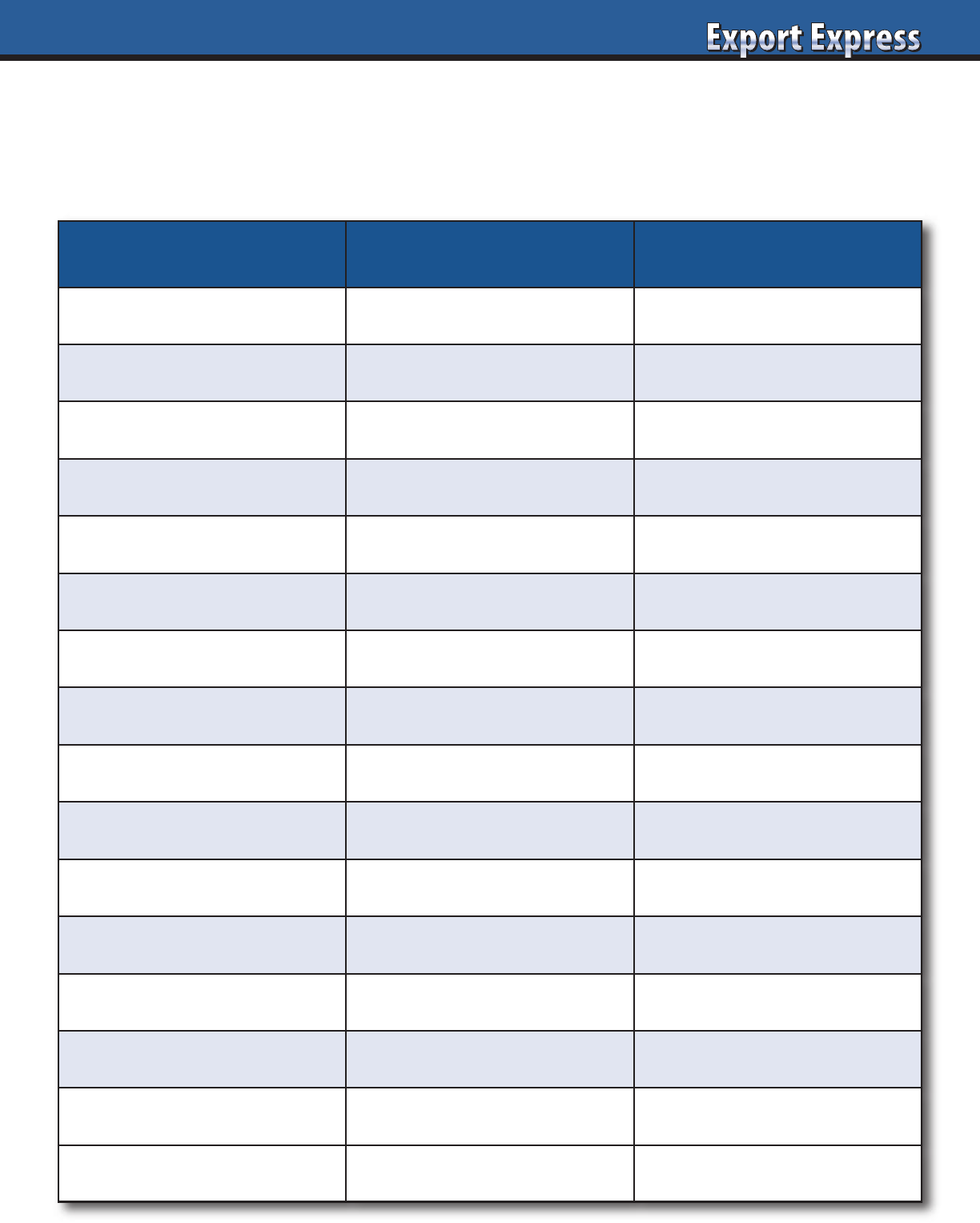
5
Are Distributors Interested in Your Brand?
High Interest Low Interest
Email Response
Immediate reply Delayed or no reply
CEO Engagement
Active participation Delegated to middle management
Scheduling Meeting
Flexible and easy Difficult. Conflicts.
Airport/Hotel Pick-Up
Offers to pick you up Take a taxi!
Meeting Presentation
Tailored. Prepared for you. Standard presentation
Category Research
Obtains data None
Competitive Review
Shares photos: store sets Informal comments
Store Visits
Organized/led by CEO Office meeting only
Samples
Obtains and tries samples Waits for you
Team Participation
3-6 people at meeting One person
Cell Phone
Shares private number Email address only
Questions
Addresses key issues No questions
Timeline
Meets due dates Delays
Post Meeting Follow-up
Immediate and frequent None
Proposed Plan
Detailed and fact based Brief topline
Results Winner Second place?
I have conducted hundreds of distributor interviews for multinational companies: P&G, Nestle, General Mills, Duracell, Lindt, Tabasco,
Barilla, J&J, etc. Distributor candidates all claim enthusiasm and high interest in your brand. See Export Solutions’ checklist of clues to
measure true distributor interest level.
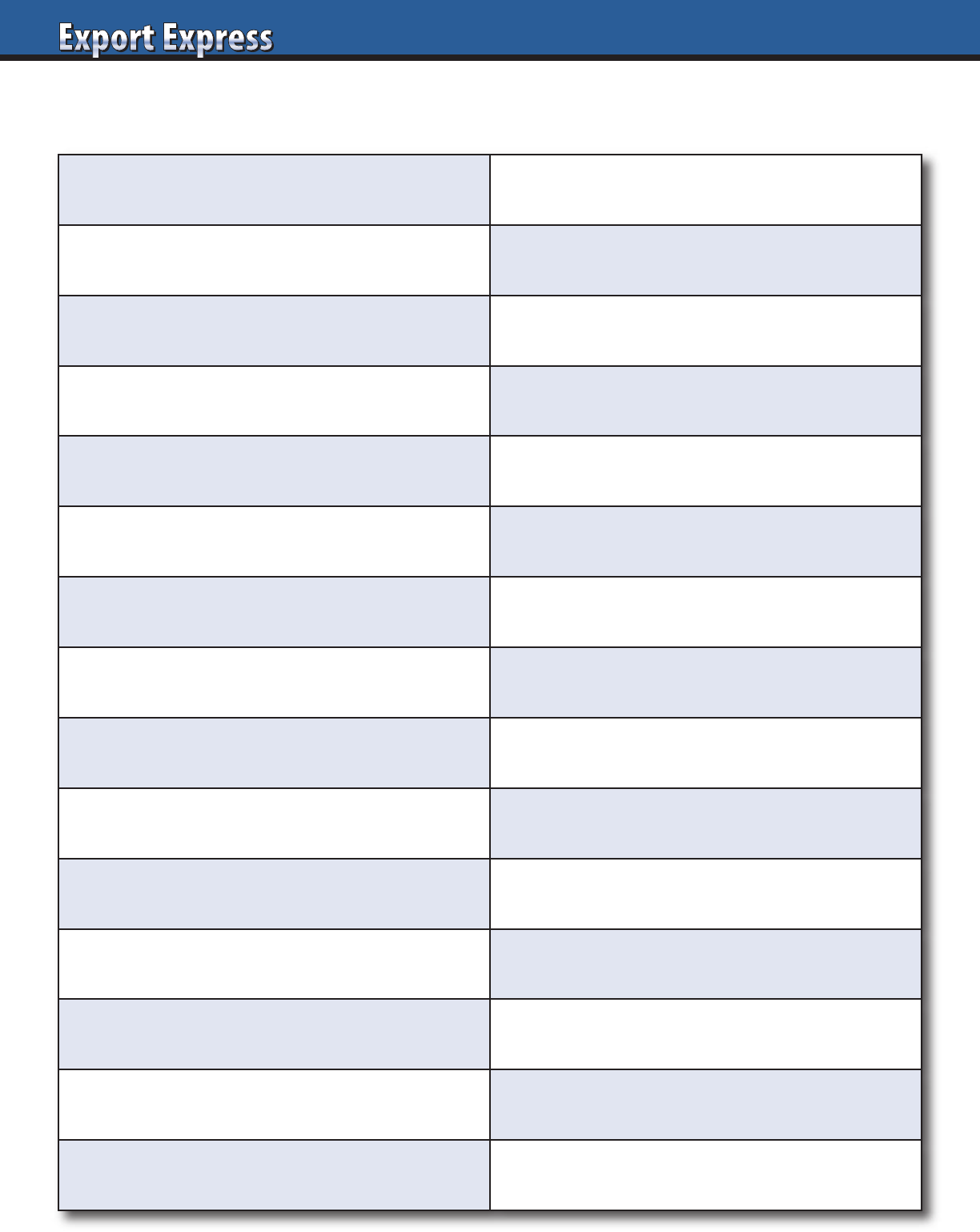
6
30 Ideas to Help your Distributors
1. Trade Promotion
Share Best Practice Trade Promotion concepts
16. Innovation
Launch new items with successful track record
2. Celebrate Success
Distributor of the Year Awards
17. Sales Contest
Fund contest to incent and motivate distributor team
3. Category Expert
Provide fact based trend updates
18. Thank You Letter
Letter of recognition for team to distributor CEO
4. Logistics Service Level
Target 98% on time, complete orders
19. Event Sponsorship
Support distributor events, especially retailers’ charities
5. Store Check
Periodic visits to understand “retail reality”
20. Distributor Workload
Work proportional to distributor income
6. Billback Reimbursement
Prompt (30 days?) payment of distributor invoices
21. Price Increase
Provide fair lead time for price increases
7. Distributor CEO
Regular (quarterly?) checkpoint web meetings
22. Reference
Write testimonial or volunteer to serve as reference
8. Response Time
Earn reputation as “quick responder”
23. Training
Create Zoom training session for sales team
9. Marketing
Support distributor’s ideas. Invests in creative programs.
24. Portal
Create Portal with presentations, brand facts, digital tools
10. Customers
Do not deal directly with distributor’s customers
25. Social Media
Corporate experts available to help/share content
11. Reports
Stick to basics: sales, forecast, inventory, listing maps
26. VIP Trip Your Headquarters
Introduce distributor to your senior executives
12. Market Visits
Visit, but not too often
27. Samples
Support large sampling programs
13. Team Building
Create team relationship: finance, logistics, administration
28. Corporate Functional Experts
Provide distributor access to your corporate experts
14. Distributor Profit
Respect that a profitable distributor is a healthy distributor
29. Consumer Research
Conduct local research for consumer insights
15. Syndicated Data
Invest in Nielsen data
30. Create Culture of Success
Achieve joint business targets
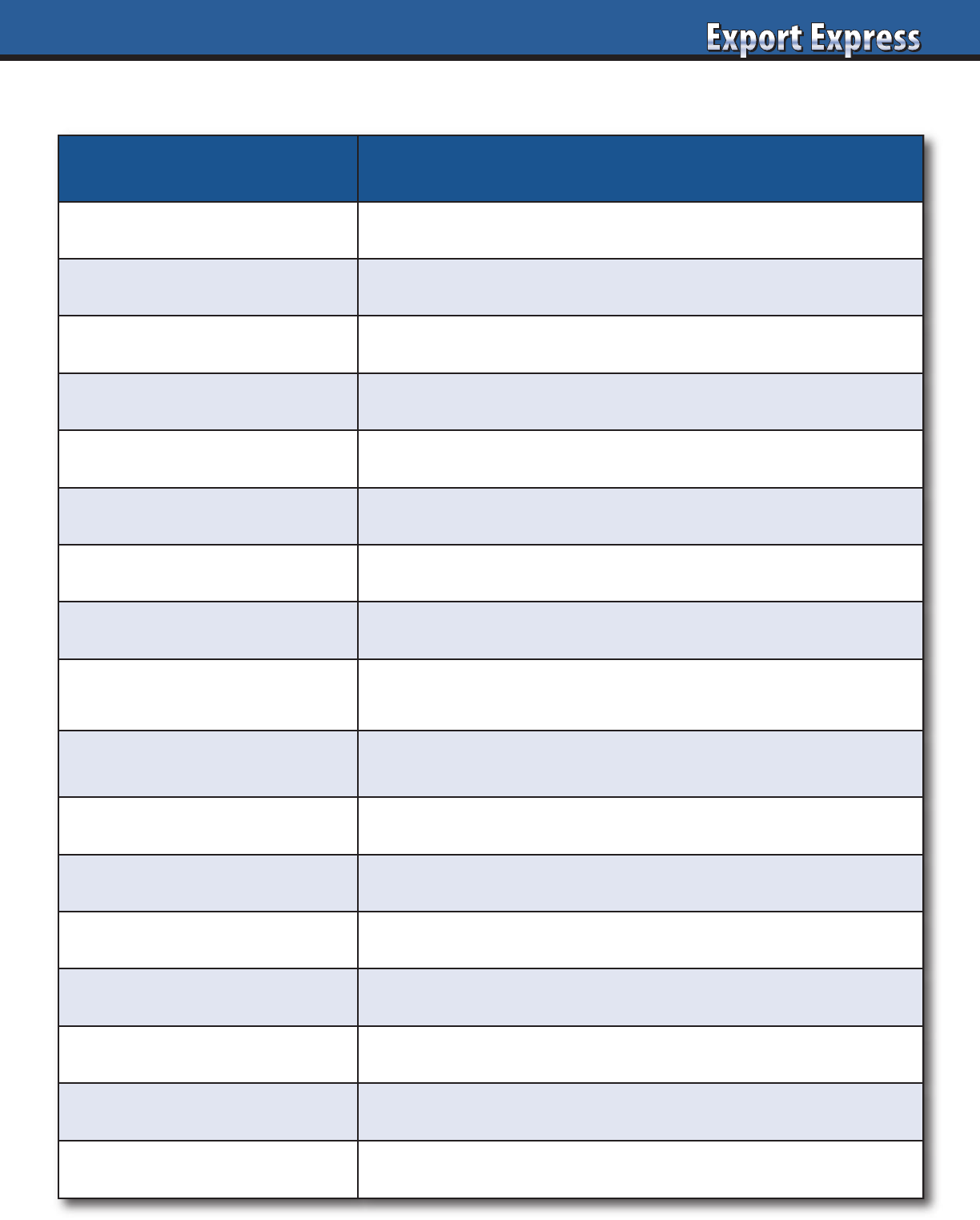
7
Distributor 2022: New Skills for New Times
Priority Comments
E-Commerce
Treat as major channel, not niche.
Social Media
Hire digital marketing team, link with local influencers.
CEO Engagement
Regular Zoom calls with overseas brand owners.
Culture
Promote young, energetic spirit. Embrace change and new channels.
Category Specialization
Laser focus on core categories vs. products in every aisle of the store.
Training
Use Zoom tools for regular training events with brand owners.
Team
Hire under 30's for social media and e-commerce sales roles.
IT Investment
Upgrade platform: E-commerce, retail reporting, sell out data.
Cost to Serve
Measure profitability by brand and customer.
Realign based upon 2022 reality.
Market Your Distributor Brand
Promote your distributor brand to leading
companies in your core categories. Export Solutions can help!
Sampling
Aggressive investment in this A+ tool. Explore new sampling vehicles.
Brandscaping
Invest in a “Best in Class” web site. Create modern company profile.
Scorecard
Incorporate e-commerce metrics: Page 1 results, consumer feedback, etc.
Brand Managers
Reward creativity and marketing excellence, not paperwork completed.
Recipe
Promote meal solutions, not just brands.
Optimism
Be positive. Think, “why not?”
Results Exceed expectations everyday.
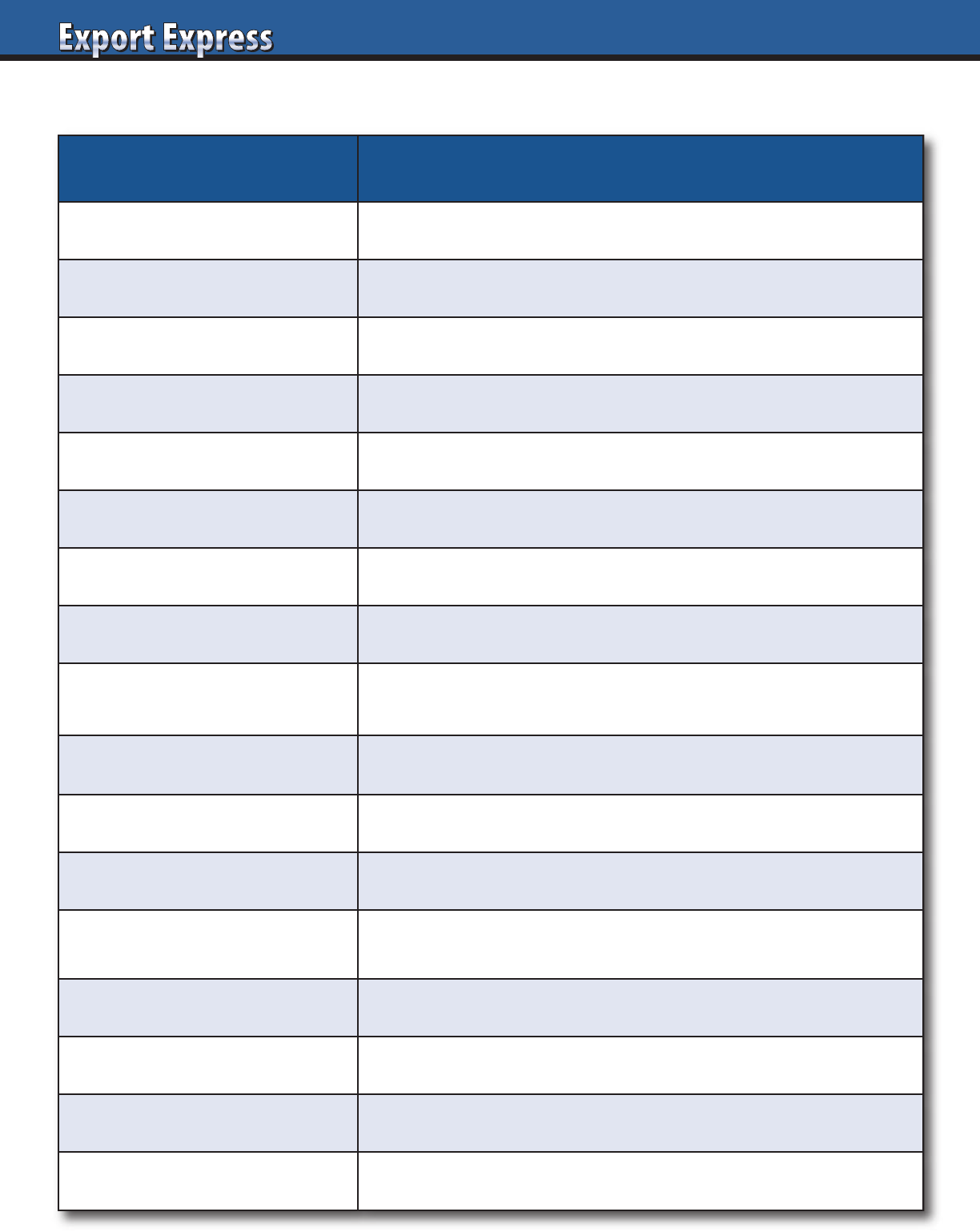
8
Export Manager 2022: New Skills for New Times
Priority Comments
E-Commerce
Treat as major channel, not niche.
Social Media
Create content library for distributors to “plug and play.”
Management Engagement
Zoom with distributor leadership team: CEO, CFO, VP Sales, etc.
Culture
Promote young, energetic spirit. Embrace change and new channels.
Category Specialization
Share category trends. Deliver product innovation, not “me too.”
Training
Use Zoom tools for regular distributor training events.
Team
Make your corporate functional experts available to your distributor team.
IT Investment
Upgrade platform: Brand portal, syndicated data, shipment status.
Cost to Serve
Measure contribution to distributor profit.
Look at pricing and margin vs. agreement.
Marketing Your Brand
Invest to adapt your global marketing plan to local conditions.
Sampling
Aggressive investment in this A+ tool. Explore new sampling vehicles.
Brandscaping
Invest in a “Best in Class” web site. Robust export resource page.
Scorecard
Monitor pricing/assortment at retailer web shops.
Incorporate e-commerce metrics in your distributor scorecard.
Brand Managers
Demand young digitally savvy brand managers.
Recipe
Promote meal solutions, not just brands. Look for co-promotion partners.
Optimism
Be positive. Think, “why not?”
Results Exceed expectations everyday.
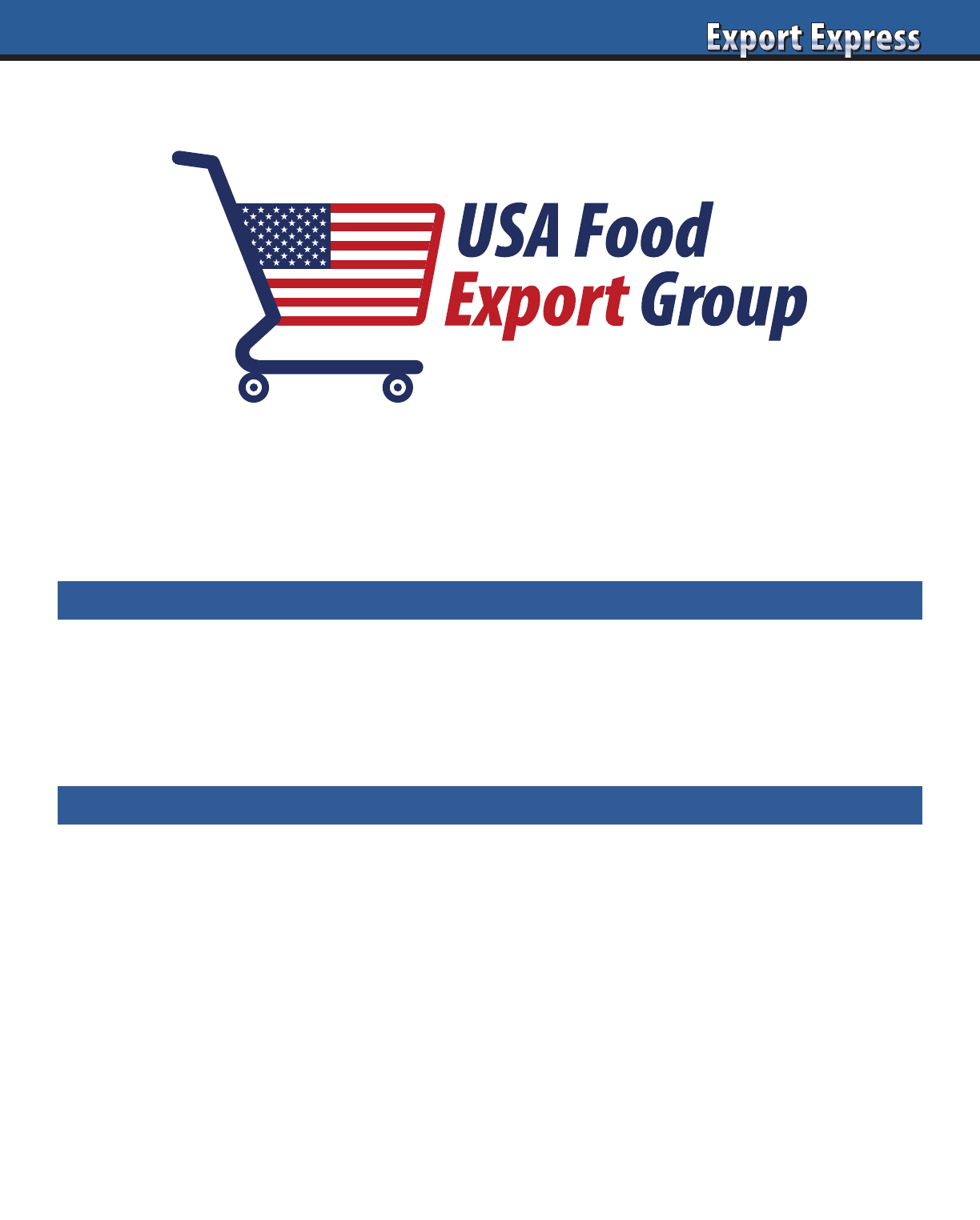
9
Introducing
America’s Favorite Brands
Executive Board
Export Solutions Smucker’s Tabasco
Greg Seminara, CEO Danny Berrios, President Megan Lopez, Vice-President
General Mills Sun-Maid
Eric Saint-Marc Carsten Tietjen
Advisory Board
Bazooka Candy Blue Diamond Bob’s Red Mill
Santiago Ricaurte Dale Tipple Jan Chernus
Bush Beans Campbells Church & Dwight
Dave Bauman Julio Gomez Arun Hiranandani
Ferarra Candy Heartland Idahoan
Daniel Michelena Tom Theobald Ryan Ellis
Johnsonville Sausage Kao USA Keurig Dr. Pepper
Cory Bouck Julie Toole Billy Menendez
Mizkan Reynolds Welch’s
Noel David Chris Corey Marc Rosen
19 Companies | 200+ Top Brands | $80 Billion Combined
View our activities for export managers – www.usafoodexport.com
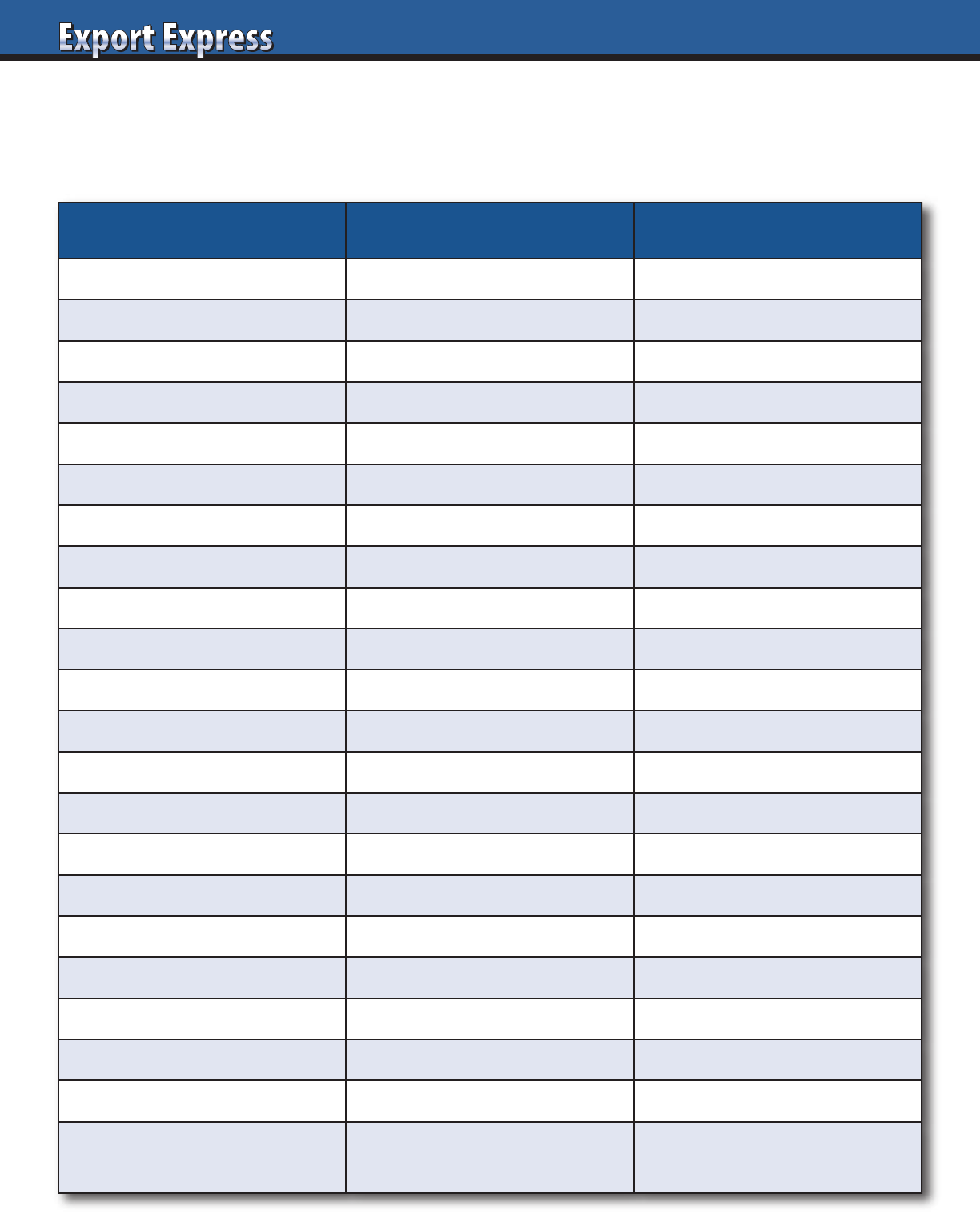
10
Distributor Supplier Relations
Managing the New Normal
Actitivity Old School New School
Customers Mass Supermarkets Omni Channel
Mom: Whats for? Dinner Breakfast, Lunch
Sales Team Over 50’s Under 30’s
E-Commerce Channel Niche Mass
Assortment Limited (supermarkets) Unlimited (e-com.)
Retail Conditions Store visits Web shop checks
Business Management Sales targets Profit targets
Distributor Expertise Generalists Specialists Category, Channel
Business Manager Brand Manager Idea Generator
Check Point Conferences Telephone calls Teams/Zoom
Overseas Supplier Visits Monthly/Quarterly Quarterly/Annually
Brand Presence Shelf Visibility Page 1 results (e-com.)
Distributor Logistics Delivery by case Delivery by unit (e-com.)
Recipe Ideas Your brand only Total meal solutions
Training Annual meeting Webinar (anytime)
Consumer Marketing Mass via multi media Targeted and digital
Brand Information Email to distributors Online portal
Pricing: Distributor Calculation “Closed Book” “Open Book”
Trade Shows Visit in person Hybrid:Virtual and in person
Foodservice Restaurants Home Delivery
Forecasts/Reports Monthly “Live,” real time
Results-Expectations Achieve your Objective Achieve your Objective

11
“The shelf doesn’t lie!” Why are you
surprised when a distributor misses their
sales numbers and you perform a few
random retail checks and the stores look
awful? Or your “star” distributor proudly
brings you to supermarkets where your
brand’s presence looks better than the
sample display you built in your
headquarter office?
A classic question is “how do you
determine a good store from a bad store?”
Some multinational leaders feature well defined shelf guidelines for positioning and
placement and the pursuit of a “perfect store.” A more common practice is for an export
manager to share a pretty photo of a sample shelf layout, created by the marketing
department. A few general objectives are supplied, but no formal training, sales rationale
or KPI measures.
“Is the Store a 10?” is a tailored program from Export Solutions that succeeds in
providing simple shelf standards and a methodology so that every member of a
distributor organization will be crystal clear on store level performance expectations.
Basically, each store is graded with points awarded for assortment, shelf space, shelf
positioning, pricing, and off-shelf display.
Listed below are key elements of developing a “Is the Store a Ten?” program for your
distributor teams.
1. Develop Clear Standards
Award points based upon a “physical count” of authorized items or shelf facings
or answers to a “yes or no” question. Example: Is there a secondary display?
Create a simple 10 point scale, where a “1” is poor and a “10” is the best.
2. Align With Key Account and Retail Sales Teams
This initiative is best explained to key influencers in the distributor organization in-store.
Meet with them at a supermarket and discuss program execution for their customer or
market. The program will fail if you only discuss it with a brand manager or distributor
CEO at the office.
3. Conduct Training Session
Share the program with the entire retail team. Provide a rationale and sales facts for our
objectives. Provide FAQs on common questions or issues. Role play. Launch a “Is the
Store a 10?” shelf drive with prizes. Establish clear KPIs.
4. Measure Improvement: Today a “5”…Tomorrow?
It is likely that early scores may be closer to a 5 than a perfect 10. This is okay
in most cases. The goal is to incorporate a cultural shift in evaluating stores and
capture improvement
5. Planogram Serves as the Official Record
I love the distributors that flood us with photos of great store layouts. I swear
that sometimes the image is the same display taken from several different angles.
Validate performance with a copy of the approved planogram or schematic.
A 2022 objective for all is to escape the boredom of hot conference rooms to spend more
time witnessing retail reality. Export managers are paid on container sales, but this
represents only warehouse inventory. A store shelf is where export dreams are translated
to retail revenues. Contact me to discuss implementing “Is the Store a 10?” for your
company.
www.exportsolutions.com
Greg Seminara
404-255-8387
“Spend Time Selling to Distributors versus Searching for Distributors”
Is the Store a 10?
Strategic Services
Contact Us for
Export Solutions
1. Identify Best in Class
Distributors: 96 Countries
2. Best Practices
Export Strategy
3. Distributor Management
Workshops
4. Export 101:
Let’s Get Started
5. New Market
Prioritization
and Launch Plan
6. Personal Distributor
Introductions:
96 Countries
7. Walmart International
8. Distributor Contracts,
Margins, and Fees
9. Meeting Speaker
10. International
Strategy Expert
Strategic Services
Contact Us for
Export Solutions
1. Identify Best in Class
Distributors: 96 Countries
2. Best Practices
Export Strategy
3. Distributor Management
Workshops
4. Export 101:
Let’s Get Started
5. New Market
Prioritization
and Launch Plan
6. Personal Distributor
Introductions:
96 Countries
7. Walmart International
8. Distributor Contracts,
Margins, and Fees
9. Meeting Speaker
10. International
Strategy Expert
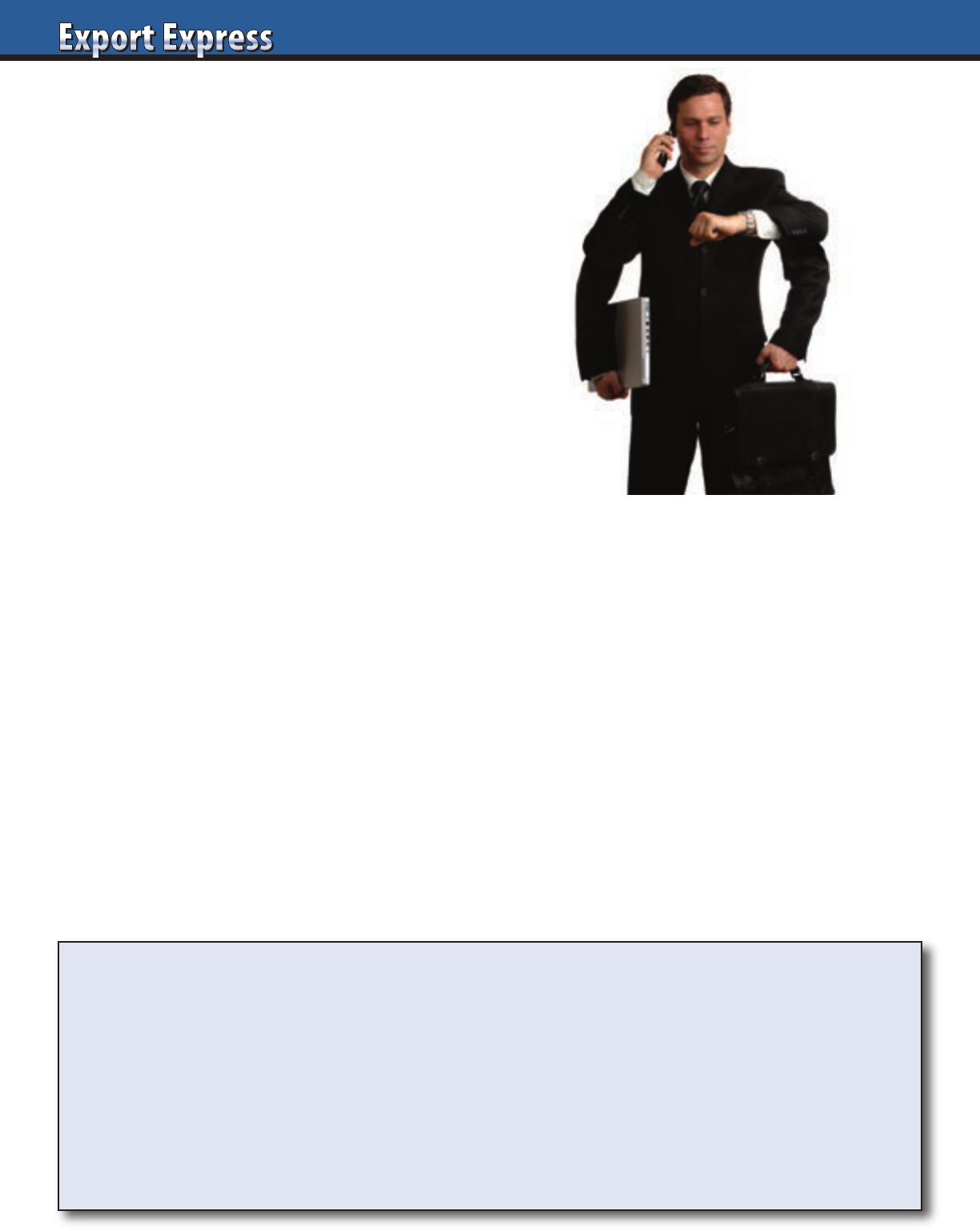
12
Brand owners demonstrate significant due diligence in selecting
a new distributor. This includes lengthy negotiations with the
distributor’s owner and development of a marketing plan with
their senior management. Typically, you sign a contract and then
they introduce you to “John” (example), a 30 year old Brand
Manager who will be your first point of contact. In reality, most
brands are in daily contact with “John,” but do little up front to
evaluate, select, or define “John’s” role in building your business.
Role Definition
Normally, the title of Brand Manager is assigned to your primary
point of contact at the distributor. This person serves as the
central switchboard of all elements regarding your brand’s
business at the distributor. Problem solving, logistics issues,
promotion planning, and chasing payments are just a few of
the everyday tasks assigned to the Brand Manager.
Can your Brand Manager “Move the Organization?”
A key issue is the seniority of the person assigned to your
brand. Are you working with a top manager who has a close
relationship with the CEO? Or are you working with a junior
person who works hard, but basically maintains the flow of
paper? In most cases, I look for a person that commands the
respect of the distributor organization. Many distributors have
multiple brand managers, all lobbying for share of voice from
the team. “Best in Class” Brand Mangers possess the tenacity
to motivate the sales organization to achieve the results and
priorities required for your brand.
Workload
Brand Manager workload is always a key issue. A Brand
Manager may be shared by 3-5 brands. This approach may be
acceptable if you are a niche brand and you are achieving desired
results. On the other hand, it is frequently preferable to secure
a dedicated Brand Manager who spends 100% of their time
working on your business. Exporters need to recognize that
Brand Managers cost money, so your contact’s workload is
directly proportional to the income generated by your brand.
Marketing Versus Sales Background
Brand Managers typically come equipped with a marketing
degree. This background is helpful if your brand requires a
“classic marketer,” combining creativity with deep focus on
the consumer. In other situations, Brand Managers with sales
expertise prove to be adept at participating at key account sales
calls and understanding the best methods for working with the
sales force.
Compatibility
Do you like your Brand Manager? Most companies spend
extensive time working with their distributor Brand Manager
contact. You must be aligned and develop a healthy working
rhythm. This can be difficult, as you share common objectives,
but report to separate bosses and perhaps different incentives.
In many cases, a brand owner develops a strong personal
relationship with their brand manager. This can be unhealthy
if they like their contact, but let this relationship continue even
if results are poor.
People Power: Next Steps
A strong Brand Manager serves as your “Brand Advocate” at
the distributor. Export managers need to include assessment of
their potential Brand Manager as part of the Distributor selection
process. Ask “Who will be my day to day contact? Why? Other
choices?” Avoid “paper pushers” that are nice people and can
complete forms but offer few new ideas, complain about being
overworked and fail to capture the attention of the sales force.
Winning Brand Managers bring energy, new ideas, and results
to your brand. Recognize Brand Managers who maintain the
skill set to take your annual plan, add creative ideas appropriate
for their market, and drive the sales organization to deliver
the results!
People Power: Distributor Brand Managers
Greg’s Guidance: Export Strategy 2025
3 What are your Lessons Learned?
3 What are your Core Competencies?
3 Which countries offer exceptional growth for your category?
3 How much is your company willing to invest? Marketing, People, Promotion
3 What will our organization need to do differently?
3 What are realistic measures and benchmarks?
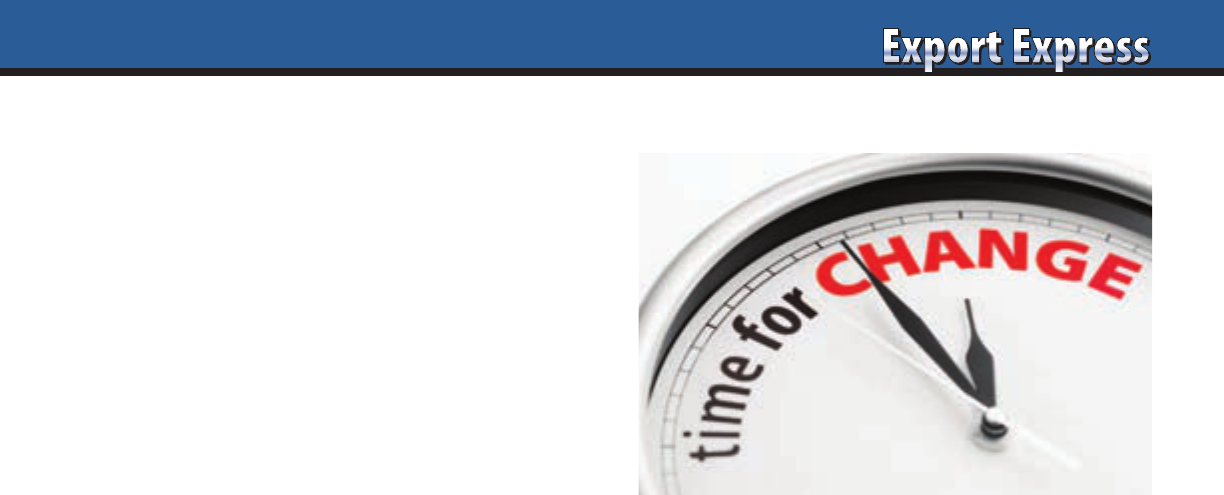
13
Every exporter has countries where
their brand performance lags far behind
expectations and market potential. This
appears as a serious issue when the poor
results are in a large strategic country like
the USA or China. The first step to fixing
the situation is to admit that you have
a problem. Too many times, export
managers loyally cling to their plan and
existing distributor with hope that “next
year will be better.” The likelihood is that
sub-par trends will continue without
intervention. Remember, it’s your quota
and job that suffer due to lackluster
results in a country. Listed below are
Export Solutions’ 10 Tips on action steps
for under performing countries.
1. Look in the Mirror
Chances are that your current brand
proposition is wrong for the country.
Your product sales are a reflection on
buyer and consumer response to your
product range. An underqualified partner
does not help, but is usually just part of
the problem.
2. Research Consumer Habits
Conduct category research to understand
why consumers in a foreign country do
not appreciate your brand like they do
“back home.” Category habits and
development vary widely, particularly
around food products. Recently, I
confirmed several examples where Asian
consumers demonstrated little interest in
certain Western style foods (although
everyone loves candy and snacks!).
3. Investment Level
Many poor performers suffer the classic
issue of insufficient funds to invest in
marketing and trade programs. There is
a cost of doing business everywhere and
the investment requirements can be huge
in a place like China or the USA. Best bet
is to break down the country into smaller
areas and focus on targeted investments
with high potential, regional retailers
where your brand has a higher probability
of success. Avoid the attraction of large,
national retailers where you realistically
cannot support the business. Don’t expect
miracles without basic investments in
marketing and trade promotion.
4. Establish and Track In Store KPI’s
Many exporters focus primarily on
monthly shipment numbers. Shipments
represent the ultimate scorecard, but we
strongly advocate the implementation of
in-store metrics. This process starts with
major account
listing maps,
tracking your SKU
level authorizations
for major customers.
The second step
is to launch and
measure in-store
presence guidelines.
How do you judge
a good store from
a bad store?
Ultimately,
shipments are
a reflection
of consumer
purchases, not
inventory sitting in a distributor’s
warehouse. “What’s measured
is treasured.”
5. Spend a Day at Retail With
Your Distributor Executives
We all spend too much time in comfy
meeting rooms sharing PowerPoint
presentations with optimistic plans.
Dedicate time for retail with the
distributor executive team. Visit stores
at random, picking an area on the other
side of town from the distributor’s office.
Create a store check sheet to capture
observations such as shelf space,
promotions, and competitive activity.
Speak to aisle clerks and store managers
to get “street smart” on your product
and category performance.
6. Secure Direct Buyer Feedback
Every distributor should maintain
excellent trade relations with at least one
of his key accounts (if not all!). Schedule
an appointment or a lunch with a friendly
buyer to secure his point of view. Try to
keep the conversation focused around
category dynamics and trends versus just
a request for more trade spending. Buyers
love to serve as “experts” and may
support you if you follow their advice.
7. Distributor Brand Manager
The Distributor Brand Manager serves
as our everyday contact and the conduit
to distributor resources. Problems may
relate to having an experienced brand
manager handling too many companies
or a junior brand manager, lacking the
clout to get things done with the busy
sales team. We all like our Brand
Managers, as they take our calls
and rescue us periodically, However,
sometimes it’s just not working and
you need a change.
8. Share Best Practices – Adjacent Countries
Every distributor will be quick to point
out “How different their country is.” The
reality is that there are more similarities
between countries than differences.
Look at an adjacent country or one
with common retailers and share lessons
learned. This may represent a category
review, presentation approach or special
sales contest. Invite the brand manager
to visit a successful country or attend a
meeting where best practices are shared.
9. FaceTime in the Trenches
Distributors appreciate export managers
willing to contribute to joint resolution
of problems. Consider sending a company
employee to work for 3-6 months on
assignment at the distributor. Visit
quarterly or more frequently. Schedule
bi-weekly update calls. Better to focus
attention on fixing a high potential country
than regular visits to small countries
achieving their objectives. “Distributor
respects what the principal inspects.”
10. Partner Change
A distributor change is the last resort,
but sometimes partners outgrow each
other and are no longer a “fit.” Export
Solutions’ database tracks an average of
85 distributors per country, so you always
maintain options. Transition to a new
distributor involves business disruption
and even a temporary decline in
shipments. The good news is that
your new distributor will be motivated,
committed and anxious to make a
positive impression with a fast start.
The key is to manage the process with
dignity and open communication, so that
the terminated distributor is not surprised
by your actions.
Ten Tips: Action Steps for Poor Performing Countries
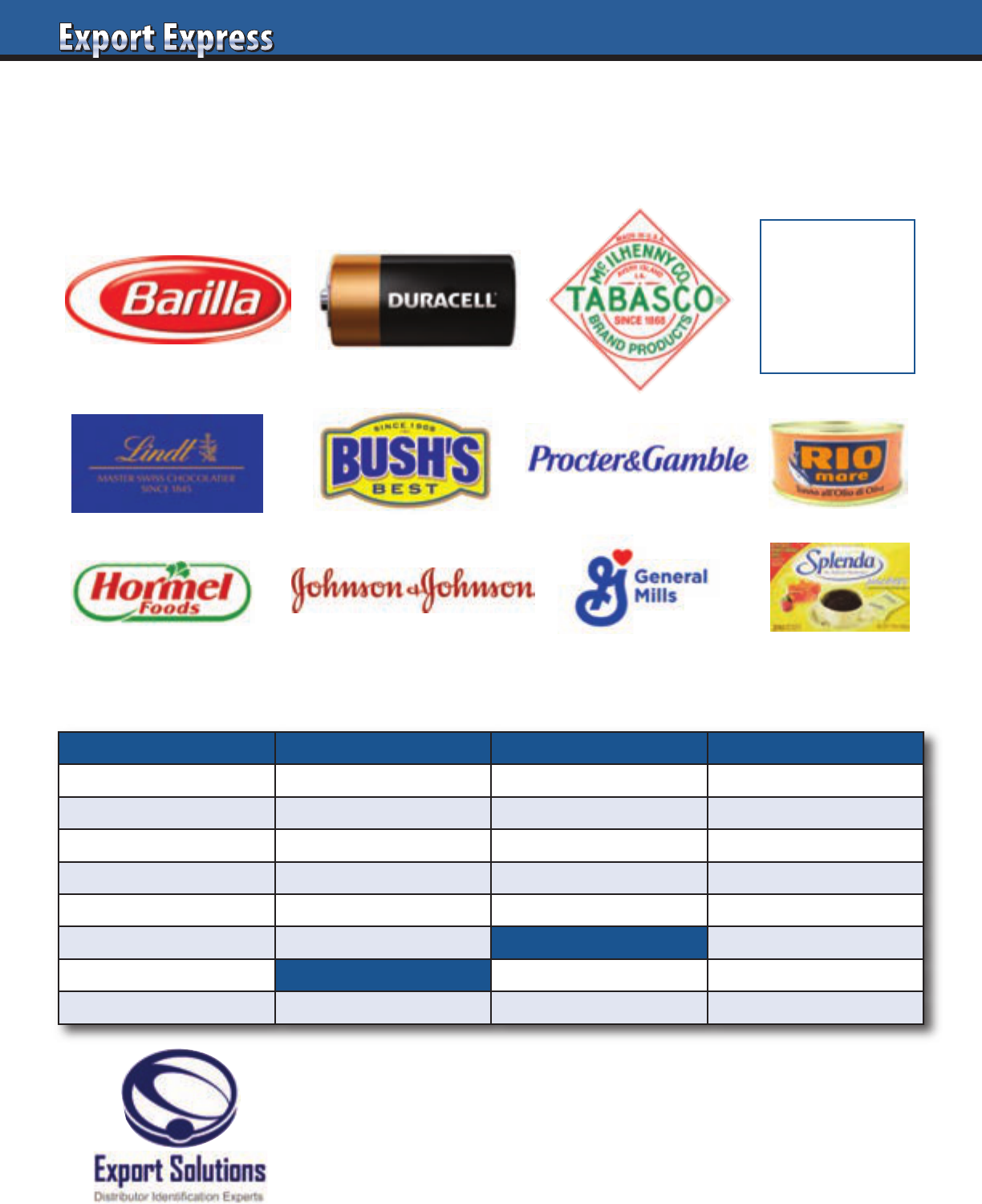
14
Distributor Search Helper for:
Your
Logo
Here
Can We Help You?
Recent Distributor Search Projects
Asia Europe Middle East Latin America
Australia Germany Israel Argentina
China Ireland Kuwait Brazil
Indonesia Netherlands Qatar Colombia
Japan Nordics Saudi Arabia Costa Rica
Malaysia Spain UAE Ecuador
Philippines United Kingdom North America Mexico
Singapore Africa Canada Panama
South Korea South Africa United States Peru
Call the Export Accelerator!
Contact Greg Seminara at greg@exportsolutions.com
to discuss your business development project.
www.exportsolutions.com
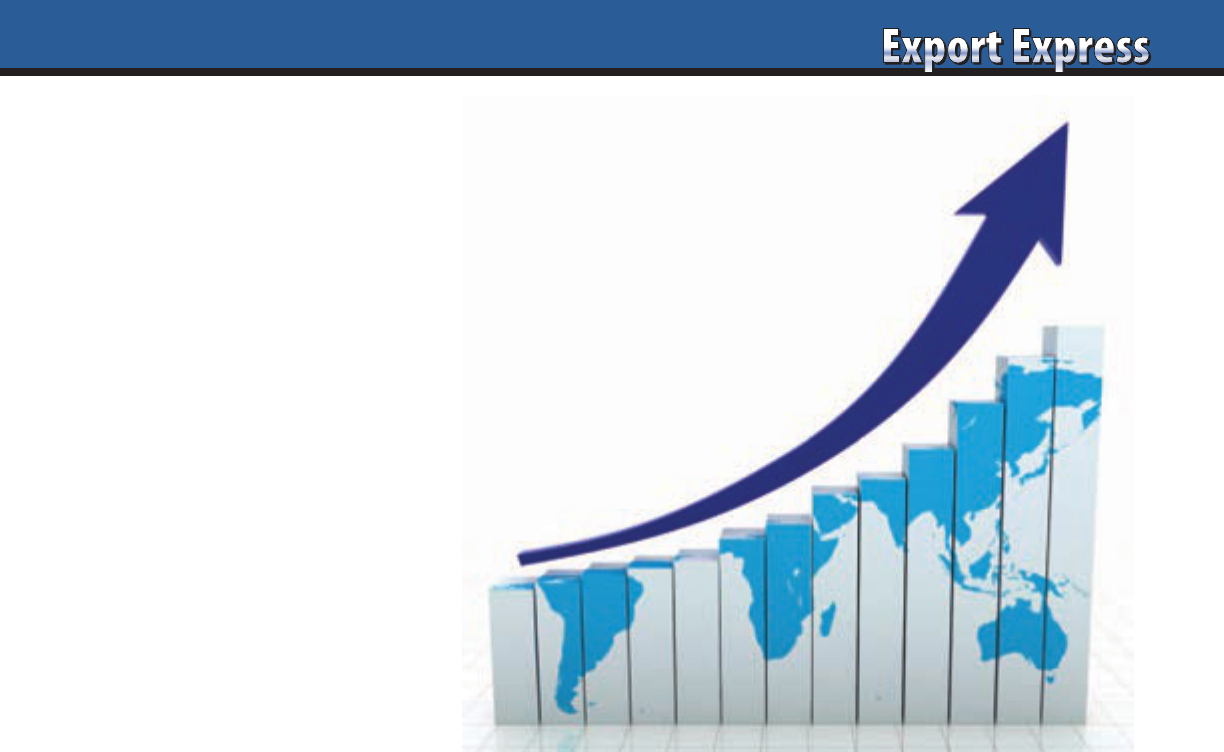
A client asked me a good question.
This Export Manager stated that he
always achieved his shipment objectives,
sold his brand across all countries, and
maintained a pretty good group of strong
distributors. What strategies could be
implemented to drive his business to the
next level? My immediate response was
that this company needed to adopt the
rigor and discipline employed in hitting
their sales quota and apply this approach
to metrics around the causal factors that
drove in-store purchases. At Export
Solutions we call this methodology
“Next Level Business Management.”
Factory Sales = Warehouse Inventory
We are all focused on surpassing our
shipment objectives. In many cases,
we meet these expectations by shipping
inventory to our distributor or a
customer’s warehouse. True sales are
achieved when a consumer purchases our
product and the retailer needs to reorder
to replace store inventory.
Supermarket Shelves – Product Showroom
Supermarkets and other retailers serve
as the showrooms for our brands.
An attractive showroom, with well
displayed products and an invitation to
buy, encourages purchases. How do your
store showrooms look? How do you
measure a good store versus a bad store?
Introducing MAPS Metrics
MAPS is an acronym for Merchandising,
Assortment, Pricing and Shelf
Management. The basic concept of
Next Level Business Management is
to establish clear objectives, focus,
and tracking methodology around
the fundamental drivers of in store
performance. The theory is that by
improving MAPS performance, you will
improve in store sales turnover and force
sales replenishment throughout the
supply chain.
Assortment – First Priority
In-store presence can not be tracked until
an item has been authorized for sale at a
retailer. Our first tool and step is normally
centered on managing a one page listing
map. This allows you to track your all
items’ penetration at leading retailers.
You can establish a customer weighting,
by size, and a listing percentage reflecting
total market coverage. It is important to
understand what percent of a retailer’s
stores where you are authorized. I
remember the famous story of a British
brand whose partner claimed distribution
at Walmart USA. Further investigation
revealed them selling to only 45 of 3,570
Walmart Supercenters.
Shelf Management & Pricing
What does an ideal shelf set look like for
your brand? How much space do you
have relative to your category market
share? Are you on the eye level shelf?
Are you placed next to your prime
competitor if this is desirable? Is your
brand priced at parity versus a similarly
priced competitor? Is the price gap versus
private label within the targeted range?
Has the retailer applied an equal margin
across all of your line extensions?
These are all tangible measures that may
be tracked via a numeric response or
“yes” or “no” answer.
Quality Merchandising
Incremental sales are driven by special
investments in promotional activity.
Next Level Business Management
quantifies quality merchandising drivers
and assigns measures. Did feature ad
meet targeted price point? Was there a
display? How many cases were on the
display? Was the feature ad a “major ad”
or a small line mention? What percent
of your allowance or discount did the
retailer reinvest in a lower price? Was
there a secondary display or location in
the store? These are all critical elements
that can be tracked and evaluated.
“What’s Measured is Treasured”
“The distributor respects what the brand
owner inspects.” “What gets measured
gets done.” These are all famous slogans
with the same basic message: track
something and a distributor will try to
meet expectations. The basic idea is to
measure a distributor based upon more
than just shipment numbers. In general,
begin with metrics around Assortment,
and then move to other areas such as
Shelf Management, Pricing, and Quality
Merchandising where the distributor may
have opportunities. Do not inundate the
distributor with new metrics around
every aspect of their business.
Next Steps
Export Solutions has expertise
at deploying Next Level Business
Management programs with leading
international brands. We have the
experience of designing metrics for your
brands and sharing techniques for rolling
this program out to your sales force and
distributor teams. Contact us for help in
applying our Next Level system to your
export business.
Next Level Business Management
15
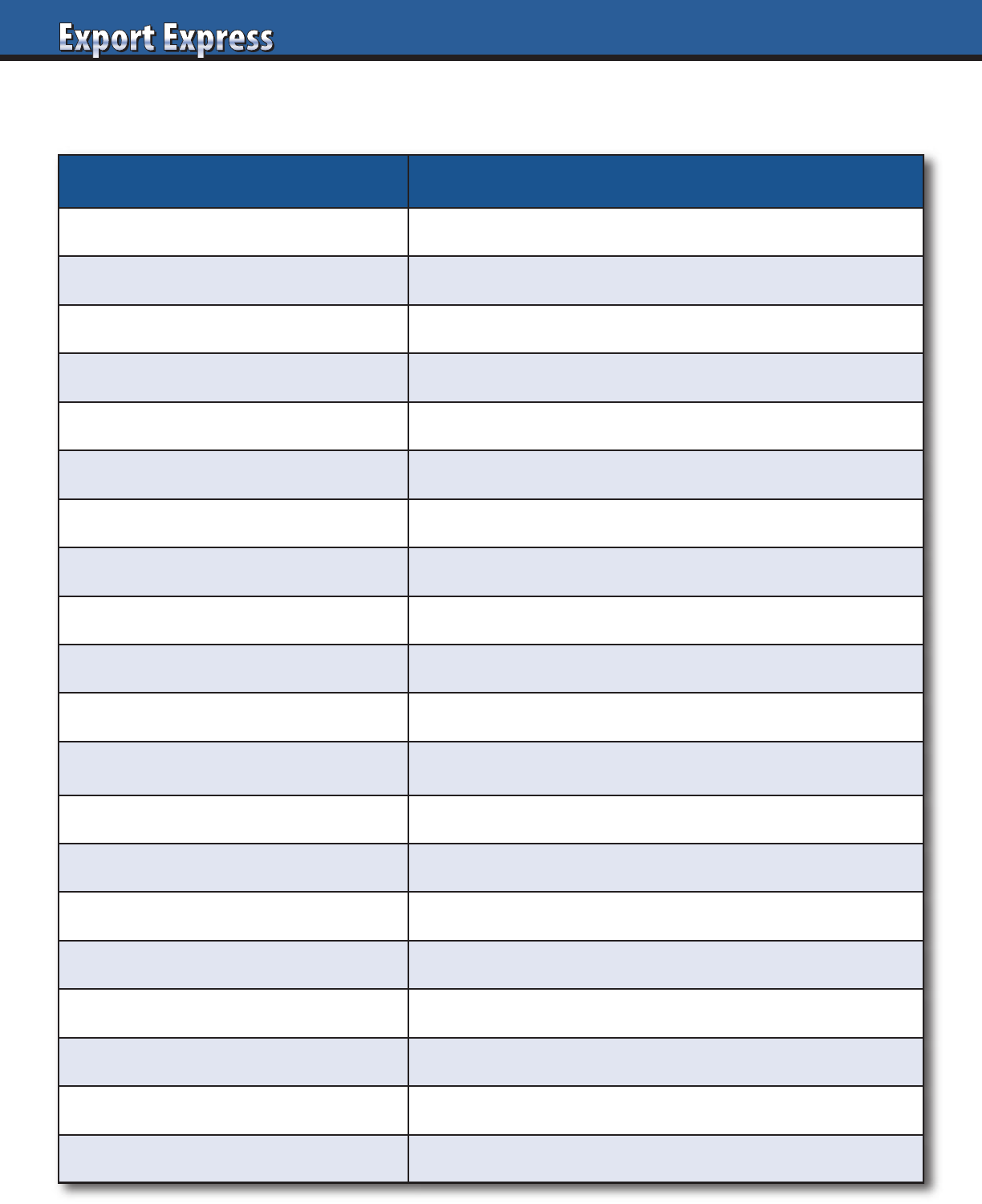
16
20 Tips to Accelerate a Mature Business
Activity Strategy
Creative Promotions
Retailer specific events. Offer fresh ideas.
Distributor Brand Manager
Upgrade talent. Secure “A” players on your business.
Pricing
More profit through higher volume at lower price?
Country Manager
Hire local manager or assign HQ person for 3-6 months.
Local Production or Copacker
Lower cost structure with added complexity.
Brand Ambassadors
Hire team with “brand uniform” to sample at local events.
White Space – Distribution
Fill voids on retailer listing map: Top 10 customers.
Social Media
Partner with influencers. Targeted local investments.
New KPIs
New measures: Listing maps, shelf placement, etc.
E-commerce Development
Invest to lead in this emerging channel.
In-Store Visibility
Educate and measure team on in-store presence goals.
Sampling, Sampling, Sampling
Aggressive distribution of free sample size.
Distributor Team Linkage
Zoom/Teams contact with Key Account Managers, etc.
Launch NPD Innovation
Excite team to launch innovation “The Right Way.”
Distributor CEO
Treat CEO as VIP. Create special relationship.
Sponsorship
Support local events and retailer charities.
Sales Contest
Excite and motivate retail sales team.
Alternate Channel Focus
Small shops, foodservice, duty free, drug stores.
High Spend Test
Will heavy up marketing or trade discounts drive sales?
Distributor Change
Motivated new team, high energy to solve old problems.

17
All your distributors express enthusiasm
and commitment for your brand. True
passion for your partnership is measured
by what distributors do, not by what they
say. Listed below are ten tips to consider
when measuring Distributor enthusiasm
for your brand.
1. CEO Commitment and Involvement
The CEO steers the distributor ship
and sets the tone for your business
relationship. Best in Class Distributor
CEO’s reach out via phone to touch base
periodically and spend time with you
when you are in town. They keep up to
date on your priorities and key issues and
ensure that his team is delivering good
service and results.
2. Responsiveness to Problems
Urgent situations erupt in every market.
Currency devaluations, product recalls,
or missed budget numbers require
immediate attention. What is the distributor
response time? Does the distributor share
your sense of urgency? How long does it
take to get problems fixed?
3. Customer Introductions
Most distributors maintain good
relationships with leading retailers.
Enthusiastic distributors are happy to
introduce you to the leadership of their
customers. These distributors will use
their personal relationships and “favors”
to benefit your brand.
4. Best People Assigned to Your Brand
The distributor functions as a team.
Every team has superstars and
developing players. How does the
distributor allocate “talent?” Are the
stars working on your business?
5. Web Site Prominence
A Distributor’s web site offers important
clues to distributor professionalism,
services, and core brands. How
prominently is your brand featured on
the distributors web site? Is a case study
using your brand results mentioned?
Is your brand logo listed at the top of
the page or buried at the bottom?
6. Distributor Visits to Your Headquarters
How often does the distributor travel to
your headquarters or factory? Does the
distributor have a relationship with your
CEO, vice president of international, or
other leaders? Many distributors are
interested in visiting companies based
in San Francisco or London, but true
enthusiasm accompanies meetings in
Chicago or Hamburg during the winter!
7. Creative Ideas
Distributors can be magicians at
developing “new ways to solve old
problems.” Good distributors bring
innovative ideas to adapt your plan
and funding budget to the local market.
How often does your distributor apply
their brilliant new idea to your brand?
8. Distributor Awards and References
Successful distributors proudly display
their awards in conference rooms and
lobbies. Is your award visible? I always
ask distributors for references from other
brand owners. Does the distributor use
your name as a reference or request a
testimonial from you on their performance?
9. Love Your Brand
I have written an entire article on getting
a Distributor to Love your Brand. There
are many ways to feel the love. Does the
distributor sales team wear the shirts with
your brand logo or use the pens that you
handed out at the last sales meeting? Is
the distributor able to secure a customer
meeting for you on one week lead time?
Are they happy to see you arrive or just
to see you depart?
10. Exceed Expectations Everyday
The most enthusiastic distributors exceed
your expectations everyday. This includes
shipment results in excess of overall
market growth and total organizational
support behind your new product
introductions. Enthusiasm is not
measured in words and weeks, but
in actions carried out over many years
by a Best in Class partner.
Ten Tips: Measuring Distributor Enthusiasm for Your Brand
Need a hand? Visit www.exportsolutions.com.

18
The classic industry question is: “How do you maintain
distributor focus on your company priorities once you leave
the market?” There is no easy answer, but a solution is to
encourage a distributor to “fall in love” with your brand and
company. Falling in love is based upon an attraction to a person
and enjoyment of spending time with them. The same feelings
can apply to a brand. I regularly witness super human efforts
by distributors for small and medium sized brands just because
of “Brand Love.” Listed below are Ten Tips to romance your
distributors to superior results.
1. Master Chef Endorsement
The first step is convince the distributor team to be passionate
consumers of your product and enthusiastic brand ambassadors.
For food products, invite all of the group to lunch at a popular
local restaurant. Pay a well-known chef to prepare a meal
featuring your products. Or cook lunch for them yourself.
For candy and snack brands, provide samples to share with
the distributor’s children’s sports clubs. Provide frequent
and generous samples to all of the distributor team.
2. Fun Sales Meetings
Every distributor has sales meetings for their entire company.
These are usually a repetitive drone of Powerpoint slides.
Why not hire an agency to create a fun presentation module
which may include audience participation, games, or costumes?
Or sponsor a local motivational speaker or training workshop
using your products as the case studies. Break the mold of
boring meetings!
3. Provide Great Customer Service
Respond to requests quickly. Ship complete containers to keep
the pipeline filled. Pay all bill-backs promptly.
4. Distributor Awards
Recognize your high performing distributors with an award.
This could be Distributor of the Year or for $1 million in sales
or for 15 years of partnership. Some companies sponsor smaller
awards for key account manager of the year in each market and
retail representative of the year. Publicize the event by awarding
a plaque, hold an awards luncheon, take photos and share a press
release of the celebration.
5. VIP Visit to Corporate Headquarters
Treat your distributors as VIPs at your corporate office.
This trip creates a memorable bonding experience and a chance
for you to serve as a good host. Take the distributor to a product
development lab and organize a meal with your CEO or
executive officers. Make him feel like part of the family.
6. Support Local Events and Charities
Creative distributors drive incremental sales through local
marketing events. Display a willingness to support their ideas
and invest in new programs. Events that sync with the
distributors (or retailers) special charity build substantial
goodwill and appreciation.
7. Annual Incentive Trip
Many companies sponsor trips for distributor executives who
attain their annual sales quota. Mid-size brands source added
focus by sharing the benefits of a good year by inviting achievers
(and spouses?) to trips in resort locations like Hawaii or
international cities such as Rome. Everyone works hard
to qualify and vow to return “year after year.”
8. Holiday Baskets
Send baskets or gift packs to distributor employees that include
your product and other adjacent holiday items. The idea is to
extend your brand’s relationship to your partner’s homes.
9. Distributor Advisory Council
Form a small elite group of distributors to advise your company
on international development. Meet twice a year with access to
your companies senior management. All members of the
Distributor Advisory Council will meet their sales target.
10. Treat Distributors as Your Best Customers
Be nice. Say “thank you” frequently. Send handwritten notes to
people to recognize a nice display or a fixed problem. Have fun
while you work.
Distributors may work with twenty brands or more, each
shouting for attention. Distributors support all their brands, but
there is no magic science to allocate time equally. Naturally, we
all spend more time and effort for the brands and people we like.
What can you do to make your distributors “Fall in Love?”
Ten Tips: Getting a Distributor to Love Your Brand
Need more information? Visit www.exportsolutions.com.
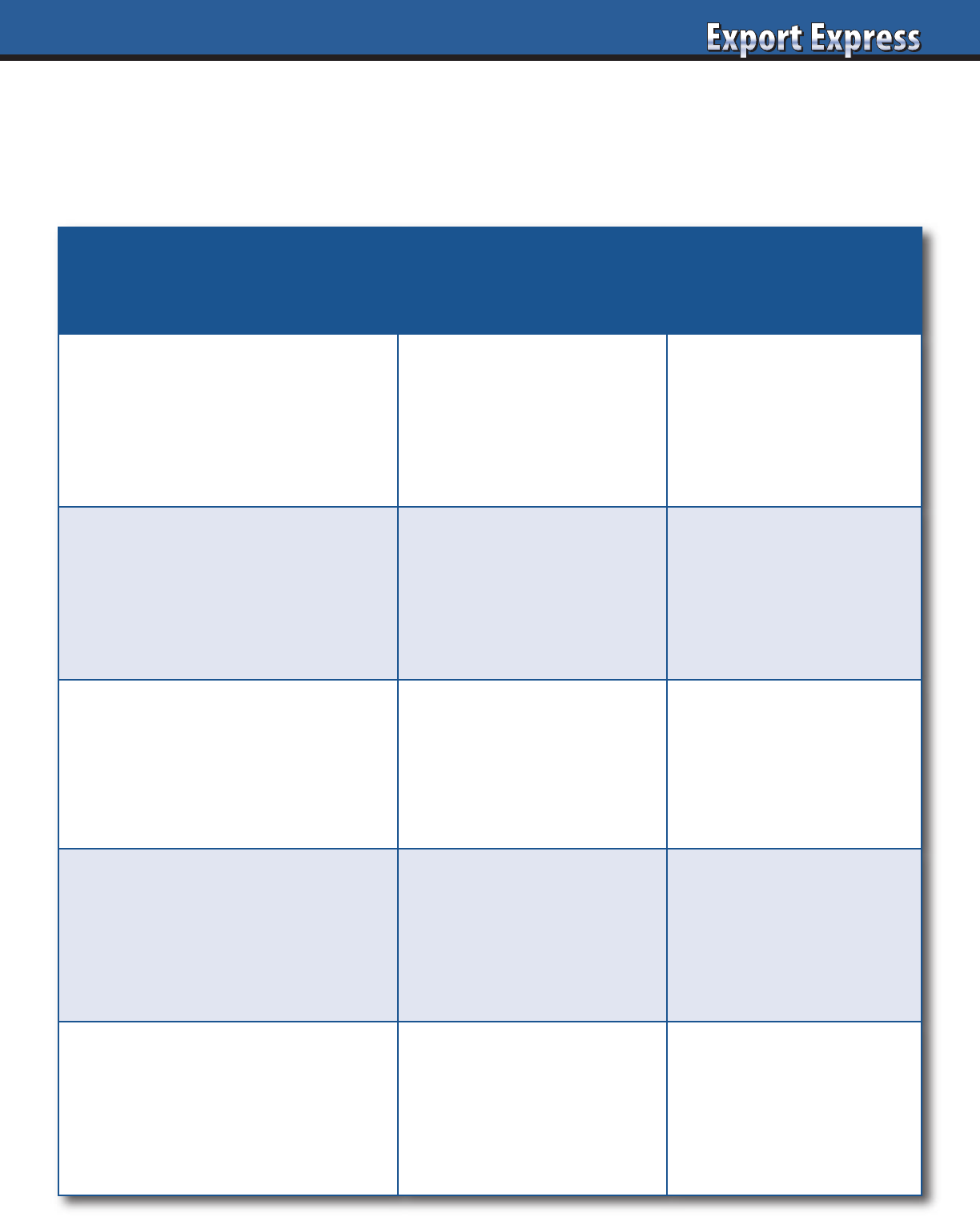
1919
Export Lessons Learned Template
Why are Countries Leading or Lagging?
(Complete based upon your company performance)
Leading
Countries
Lagging
Countries
Country Performance:
Measure: sales per capita
Brand Development:
Measure: market share
Biggest Opportunity
Countries:
Measure: category size/growth
Promotion Effectiveness:
Tactics creating incremental sales
Distributor Performance:
Measure: sales increase,
commitment
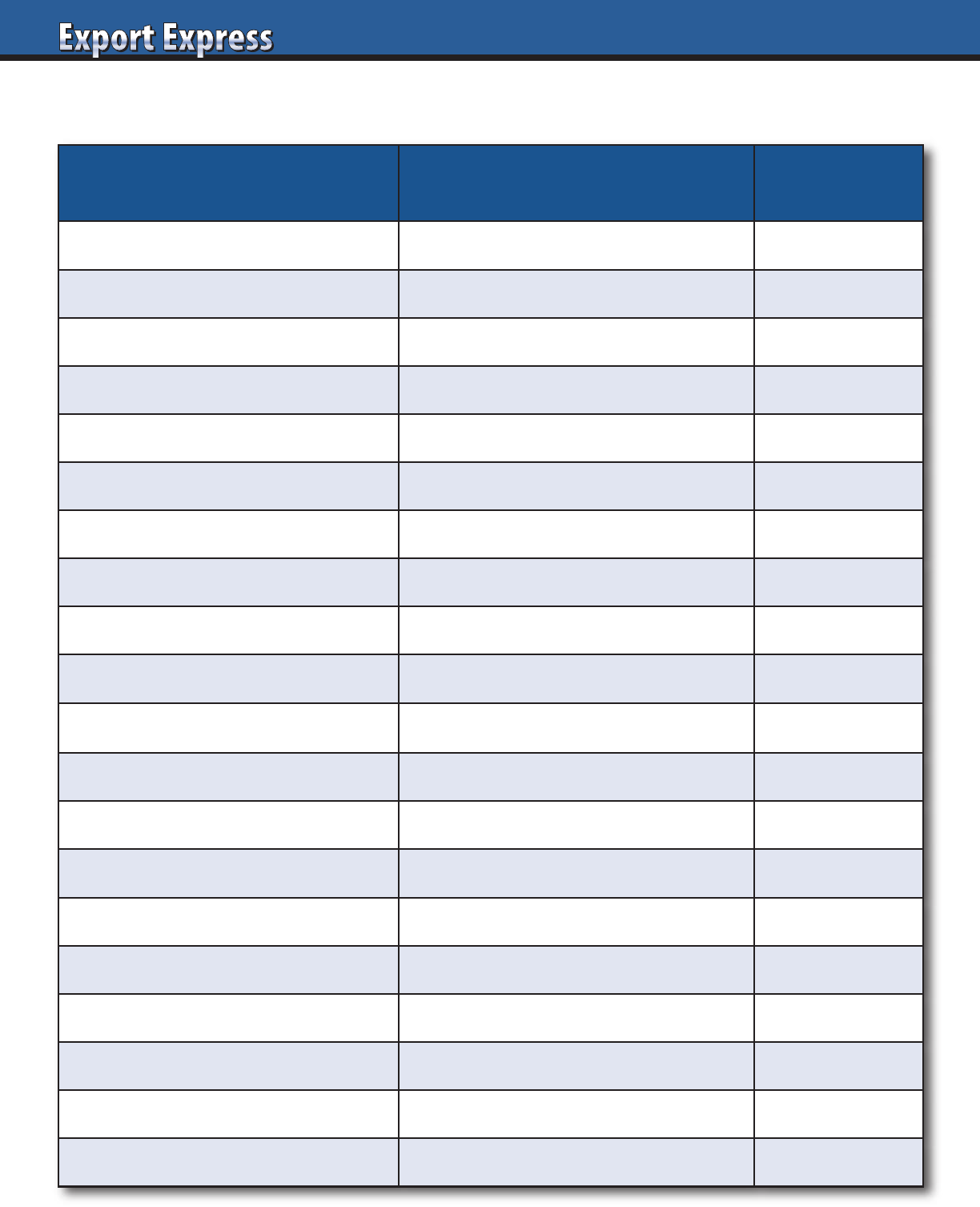
2020
How to be Distributor of the Year
Assessment Criteria Considerations
Rating:
(10 = Best)
Results vs Plan, Market, Category • Reliable, 5 to 10% + growth
Retail Store Conditions • Brand presence exceeds market share
Brand Manager • “A” player, dedicated resource
Cost to Serve • Fair margin, based upon size, complexity
Omni Channel • Channel teams, e-commerce focus
Fun • Do you enjoy the people, country?
Financial • Prompt payments, accurate billbacks
Problem Solving – Response Time • Same day service, sense of urgency
CEO • Loves your brand, engaged
Pioneers New Business • From concept to cases
Supply Chain Management & Forecasting • Accurate, efficient
Customer Relations • Senior access at top retailers
Category Knowledge • Viewed as expert by buyers
Profitable Partner • Sells profitable cases
Analytical Skills: Shipments, Nielsen • Trends, opportunities, plan
Team (Finance, IT, Logistics) • Cross functional expertise
Digital Savvy • Social Media team, pioneers new tools
Reporting • On time, complete, accurate
Best Practices • Creative idea source for other markets
Cultural Alignment • Perfect fit with brand owner’s vision
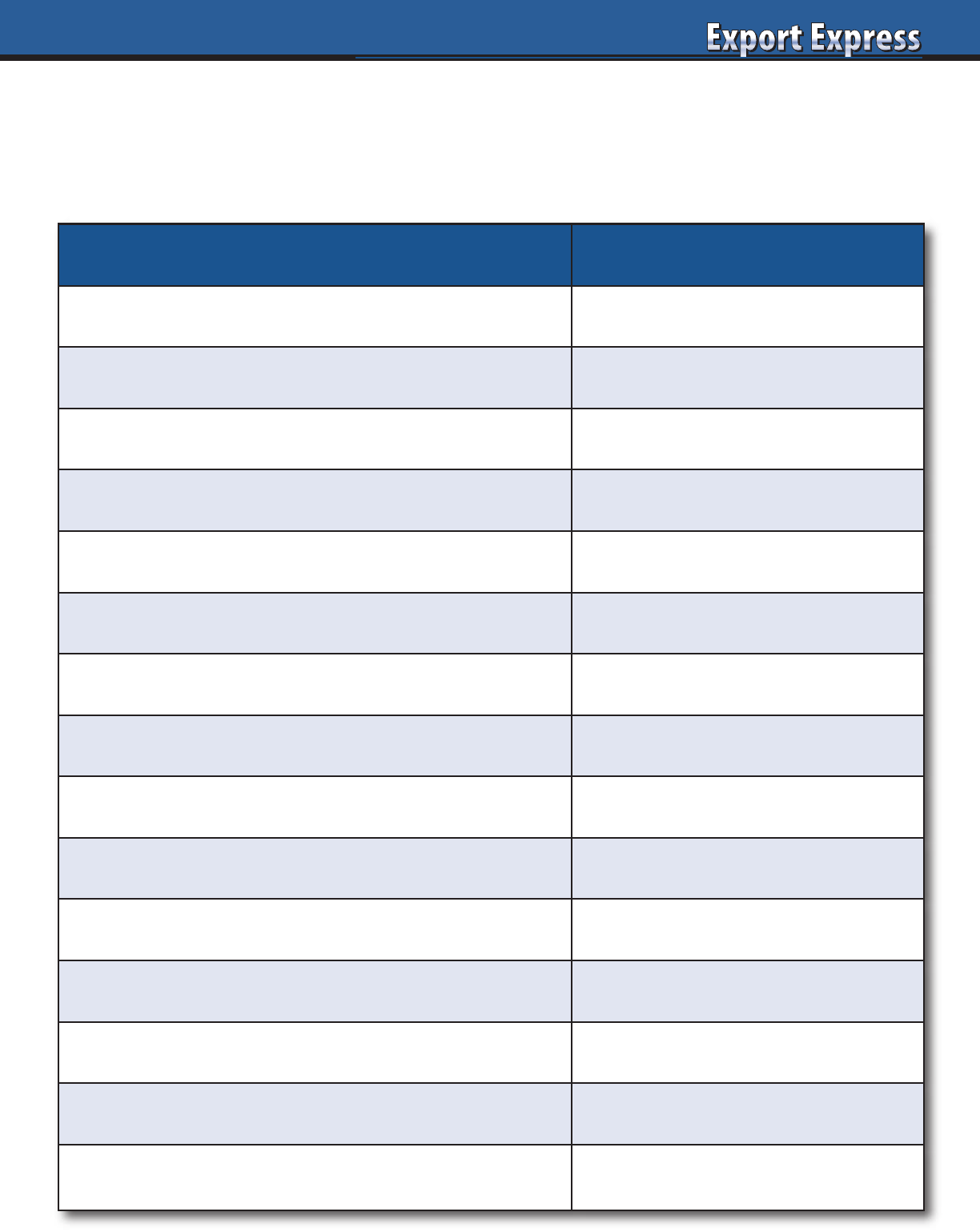
2121
Distributor Capability Assessment
Export Solutions established 15 assessment criteria to identify “Best in Class” performers as well as “under
achievers.” Many distributor relationships extend 10 years or more. Is your distributor network still a “good fit”
for your current business requirements? Template can also be used as New Distributor Reference Check form
.
Assessment Criteria Rating: (10 = Best)
Category Expertise/Critical Mass
Focus/Time Dedicated to your Business
Joint Business Plan Development, Execution, Delivery
Alignment with Brand Owners Vision. Relationship.
Cost to Serve (fair margin, extra costs)
Assortment/Shelf Space
Promotion Creativity, Effectiveness, and Efficiency
Key Account Relations (Senior level, buyer)
Leadership/Owner (engaged & committed to us?)
Brand Manager (seniority, clout,creativity)
Multi Channel, Multi Regional Coverage
Financial Stability, Payment Record
Supply Chain Management & Forecasting
Problem Solving: rapid response?
Sales Results versus Budget, Market, Category (CY, PY, 3 Years)
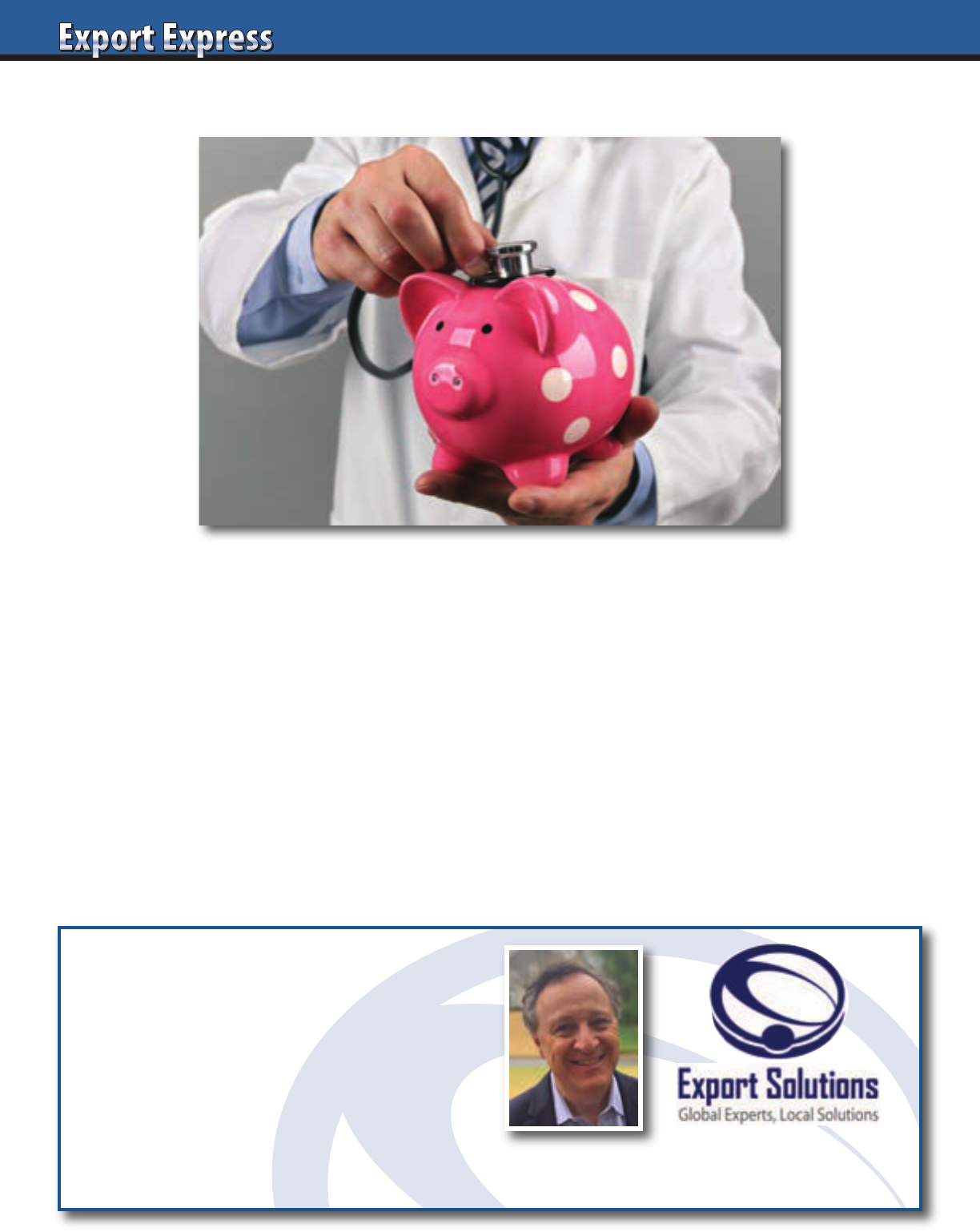
2222
Does Your Distributor Network Need A Check Up?
Export Solutions Can Help!
• Distributor Network Assessments
• Motivational Speeches
• International Strategy
• Find Distributors in 96 Countries
Contact Greg Seminara at [email protected] or (001)-404-255-8387.
www.exportsolutions.com
Exporters manage distributor networks extending to 20, 50, 70 countries or more!
Every company has a few distributors that under perform.
“Under achievers” prevent us from attaining our personal objectives.
Distributor Network Check Up
• Independent assessment from Export Solutions
• Establish methodology for ranking Best in Class distributors and “Laggards”
• Supply strategies for recognizing top distributors
and upgrading the bottom performers
• Benchmark external brands from your category
• Practical and “action oriented” approach
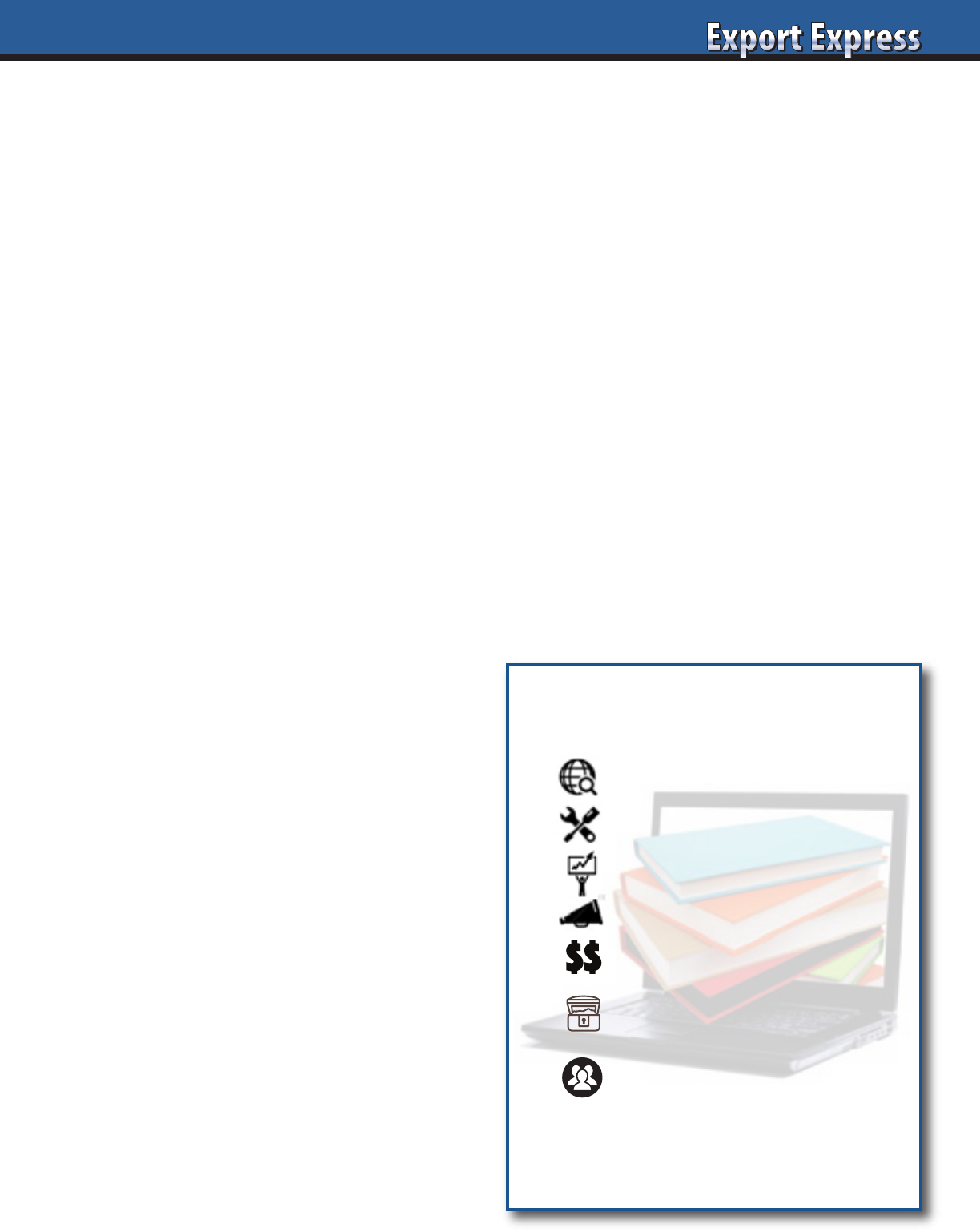
2323
Slotting allowances, listing fees or as the Irish say “Hello” money
are all real estate rental fees charged in advance by retailers for
access to their limited shelf space. Many retailers assign their
buyers “budgets” for this type of incremental fee income. Store
owners seek to obtain maximum productivity from each shelf
facing and fixed entry fees are a tactic to gain immediate income
from new products without an established sales history. At the
end of the day, it’s a cost of doing business. Our objective is to
allocate as little money as possible to listing fees to redirect
our investments to consumer awareness and trial generating
activities. Recapped below are Export Solutions’ Ten Tips on
minimizing listing fee payments.
1. Exclusivity
Some large retailers will waive listing fees in order to achieve
first in the market status with an exclusivity arrangement.
Normally, this extends for three to six months. Beware, you
may upset other customers who become “locked out” during
the exclusivity period.
2. Pay Fees Over One Year
This approach reduces your initial outlay and also increases the
likelihood that the retailer will keep your product on the shelf
for at least one year. This may also allow you to structure the
payment as a percent of case cost versus a “lump sum” payment.
3. Free Goods
Our net cost of “Free Goods” may range from 30-50% of a
product’s retail price to the consumer. The retailer recoups his
listing fee when the product is sold. Some retailers are hesitant to
accept this option, as a slow moving brand may force him to wait
to receive his money.
4. Approach “Non-Slotting” Fee Retailers First
Every country includes retailers and channels that do not
demand slotting fees. Create a success story with these customers
first. Your track record may validate the larger investment in
paying the fees at a bigger account or success may help you
negotiate more favorable terms.
5. Create “All Inclusive” Annual Plan
Ultimately, the retailer has many “profit centers” to reach their
internal financial targets. Customers respect a solid, year one
plan, with investments in their other programs like advertising,
sampling, shelf rental and display. You may secure your product
listings as part of your annual agreement.
6. Negotiate Reductions – Multiple Items
My experience is that many retailers have published standard
prices for listing fees. However, net payment often depends on
your distributor’s clout. Big distributors, representing
multinational’s and a wide variety of brands know the difference
between what is requested and what is really paid on high profile
brand launches where the retailer needs the new brand to be
competitive. The most frequent “discount” is receiving a reduced
fee for multiple items: example, paying a full listing fee on first
two items and receiving authorization for two extra items as part
of a group listing.
7. Retailer Entertainment
Most countries still permit buyers to socialize with suppliers.
The cost of a few tickets to a high profile sporting event is far less
than most listing fees. A VIP plane trip to view your factory or
your category in a “resort” country is another way to gain access
to the shelves without writing a big check.
8. Higher Everyday Margin
Total category margin is a key assessment metric for most buyers.
Some may consider a lower listing fee, if your brand delivers a
margin higher than the category average.
9. Distributor Contribution
Some “hungry” distributors may cover or co-fund listing fees.
There are options to “case rate” fixed fees into the distributor
margin calculation. Ultimately, distributors benefit from
increased sales and margin contribution from a new product
listing. However, many are reluctant due to short term contracts.
Most maintain policies related to brand owners retaining
100 percent responsibility for listing fees and consumer
marketing activities.
10. Beg! Claim Poverty
Buyers are human and realists too. They may “bend” in their
demands if they like your brand and know that you represent
a small company. Long term distributors can request the
occasional “favor” from a friendly buyer. Most retailers have
programs to provide “low cost” chances to entrepreneurial
new or local suppliers.
Ten Tips: How to Minimize Listing Fee Payments
Create Your Own
Export Library
All Guides available free at
www.exportsolutions.com
in the Export Tips section.
Distributor Search Guide
Export Handbook
Selling to USA Handbook
Distributor Management Guide
Finance & Logistics
Export Treasure Chest
My Favorite Templates & Forms
People Power
Strong Teams Build Great Brands
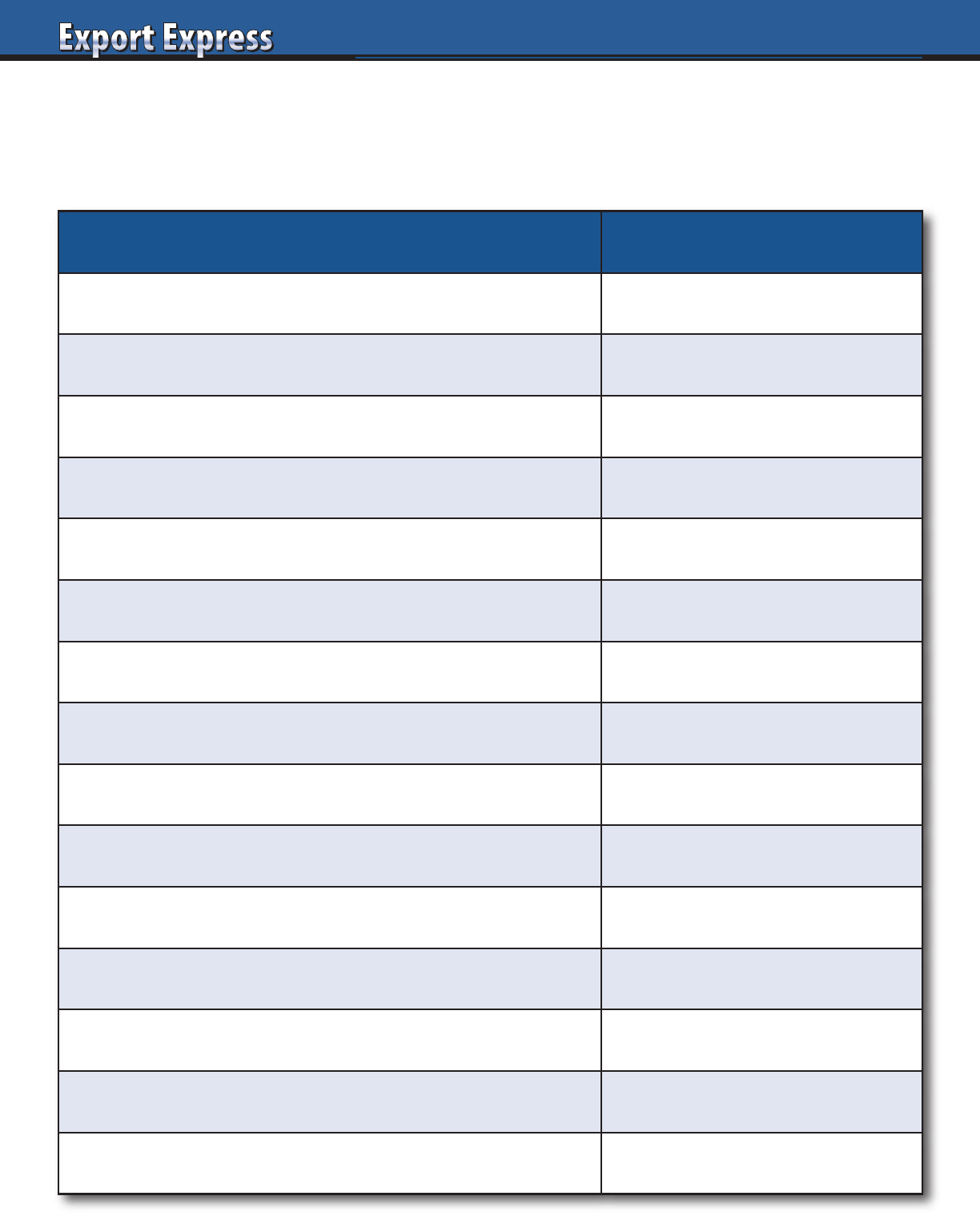
2424
Customer Relationship Assessment
All distributors claim strong relationships with their biggest customers. Below is Export Solutions’ template
for evaluating distributor key account relationships. Best way to evaluate distributor relationships? Your
company’s market share and volume growth at the customer versus the balance of the market!
Assessment Criteria Rating: (10 = Best)
Distributor viewed as an important supplier to the retailer/buyer
Open to bringing brand owner to customer meetings.
Ability to schedule buyer/CEO meetings outside the office.
Can negotiate standard listing fees and other program costs.
Pricing: access to price coordinator. Ability to make changes.
Shelf: access to decision maker. Space in excess of market share.
Merchandising Flier/Catalog: Ability to get prime feature space.
Relationship/access to retailer owners, senior executives.
Problem solving: rapid response? Emergency orders etc.
Payment terms.
Access to retailer movement data.
Category captain or “advisor” for my category.
Vendor awards?
Knowledge of retailers systems. “How to get things done.”
Sales results versus overall market and retailers internal growth.
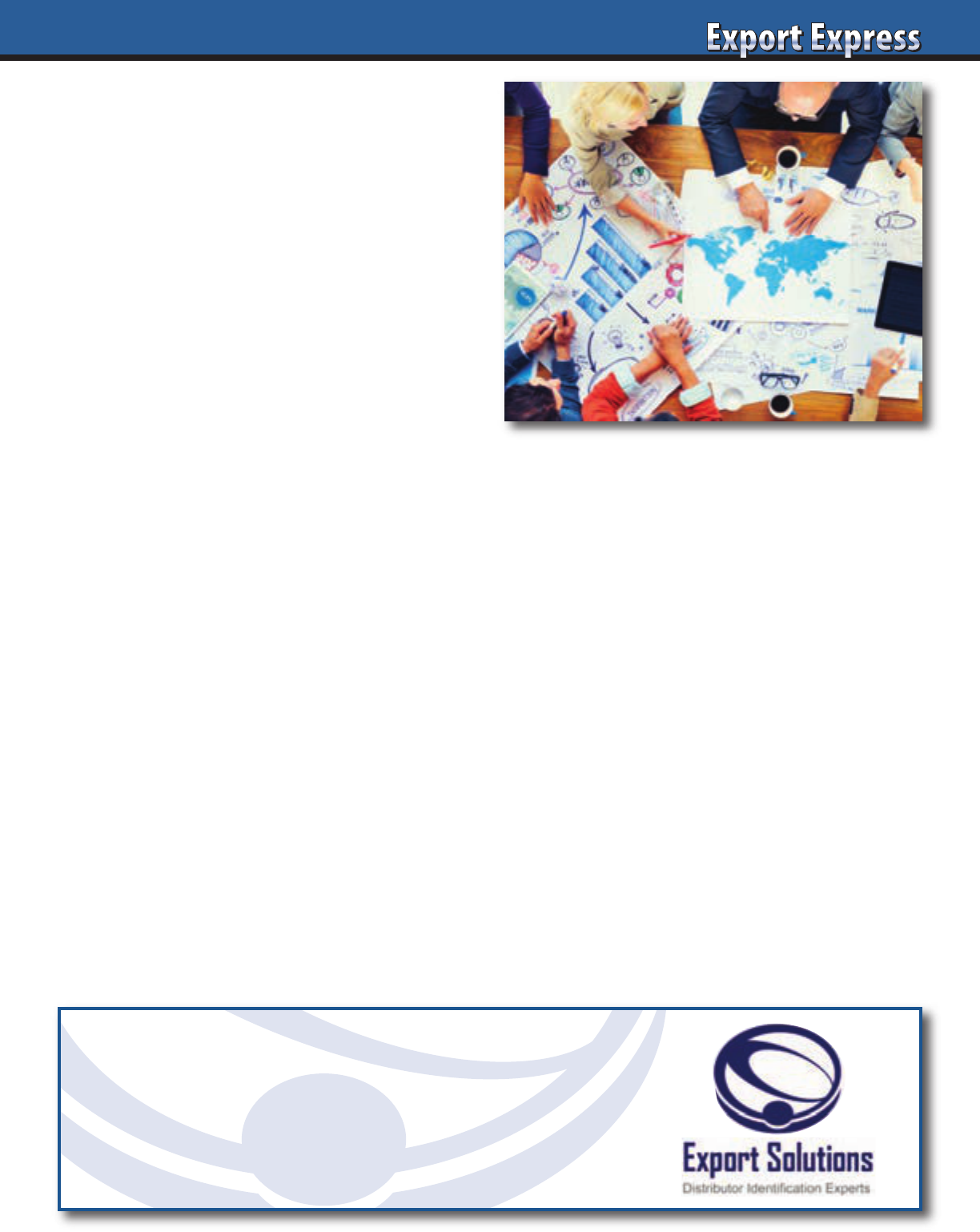
2525
1. Case
Manufacturer supplies a business case
confirming brand “aspirations” for the
country: Key items in portfolio, estimated
base pricing, volume/market share
expectations, and investment model.
2. Category Review
Distributor supplies a local review
of category competitors, pricing,
and merchandising practices.
3. Capabilities
Distributor shares detailed organizational
capability and customer coverage.
Could include references from existing
suppliers represented. An important step
when there are two or more candidates
under consideration.
4. Commitment and Costs
What is the Year 1 Plan and Forecast?
Targeted listings, marketing activities,
launch budget and volume estimate
associated with the spending plan.
5. Calculation – Value Chain
Line by line, build up from port to retail
store shelf. Include currency assumptions.
6. Compliance
Highlight product registration and
label requirements. Typical timelines
for compliance?
7. Captain of Team
Who will be our day-to-day brand manager or
first point of contact? Which senior executive
will serve as our “Brand Champion?”
8. Contract
Options include formal contract, letter
of understanding, or handshake deal.
Begin this process early!
9. Consumer Marketing
What are planned activities to generate
consumer trial and repeat purchases?
Trade marketing, consumer marketing,
social media, etc.
10.Calendar /Close
Distributor supplies a detailed timeline
of all activities. When can we expect first
order and delivery to support launch?
Frequent checkpoint calls or meetings.
10 C’s – Cooperation Model
Looking for Good Distributors?
Export Solutions’ database covers
9,200 distributors in 96 countries.
www.exportsolutions.com
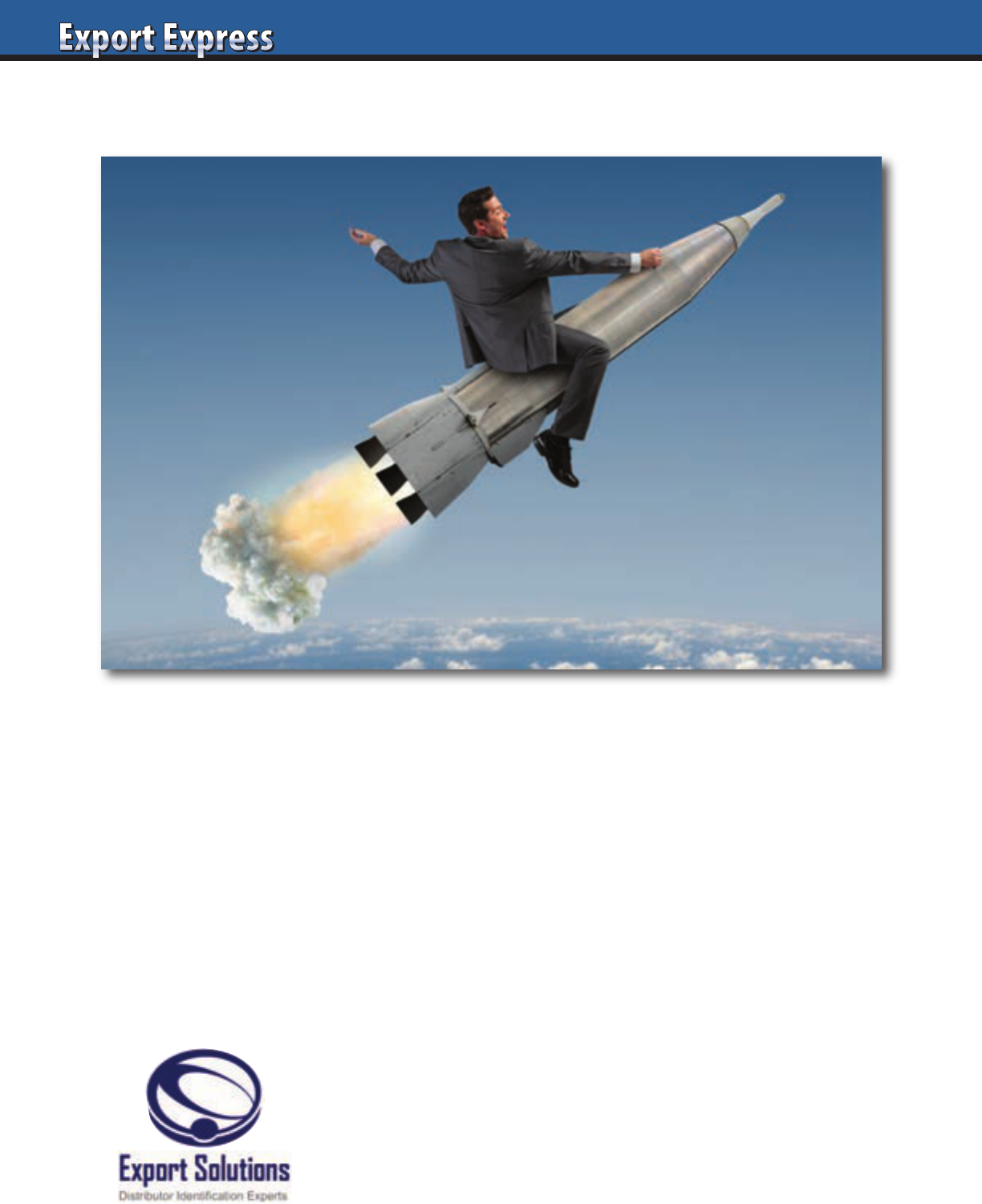
26
Export Accelerator
Contact Us for Distributor Search Help in 96 Countries
Greg Seminara • greg@exportsolutions.com
“Spend time Selling to Distributors versus
Searching for Distributors”
26
Why have Barilla, Pringles, Nature Valley, Starbucks, Duracell,
Nestlé, Tabasco, Pepperidge Farm, and other leaders used
Export Solutions as a distributor search consultant?
• Powerful distributor network: owner of industry database
9,200 distributors – 96 countries
• Professional 10 step due diligence process
• Results! We make Export Managers’ lives easier!

2727
Your new product launch is a big deal, comparable to the birth of
a child. The first days are critical if you want to raise a “healthy
brand.” Listed below are Export Solutions’ ten tips for launching
your company for the first time to a new distributor or
expanding through a new product introduction.
Firm Calendar
Distributor and brand owner should align on a “firm calendar.”
This includes dates for sales materials development, launch
meeting and key account calls. All dates are dependent on arrival
and customs clearance of the first order. No product, no meeting!
Get Ready
Allow adequate time for printing of point of sale materials
and development of key account presentation. In some cases,
translation or local adaptation of brand owner supplied tools
may be required.
Memorable Meetings
I still remember motivational meetings with themes around
boxing and magic. Create new memories with a special theme or
an external speaker. Off-site meetings contribute to making your
launch special, with an added sense of commitment. Have fun!
Mandatory Attendance
The distributor CEO, brand manager, and export manager must
all attend and have speaking roles. Best is to have one meeting
with sales and merchandising teams together. However, in some
cases, a follow up meeting may be required. Invite logistics,
finance, and customer service people to make it a “team effort.”
In-Store Objectives
Establish clear measures for in-store presence. This includes
shelf positioning, space allocation, pricing, and off-shelf
merchandising. Share a photo. What qualifies as a “good store”
versus a “bad store?”
Frequently Asked Questions
Prepare a list of potential questions and logical responses. Role
play with the team. Share a printed one pager with sample
answers to tough questions.
Samples, Samples, Samples
Provide generous quantities of samples for all distributor
employees to enjoy and take home. Prepare recipes if your
brand is a food product. Samples are your best advertisement.
Personal Goals
Each team member should have personal goals for your launch.
For a key account sales person, this could be acceptance of the
core product lineup. A retail merchandiser could be assigned a
target of a specific number of stores with displays or eye level
shelf placement. For the launch, focus on implementation goals
versus case shipments.
Key Account Calls
In many countries, large supermarket chains dominate sales.
Develop a personal strategy for each key account. What are the
buyers internal goals? How do we fit with the chains consumer
base and plans? Which chain “push” programs can we
participate in? Schedule a “lead call” with an easier key account
to get feedback that will help you with a tougher buyer. Invite
the export manager or distributor MD to participate in the sales
call if it will help.
Audit
Schedule a retail audit of stores to coincide with the expected
retail availability of product. Bring other people from the brand
owner’s company and have 2-3 teams auditing the market
against a specific set of goals. Visit secondary cities, not just the
stores around the distributor’s office. Recognize that conditions
will not be perfect and celebrate progress to date.
New Product Launch: Ready, Set, Grow – Ten Tips
Need more information? Visit www.exportsolutions.com.
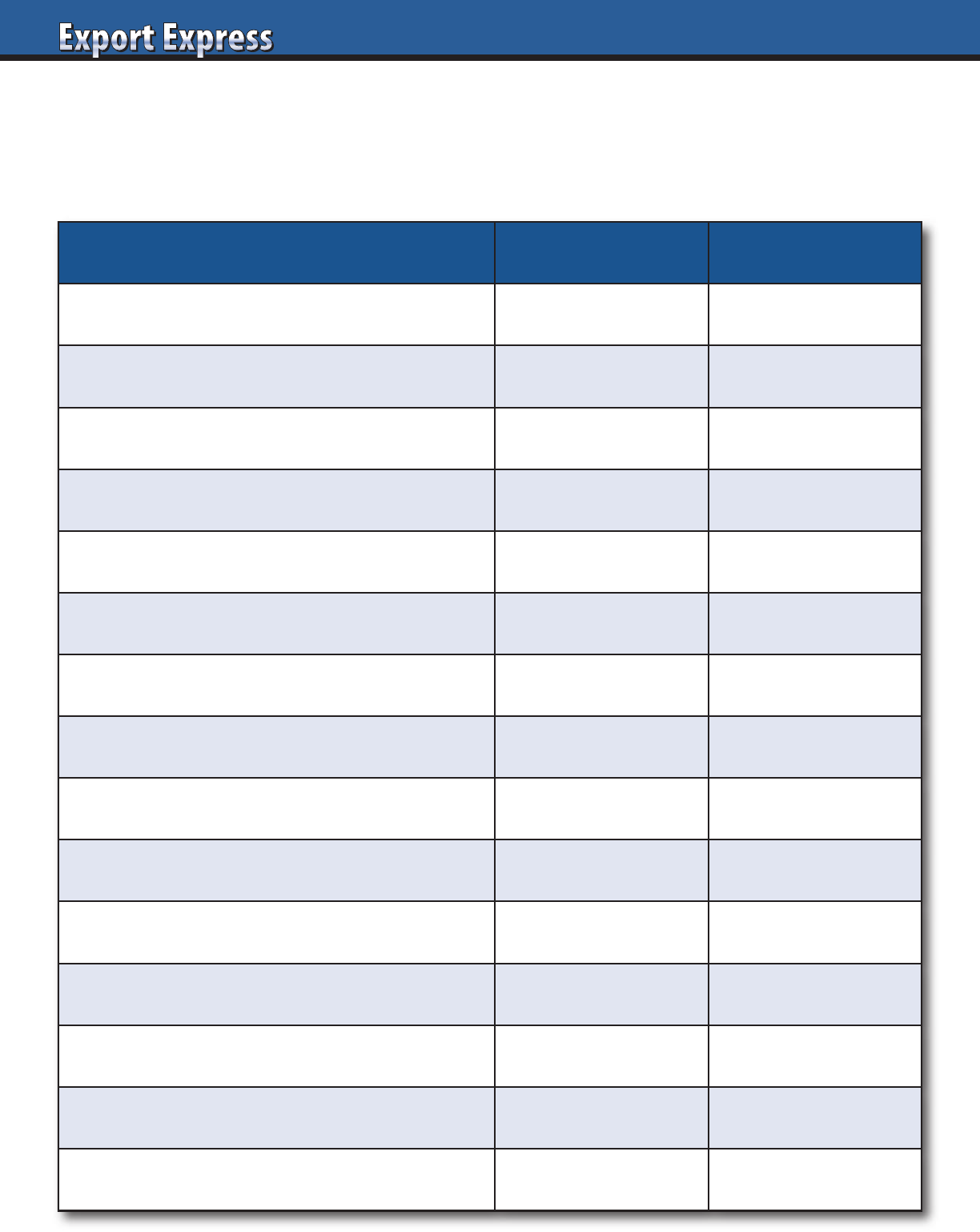
2828
Year One Scorecard Example
Brand owners and distributors enter new relationships with great expectations.
Most partnerships succeed, but some under deliver leaving both parties disappointed.
Export Solutions Year One scorecard helps both parties align on KPI’s.
Objective Goal Results
Shipments to Distributor
Distributor Sales to Customers
Top 5 Customers
Region: Sales Split by Area
Channel: Sales Split by Channel
Market Share
Listings: Top 5 Customers
Retail Pricing
Shelf Positioning
Shelf Space
Sampling
Social Media
Displays
Manufacturer Investment
Brand Manager Performance
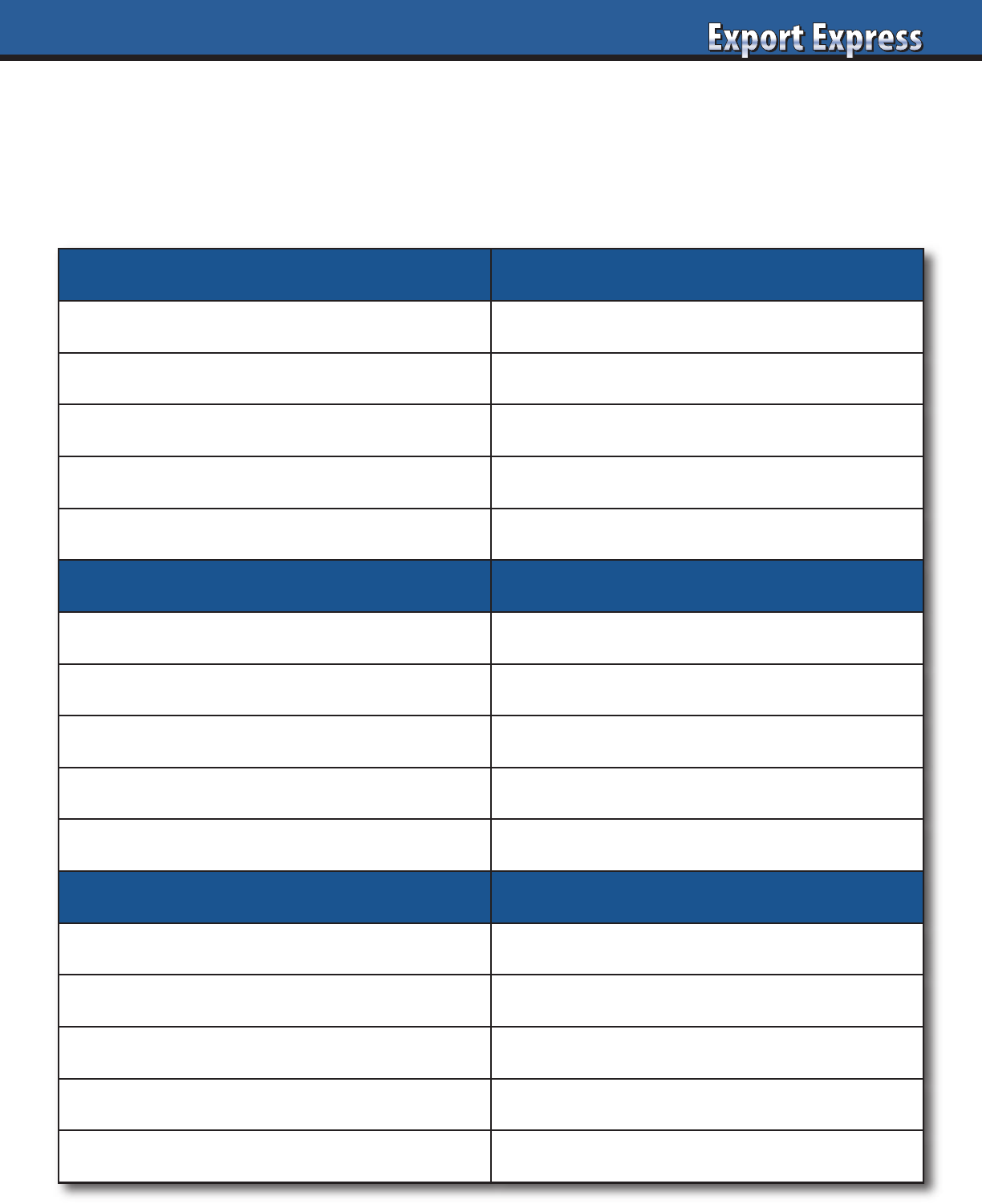
2929
“The Right Way” – New Country Launch
Retail buyers and distributors are receptive to brand launches from multinationals. Why?
Multinationals succeed, as they introduce new products “The Right Way.” Export Solutions recaps
30 components of launching “The Right Way.” Exporters create magic with limited budgets!
Winners check as many boxes as possible on “The Right Way” scorecard.
Product Retailer
o Meaningful innovation – not “me too” o Boost category sales, margin, and profit
o Consumer market research insights o Syndicated data (Nielsen) – category facts
o Technical confirmation of product differentiation o Invest in retailer “push” programs
o Reasonable retail price – premium (not sky high) o 4-6 high value promotional events per year
o Test market results – similar country or retailer o Retailer VP, distributor CEO at intro call
Marketing Excitement
o 360 marketing plan: TV, in-store, social, PR o Launch party – memorable location
o Sampling o PR, social media, trade press
o Social media o Celebrity endorsement
o Displays: end of aisle and shelf blocks o Distributor sales contest
o Special offers – retailer fliers o Donation to local charity
Team Scorecard
o Distributor – best in class, category expert o Year 1: invest; year 2: break even; year 3: profit
o Local manager – launch oversight o Sales volume (retail sell-out)
o Marketing, social media, PR agencies o Market share
o Brand/technical resource from headquarters o Retail availability (weighted distribution)
o Total distributor engagement: reps. to CEO o Year 2 commitment and enthusiasm
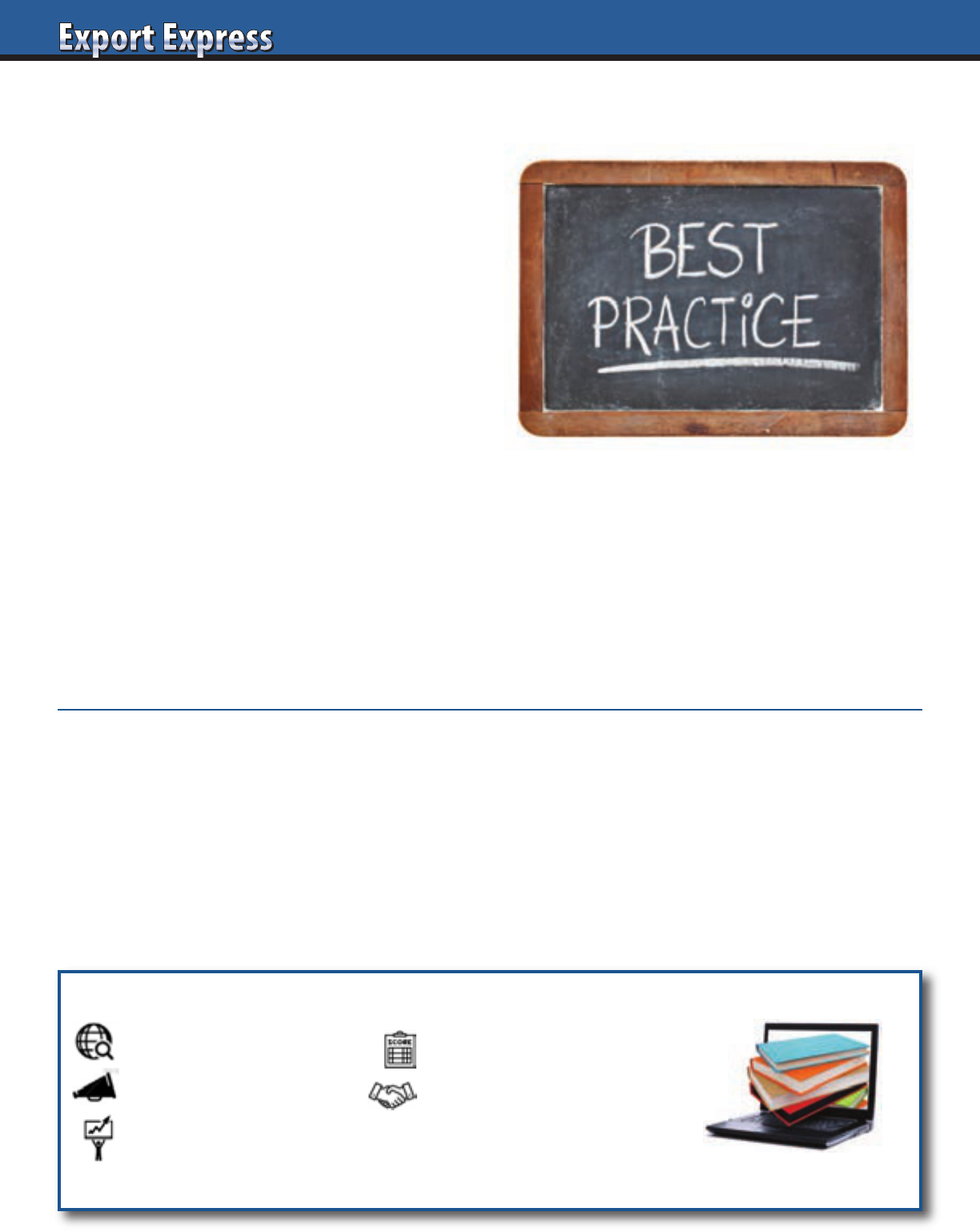
30
Export Solutions conducts over 100 distributor
interviews/meetings per year. Many distributors ask…
What are these big brands looking for? How do we prepare
a standout presentation? What will it take to win the business?
See our fifteen tips below.
1. Professional Communications: Frequent email communication
in advance. Send re-confirmations. Offer to help with hotel
reservation or pickup. Share mobile contact for emergencies.
2. Creative Welcome: Raise flag from visitor’s country or a banner
with brand name on it. Serve food paired with their brand.
Create immediate “wow!” Skip, if confidential interview.
3. Purchase Product Samples: Potential new brand and
competitors. Supply price for each item.
4. Participants: Owner/MD, sales, marketing, and potential
brand manager. All should have speaking roles.
5. Presentation – Page 1 Company facts: Founding date, sales
revenue, # employees, # field sales, warehouse size, key
categories and principals.
6. Category Sales Data: Try to obtain category sales data from
Nielsen or a leading retailer. Prepare basic analysis.
7. Category Photos and Pricing: Provide recent photos and
pricing from target retailers.
8. Retailer Margins: Share estimated retailer category margins,
cost of entry, and listing fee expectations.
9. New Principal Management: CEO involved in update calls,
retail tracking, and total team approach.
10. Retail Reporting: Demonstrate retail technology and reporting
if you have it. Share sample reports.
11. Warehouse Visit: Short inspection, if located on premise.
12. Social Media and E-Commerce: Share local updates.
Reinforce your capabilities with recent examples.
13. Case Study: Brand owner’s category or aisle. Results
and costs. Show photos of shelf and displays.
14. References: Testimonials are impressive. Executive contact
information from top five current principals represented.
15. Action Steps: Immediate CEO/MD follow up via email.
Deliver presentation stick with your company logo.
Distributors: Fifteen Tips for Winning the Big Brand Interview
5 Questions for Every Interview
1. Where do you see your company’s business in 3 years?
2. Tell me about best practices from a country where your brand
has a high market share. What strategies work well?
3. What characteristics do you see in your best performing
distributors?
4. Are you open to distributor visit (plus customer?) to your
manufacturing facility and corporate headquarters?
5. How do you maintain category leadership?
5 Interview “Bad Practices”
1. Do not send Rolls Royce to pick up brand owner at hotel.
Do not laugh, it happened twice last year!
2. Skip company videos: sends old-school message.
3. Avoid speaking badly about other distributors. Be positive!
4. CEO should not handle entire presentation. Let the “workers”
who handle the day-to-day business speak.
5. No dinner invitation on first date: brand owners will prefer to
meet alone to discuss meetings. Many risks if meal does not
go well. Plenty of time for dinners if you win the interview!
Distributor Search Guide
Export Strategy Guide
Selling to USA Handbook
All guides available free at www.exportsolutions.com in the Export Tips section.
Export Scorecard Guide
New Distributor Cooperation
Model Guide
“From First Meeting to First Order”
Create Your Own Export Library
30
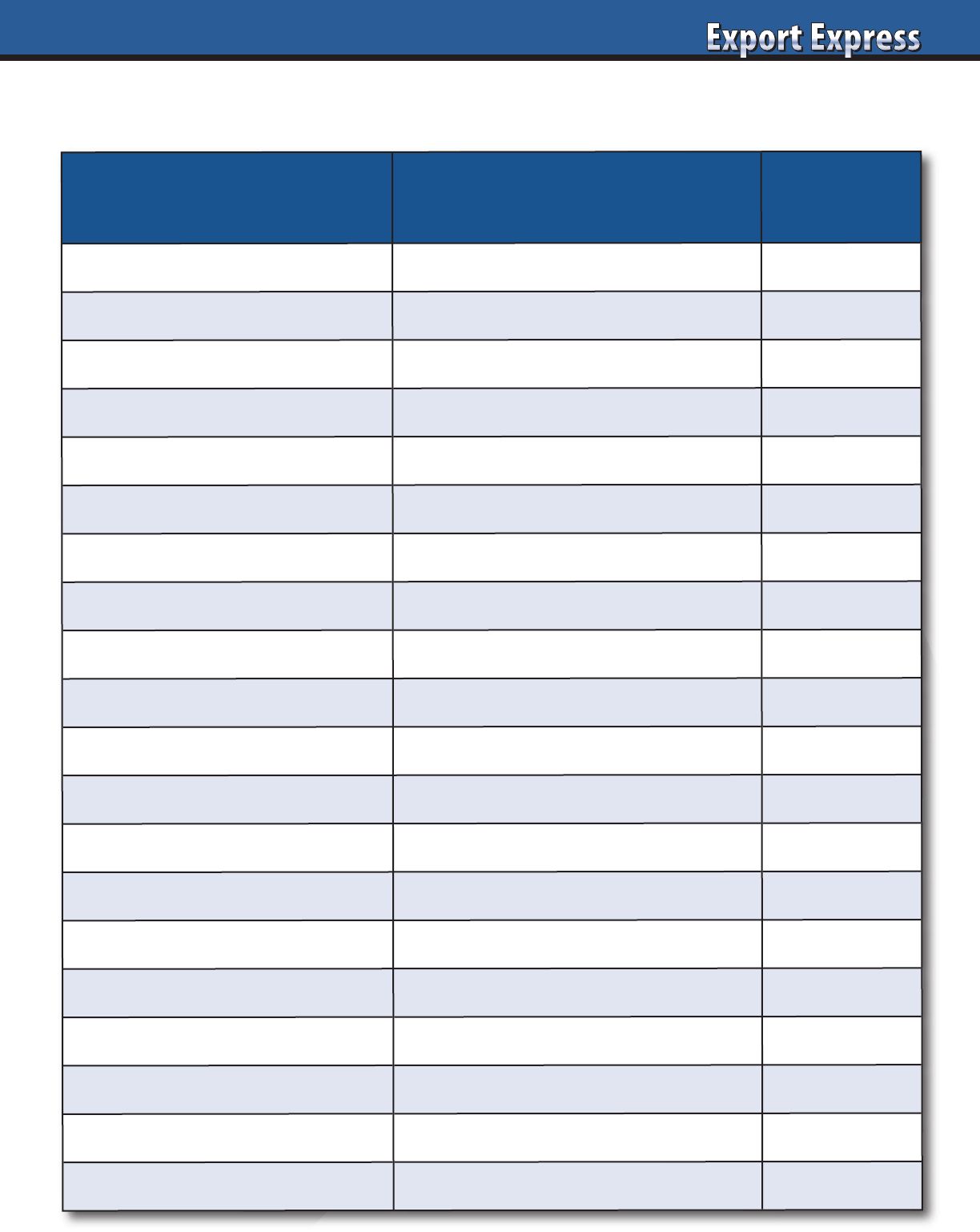
31
What Makes a Great Distributor CEO?
CEO Assessment
Considerations
Rating:
(10 = Best)
Achieves Joint Business Targets
• Committed and dependable.
Dedication to Your Business
• Knows details. Visits your HQ.
Willing to Invest
• People, technology, brand building.
Strong Customer Relations
• Senior contacts at top retailers.
Relationship With Brand Owners
• From export manager to CEO.
Response Time
• Same day to one week?
Thinks Like A Marketer
• Creative, brand building ideas.
Frequent Visits: Retail Stores
• Good grasp of retail conditions.
Problem Solving
• “Hands on,” responsive.
Compound Annual Growth Rate
• Flat to 10% or more.
Cost to Serve Transparency
• Detailed understanding of costs.
Celebrates Team Success
• Awards, promotions, raises.
CPG/FMCG Background
• Senior level external experience.
Years of Service
• New to 20 years or more.
Local Industry Leader
• High profile in community.
Work Ethic
• Office time vs. overseas trips?
Information Technology (IT)
• Invests in “best in class” IT.
Ethical and Trustworthy
• Principled, respected partner.
Respects Manufacturer’s P & L
• Sells profitable cases.
Relationship: Entire Team
• Finance, logistics, adminstration.
31
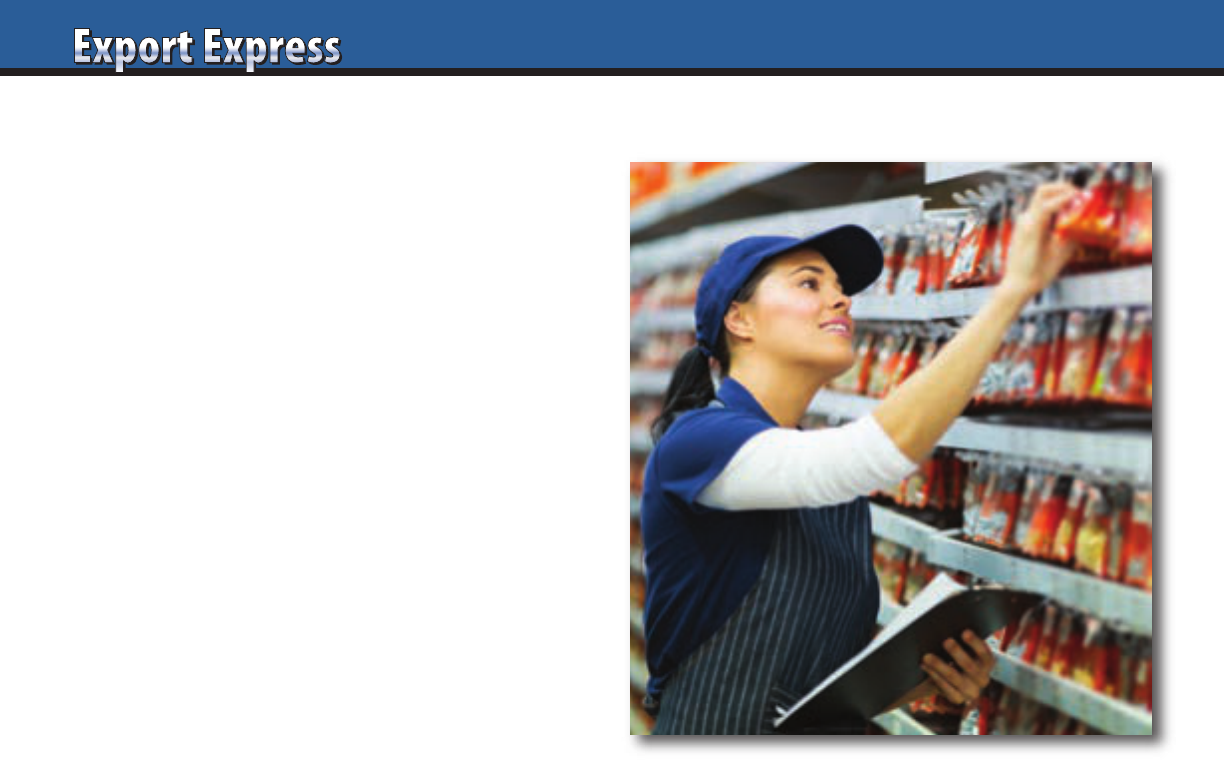
3232
I just returned from Central America where retailers such as
Walmart, Auto Mercado (Costa Rica), and Super 99 (Panama)
suffer from out of stock conditions due to direct import practices.
A retailer’s primary objective is to maximize sales, which is
tough to achieve if there are gaps on your shelf as you await
the next container from the USA. “Service” defines best-in-class
manufacturers like Coca Cola and distributors which maintain
local inventory and strong commitments to keeping in store
product showrooms “looking good.” Listed below are Export
Solutions’ Ten Tips why an international retailer should source
your brand from a local distributor versus waiting for a direct
shipment from your central factory.
1. Local Inventory: 24-48 Hour Delivery
Local distributors promise 24-48 hour delivery, instantly
correcting costly out of stocks. Direct import supply chains may
take up to six weeks for inventory replenishment. We have all
witnessed situations where a retailer allows 1-2 items to run out
of stock for weeks to wait to place a consolidated order or to
encourage sales of a size where they are overstocked.
2. Brand Building vs. Availability
Direct import brands look lonely on the shelf, without any
activation or promotion. I remember the case of Hidden Valley
Ranch, the leading USA salad dressing from Clorox. I was
thrilled when it showed up on the shelf of my Walmart in Buenos
Aires. However, I was one of a few homesick expats who knew
about Hidden Valley. Without support, the brand gathered dust
and was discontinued.
3. In-Store Merchandisers: Emerging Markets
In-store merchandisers or distributor appointed “shelf stockers”
represent an essential function across Latin America, Asia,
and the Middle East. Large distributors maintain armies of
merchandisers to fight for shelf space and brand presence for the
brands that they represent. Retailers typically offer “prefunctory”
stocking for direct import brands, with low level of compliance
versus agreed to terms. I recall a situation in Mexico for a leading
USA beverage brand. The retailer had complained about slow
rotation of the direct import brand. We checked stores and saw
that only 2 of 4 sizes were typically cut in on the shelf, with
items relegated to the bottom or top shelf, nowhere near
“planogram promises.”
4. Distributors: Local Category Advisors
Distributors understand local taste preferences and share trends
from other market customers. In emerging countries, normally
there is a preference for smaller sizes than the family packs
offered in USA or European supermarkets.
5. Problem Solving: Pricing, Shelf Tags and More
Success in the consumer goods industry requires focus on the
myriad of details from the factory to the store shelf. Without a
distributor, difficult to identify and correct routine problems like
incorrect pricing, missing shelf tags , and misshelved goods.
6. Promotions Drive Trial and Tonnage
Local distributors offer periodic promotions to stimulate sales.
Typically, this translates to price discounts, but can also include
sampling, banded packs, and joint displays. Direct import brands
usually sit on the shelf without the benefit of local activation.
7. Point of Sale Material and Stock Rotation
Emerging markets permit point of sale materials which
encourage sales. Distributors provide special display pieces
or trial size shippers. Merchandisers rotate stock regularly to
facilitate “first in, first out” movement.
8. Damaged, Expired Goods or Product Recall
Local distributors provide a valuable service on returned goods.
This allows a retailer to remove out of date or damaged products
for a credit. With direct imports, the sub-prime product lags
unattractively on the shelf, with no one focused on replacement.
9. Payment Terms
Distributors offer retailers 30-60 day payment terms. Smart
retailers fund their inventory from the “float,” buying and selling
goods before the payment is due. On direct imports, retailer
needs to tie up his money in inventory, in some cases paying in
advance and then storing goods until the unsupported brands
sell. Is this the best use of capital?
10. Retailers: Support Your Local Distributor Community
Distributors represent small/mid-size local businesses
which provide jobs to members of the community. Distributor
employees are shoppers too, likely to shop at customers that are
supporting their company.
Success: Create Total Country Customer Strategy
Export Solutions recommends dealing with a local partner
(distributor) who is capable of serving all market customers.
This allows you to optimize sales and maintain pricing
equilibrium. Retailers attempting to buy direct offer the
temptation of short term volume, but rarely translate to long
term brand building for the supplier.
Retailer Benefits: Purchase from Local Distributors
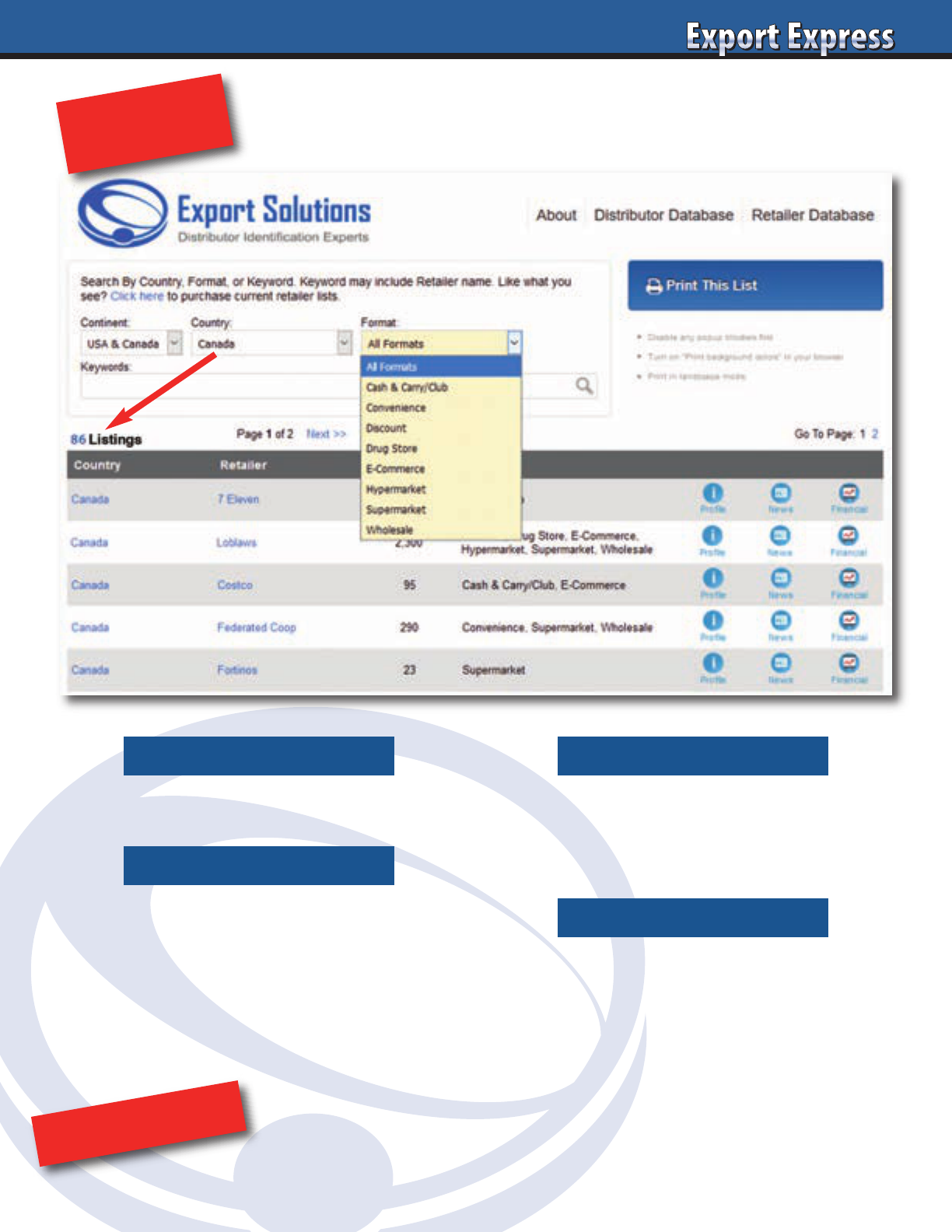
33
Coverage: 96 countries and 2,700 retailers
Supermarket
Convenience
Drug Store
Natural Food
Club, Cash & Carry
Supplying profiles, store counts, formats,
news and info for Top 100 international
retailers plus all overseas branches
Example 1: Who are supermarket
retailers in Canada?
Example 2: How many stores does Loblaws
operate by banner, in Canada?
NEW!
ORDER NOW!
33
Search by Retailer NameSearch by Country
Combo Search
www.exportsolutions.com
Search By Format
Retailer Search Made Simple
Canada Example
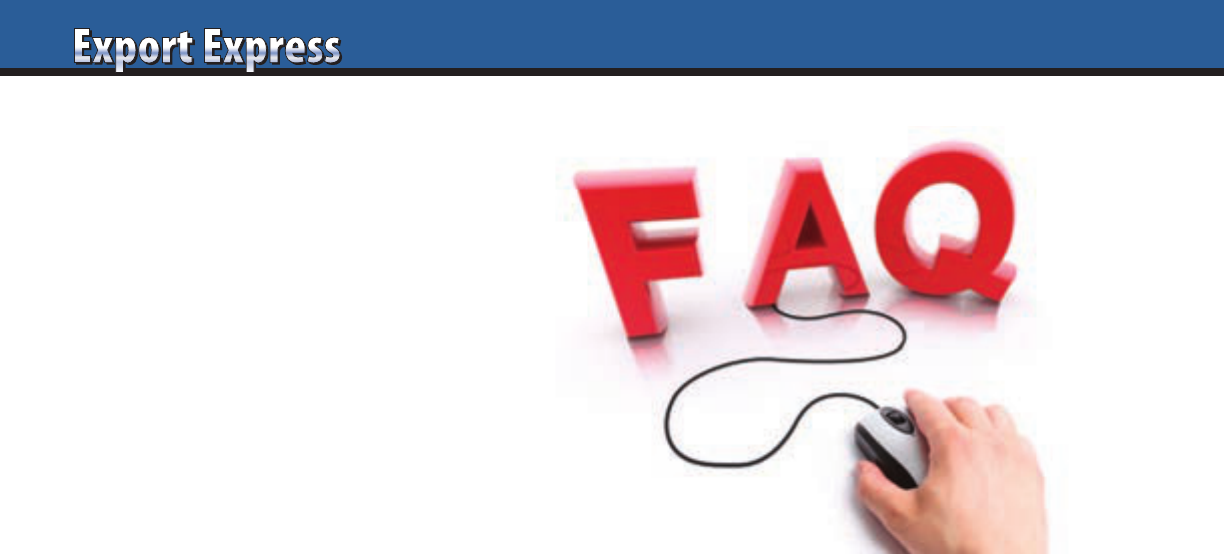
3434
Why did you create the retailer database?
Export managers dedicate a lot of time
to researching countries, retailers and
preparing business plans. A standard
KPI measure is tracking product listings
for key customers. I believe that our
industry could benefit from a global
retailer database to instantly locate
retailers and their store counts in
96 countries. The retailer database
is a logical extension of our leading
distributor database which has helped
more than 3,000 companies build export
sales during the last 10 years.
What is your geographic coverage?
96 of top 100 GDP countries worldwide.
This includes most Asian, Middle Eastern,
and European countries. Our database
covers every country in the Americas.
In Africa, we cover South Africa.
What is your format coverage?
Excellent coverage of chain supermarkets,
hypermarkets, clubs, cash and carry,
and convenience formats. Solid initial
coverage of drug stores, natural food
stores, and e-commerce channels.
Our database does not cover
DIY/hardware, toy, office, liquor,
or sporting goods channels.
Retailer database: featured info
Profile – Retailers profile and link to their
internet home page.
Formats – Retailer’s stores segmented
by format and banner.
We track supermarkets, hypermarkets,
cash and carry, convenience stores,
discounters, drug stores, natural food
stores, and e-commerce retailers.
News – Latest retailers’ news. In some
cases (Asia), we substitute a link to the
retailer’s latest promotional flyer.
Financial – Many leading retailers are
publicly traded. A link is provided to
their latest financial results. We do not
offer estimated financial information for
privately held or family owned retailers.
How is your coverage of global retailers?
We offer total coverage for top 100 global
retailers. This includes all of their
branches and banners. Searchable!
Use filters to research Walmart, Costco,
Carrefour, Tesco, Metro, Casino presence
by country. Database covers retailer’s
total store outlets as well as a breakout
by banner and format.
What can I use the retailer database info for?
• Obtain an instant snapshot of an
average of 24 retailers per country
for 96 countries.
• Track presence of global retailers like
Walmart, Carrefour, and Metro AG.
• Create country specific listing maps
where distributors measure brand
authorization by retailer.
• Conduct home office based
international category reviews
and price checks from retailers’
e-commerce sites (not all retailers).
• Prepare annual reviews and reports
with up-to-date information on
leading retailers and channels.
Searchable
The database offers filters allowing you
to search by country, format, or retailer
name. You can also use a combination
of filters for your research.
Can I get a free sample of the retailer database?
Sure! Check www.exportsolutions.com for a
complete profile of United Kingdom retailers.
Do you provide retailer’s annual sales
or market share information?
Accurate annual sales information is
available through the financial link for
publicly traded companies. We do not
provide estimated financial information
for privately held and family owned
retailers. Channel blurring occurs
between supermarket, convenience,
e-commerce, and even natural food
operators. We do not provide market
share due to difficulty to accurately
isolate and define channel market share
information, particularly with so many
privately held retailers.
How accurate is the retailer data?
Export Solutions’ retailer database is
updated weekly, so information is highly
accurate. Retailer names, web sites, and
formats rarely change. This makes the
database 99% accurate at the company
level. New stores open every day,
resulting in store counts that may be
95% accurate. We intend to update store
counts on a regular basis.
How much does retailer database access cost?
An annual subscription to the retailer
database is $975. This supplies one year,
unlimited access to more than 2,700
retailers in 96 countries. Special offers
available for our distributor database
customers. Note: special pricing for
government trade organizations.
How do I access the retailer database?
Visit www.exportsolutions.com and click
the retailer database page. You can place
a subscription or individual continent
(i.e., Europe) into a shopping cart.
Register and check out via credit card.
The process takes two minutes and we
automatically send you an invoice.
About Export Solutions
Export Solutions was founded in 2004
and is based in Atlanta, Georgia in the
USA. Export Solutions serves as a leading
provider of business intelligence to the
food and consumer goods industries.
Our distributor database covers 9,200
distributors in 96 countries and has
been used by more than 3,000 clients.
Our Export Express newsletter has a
circulation of 9,900 and is viewed as an
important source of insights, strategies,
and templates for international
development. www.exportsolutions.com.
FAQ’s – Retailer Database
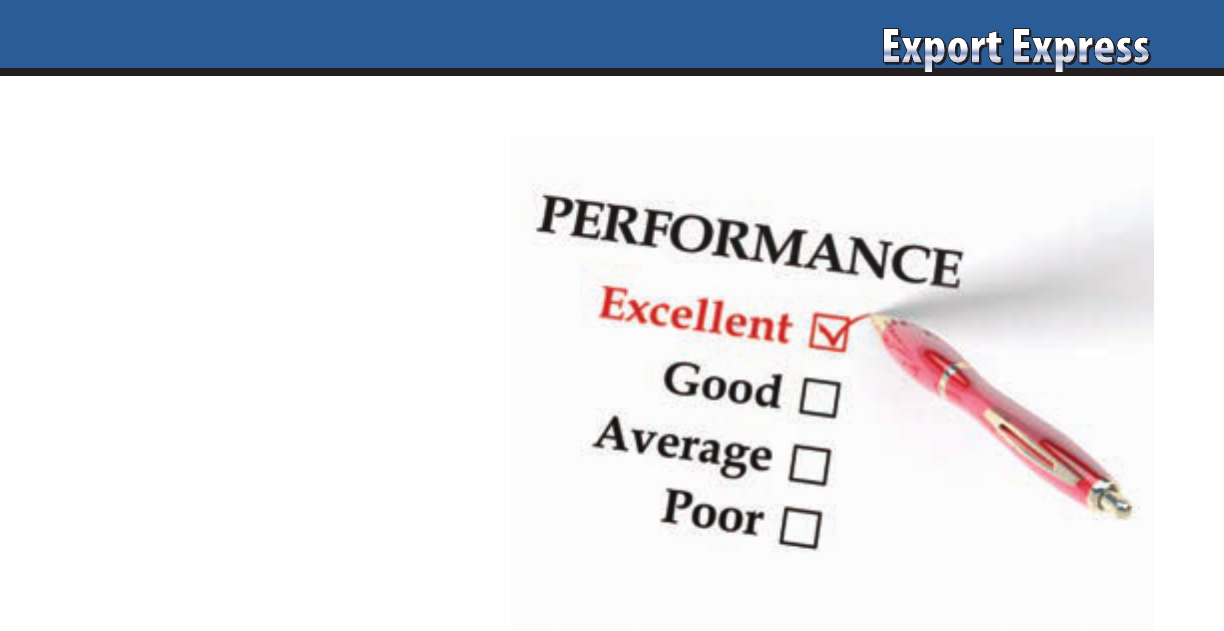
35
Retail stores serve as showrooms for our products,
the destination where supply chain inventory is
translated to a sale. Leading multinationals such as
Unilever, Coca Cola, Mondelez, and Kellogg’s are
placing renewed emphasis on in-store execution
through “Perfect Store” initiatives. Basically,
perfect store programs seek to optimize supplier
and store sales through improved brand visibility
and an enhanced consumer shopping experience.
The concept of a Perfect Store or improved in-store
presence applies to manufacturers of all sizes.
Cultural Shift
Successful execution of Perfect Store programs
mandates a cultural shift.Today, most companies
exhibit laser focus on volume and headquarter
based product listings. This same attitude and
determination must be applied to key performance
indicators (KPI’s) on store presence for your brand.
This shift requires an organizational realignment
around roles and responsibilities, time allocation,
and performance measures and incentives.
Define Your Perfect Store
The first step is to ensure that each member of your sales team
is “crystal clear” on your brand’s in-store objectives. Create a
store conditions resource guide, including photos that can be
distributed or shared online. I’ll always remember a store visit
in Cordoba, Argentina when I was a sales manager for Clorox.
The distributor representative proudly brought me to his “best”
store. The store was not bad, but below objective because our
brand only commanded 50% of shelf space versus our 65%
market share. When I mentioned my disappointment, the
representative accurately claimed that “no one had ever shared”
this shelf objective before.
Focused & Fact Based
Perfect store programs should concentrate on your highest
volume and profit items, not every product in your range.
Establishment of Perfect Store criteria should be logical and
demonstrate that successful execution translates to increased
sales and profits for the retailer. Normally, manufacturers
share test data based upon similar store sizes or formats.
The Right Stuff
Mondelez speaks of four components to retail execution:
Right Assortment
Right Pricing and Promotion
Right Location
Right Displays
What attributes form the “Right Stuff” for your brand?
Secondary Placement
A recent project revealed that my client’s category was found in
seven distinct store locations. Sales grow exponentially through
placement in multiple store sections. Examples include off-shelf
displays, secondary shelf placement, or cross merchandising with
related products. Capture secondary placement in your Perfect
Store vision.
What’s Measured is Treasured
In-store KPI’s can be measured via mobile devices. Normal
tracking creates objectives that can be counted by a numerical
response or a yes or no answer. Core measures focus on items
available (assortment), retail pricing, share of shelf space, and
incremental displays. Distributors and export managers must
create systems to evaluate results and track progress just as we
do shipment performance.
Incentives & Excitement
Perfect Store programs require the same energy and excitement
as other strategic initiatives. Leaders have aligned compensation
bonuses to attainment of goals. Others have supported the
initiatives with contests and media support. Google “Perfect
Store” to see instructional videos from multinationals.
Emerging Market Weapon
Many emerging markets are transitioning from small urban
shops to modern retail. These countries offer greater flexibility
to make changes at store level than tightly controlled Western
markets. These new markets often serve as lead markets for
Perfect Store rollouts due to acceptance of point of sale materials
and ability to establish a firm foundation for the future.
Future – Amazon and Online Retailers
Amazon’s web pages represent a change in dynamics where new
brand visibility strategies may revolve around web placement
and cross promotions. What is the perfect store for an online
environment? The future is today.
Achievement of our sales targets requires a new attitude towards
in-store execution. Every member of your distributor network
should maintain a clear understanding of whether each store
is an A, B, C, or D or a Perfect Store and Why? Export Solutions
works with brand owners on a program called Next Level Sales
Management which creates specific measures for improving your
in store performance.
What is Your Perfect Store?
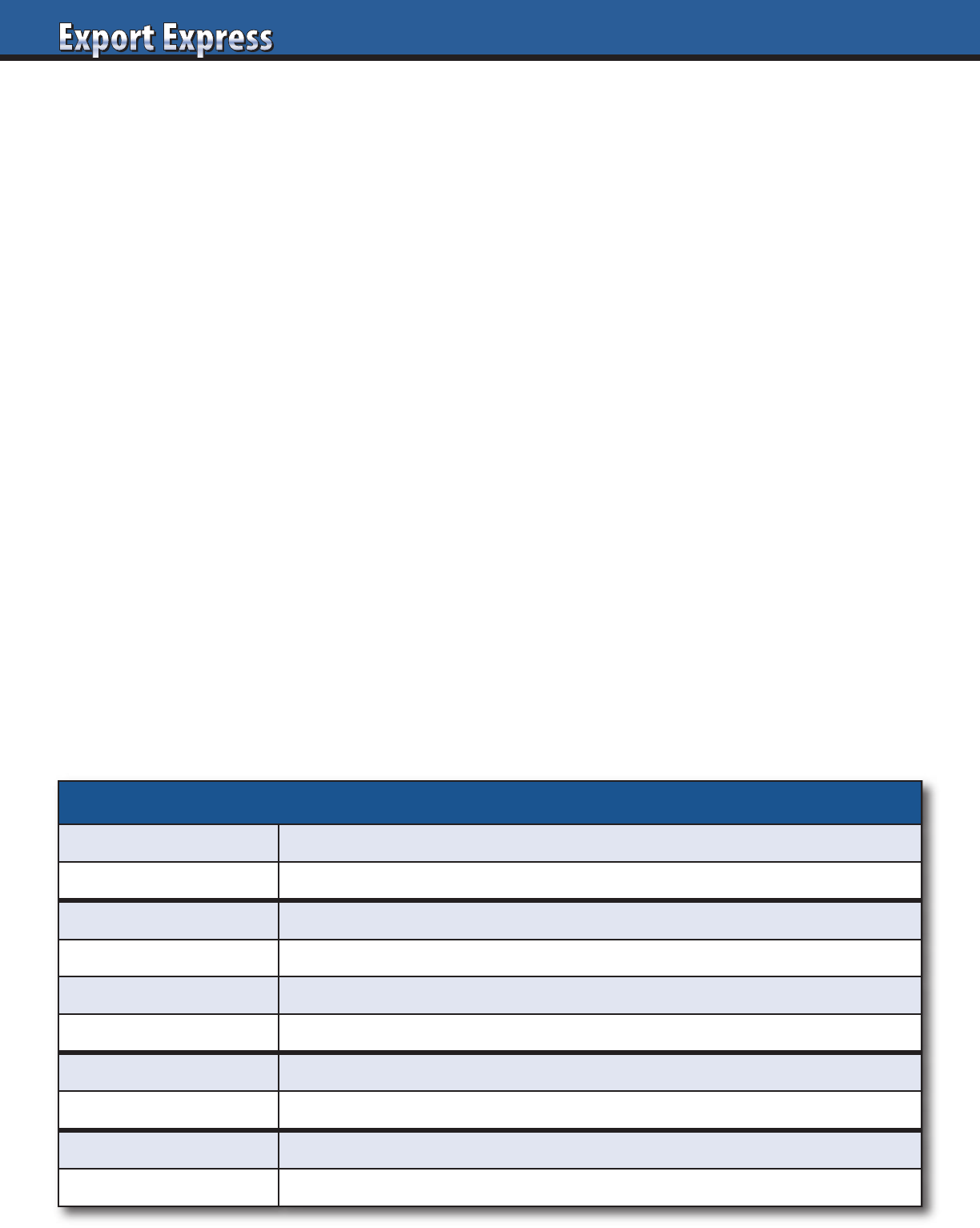
36
How to Win 2022 – Ten Tips
36
2022 will be challenging and everyone can benefit from
“new ideas.” Listed below are Export Solutions’ 10 strategies
to build your export business in 2022 and beyond.
Focus 5 Countries
A true measure of export success is relevant market share in large
countries like China, USA, Japan, Mexico or Saudi Arabia, not
selling small quantities to 50 or 100 countries. Each international
manager should select his global “Focus 5” countries and strive to
spend at least fifty percent of travel time in core countries. Regional
managers should adapt the same mantra for gamechanging results
at their top one or two opportunity countries.
China Strategy Renewal
Most brands have learned that China is not a country where
you can appoint a national distributor and visit a few times a
year. E-commerce represents most of industry growth and up
to 50% of sales for imported brands. Many companies appear
at a “10 Year Crossroads.” There is an urgent need to hire
“boots on the ground” in China to execute a multi-channel,
multi-region strategy.
Small Shops – Big Opportunity
Small stores represent 50% of sales or more in many emerging
market countries in Asia, Latin America, Middle East, and Africa.
These stores are particularly relevant for impulse categories such
as beverages and confectionery/snack. Small shops are not a
focus for niche brands or start-ups.
E-Commerce
Will e-commerce represent ten percent of sales by 2025?
Twenty percent? Who knows? We can all agree that it will be
bigger. Challenge each distributor to develop an e-commerce
plan. Share learning from your corporate office. Treat Amazon
as another “Global Customer.”
New Channels
My Summer Export Express identified 23 “alternate” channels
that could represent new customers. These channels tend to be
“less demanding” and more open to new brands.
USA – Multi Channel
USA based manufacturers routinely sell to ten channels or more.
Most adopt a matrix model meshing channel specific brokers for
supermarkets and foodservice with direct sales to Walmart,
Costco, and Drug customers. Overseas brand owners should
adopt the same approach to reach all USA channels and regions.
Listing Map
An up-to-date listing map and “white space” plan is the essential
one page template for every country
Is the Store a 10?
Can 2022 be the year for focus on improved in-store brand
presence? Brands (& distributors) own the tools and knowledge
to reach these objectives. The critical element is your focus and
execution of a formal shelf drive. Contact us if we can help.
Upgrade Distributor Network
Every company has distributors that are “under-achievers” or that are
no longer a good fit with the brands aspirations. Begin the “upgrade”
process early in the year to impact second half 2022 shipments.
Export Team
How can you redefine roles and responsibilities to obtain more
productivity from your export team? One idea is to appoint one
manager to focus on new country pioneering for a large country
as a special project or “stretch” assignment. Another concept is to
place a junior “company missionary” in a key distributor’s office
for a one year training assignment.Contact Export Solutions for
“new ideas to solve old problems.”
2022 Winning Strategies
Geographic • Focus 5 Countries
• China Strategy Renewal
Channel • Small shops
• E Commerce
• Alternate Channels
• USA-Multi Channel
Sales Execution • Listing Map
• Is the Store a 10?
Organization • Upgrade Distributors
• Export Team
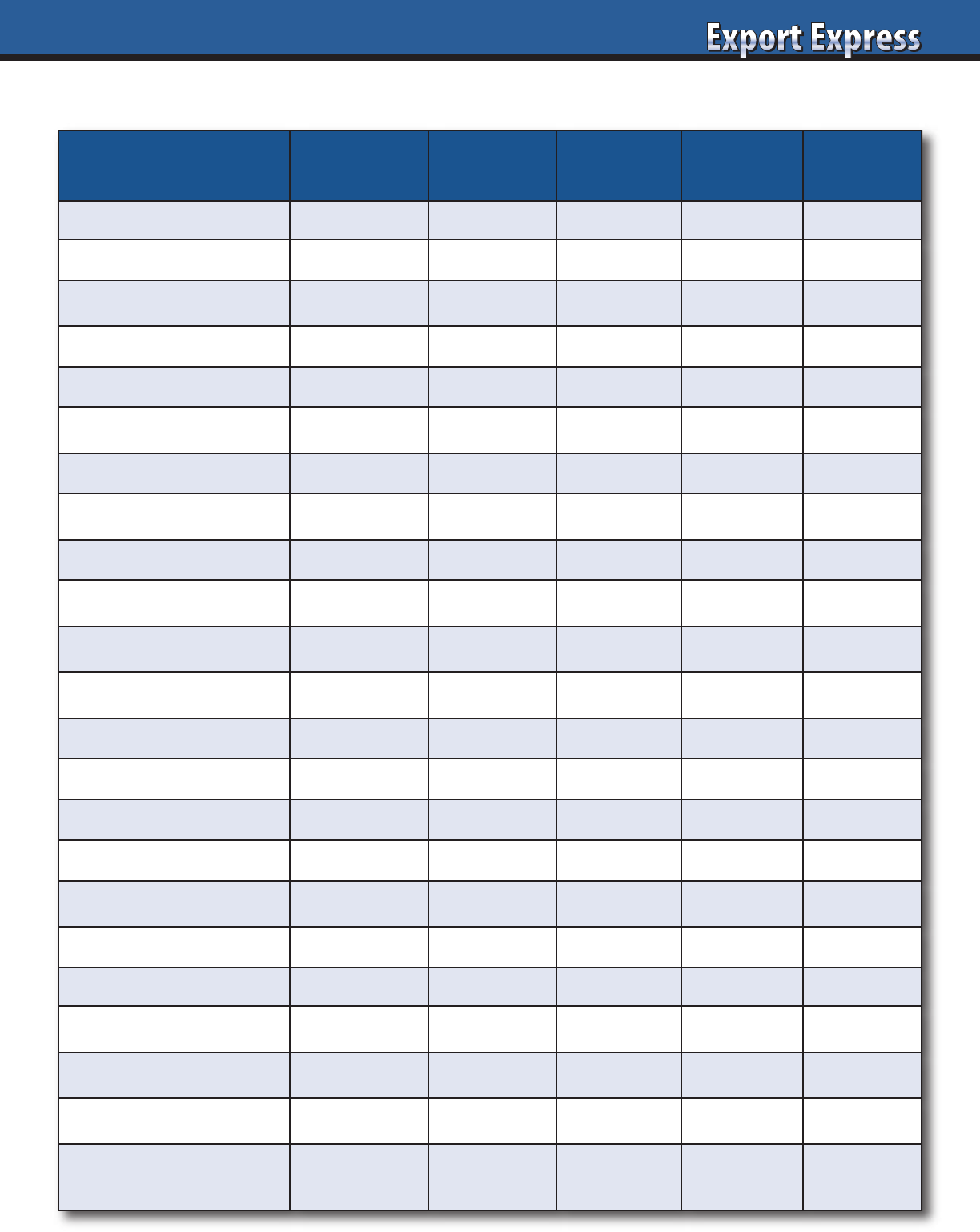
3737
Channel Confectionery
Gourmet
Food
Food/Grocery Beverage Non Food
E-commerce x x x x x
Meal Kits x x x
Ethnic – “Homesick” x x x x
Gift Basket x x x
Natural Food x x x
Gourmet, Deli x x x
Liquor x x
Farmers Markets x x
Gift Channel x x
Toy, Party Stores x x
Movie Theaters x
Hardware, DIY, Office x x x
Duty Free x x x
Fundraising x x
Theme Parks, Stadiums x x
Airlines x
Butchers, Fishmongers x x x
Coffee Shops x x
Military x x x x x
Department Stores x x
Kitchen Supplies x x x
Dollar, Close Out x x x x x
Discount Clothing
(Marshalls, TJ/TK Maxx)
x x
New Channels: Prime Prospects, By Category
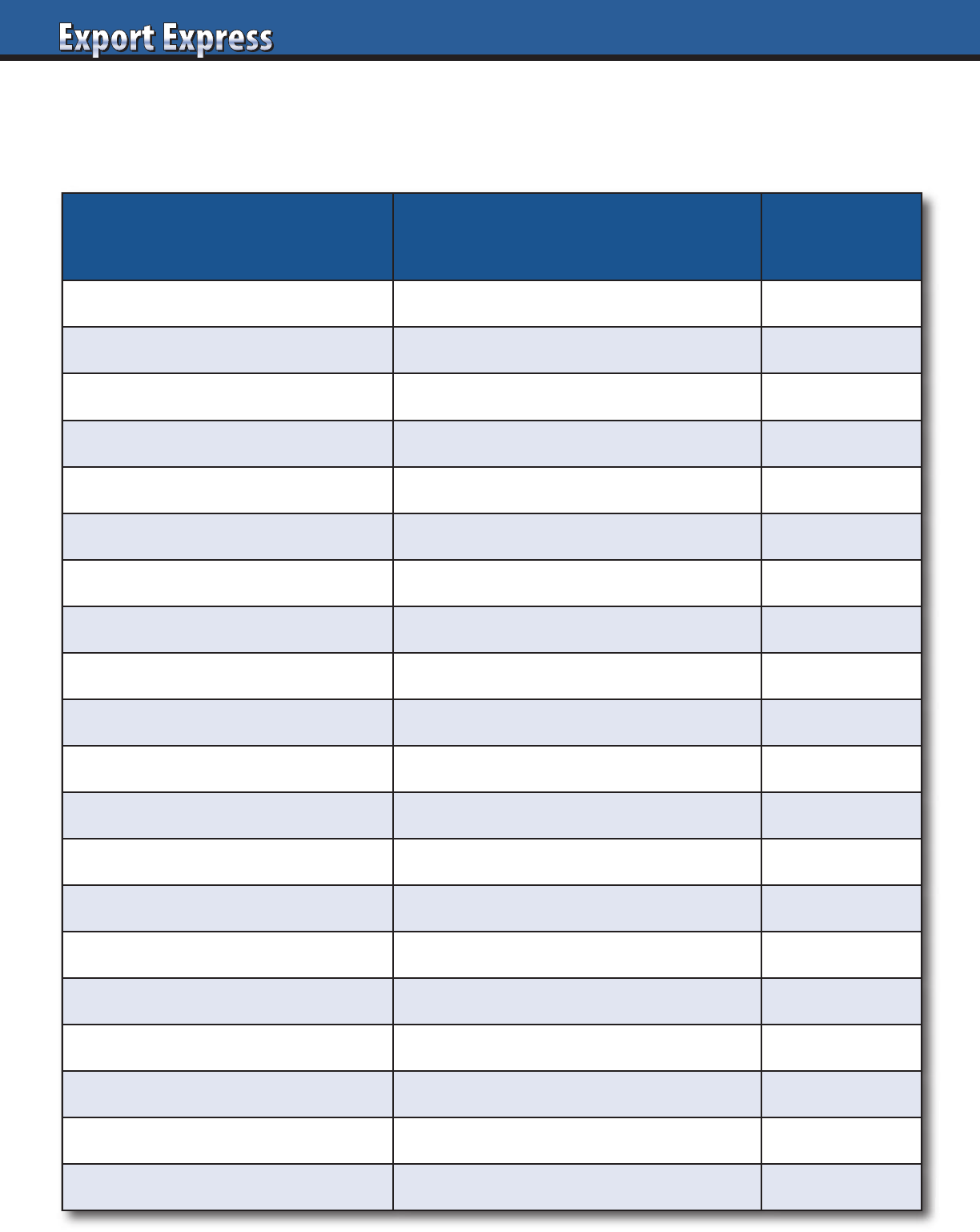
38
Preferred Supplier Scorecard
Distributors deliver their best results for their favorite principals. How do you rank?
Supplier Assessment Considerations
Rating:
(10 = Best)
Annual Sales Revenue • Percent of total distributor sales
Annual Profit Generated ($)
• Net sales times gross margin
Years of Service • New to 20 years or more
Compound Annual Growth Rate
• Flat to 10% or more
Supplier Investment Level • Zero to 25% of sales
Celebrates Success
• Awards, dinner, thank you notes
Shares Best Practices
• Serves as category expert
Logistics Service Level
• Target 98% on time, complete orders
Visits Retail Stores
• Never to full day every visit
Reimbursement of Billbacks • 2 weeks to 3 months
Senior Management Relationship • None to long term partners
Export Manager Experience • New hire to 10 years or more
Response Time • Same day to one month
Supports Distributor’s Ideas
• Invests in local ideas
Good on Customer Calls
• Avoids calls to customer favorite
Admin Requirements • Orders only to multiple reports
Supplier Visit Frequency • Never to weekly
Relationship: Entire Team • Finance, logistics, administration
Respects Fair Profit for Distributor • Healthy distributor is profitable
Achieves Joint Business Targets • Creates culture of success
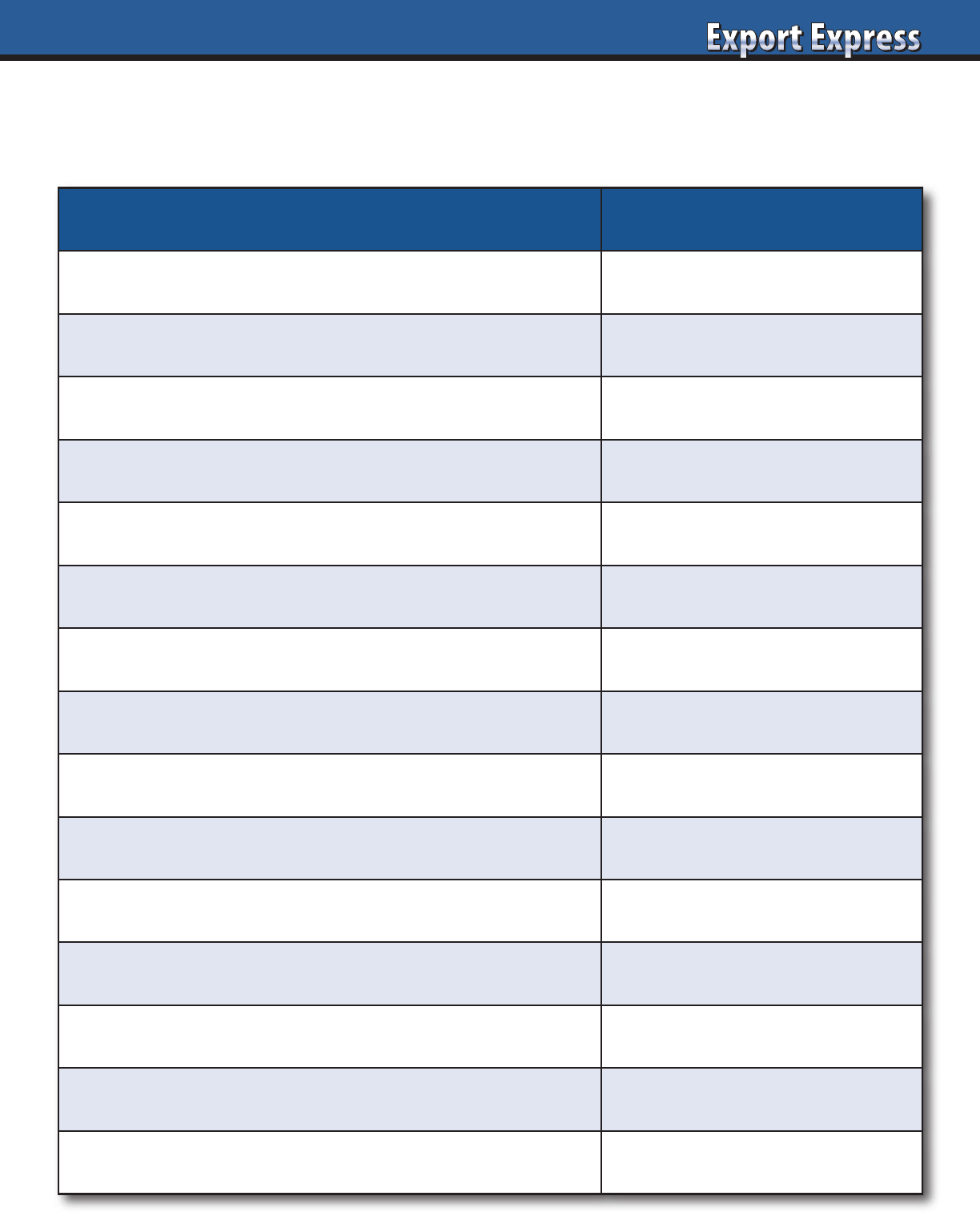
39
Brand Manager Assessment
Your distributor Brand Manager represents your key day to day contact. Successful Brand Managers are good
partners and deliver results, not excuses. Is your Brand Manager an experienced veteran or new hire (rookie)?
Assessment Criteria Rating: (10 = Best)
Years industry/distributor experience
Years sales/commercial experience
Reports to owner or senior leadership team
Workload: dedicated or shared with many brands
Responsiveness: gets things done quickly!
Category knowledge: technical, competition
Analytical skills: shipment trends, Nielsen data
Problem solving
Develops creative promotions
Reports: accurate and on time
Enthusiasm for your company and the business
Participation on customer calls, store checks
Forecast accuracy
Influence distributor team: focus on your priorities
Delivers/exceeds shipment objectives
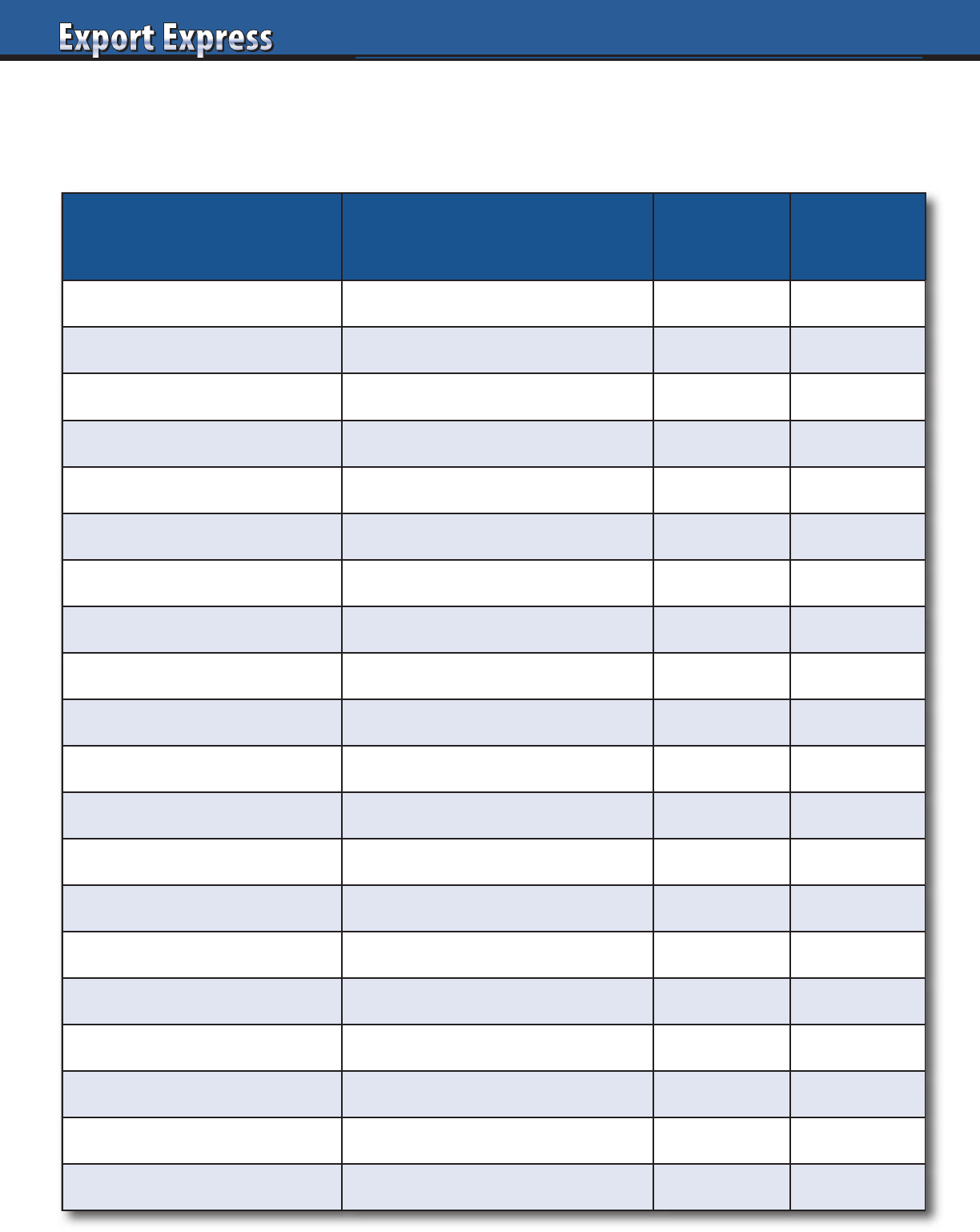
40
Analyze: Your Contribution to Distributor Profit
Export Solutions: 20 Factors Driving Distributor Profitability
Assessment Criteria
Considerations
Result
Rating:
(10 = Best)
Annual Sales Revenue • Percent total distributor sales
Annual Margin Generated ($) • Net sales times gross margin
Distributor Percent Margin
• 10 percent to 50 percent
Brand Owner Investment Level
• Percent of distributor purchases
Distributor Margin Re-Investment
• Distributor promotion spending
Category Adjacency • Distributor portfolio synergies
Brand Market Share
• Niche versus market leader
Payment Terms
• Pre-pay versus 120 day terms
Safety Stock Requirements • Two weeks to four months
Typical Customer Order • One case to full truck
Shelf Life • Two weeks to five years
Case Cube/Case Cost • “Low cube, high case cost best”
# Brands/Items in Range
• “High sales, fewer items valued”
Logistics/Storage: Temp?
• Ambient versus chilled
Damage/Expired Goods • None to 20% of sales
Category Competition
• Niche to highly competitive
Labor: Battle for Shelf Space
• None to intense fight
Brand Manager
• Shared or dedicated
Admin Requirements • Orders only to multiple reports
Manufacturer Visit Frequency
• Never to weekly
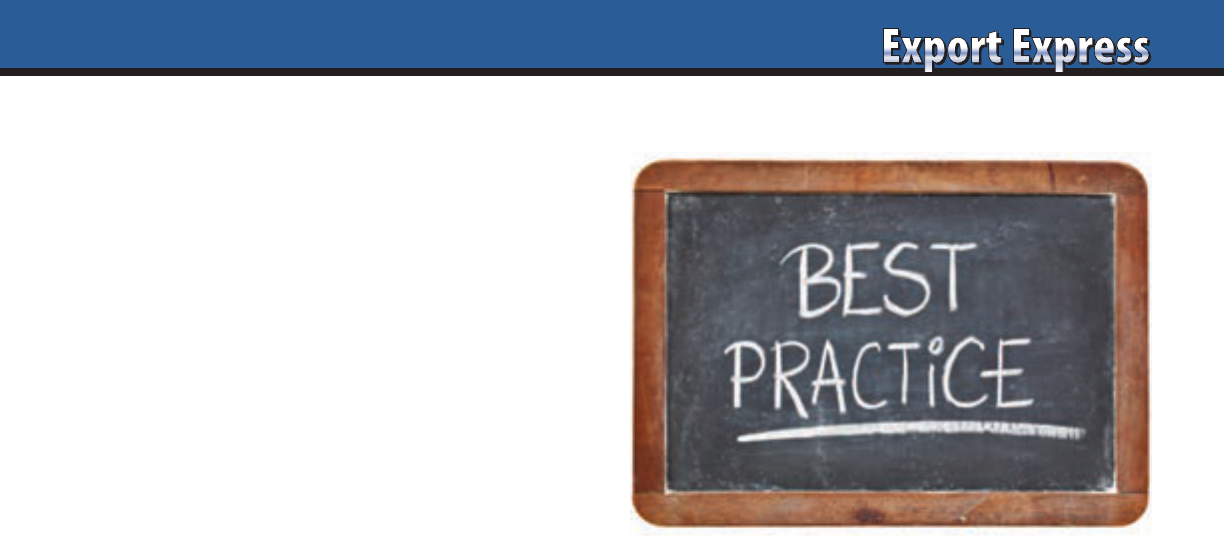
41
How often do you visit your distributor’s warehouse?
Brand owners should inspect their distributor’s warehouse
at least once per year and always before the start of a new
business partnership. Warehouses serve as the nurseries/
creches for where our precious new products are stored while
the commercial team generates sales. Warehouse managers are
custodians of our sales inventory and companies need to insure
that their brands are in good hands while awaiting sales.
Listed below are 10 Tips on productive distributor
warehouse visits.
1. Confirm Accurate Stock Levels for Your Brands
Does warehouse inventory reconcile with distributor stock
reports? How many cases are there versus agreed to weeks
supply targets? Six to eight weeks of stock is typical for
overseas brands. Walk down every aisle and check every
one of your SKU’s.
2. Identify Problems
A warehouse visit may reveal overstock or understock
conditions. Similarly, you may spot a case of poor sales rotation
or goods approaching expiration date. A common problem is
the discovery that a warehouse may not adhere to a “first in,
first out” method of stock rotation. Examine cases to look for
damaged goods.
3. Warehouse = Window Into Distributor’s Real Business
Warehouse inventory levels paint an accurate picture of
the distributor’s real business profile, not what the pretty
PowerPoint presentation tells you. What brands are stocked?
What are they selling? I remember one distributor interview
included bold claims about representation of famous companies.
The warehouse revealed one pallet of one small SKU from the
famous manufacturer. Another interview for a distributor
claimed representation of fifty world famous brands. The
warehouse check showed that 50% of business was on a local
commodity item and most of the foreign brands had only 20-30
cases of stock.
4. Outsourced Logistics Providers
In certain countries, distributors outsource logistics to another
third-party provider. This is a mixed message for a manufacturer.
From one standpoint, this frees up distributor management time
to focus on brand building. Also, there are excellent logistics
providers that specialize in “best in class” practices. On the other
hand, the distributor has sold his logistics contract, sourcing a fat
fee for his business. Also the external logistics provider needs to
make a profit, so you wind up with another margin line item in
your calculation. Request a warehouse inspection, even if it is
managed by a third party.
5. Get to Know the Warehouse Manager
Every business runs into supply chain problems at some point
in time and its positive to know the person in charge. Bring him
a shirt or other gift with your company logo and he will be your
friend for life (or at least until the next problem!).
6. What are Distributor’s Service Levels?
Most buyer’s first concern is sales rotation. Their second metric
is service levels such as stock levels, fill rate, and inventory turns.
Your distributor’s adherence to retailer’s supply chain scorecard
objectives reflects on your brand, sales performance, and
distributor’s reliability as a provider. What are the distributor’s
KPI’s? Are they tracked automatically or manually? How are
they doing?
7. Appearances Count!
Is the warehouse clean or dirty? Does it appear to be
logically organized? Is it busy or “asleep?” These clues send
an important message on the overall status and culture of
your distributor partner.
8. Understand Distributor Value Added Services
Many distributors provide value added services in their
warehouse. This may include creation of promotion packs,
stickering or special pack displays. You may discover distributor
capabilities that you were not aware of.
9. The Heat Is On?
Products require different storage conditions. Obviously
frozen and chilled items require temperature control.
Confectionery products require different climate standards.
Health and personal care items may ship in units versus cases.
In other situations products like insecticides cannot be stored
(or shipped) with food products. What is the compliance level
versus the storage standards for your products?
10. Alignment With Expectations
Ultimately, a successful warehouse visit should match your
business and expectations. If business is good, the visit
demonstrates your interest in the distributor’s total company
and team. Request a visit just to say “thanks.” If your business
is declining, the warehouse is a perfect place to dig into what
the real situation is at the distributor. Sales to the customer begin
the moment your brand leaves the distributor warehouse floor.
A periodic inspection will insure that your brand looks its best
in transit to the store shelf.
10 Tips: Mandatory Distributor Warehouse Visit
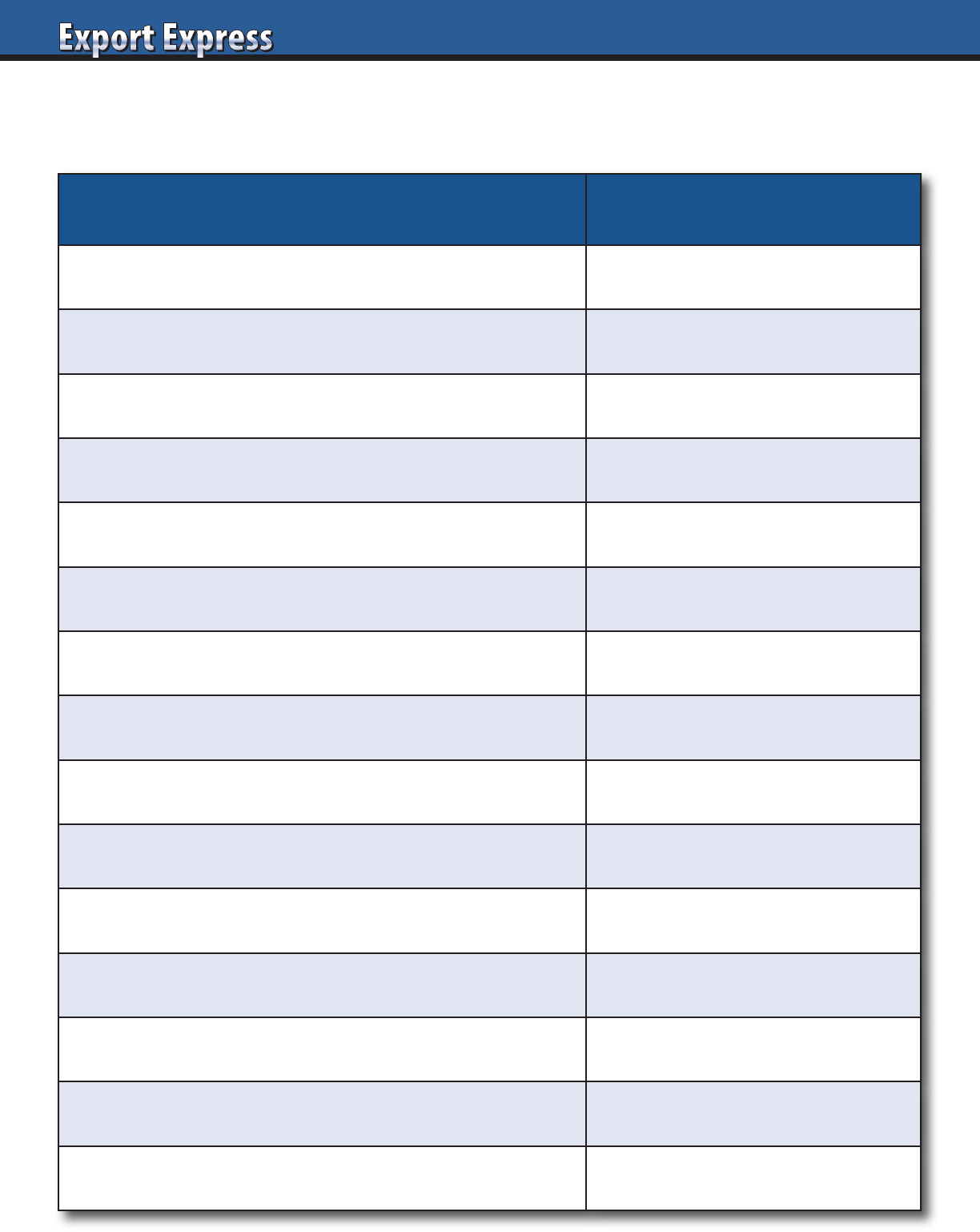
42
Logistics-Distributor Capability Scorecard
Many retailers supply their distributors with service level scorecards. Our distributor’s performance demonstrates their reputation as
a reliable supplier to important customers. Benchmark results vary by country, reflecting unique requirements to serve local customers.
Assessment Criteria Capability – Results
Warehouse: Distributor owned or outsourced to third party?
Trucks/vans: Distributor owned? How many, by type?
Warehouses: Locations, size, pallet positions,temp.controlled?
Special pack services: Stickering, promo packs, repack?
Average stock on hand: number weeks supply, by SKU
Annual inventory turns
Order lead time: capital city, rural regions
Minimum order size: cases, value, avg. order size
Perfect order rate, case fill rate, SKU fill rate
On time delivery rate
Monthly orders handled? Unique customers?
Damaged goods: Percent of sales
Vendor Managed Inventory (VMI) customers
Can distributor ship less than case quantities?
Logistic cost: percent of net invoiced cost
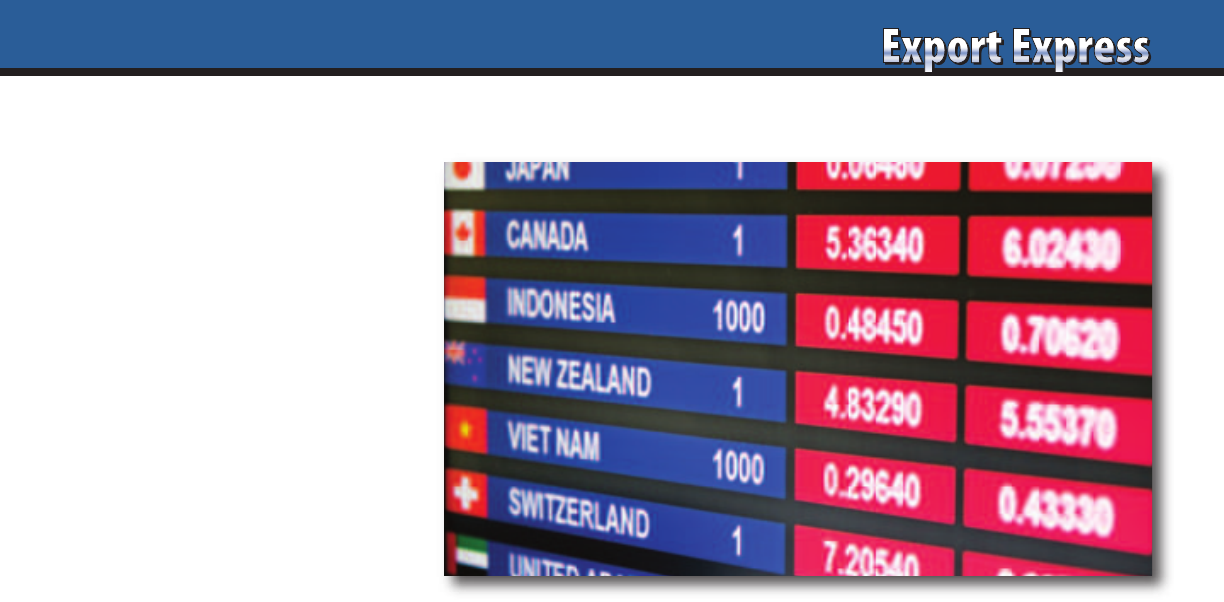
43
Dramatic currency gyrations wreak
havoc with retail pricing around the
globe. Strong USA dollar, weaker Euro,
devalued China RMB, and cratering
pound. These lightning fast moves
on currency exchange may require
six months or more to wind their
way through the supply chain. Some
distributors devote more time to serving
as f/x traders versus brand builders.
Unfortunately, most export managers
are distanced from the problem until
receiving an urgent call from a distributor
who faces passing on a 10-20 percent
price increase to his customers. Listed
below are Export Solutions’ “tough tactics
for tumultuous times.”
Higher Prices Mean Lower Volume
Emerging market currencies usually
move in a weaker direction. This
translates to higher shelf prices. Citizens
in these economies rarely experience
wage increases in parallel with inflation.
Most consumers tend to reduce purchases
of overseas products as they become
luxury items. Exporters need to calibrate
“how much pain” they are willing to
endure in terms of lower volume.
Prices Only Go Up, Never Down
Permanent price declines or rollbacks
are extraordinarily difficult to execute.
If your currency weakens, retailers and
distributors don’t pass on lower net cost.
It is common practice for them to try to
maintain retail shelf prices and capture
extra margin. Savvy brand owners skip
the price rollback and invest in heavier
promotion levels or enjoy higher profits.
Conduct Monthly Price Surveys
In countries of extreme price fluctuation,
best to schedule monthly price surveys of
your brand and the competition. Request
that distributors use the same store base
every month to avoid regional differences.
Online grocers allow us to monitor
country pricing from our desktops, miles
away from overseas markets.
Retailers: Once Per Year Price Increases
Many retailers accept price increases
only one time per year. This may occur
in conjunction with annual negotiations.
Other retailers demand ninety days
advance notice. Sometimes “borderline”
brands encounter customers who simply
refuse to accept price increases. Ultimately,
this puts tremendous pressure on
distributors who may be facing price
increases from multiple suppliers
What’s Fair? – Peg Rate
I advocate a model where currency
is pegged to an exchange rate at the
beginning of the year. Distributor and
brand owner agree to “swallow” price
swings of the five percent in either
direction of the peg. If the currency
breaches five percent threshold, then
both parties review the formula and
assess options.
Bank Rate Versus Distributor Rate
A key metric to investigate is the
distributor exchange rate in his
calculation versus the actual bank
rate. Many distributors seek to insulate
themselves by building in a five to ten
percent protective cushion. Guess what?
If the currency doesn’t move, the
distributor just made an extra five to
ten percent on your brand, starting
from the landed cost line!
Sell in Local Currency
This forces large manufacturers to accept
the risk or benefit. This insulates smaller
distributors who may not enjoy similar
capital reserves as their larger principals.
This approach works especially well with
European brands selling to the USA or
vice versa.
Competitive Activity
Frequently, all category players
experience similar input cost increases
such as raw materials. Competitors may
use the window to hold prices low to
gain market share. Others may eliminate
promotional spending. Ultimately brands
elect a certain price positioning in a
country and should strive to stay
within the desired range.
Document Price Change Rationale
Retailers provide strict challenges to those
requesting price increases. Supply them
with hard facts on costs of raw material,
currency exchange, transportation and
other factors. Retailers with substantial
private label programs face similar
pressures on their own private label,
so they are not blind to the situation.
Watch Credit/Receivables
Distributors pay their suppliers in
advance of receiving payment from local
customers. Distributors invoice in local
currency and wait for repayment.
During periods of currency fluctuation,
the typical sixty day float could result
in a five percent reduction in receivables.
Across a broad portfolio of brands, this
could spell trouble for a distributor.
Run credit reports and monitor days
outstanding trends.
“Helpers” are Heroes
A trusted distributor who has delivered
consistent results is worthy of your help!
In the past, I have witnessed the USA
dollar appreciate more than fifteen
percent versus the Mexican peso and
Canadian dollar. Best approach is for both
partners to “roll up their sleeves” and
engage in an open discussion around
transparent examination of the facts.
Distributors are entitled to a reasonable
profit. A manufacturer who helps absorb
the pain during a “currency crisis” will be
remembered as a true partner when the
situation stabilizes.
Currency Exchange – Tough Tactics for Tumultuous Times
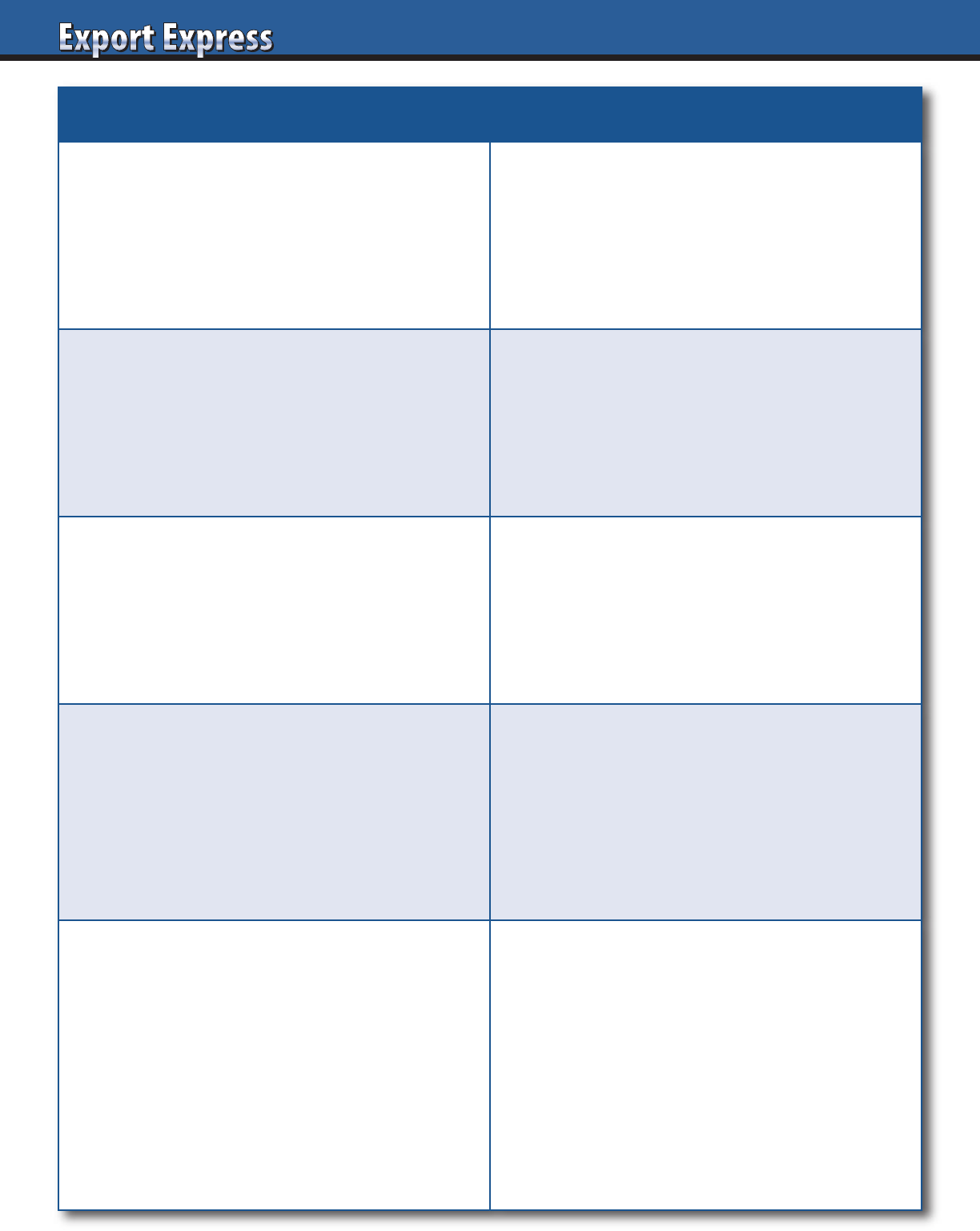
44
Export Problem Export Solutions
Overseas consumers do not know
my category or brand
• Start by marketing to homesick expats
• Partner with distributors handling adjacent
categories or brands from your country
• Sample at high end retailers or restaurants
featuring your countries cuisine
Limited funding for promotion
• Build in promotion allowance into
price calculation
• Use free goods
• Participate in government programs
like USA “MAP”
Can’t find a distributor
• Export Solutions’ database tracks
85 distributors per country
• Visit the country. Schedule meetings
with 5-8 candidates
• Exhibit at country trade show
My price is too high
• New price: production cost plus margin,
eliminating HQ overheads
• Promise distributor higher
sales/investment with lower margin
• Heavy consumer promotion to support
premium positioning
Big country, small shipments
• Stop treating all export countries the same!
Big country, Big focus
• Break country into smaller parts:
Regions, channels, customers
• Hire local manager or visit quarterly
• Consider local production, formulation,
or acquisition
• Brand relaunch with new distributor
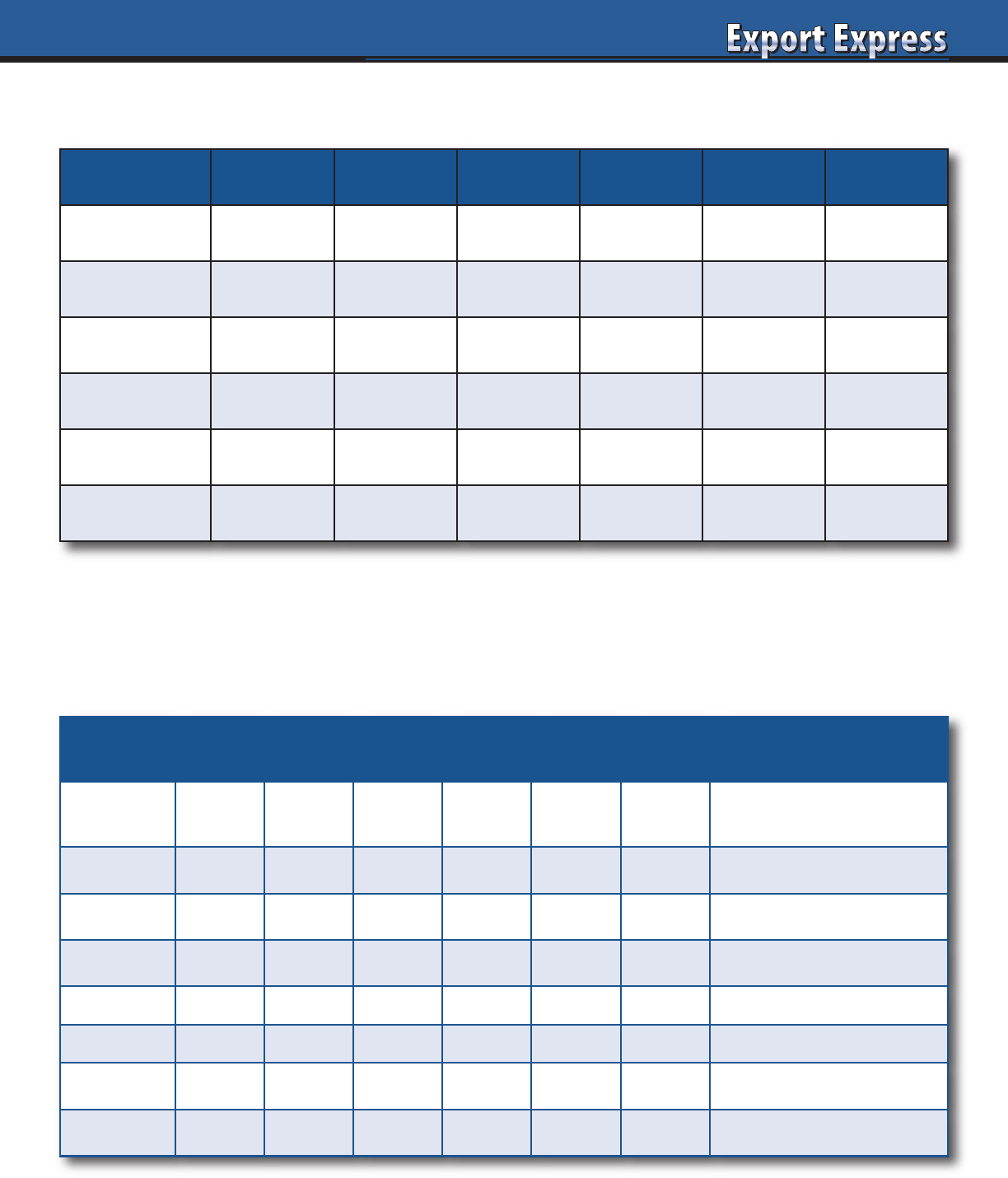
45
Field Sales – Coverage Frequency Template
Retailer #/Stores Daily Weekly Bi-Weekly Monthly Never
Sample Chain 200 0 50 100 40 10
Country Listing Map – USA Example*
“Required Template for Every Country”
Retailer Stores Sku 1 Sku 2 Sku 3 Sku 4 Sku 5 Comments/Plans
Walmart SC 3,571 x x x
Sku 1, 2, 3 stocked at only
2,000 Supercenters
Costco 575 x Special sku 5 for Costco
Kroger 2,726 x x x x Category Review March
Albertsons 2,278 x x x New shelf set
Publix 1,300 x x x BOGO Ad November
Ahold-FL 1,971 x x x x New sku 4 listing
HEB 355 x x x Category Review March
Meijer 260 x x x x Holiday Display Program
*Instructions: List top 10 customers for every country. List all your key skus (items).
“X” indicates item stocked at customer. Blank space represents a distribution void.
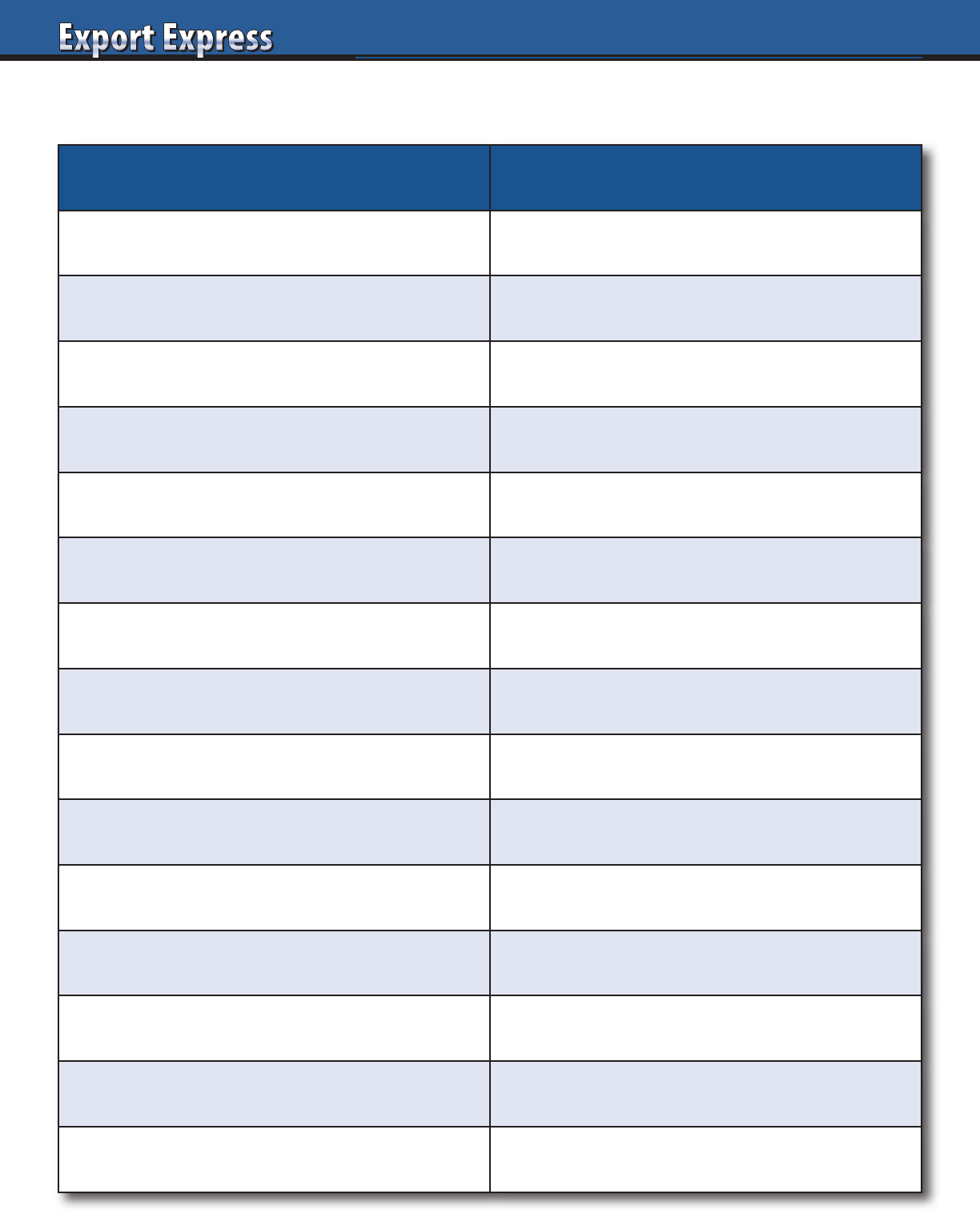
46
Field Sales – Capability Assessment
Number of sales offices (list locations)
Total field sales representatives (or merchandisers)
Number of sales reps outside capital area
Number of field sales supervisors
# Full time representatives vs. # part time
Average years of service: representatives
Average stores per representative
# stores visited per day
Average time spent per store, per day
Do you have multiple reps visiting each store?
# SKUs handled per sales rep
# priorities per store visit
# sales reps with laptop or tablet
# sales reps with phone with reporting capability
Compensation: percent fixed vs. variable?
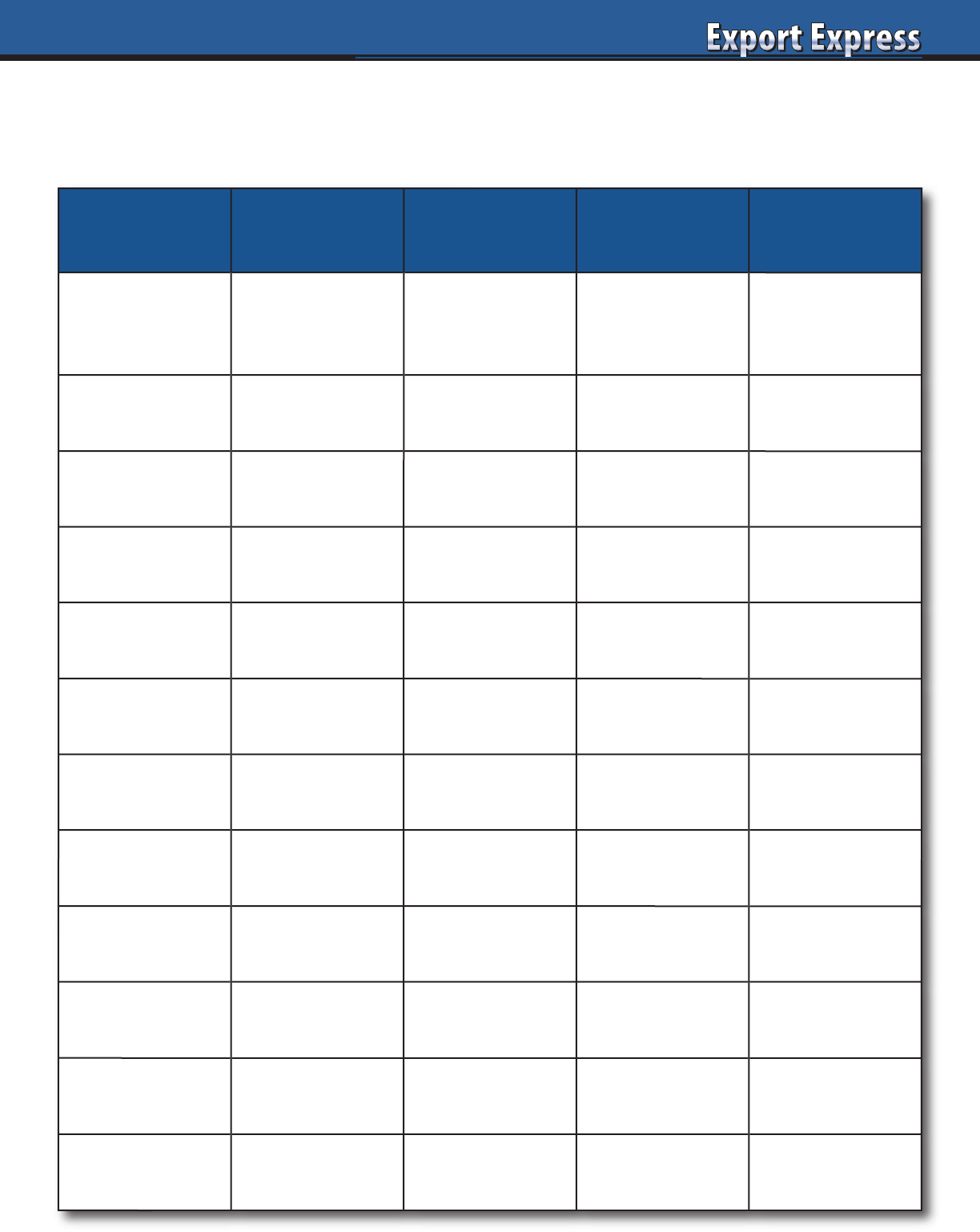
47
Who Is My Team?
Big distributors feature large teams with strong capabilities.
Manufacturers want to know who is their functional contact and how much time do they dedicate to my business?
Function
Distributor
Contact
Title
Email
Phone
(Mobile)
Senior
Management
(Owner/MD)
Marketing
Manager
Sales Manager
Brand Manager
Field Sales
Manager
Digital Marketing
Finance
Supply Chain
Purchasing
(order placement)
Accounts Payable
Compliance/
Registration
Customer
Service Manager
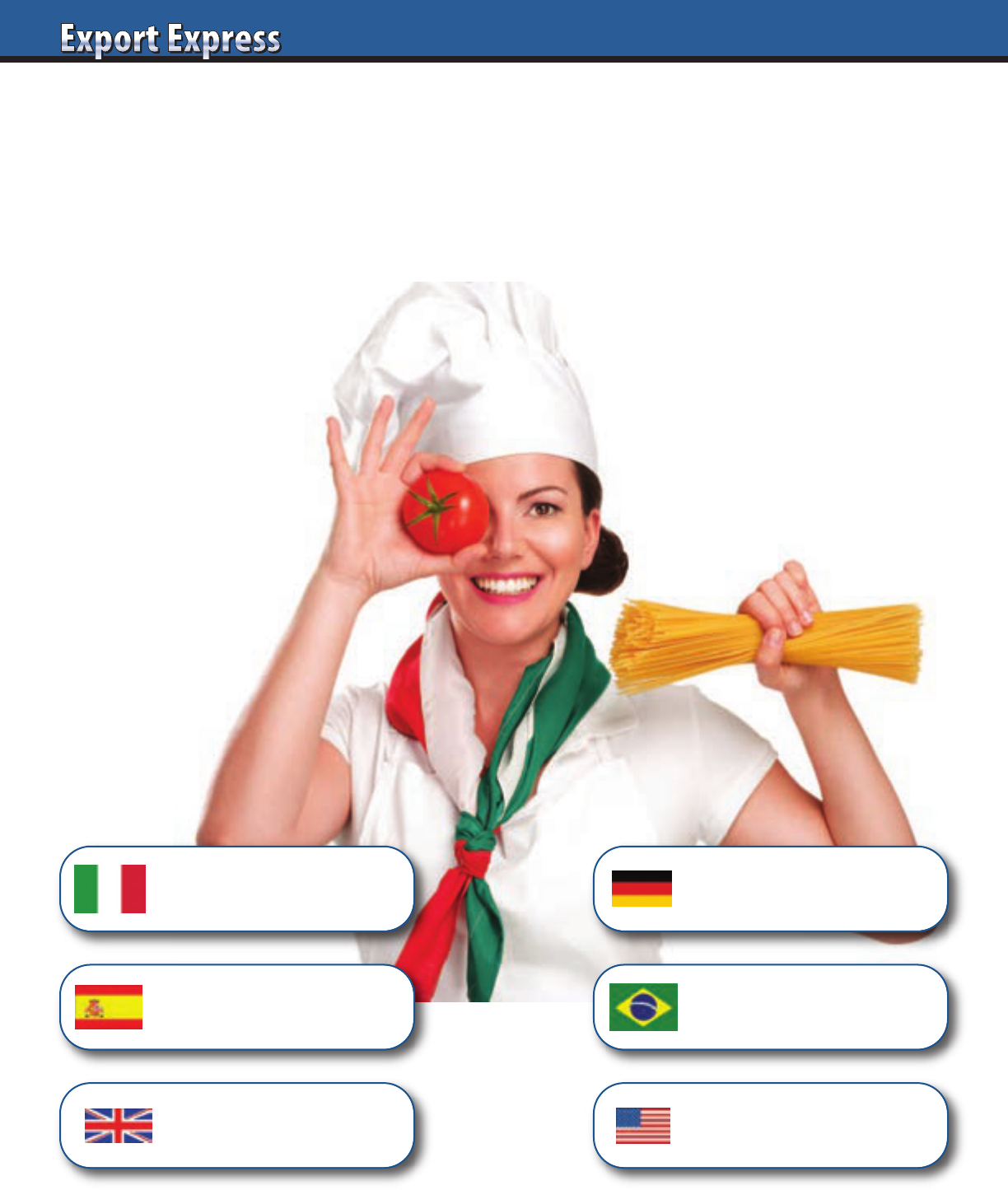
48
Subscribe now at www.exportsolutions.com
USA Food & Sweets
1,189 Distributors
Spanish Food & Sweets
408 Distributors
Italian Food & Sweets
1,397 Distributors
UK Food & Sweets
682 Distributors
Latam Food & Sweets
543 Distributors
German Food & Sweets
648 Distributors
Country Experts
Looking for distributors specialized in brands from your country?
Search Export Solutions database to find overseas distributors handling
food, beverage, and sweets brands from your country.

49
Ten Tips – Increased Distributor Focus on Your Brands
1. Quarterly MBO Meeting with Distributor
Senior Management
One of the most effective tools for
increased focus is to create a regular
process for Distributor senior
management engagement in your
business. The Management By Objective
(MBO) system (or similar approaches)
allows you to meet quarterly on a pre-
planned schedule to review past quarter
performance on key initiatives and firm
up plans and commitment for the new
quarter. Discussions should focus on key
business metrics and account specific
results. Meetings can be held via
teleconference if you can not visit
personally 4 times per year.
2. International Distributor
Network Conference
This can include all your global
distributors or those from a specific
continent/region. Program can be 1-2
days in length and can include Corporate
Business Review, New Product Roll-Out,
and requirement that each distributor
give a presentation on a success story
from their home market. Meeting location
can tie in with a major trade fair such
as SIAL or FMI to reduce expenses.
Alternatively, the meeting can also be
in a resort location to serve as an
incentive. Export Solutions is available as
a conference meeting speaker to discuss a
variety of distributor optimization
strategies and retail trends.
3. Sales Contests
Sales contests bring energy, excitement,
and focus to your brands. Sales contests
should be about six weeks in duration
and offer the opportunity for “everyone”
to win. Prizes can range from cash
incentives to trips to merchandise for
the winners. Sync contest objectives and
measures to your key initiatives for your
peak season or a new product launch.
4. Key Account Business Reviews
It is appropriate to conduct key account
business reviews with each of the
distributor’s top 3-5 accounts once per
year. Meetings should include senior level
management of the retailer. This strategy
requires distributor analysis of the
accounts business and opportunities for
mutual growth. This also provides you
with an avenue to develop a personal
relationship with local customers.
5. Retail Audit
Retail execution is critical to the success
of any brand initiative. An important
element in a new product launch or
preparation for your peak selling season
is the pre-scheduled Retail Audit across
a market. The Manufacturer would bring
2 or 3 people from their company and
match them with distributor personnel
for a day in the field checking retail
conditions. In one day, the 2-3 teams can
see 30-50 stores in the market to judge
the markets “readiness” and progress.
Distributor personnel are competitive and
will work hard to make the market “look
good” for the Retail Audit.
6. Plant Visit
Invite your distributors for a plant
visit and/or a trip to your corporate
headquarters. Distributor can be introduced
to members of your senior management
team. Distributors should be encouraged
to bring a large customer as well. This
type of trip can serve as a “bonding”
experience and create a renewed sense
of commitment to your business .
7. Bonus Payment
Incentive pay for performance usually
works well with sales teams. Sync bonus
with your key objectives. Reward
performance on achievement of retail
distribution, profitability, as well as sales
volume objectives. Volume based objectives
alone may encourage questionable
shipments that could be diverted.
8. Distributor Sales Meeting Participation
Most distributors schedule monthly or
quarterly meetings for their entire sales
team. This is a primary format for the
distributor to communicate direction and
priorities. Most distributors allow their
manufacturers to make a presentation
on a new item or key sales drive.
Supplement your meeting presentation
with a small gift for all meeting
participants such as a pen, key chain,
or calculator with your company logo.
9. CEO Market Visit
Distributors appreciate a visit from
your CEO or other member of your
senior management team (CFO, VP
International, etc.). This gives them
the opportunity to demonstrate their
results and share their input on the
markets development. It is magical to
watch certain market issues get “solved”
immediately prior to a senior
management visit!
10. Share Best Practices
Create a process for sharing best practices
and success stories within your global
distributor network. These can be
communicated via a monthly newsletter
or email. Distributors are proud to share
their achievements or innovative new
strategies that they are using to build
their business. Manufacturers may elect
to reward distributors with the “best
success story” each month with a “free
dinner” or other incentive.
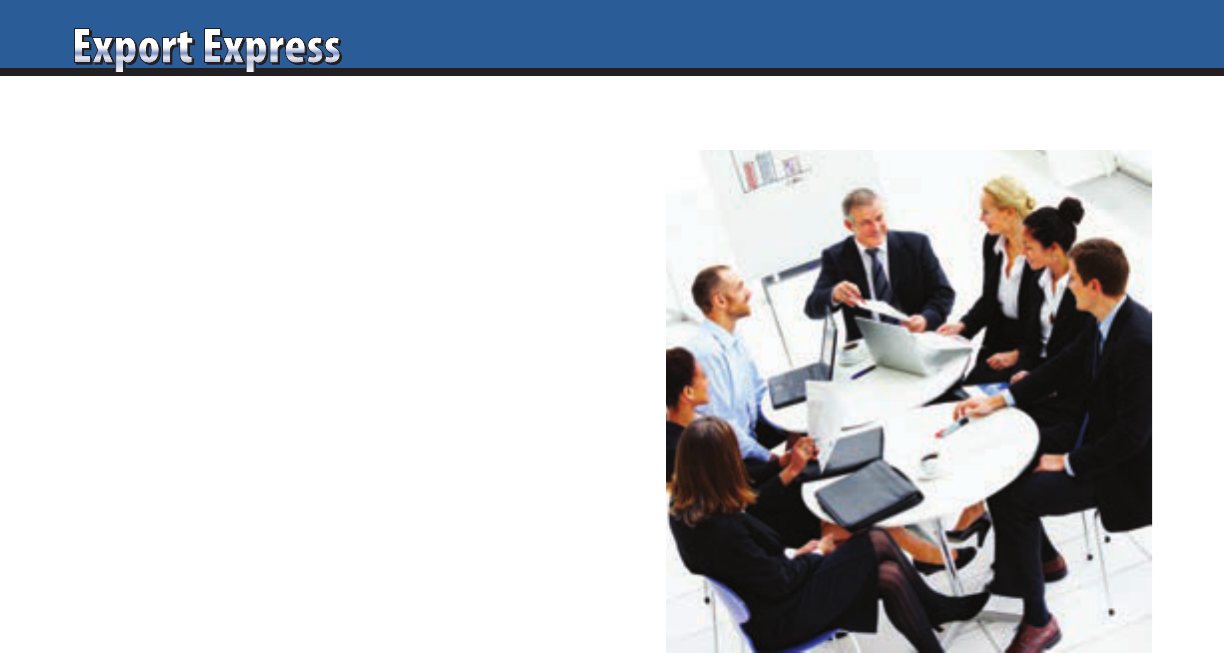
50
Spring is a good time of year to conduct
your annual business review with key
customers. 2021 shipment records and
market share data are now available.
Annual negotiations have been concluded
for most and retailers have launched their
own plans to grow sales in a challenging
2022. The annual business review
represents a unique opportunity to
discuss your business at a senior level,
reinforce your reputation as a category
expert, and sell the 2-3 ideas that can
make a “game changing” difference
for your business for 2022.
Senior Management Participation Elevates
Meeting Importance.
The meeting purpose is to consider
strategic issues not normally covered
in daily buyer-seller interaction.
Participation can include anyone at the
retailer who touches your business: buyer,
senior buyer, merchandising manager,
purchasing director all the way up to the
CEO. Suppliers should invite members
of their senior management team,
depending on the size of the country
and retailer. This may translate to a senior
level “top to top” at a large retailer or a
more informal meeting including the
export manager, local distributor, and
the head buyer in a smaller country.
Scorecard Discussion: First Step
Discussion of data and trends should
reflect key retailer priorities. Frequently,
you can source hints from your category
buyer simply by asking: What are the
key metrics that you are evaluated on?
Most suppliers discover that the buyer
is more concerned with service level,
inventory turns, and incremental
promotional spending than your brands
sales trends. Some basic scorecard topics
are recapped below.
What is the retailer’s share of your
business versus their overall market share?
What factors caused them to gain
or lose market share with your
brands/categories?
What are the gross margin contributions
(percent/value) from your company?
Discuss your service level from a logistics
standpoint. Critical to remember is that
a successful business meeting will focus
on forward action versus a rehash of
past results.
Category Experts –
What’s New?
A major disconnect
in the supplier-buyer
relationship is that
most suppliers focus
only on their brands
while buyers
concentrate on building
total category sales and
profits. Certain retailers
adopt rigorous category
management processes
with detailed templates
for category analysis.
Tell the retailer
something new!
Suppliers add value by
sharing new category
insights and trends, not
just developments on
their brands. Retailers
may be receptive to
learning about category
innovation from other
markets, consumer research, new
product development work, and
environmental/sustainability programs.
Sync with Retailers 2022 Plans
The annual business review is a good
forum to learn valuable clues on retailer
plans for the year. It is likely that retailers
have already announced their 2022
programs with catchy names such
as “Great Value 2022” or “Absolute
Minimum Pricing.” The meeting
represents a chance to ask senior retailer
executives their insights on program
execution, requisites for participation,
program measures, early results, and
other new initiatives for 2022. Retailers
dedicate significant time to designing
their marketing strategy and usually love
any opportunity to discuss key elements.
Ask for the Order
Come prepared with 2-3 “big ideas”
that could change the dynamics of your
business with the retailer. This could
involve retailer participation in a major
blockbuster promotion,acceptance of a
new line of products, or redesign of the
shelf fixture. The annual business review
forum helps create senior retailer
awareness of the critical issues driving
your business.
Beware of Retailer Agenda
Savvy retailers will also present 1-2
initiatives where they will request your
financial support. Be prepared for the
retailer to pressure your company for
participation in retailers marketing
activities (magazines/fliers) and
concessions in price. In some instances,
the retailer CEO/Head Buyer will use the
meeting as a “training exercise” to show
the buyer how to extract concessions from
their suppliers. It is ok to say “no,” but
be prepared to share your fact based
rationale. Best bet is to create a positive
environment for the meeting. This could
include an “off site” location or a meeting
discussion over a private lunch or dinner.
Normally, distributors/brokers have
excellent local relationships and can create
the appropriate setting for productive,
non-confrontational, business discussions.
Summary: Next Steps
The annual business review represents
a perfect time to address business
opportunities with sufficient time in the
calendar year to implement the ideas and
achieve your shipment objectives. Key to
a positive meeting is a short discussion of
the causal factors (scorecard) paired with
a sharing of “new information” to your
retail customer.
Be prepared with questions of a strategic
nature for the executive members of the
retailer’s team. Senior members of the
retailers buying and merchandising
departments spend their days with
suppliers whose opinions they value.
Join the group with unique category
insights and a demonstrated passion
for your category and the retailers
overall business.
Retailer Annual Business Review
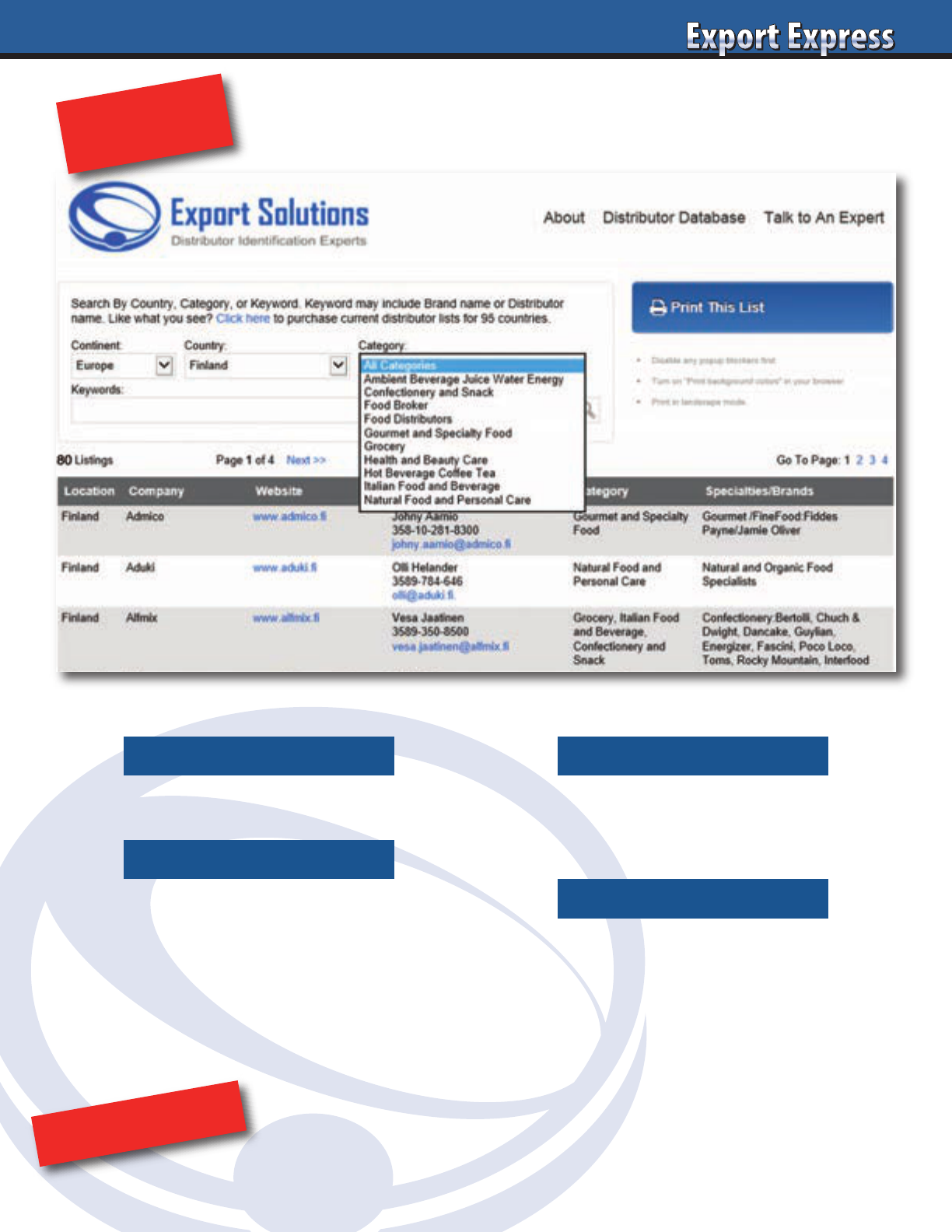
51
Coverage: 96 countries and 9,200 distributors
Confectionery & Snack
Gourmet/Ethnic Foods
Beverage (Ambient & Hot)
USA, German, UK, Italian Food
Health & Beauty
Tracking Distributors for more than 300 of
the world’s most famous brands.
Example 1: Who are Beverage Distributors
in Germany?
Example 2: Who is the Pringles Distributor
in Saudi Arabia?
NEW!
ORDER NOW!
Distributor Search Made Simple
51
Search by Brand NameSearch by Country
Search By Category
Combo Search
www.exportsolutions.com
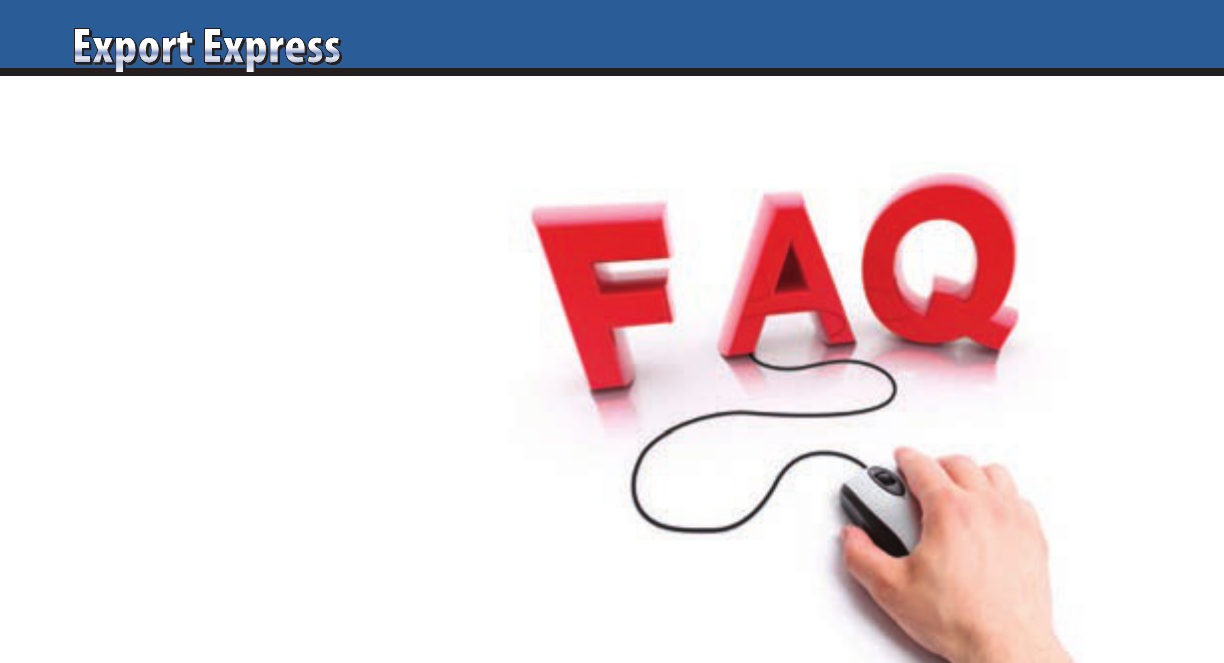
52
Why did you create the distributor database?
Export Managers dedicate a lot of time
to networking, always searching for good
distributor recommendations. We waste
precious time at trade shows speaking to
“pretenders” with no hope of adequately
representing our brands. I thought that
the supermarket industry could benefit
from a global distributor database to
instantly find the leading distributors
in any country.
How did you compile the distributor database?
Export Solutions sources distributor
candidates using six specific strategies.
This includes having access to the global
distributor lists of more than 300 brands
and store checks in at least 25 countries
per year.
How accurate is the contact data?
Export Solutions distributor database is
updated every day! Distributor company
names, web sites, and specialization
rarely change. This makes the database
98% accurate at the company level. The
distributors’ key contact for new product
inquiries and their email addresses
may change as a result of job moves.
Email address accuracy ranges from
80-90 percent depending on the country.
We employ three separate mechanisms
to keep up to date with changes.
What’s new?
Our database has expanded to 96 countries
and 9,200 distributors. It’s now searchable,
supplying country and category filter
inputs or brand names! We also offer
90 day access if you purchase a country
or category list. This allows you to work
online and enjoy “one click access” to
distributors’ web sites. Naturally, we
prefer that you purchase an annual
subscription with unlimited access
to the entire database for one year.
What is the difference between Export Solutions
distributor database and other “lists?”
1. Created by industry export
professionals, not directory aggregators
or other online companies with no
relevant food/consumer goods
industry experience.
2. Each distributor is personally validated
by Greg Seminara. Distributors can not
self register or pay to be in our database.
We know the difference between a “best in
class” distributor and a “one man show.”
3. Our distributor database is designed
for manufacturers of branded products
normally sold through supermarkets,
pharmacies, and food service channels.
We do not include distributors of
commodities or ingredients.
4. Call us! Our specialization is
distributor search, with 400+ projects
completed. Contact us for a free copy
of our Distributor Search Guide.
5. Our database is searchable by country,
category specialization, brand name, or
combination of all three filters.
Which type of companies use our database?
Database clients range from small start-
ups to the largest companies in food
and consumer goods. Export Solutions
database has had more than 3,300 clients
including brand owners from all over
the world. Leading government trade
organizations from USA, Italy, Germany,
and Brasil also develop special
agreements to gain access.
What product categories are covered?
Distributors include specialists for branded
food products, confectionery & snacks,
beverage, natural foods, gourmet products,
ethnic food, health and beauty care
products, household products, and
general merchandise. We offer oustanding
coverage of Italian Food distributors. Many
distributors can handle any product that
is normally sold through Supermarkets,
Convenience, Foodservice/Catering, or
Pharmacy trade channels.
What are best practices in getting the most
productivity from the database?
Successful companies use the database
to screen companies to develop a top 5
list of high potential candidates. They
send a short introductory email with
a web link to their company site. Then,
the export manager follows up with
a phone call within 48 hours. The
database is an excellent tool to invite
potential candidates to an international
trade show like Sial, Anuga, ISM or
Sweets and Snacks. Note: mass mailing
distributors usually generates less than
desirable results.
Does Export Solutions provide any
additional information on the distributors?
Export Solutions knows many of the
distributors in our database. Clients of
our Premium Subscription or Talk to An
Export Expert Services can gain access
to our insights via phone on the best
distributor candidates in any of the
96 countries we cover.
How do I access the distributor database?
Visit www.exportsolutions.com and
click the distributor database page.
You can place a subscription or country
or category access into a shopping cart.
Register and check out via credit card.
The process takes two minutes and we
automatically send you an invoice.
FAQ’s – Distributor Database
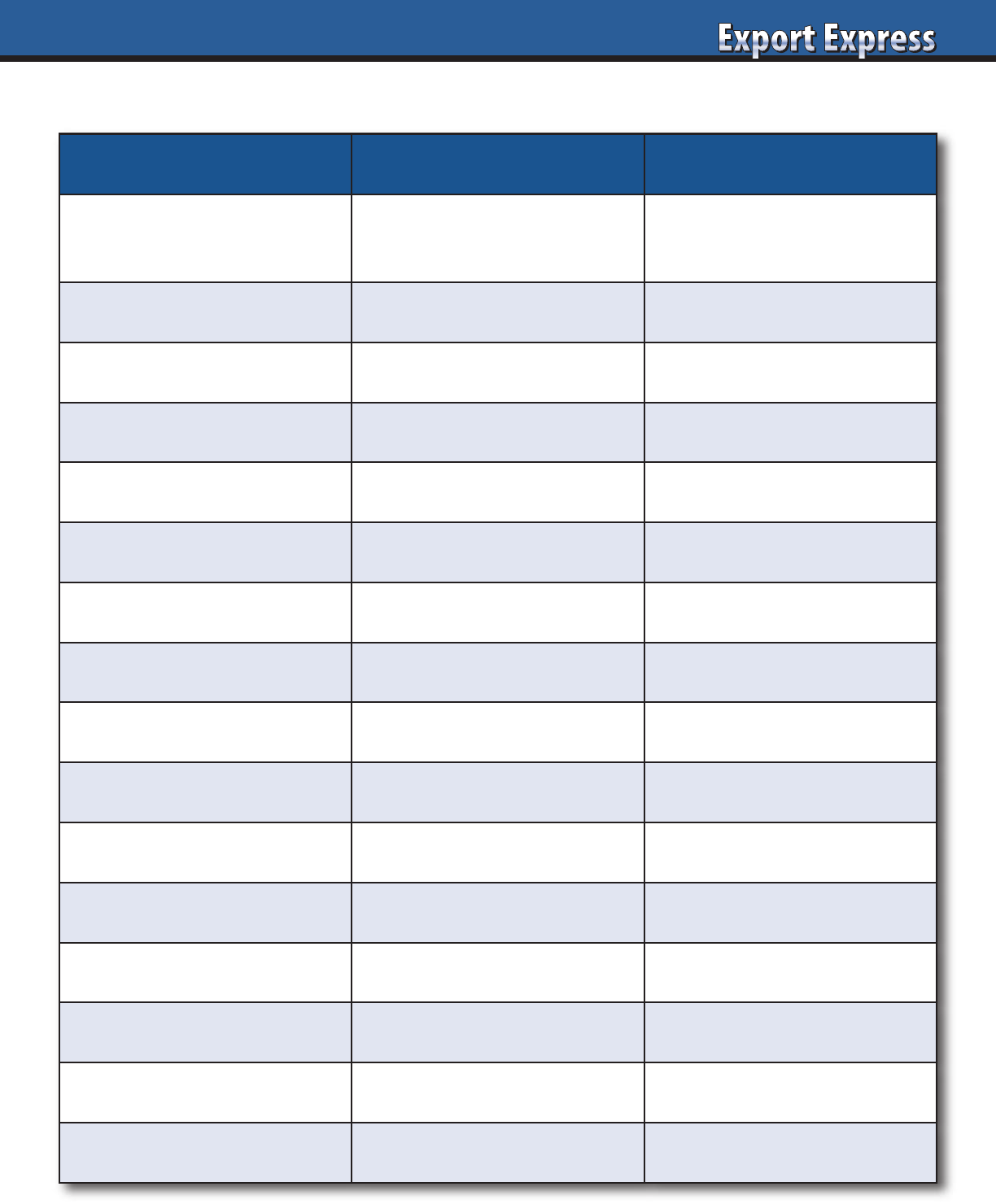
53
New Country Launch – How Long It Takes
* Some activities may be completed concurrently
Minimum Typical
Research Distributor
Candidates, Schedule
Meetings with Lead Time
2 weeks 4-6 weeks
Distributor Meetings 2 days 1 week
Post Meeting Due Diligence 1 week 4 -8 weeks
Distributor Appointment 1 week 4-8 weeks
Labeling Compliance already compliant 12-26 weeks
Product Registration* 1 week 4 -12 weeks
Business Plan Development* 1 week 4 weeks
Contract/Agreement* 1 week 4-8 weeks
Initial Order Arrives 3 weeks 4- 8 weeks
Key Account Calls 1 week 2- 4 weeks
Key Account Acceptance 1 week 4-8 weeks
Retail Placement 2 weeks 4-8 weeks
Marketing Starts 1 week after retail availability 4 - 8 weeks
Consumer Sales
Repeat Purchase
Total 6 Months One Year
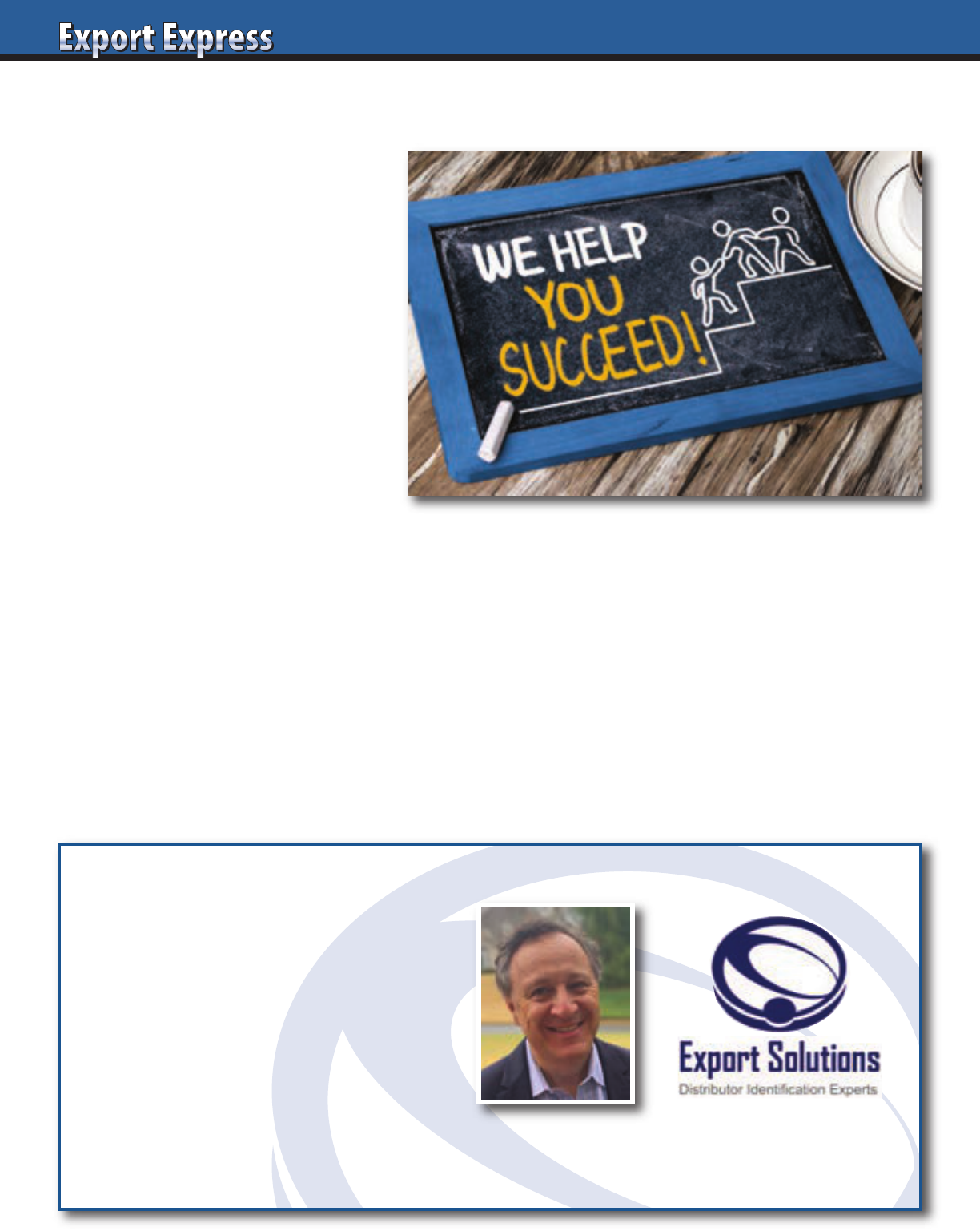
54
1. Determine Brand Ambition
for Country
Will your brand be a category leader,
player, or niche participant?
2. Establish Distributor
Selection Criteria
Big brand distributor, category specialist,
or smaller entrepreneur?
3. Create a Pool of Candidates
Export Solutions database tracks
9,200 distributors in 96 countries.
4. Determine Candidates Preliminary
Interest Level
Send introductory email, followed
by phone call within 48 hours.
5. Organize Introductory Web Interview
Key Facts: Sales turnover, # employees, companies
represented, category/channel specialization.
6. Distributor Interview in Candidates Office
4-6 weeks lead time. 2 hour meetings.
Send advance agenda.
7. Independent Store Checks
Provides category insights and “real” distributor
performance for current brands handled.
8. Interview Preparation: Scorecard, Samples,
Your Presentation, Key Questions
Export Solutions’ templates: Assessment Scorecard
& Ten Questions for every interview.
9. Distributor Interviews – Target 3 Candidates
Review capabilities, warehouse, cost to serve,
and interest in your brand.
10. Cooperation Model
What is the plan? Year one plan, pricing calculation,
and timeline.
Ten Step Distributor Search Process
Talk to an Expert
• Find Distributors in 96 Countries
• International Strategy Road Map
• Fix Problem Markets
• Entry Plans
• Export Workshops
• Motivational Meeting Speaker
Contact Greg Seminara at (001)-404-255-8387 to discuss your business development project.
www.exportsolutions.com
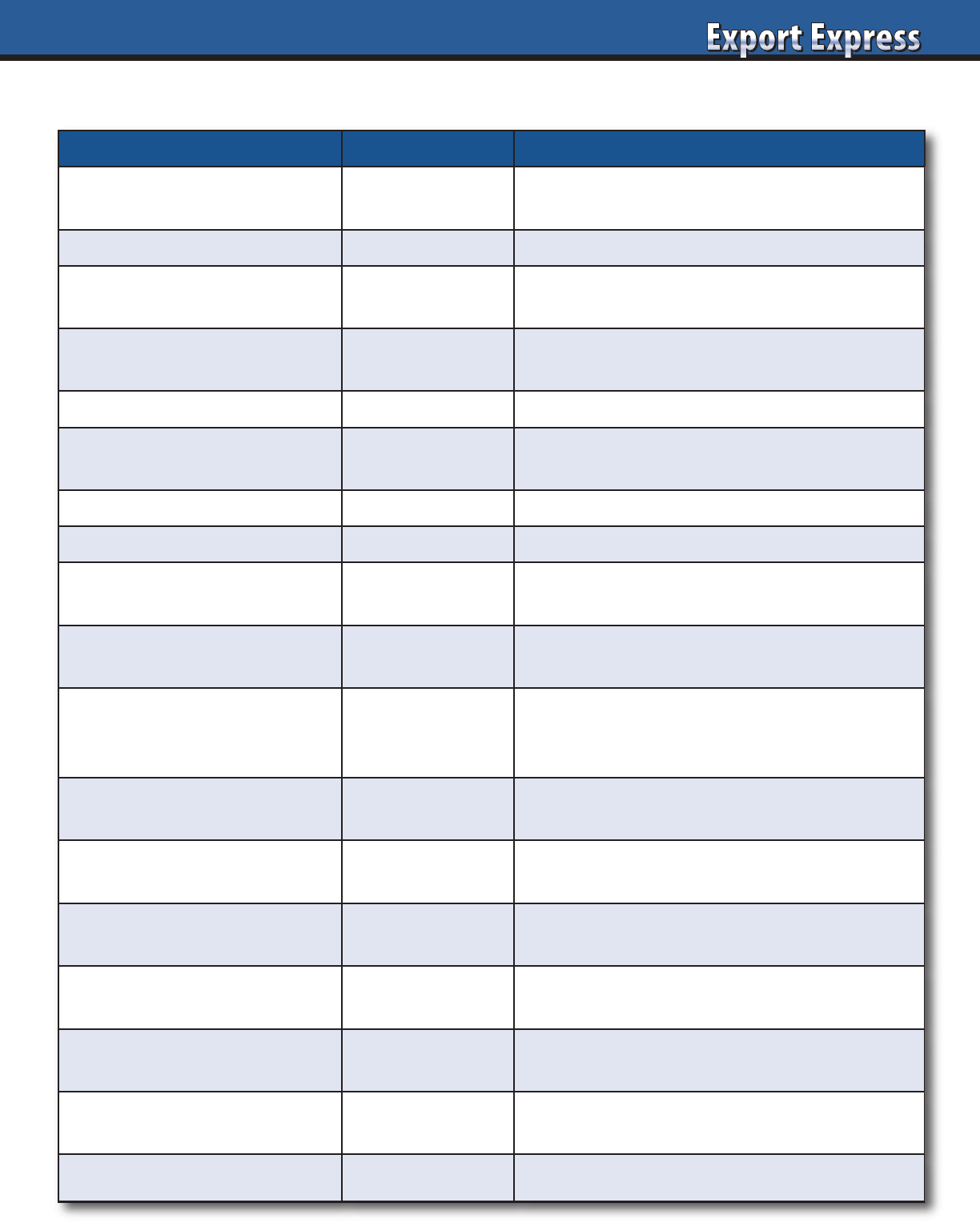
55
Price Calculation Worksheet
Item Amount Comments
List Price (factory or port)
Compare to your domestic list price?
Avoid diverting risk.
Exchange rate Watch bank rate vs. distributor rate.
Freight (sea, truck or rail)
Target full containers.
Consolidation is costly.
Duties
Apply correct Harmonized (HS) code.
Confirm Free Trade Agreements.
Customs clearance, insurance Money and time!
Inland freight: port to distributor
Translate actual costs to case rate.
Avoid flat percentage rates.
Landed Cost
Product Stickering Select countries.
Listing Fees
Flat fee. One time only.
Usually not in calculation.
Marketing fund accrual
Typically, 10-20% of list price.
Part of calculation or manufacturers price.
Distributor Margin
Normal range: 15-35%.
Depends on size, complexity of brand, services,
and “what trade spend is included.”
Other Distributor Fees
Should be part of distributor margin.
Avoid hidden profit centers.
Price to Retailer
Fair and transparent model.
Incentives for large customers, extra performance.
Retailer promotions, incentives,
rebates
10 – 20% depending on the country.
Other Retailer Fees
At times for merchandising or central distribution.
Should be allocated from distributor margin.
Retailer Margin
Global average: 28%
Range: 15% -45% based upon category, brand.
Sales Tax/VAT
Included in price in many countries.
USA sales tax is on top of shelf price.
Consumer shelf price Everyday prices and promotional prices.
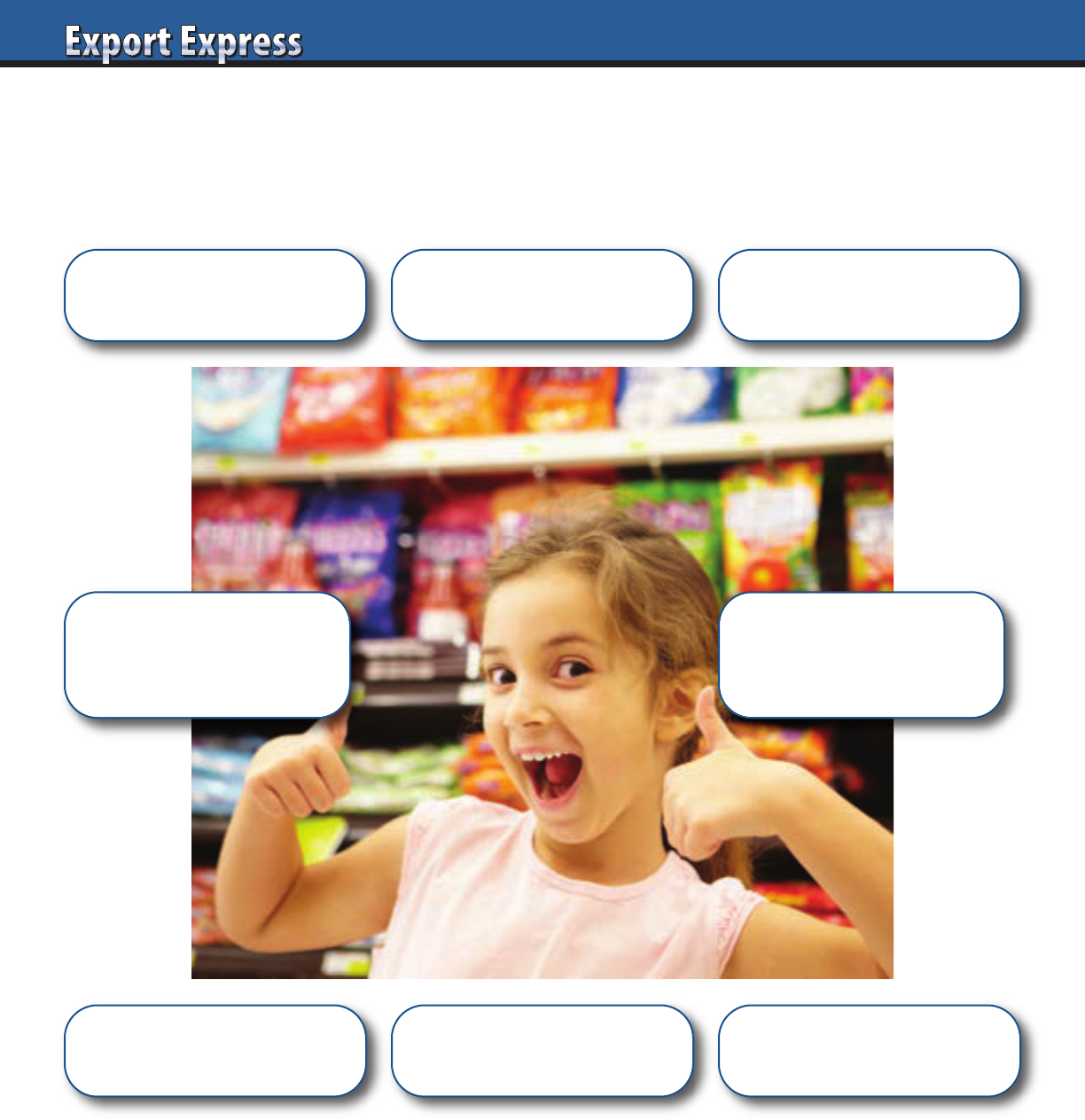
56
We’ve Got You Covered!
Distributor Database Coverage
Confectionery & Snack:
2,713 Distributors
Ambient Beverage:
1,691 Distributors
Gourmet & Ethnic Foods
3,276 Distributors
USA Importer/Distributor
:
598 Distributors
Middle East
937 Distributors
12 Countries
Asia
2,030 Distributors
17 Countries
Latin America
1,574 Distributors
Europe
3,139 Distributors
9,200 distributors – 96 Countries
Subscribe now at www.exportsolutions.com
“Spend time Selling to Distributors versus Searching for Distributors”
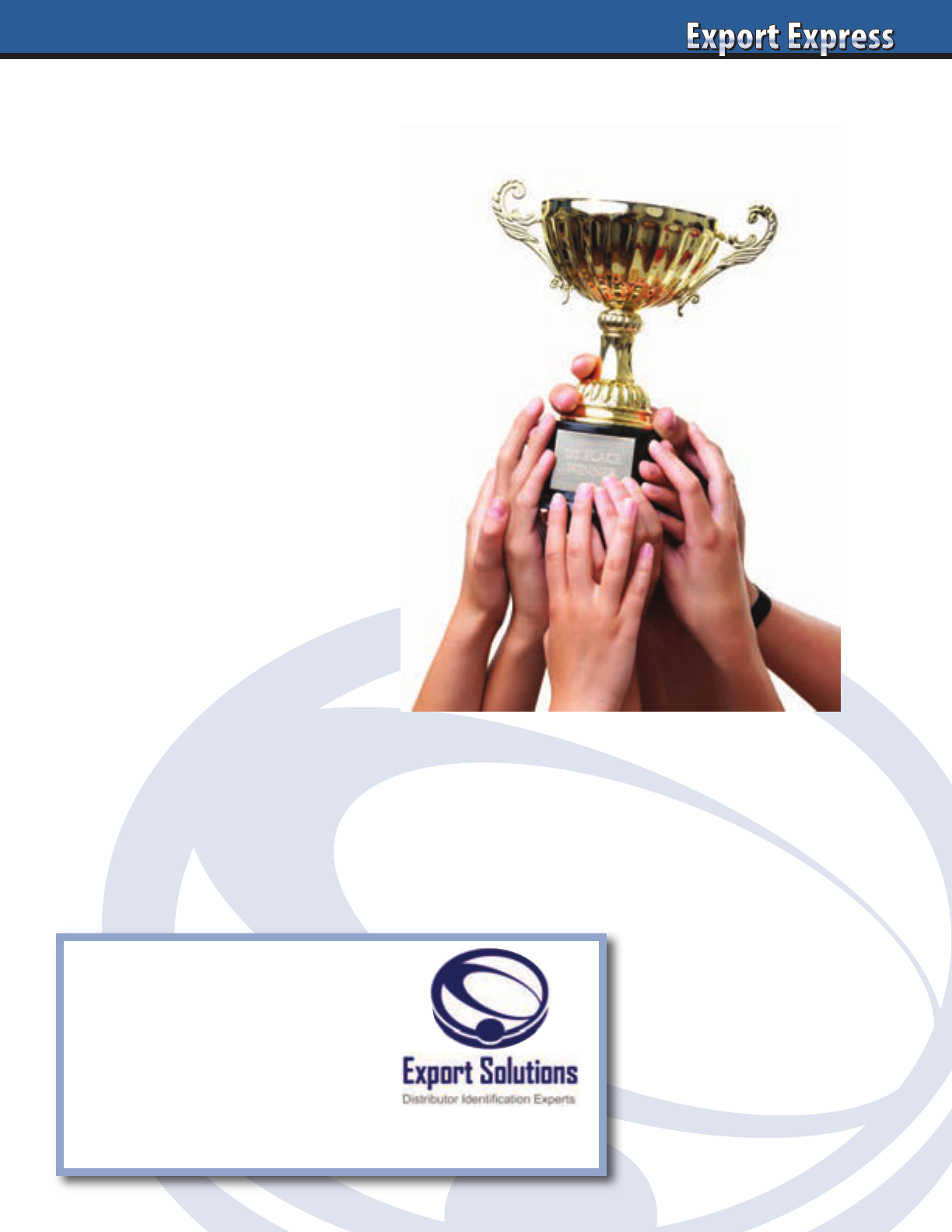
Is your distributor (or importer) network
“Best in Class?” Alignment with a strong
partner will deliver superior results for
your brand. Export Solutions evaluates
and analyzes hundreds of distributors
per year. Frequently, our point of view is
requested to establish criteria for selecting
the best distributor candidate for a brand
owner. Recapped below are points for
consideration for evaluation of your
existing distributors or potential
new partners.
Size Counts!
Critical mass translates to the ability to
offer broader services and deeper sales
coverage at a competitive rate. Retailers
are dependent on large distributors,
creating a “two way” street on tough
negotiations. Larger distributors leverage
their scale to obtain benefits for the niche
brands in their portfolio. In times of
financial turbulence, larger distributors
get paid first. Bigger is not always better,
particularly if you are a small brand. An
important metric is distributor rank in
terms of sales revenue to key retail
customers within your category.
Countrywide Coverage
All distributors normally feature good
presence and contacts with major retailers
and stores within the capital city. Best in
class distributors offer superior coverage
countrywide. Look for distributors that
maintain sales offices and warehouses
outside the capital city. Request a map
pinpointing where the distributor’s field
sales people are based. Typically, the
major cities represent only 50 % of a
countries volume. An opportunity exists
for best in class teams to obtain higher
brand development outside the major
cities where second tier brands do not
have coverage.
Information Technology – Reporting
The sophistication of a distributor’s
information technology platform creates
a statement regarding the distributors
commitment to future growth. Best in
Class distributors offer online portals
where their suppliers can log in to view
sales trends, inventory levels, invoice
status, and results versus key sales
initiatives in “real time.” Leading
distributors supply their field sales teams
with handheld computers to transmit
time sensitive information on orders,
pricing, in store conditions, and
competitive activity. Other key areas for
evaluation include a distributor’s supply
chain management software, ability to
handle multiple EDI transaction sets, as
well as data security and back-up plans.
People – Multinational Expertise
Many distributors trace their origins to
family run operations. The most success-
ful entrepreneurs recognize the necessity
to bring in professionally trained talent to
bring their organization to the next level.
Best in class distributors hire executives
with experience with strong companies
such as Procter & Gamble, Nestle, and
Unilever to manage key departments.
Progressive distributors incent these senior
executives with a route to gain ownership
shares in return for their services.
Sell to 96 Countries
9,200 Consumer Products
Distributors
Free Sample Country List
www.exportsolutions.com
continued on next page
“Best in Class” Distributor Standards
57
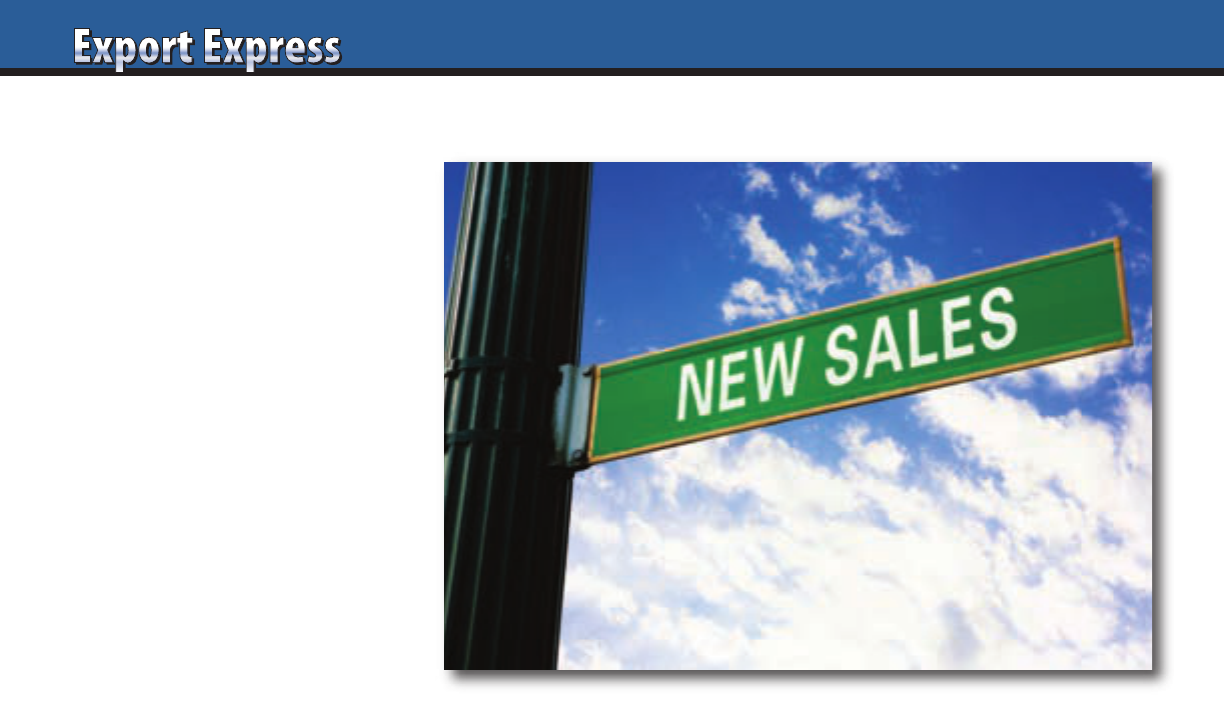
58
Multi-Channel Focus
Global brands source sales from multiple
trade channels: convenience, food-
service, discount, pharmacy, cash and
carry, natural, gourmet, and wholesale in
addition to traditional supermarkets and
hypermarkets. Best in Class sales teams
offer coverage of all trade channels and
deploy dedicated specialists with channel
specific expertise. Similarly, small shops
still represent 50% or more of food sales
volume in Latin America, Asia, and the
Middle East. Leading teams feature
focused programs for reaching “down
the trade” retail outlets.
Marketing Department – Creative Ideas
Is the Distributors owner the “marketing”
department as well? Your primary point
of contact at the distributor has the
greatest ability to impact brand
results and influence the distributor’s
organization to achieve your priorities.
Strong distributors establish full- fledged marketing
departments with experienced university graduates filling key
roles. Successful marketing managers bring new ideas to your
business and adapt your brands marketing message to the local
market. Look for an energetic marketing team that adds value
and creativity and avoids the mistake of simply passing
through your standard presentation and plan.
Brand Presence at Point of Sale
The retail store is a showcase for our brands. Best in class field
sales teams “own the store” and can obtain more than “fair
share” of shelf space for the brands they represent.
Are your brands at eye level, with share of space in excess of
their market share? Or are your brands buried on the bottom
shelf, with only one facing per item? Strong distributors
maintain excellent store level coverage to insure fundamental
focus on correcting out of stocks, price tag placement, correct
pricing, off shelf display, point of sale placement etc. Speed to
shelf timing on new products is another key metric to evaluate
distributors. Always request the retailer’s official schematic
(layout) to measure the authorized shelf space and positioning
for your brand.
Financial: Cost to Serve
The last 12 months reinforced the priority to be aligned with a
financially solid partner. Savvy manufacturers are requesting
new credit information and running Dun & Bradstreet reports on
all distributors in all markets to preempt the difficult situations
that transpired in other countries. Best in Class Distributors offer
competitive margins and provide ideas to generate cost savings
in your mutual business. The best distributors pay on time,
promptly submit promotional reimbursement requests, maintain
good financial tracking systems, and secure reasonable payment
terms from retailers.
Logistics: Service Level 98% +
Logistics represents a core component of a distributors
service offering. Advanced distributors promise 24 – 48 hour
delivery countrywide and maintain sophisticated inventory
replenishment systems. In large countries, look for distributor
warehouses outside the capital city. In some instances,
distributors may outsource logistics operations to another third
party special-izing in logistics only. This strategy normally works
well as long as the logistics company delivers excellent service
without incremental costs. Remember, most distributors were
founded as sales and marketing special-ists that provide logistics
services to satisfy the needs of their brand owners. My opinion
is that the distributor dedi-cates more focus to brand building if
the distributor can find another company to effectively manage
logistics. The key metric is 98% + service level and minimum
out of stocks at store level.
Results
Best in Class distributors (large or small) deliver results in excess
of total market and category growth year after year. The best way
to measure topline distributor performance is to compare total
retailer growth and total category growth (excluding your brand)
with your brands performance in a country or at a retailer. Are
you getting your fair share of growth? Best in Class suppliers
recognize that there are substantial costs in investing and
developing a best in class team. Suppliers must recognize that
distributors are also in the business to make a reasonable profit.
The “Best in Class” relationship allows both parties to grow and
prosper from a sales and profitability standpoint.
continued from previous page
58
“Best in Class” Distributor Standards
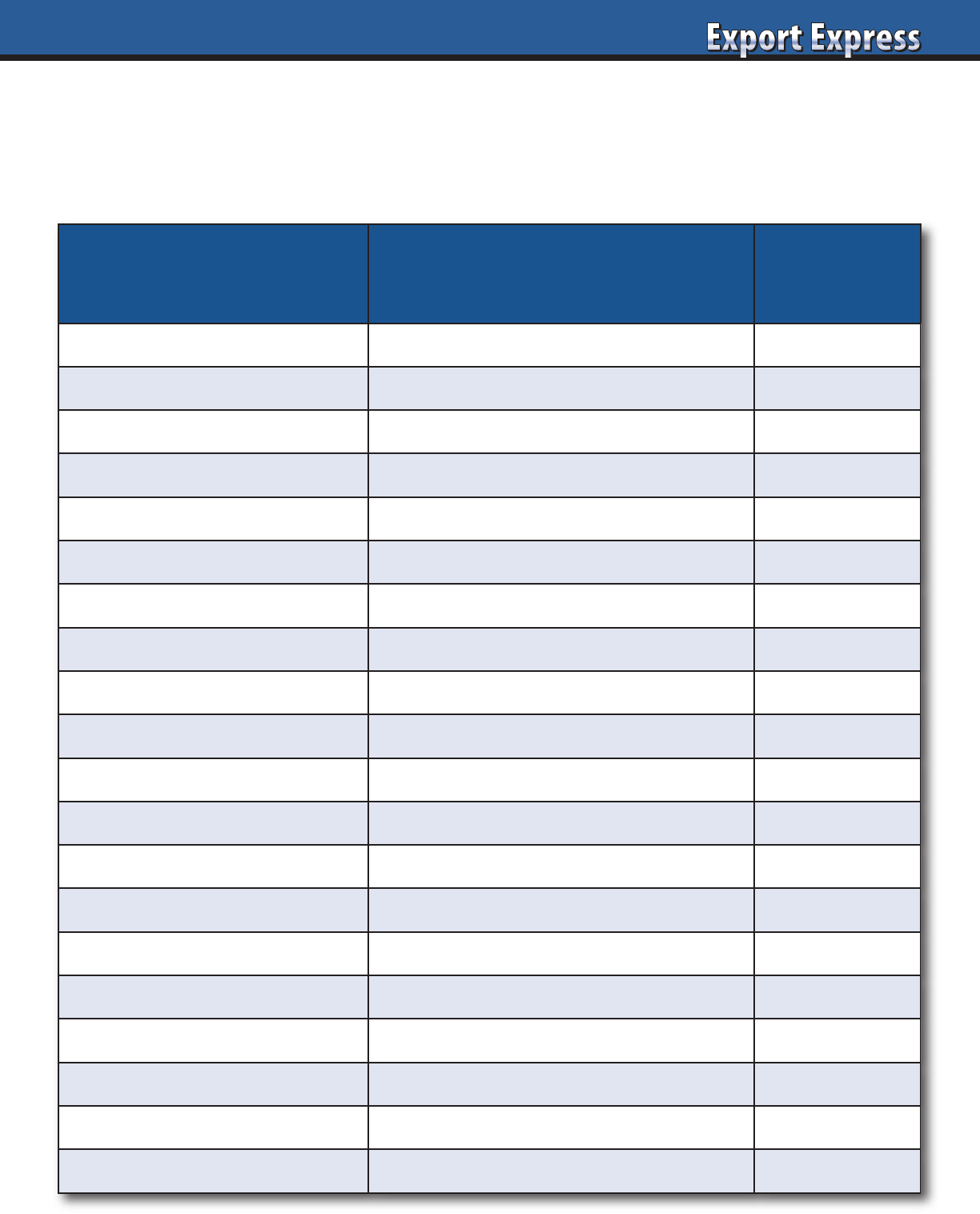
59
Distributor E-Commerce Scorecard
Assessment Criteria Considerations
Rating:
(10 = Best)
Distributor CEO Commitment • Investment, engagement, and patience
E-Commerce as Percent Total Sales • How big is e-commerce for distributor?
E-Commerce 2021 Growth Rate • Results: 2022 trends? 3 year CAGR?
2022 E-Commerce Growth Objective • Benchmark versus overall country growth
E-Commerce Team • Dedicated? Experience? “A Players?”
E-Commerce Analysts • Dedicated or shared?
Digital Marketing Manager • Experience? Budget? Examples?
Logistics: Fulfillment Capability • Solution to deliver by unit?
Top E-Commerce Customers • Coverage, penetration?
Amazon: Treated as Key Account? • 2021 sales, trends, items listed
# Items Sold: Your Brand • Listed items at major retailer like Amazon
# Items on Page 1 or 2: Your Brand • Listed items on page 1 or page 2?
Your Brand Share: Page 1 or 2 • Category share of items on page 1 or page 2?
Category Sales Ranking: Your Brand • Sales rank for key items
# Customer Reviews: Your Brand • Total number of reviews for your brand
# Positive Reviews: Your Brand • Number/percent of 4 and 5 star reviews
Reputation Management • Responsiveness to consumer feedback
Percent Third Party Sales: Your Brand • Sales trends through 3rd party merchants
Special Packs • Capability to create e-commerce packs
Pricing: E-Commerce vs. Retail • Pricing equilibrium: retail and e-commerce
E-commerce development and digital marketing expertise is a top priority.
International distributors must establish a plan and demonstrate patience.
Are your distributors e-commerce leaders, performers, or laggards?
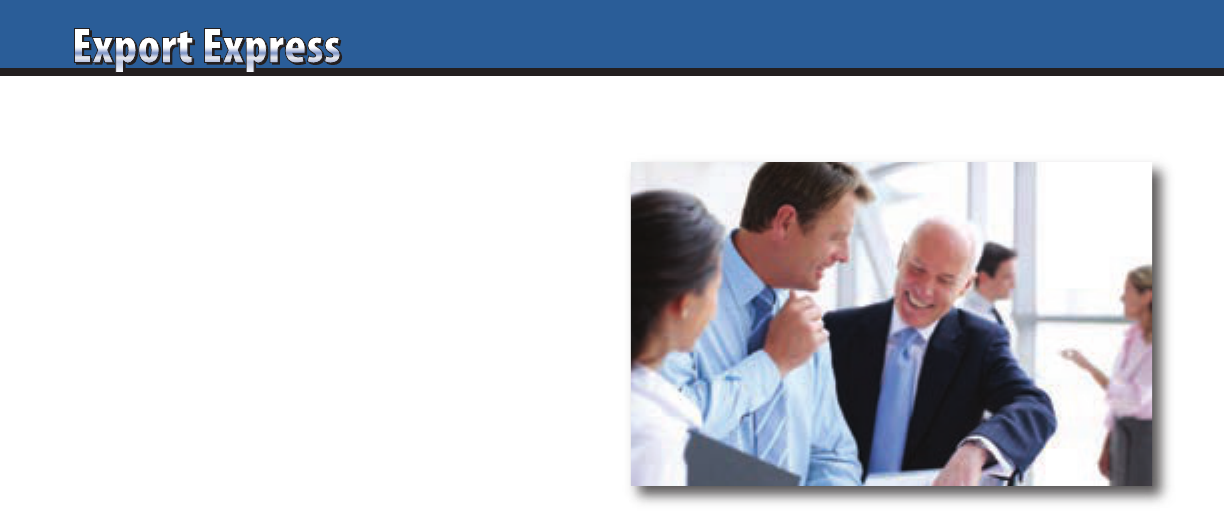
60
How well do you know your distributor’s CEO or MD? Many
exporters spend 80% of their interaction with their “brand
manager” at a distributor. Contacts with the CEO or managing
director may be limited to a 30 minute meeting during a market
visit or a phone call when something goes wrong. Brand managers
represent the day to day master of details for your business.
However, the CEO controls the purse strings, strategic direction
and resource allocation for the distributor’s stretched sales team.
Creating a good personal relationship with the distributor’s
leadership is critical to sourcing attention for your brand’s
priorities. Export Solutions shares our Ten Tips to develop a good
relationship with the distributor’s CEO or senior decision maker.
1. Quarterly Phone Meeting
Check in at least every three months to establish regular dialogue,
not just when a problem erupts. Phone topics can be strategic as
well as tactical. CEOs love to share perspective on their outlook
on the retail business in their country, successful programs being
executed by other brands, and planned capital investments in
distributor’s infrastructure and organization. Your agenda is to
leave the CEO with a clear message on the overall state of your
business and 1-2 top priorities to meet budget expectations.
2. Form CEO Advisory Council
Create a small, elite, advisory board of several of your distributor
CEOs. Meet two times per year, once in a resort location and
another time at your corporate headquarters. Meetings could
include outside speakers and access to senior industry leaders.
Establish a two year term, with rotating membership. Other
distributors should view this as an honor to be invited to be
on your CEO advisory council.
3. LinkedIn
Are you LinkedIn with your distributor’s CEO? LinkedIn
counts almost 820 million participants worldwide. A LinkedIn
relationship keeps your name “active” in the CEO’s bandwidth.
LinkedIn connections see your updates, activities, and news. A
well managed LinkedIn profile allows you to share articles and
insights to your network. Over time, this will allow you to learn
more about the distributor CEO and vice versa. Reminder:
distributors get nervous when they see their competition listed
as a new LinkedIn contact for you! Any distributor or CEO not
on LinkedIn may be “old school” or failing to network very hard
which in itself is an important insight.
4. Meet your CEO
Distributors love to conduct “top to top” meetings with your CEO
or leadership team. Invite your CEO to visit a market and request
the distributor owner’s full participation. It will be amazing to see
the market issues that get solved prior to the arrival of your CEO.
5. Speaking Invitation
Distributor executives can share broad perspectives on industry
observations sourced from a variety of suppliers. Most would be
flattered by an invitation to speak at your company’s annual sales
meeting or local industry conference. Suggested topics are the
distributor’s own success story, trends and innovation or another
area where the distributor has demonstrated a unique capability.
Organizing and hosting the speaker normally requires significant
interaction on speaking topics and logistics supplying further
personalized contact opportunities.
6. World Cup, Wimbledon, or World Series
Every country has a “hot ticket” for a big sporting event.
Many brands have sponsorship relationships for local teams.
Find out the distributor’s favorite sport or pursuit and find
a way to connect. Some distributor CEOs may appreciate an
invitation to the opera or a rock concert more than a Formula
One race. Make sure that it is a VIP experience, as a poor seat
can breed disappointment.
7. Ask for Advice
Distributor CEOs love to provide feedback. Share with them
prototypes for a new product or advertising campaign. Seek
to benchmark with the distributor’s other non-compete brands.
Ask for examples of other companies that they represent who
serve as “best in class” in supply chain, information technology,
or other functional areas.
8. Factory Tour
A well executed visit to your production facility represents a
perfect opportunity to demonstrate your category leadership
and commitment to quality. Couple the factory tour with a
meeting with your research and development team to impress
the distributor with your plans for the future. Finish the day with
a dinner with your company president or other senior executive
from your team. This will provide an excellent opportunity for
you to serve as a “host” and create lasting impressions of your
brand beyond numbers on a price list.
9. Annual Tradition
Create an annual event where the distributor’s CEO always
participates. This could be an invitation to your company’s
annual meeting or an activity linked to your brand’s big
promotion or peak seasonality. It is a normal request to have
the CEO’s full attention for at least one day per year.
10. Dinner & Golf
Golf still represents a great five hour bonding experience. Invite the
distributor to play at a famous course in your country. Dinner at a
first class restaurant with the CEO and their spouse may be a treat.
A personal relationship with the distributor’s CEO is good for
both parties. This eases business problem solving and sends a
message to the distributor’s organization that you have open
channels to top management. In times of career turbulence,
distributor’s CEOs can be great references for your job search.
Ten Tips: Connect with Distributor’s CEO
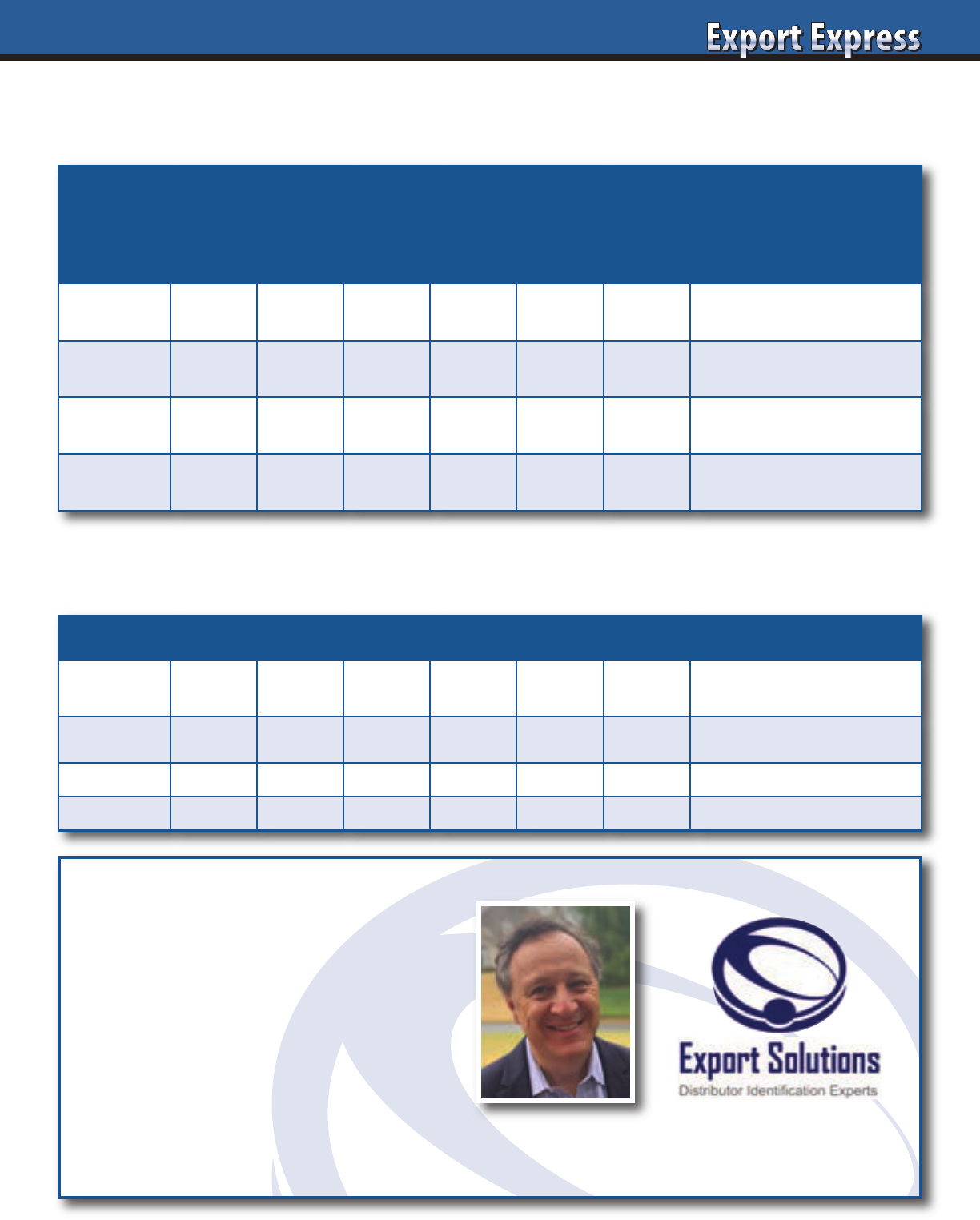
61
Retailer
Your
Brand
Share
Share
of
Shelf
Eye
Level
(yes or
no)
Next to
Brand
B
Key
Item
$2.99
Price
Gap vs.
Private
Label
Comments/Plans
Walmart SC 35% 42% Yes No 2.69 + .50 Shelf review September
Kroger 35% 28% No Yes 2.99 + .30
Increase shelf share to
minimum 35%
Albertsons 35% 25% No No 3.19 + .20
Increase shelf share to
minimum 35%
Publix 35% 45% Yes Yes 2.99 + .20
Maintain space in new
schematic
Country Shelf/Pricing Tracker – USA Sample*
*Complete for all countries/retailers
Country Listing Map – USA Sample*
*Complete for all countries/retailers
Retailer Stores SKU 1 SKU 2 SKU 3 SKU 4 SKU 5 Comments/Plans
Walmart SC 3,571 x x x
SKU 3 stocked at 2,000
Supercenters
Kroger 2,726 x x x x Category review November
Albertsons 2,278 x x x x New shelf set
Publix 1,300 x x x Present SKU 4: July
Talk to an Expert
• Find Distributors in 96 Countries
• International Strategy Road Map
• Fix Problem Markets
• Next Level Sales Management
• Export Workshops
• Motivational Meeting Speaker
Contact Greg Seminara at (001)-404-255-8387 to discuss your business development project.
www.exportsolutions.com
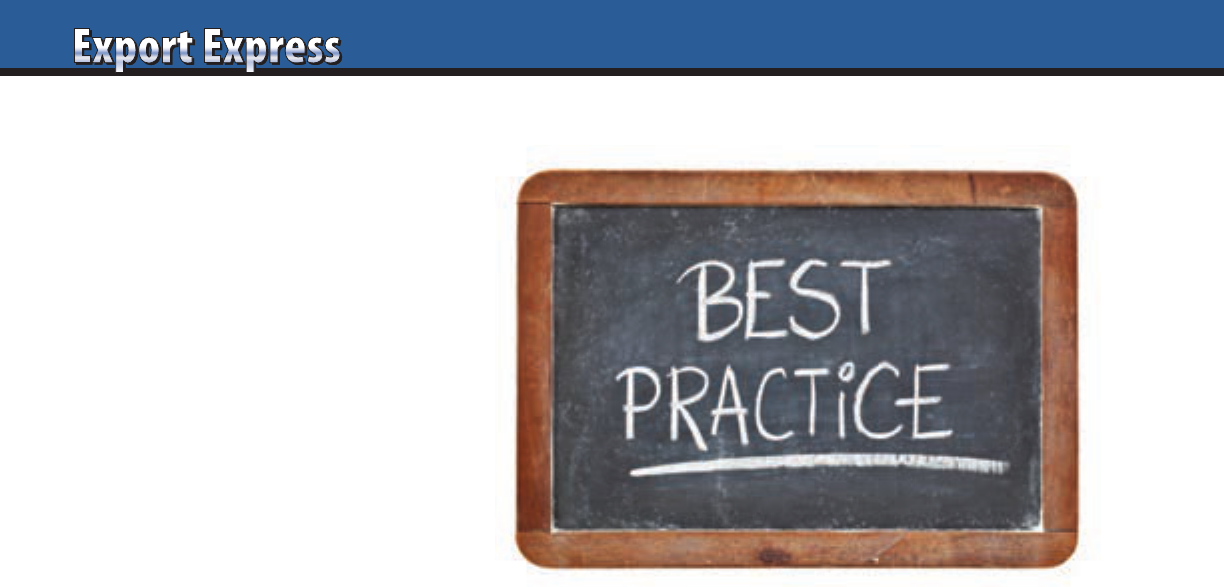
62
Many supermarkets offer sections
dedicated to products from foreign
countries. The “Homesick” shelf allocates
one meter, mini departments, represented
by iconic niche brands from the USA,
Germany, Italy, UK, Brazil, or Mexico.
Despondent expatriates rush to this
section hoping to find their favorite
candy or “sauce” brand from back home.
Often, this represents a “foot in the door”
and a starting place for your business
development. However, most brands
soon become frustrated with this remote
shelf location and plot strategies to enter
the main fixture to compete side by side
versus local competitors. Read Export
Solutions Ten Tips to gravitate from
“Homesick Shelf to Category Captain.”
1. Analyze the Data
Government census data (and embassies)
can reveal the number of your citizens
in a foreign country. For example, in the
USA there are many Italians and Brits in
New York, Germans in Pennsylvania and
Mexicans in California. Tourism statistics
also supply guidance where to find your
current customer base overseas. Current
sales per capita figures indicate countries
where your brand has traction beyond
your core expatriate base. This analysis
provides you with the first clues on where
to focus your investments.
2. Research Local Preferences
A food scientist or market research
company could study local food
preferences and your product portfolio.
Are there options to incorporate your
brand into traditional recipes? Consider
adapting your core product line to meet
local flavor preferences. Pringles built
exceptional sales and excitement by
launching innovative new flavors such
as Jalapeno, Curry, Grilled Shrimp,
Ketchup, and Pizza.
3. Test “Higher Spend” Marketing Plan
Everyone knows the fundamentals of
brand building: sampling, billboards,
radio, and social media. Usually,
exporters may be hesitant to invest
in advance of sales. However, it may
be “low risk” to pick one small-medium
size country to test a targeted marketing
support plan.
4. Hire a Local Manager
It’s tougher and tougher to manage
exports via remote control from company
headquarters. Smart exporters are
opening offices in regional centers like
Shanghai and Dubai for placement close
to the action. You have a choice to send
a missionary from company headquarters
or a local hire who understands the
language, market, and how to get things
done at store level.
5. Focus on Upscale Supermarkets
Identify the “upscale” supermarket chain
in a country. Their consumer base is likely
more adventurous and boasts higher
purchasing power. Invest to be a category
leader at these high profile customers.
Often, middle income supermarkets look
to these upscale chains for assortment
inspiration. In the USA, think of HEB and
Whole Foods first, not Walmart. In the UK,
look to Waitrose vs. Morrison’s. The same
analogy applies to every market.
6. Manufacture in Country
Eliminating overseas freight charges and
duties may allow you to compete more
effectively on a price basis. Labeling in
the local language may be a plus. A small
factory also establishes you as a member
of the community with employees that
will create goodwill. A manufacturing
site may be complex and expensive, but
co-packers may represent another option.
7. Move to a Bigger Distributor
Frequently, a new brand will align with
a small distributor consolidating brands
from one country. This is a logical and
viable strategy to get started. However,
I’ve witnessed countless cases where the
brand’s aspirations and requirements
outstrip the capabilities of the small
distributor. Brands may consider moving
to a more powerful distributor, with
deeper brand building capabilities.
Warning: be prepared to invest more
with a big distributor or you risk losing
ground as unsupported brands may get
lost in the mix. Export Solutions’ database
tracks an average of 85 distributors
per country.
8. Sponsor a Sports Team or Charity
Fans everywhere love their teams.
Alignment and support of a local sports
team yields dividends. Pick a charity
that contains a meaningful link to your
product or target consumer. Many
supermarket chains have a favorite charity
providing a route to collaborate with a
trading partner for a worthwhile cause.
9. Bring Your Team
Retailers are desperate for fact based
consumer insights. Bring your research
and technical experts from headquarters
to visit overseas retailers and distributors.
Let them “wow” them with their category
knowledge. Note: you may need to coach
your experts on appropriate messages as
sometimes foreign buyers don’t care how
you operate in Chicago or London.
10. Create an Anniversary Event
Many brands have been available
in foreign markets for 10, 20, 30 years
or more. Why not design an anniversary
event commemorating “25 years in the
______ Market.” Elements could include
special packages, consumer contest,
public relations, charitable donations,
and a celebratory dinner for your
retail customers.
Ten Tips: From Homesick Shelf to Category Captains

63
Retail stores serve as showcases for our products. This is
the point of sale where inventory is translated to a consumer
purchase. However, many manufacturers spend the bulk of
their energy against securing the headquarter listings, chasing
shipments, while store conditions flounder at the middle of
the priority list.
Increased focus on in-store conditions is critical because it
delivers benefits every single day. Listed below are Export
Solutions’ tips for winning the battle at the retail shelf.
1. Define and Publicize Your Shelf Objectives
The first step is to insure that each member of your sales team
is “crystal clear” on your brands in-store objectives. Create a
shelf conditions standards book, including photos that can be
distributed or shared online. I’ll always remember a store visit
in Cordoba, Argentina when I was a manager for Clorox. The
distributor representative proudly brought me to his “best” store.
The store was not bad, but below objective because our brand
only owned 50% of shelf space versus our 65% market share.
When I mentioned my disappointment, the representative
accurately claimed that “no one had ever shared” this shelf
objective with him before.
2. Create an Objective Mechanism to Evaluate Every Store
How did your brand look in the last store visited? Was it an
“A,B,C, D, E, or an F?” Why? Establishment of a grading system
allows you to provide an objective report card for each store.
Normally, a system of awarding points for share of shelf space,
retail availability, and off-shelf merchandising is simple to execute.
3. Focus on Basics: Distribution, Availability, Shelf Space,
Shelf Position, and Off-Shelf Merchandising
All authorized brand sizes should be tagged and in stock. Brand
should maintain share of category space equivalent to or greater
than market share and placed next to the targeted competitor.
Incremental points should be awarded for off-shelf displays or
secondary locations. Fair pricing is also important, but normally
tightly controlled by central buying.
4. Establish a Baseline for Store Conditions
Introducing new store conditions tracking metrics can be a
shock to your retail sales team, as existing conditions are likely
far below minimum acceptable standards. The idea is to create
a baseline of performance and measure monthly or quarterly
progress towards objective.
5. A Market Wide Retail Audit Creates an Accurate Benchmark
This requires the participation of 2-4 people (depending on
market size) from your company matched by an equivalent
number of people from your distributor/retail sales team.
Each two person team is committed to spend a full day at retail
and is assigned a certain city or section of town. Teams can
usually visit 10-15 stores per day giving you a broad spectrum
of results across the market. Each store should be measured by
the same criteria. Ideally, the entire group should meet at the
end of the day to share observations and next steps. Audits can
be tied into a major sales drive such as a new item rollout, peak
seasonality etc. A good distributor will work hard to fix problems
in advance of a previously scheduled market wide retail audit.
6. Sponsor a Retail Sales Contest
This retail contest can be tied to the launch of new retail sales
objectives or a “grading” system. Structure the contest for
maximum number of winners. Reward most improved from
a pre-contest baseline. Contest should be one-two months in
duration to optimize excitement and focus. Get creative with a
theme such as “A Room with a View” with first prize being an
overnight stay at a 5 star hotel room with a view for the sales
representatives stores have the best “view” for your brand.
7. Retailers Schematic/Planogram Serves as the Official Record
Request that each distributor forward the planogram for each
of the 2-4 largest retailers for each market. Reward key account
sales people for implementing changes in the official planogram.
8. Provide at Least One Shelf Objective for Every Month
A monthly objective for your brand or company forces the retail
team to look at your brand on every store visit. The objective
can be oriented against moving your brand to an eye level shelf,
improved shelf space allocation for a particular size/flavor, or
against reduced out of stocks. Track the objective with a question
that can be answered by “yes/no” or a numeric response. This
will allow you to participate with software on handheld retail
reporting devices.
9. Focus Against Accounts With Problems With Retail Execution
My experience tells me that some retailers are better at maintain-
ing attractive category showcases and in stock conditions. Other
high volume hypermarkets are plagued by frequent “wiped out”
categories. Certain accounts prevent representatives from
touching the shelf due to union policy. Persistent out of stocks
may reflect insufficient shelf space, low warehouse inventory,
or problems with automatic replenishment systems.
10. Visit Stores on Every Trip to the Market
Schedule time to work with the retail sales manager. Your
attention to store conditions will linger after your plane departs.
“Retail is detail” and the “distributor respects what the brand
owner inspects” are well known comments on retail. Send a
signal that you are focused on your retail showcase and watch
your brand presence improve!
Ten Tips – Winning the Battle for Retail Shelf Space
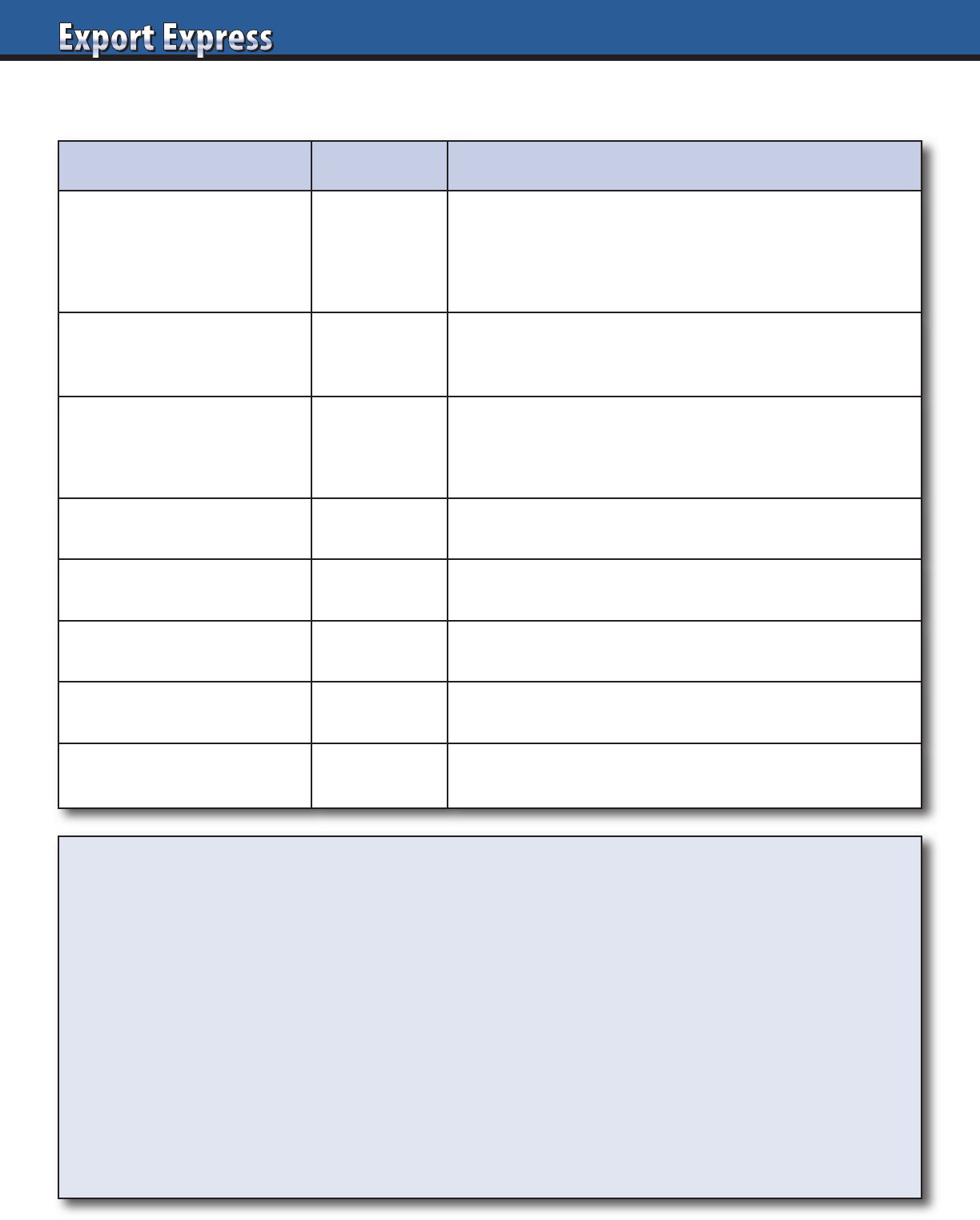
64
Criteria
Rating Evaluation Factors
Shipment Results
Overall growth for our industry in your market?
Distributor company wide sales performance (all brands)?
Distributor sales results for my brand?
Change vs. benchmarks?
Brand Performance
Key brand performance versus overall category.
Shipment growth, market share, weighted distribution.
New item success.
Key Account Results
Results at top 3-5 accounts (or channels).
Improvements: new items, shelf presence,
merchandising.
Are we getting “fair share” of retailers growth?
What Worked?
Strategies or performance that achieved results.
Ideas that delivered incremental sales.
Key Issues?
Problems or barriers to achieving results.
Pricing, investment, competition.
People
Performance by key people touching our business.
Organizational changes? Who made a difference?
Financial
Distributor’s financial health. Planned investments.
Efficiency opportunities in Partnership.
2022 Requirements
Resources required to achieve 2022 shipment expectations.
Critical activities, timelines, changes to structure/plan.
Distributor Market Review
3 7 Billion people live outside Europe and North America! Everyone eats!
3 Follow Global Retailers: Walmart, Carrefour, Costco, Metro
3 USA Opportunity is “Bigger than BRIC” for most international brands
3 How do you win in your home market? Apply the same principles to large foreign markets:
Research, international factories, local teams, plus investment in Marketing and Trade support
3 Best way to predict distributor success is to evaluate in store visibility for his current brands
3 Big difference between having “any distributor” and a “Best in Class” partner
Greg's Guidance: New World – New Business

You can usually spot an export manager in the fast track lane at
airport security with the diamond level frequent flyer card and
bulging passport. Many of us spend half of our business lives on
the road, serving as roving brand ambassadors for the companies
that we represent. Our friends envy this glamorous life, little do
they know how punishing it is to take red-eye flights and eat
mediocre airport food. While this lifestyle appears as normal for
most of us, it makes sense to review some fundamental ideas on
how to obtain the most productivity from our companies’
investment in our business travel.
1. Define Purpose for Each Market Visit
Export Solutions identifies seven management roles for
a market visit:
Doctor: visiting to handle a problem
Architect: design new plan for achieving objectives
Coach: trip to teach distributor about your brand
Babysitter: follow up on key priorities
Gardener: cultivate new business and relationships
Fan: cheer good distributor on to great results
Tourist: we enjoy the country
In reality, a productive visit encompasses parts of all of the
above roles.
2. Schedule: Minimum Six Weeks Lead Time
Organize your visit with six to eight weeks lead time. This
guarantees that all key people will be available during your visit.
It also reminds your distributor that you are coming soon and
there is time to fix problems before
your arrival.
3. Agenda and Analysis
Send market visit agenda four weeks
in advance. Review progress versus
key initiatives and annual objectives.
Obtain updated “Listing Maps,”
schematics, pricing, and
merchandising plans. Analyze
syndicated data (Nielsen), shipment
trends, and marketing spending.
What has been achieved since your
last visit?
4. Serve as Category Expert
Distributors appreciate brand
owners that share category expertise.
What are the global and regional
trends for your category? Any
product innovation from your
company or competition? Are there
success stories from other markets or
common retailers that you can share?
5. Store Checks: First Priority
I am a big advocate of checking stores
as soon as I get to the market, before
formal office meetings. This allows
me to capture the rhythm of the market, category and my own
brand performance in advance of philosophical meetings that
may ignore “Retail Reality.” Request that the retail sales manager
accompany you to secure his “pulse” of the market. Visit stores in
different parts of town. Always use the retailer’s schematic as the
“official” record. Beware of stores that look “too good to be true.”
6. Build Relationships with Entire Team
Frequently our visit is concentrated on meetings with the brand
manager and a 15 minute chat with the distributor CEO. Visit
the distributor’s warehouse at least once per year. Actual
warehouse inventory supplies an accurate snapshot of their
entire business. Schedule time with the finance manager. Better
to get to know him in advance of the inevitable problem. Treat
the administrative team to a casual lunch to say thanks. We know
who keeps the ship running! Invite the Distributor owner or MD
to dinner. The best business insights are obtained after 9:00 pm.
7. Customer Visits
Schedule an annual business review or participate in a new
product launch to serve as a category “expert.” Volunteer to
try to solve problems, but avoid situations where the buyer
tries to extort money from you. Meet with other people at the
retailer beyond your buyer. Most retailers have Marketing,
Merchandising, Internet Sales, and Supply Chain managers
interested in sharing insights with overseas suppliers.
8. Brainstorm New Ideas
Allocate some time to think about new ways to achieve your
business results. Too many times we get in the repetitive rut of
offering the same programs year after year. What ideas have
worked in other markets or for other
brands that the distributor represents?
Co-promotion ideas? Charity tie in?
How can we generate positive social
media buzz?
9. Getting a Distributor to Love Your Brand
Each market visit is a valuable
opportunity to cultivate a powerful
relationship. We want the distributor
to maintain our priorities as “top of
mind” after we are dropped off at the
airport to return home.
10. Trip Report – Thanks
The best trip reports are the ones that
are written on the plane ride home
when all issues are still fresh. Say
thanks and send a balanced report
of achievements and opportunities.
Remember that all accomplishments
and problems are a joint responsibility
of both the brand owner and
distributor. A detailed report with
clear and measurable next steps
serves as the official benchmark
for your next trip!
See you in the airport!
Ten Tips: Improving Market Visit Productivity
65
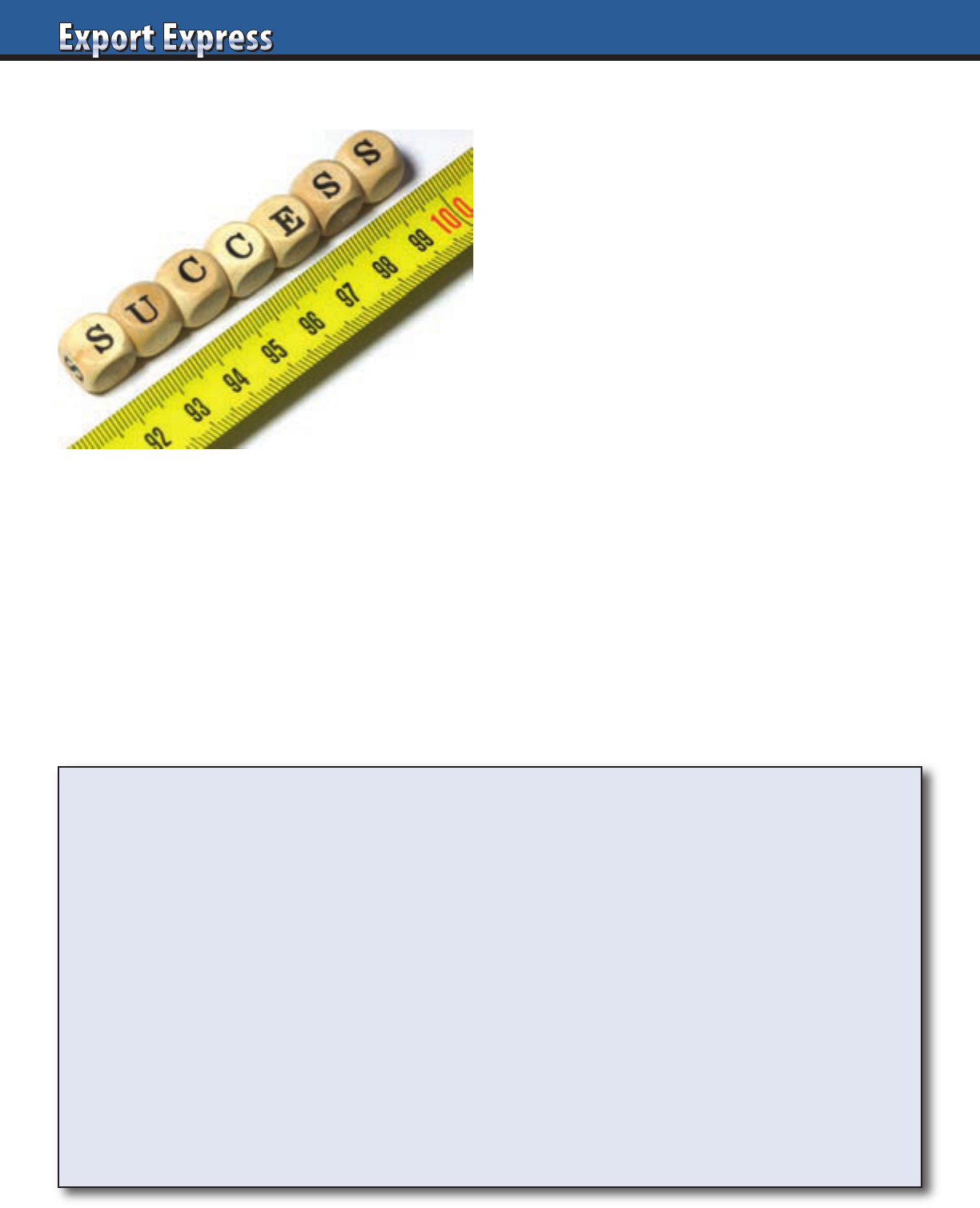
66
Every job performance review measures results versus
shipment objectives. In the export world, shipments are the
key indicator of success, but can be manipulated by inventory
sitting idly in a distributors or customers warehouse. In
reality, the way to improve shipment results is to attack and
focus on causal factors that drive the business as well as other
metrics of success. Export Solutions has worked with several
of our consulting clients on developing scorecard metrics to
calibrate progress in the marketplace. Listed to the right are
metrics for measuring Export Success.
1. Market Share and Market Share growth
2. Per Capita Consumption of your product
3. Value/Volume Sales Trends (dollar/euro sales,
units sold/kilos sold, etc.)
4. Product Availability Grid Score – This measures authorized
items listed versus potential listings at most important retail-
ers in a market or territory. This score should be weighted
based upon a retailers share of market.
5. Promotional/Marketing Spending as a percent of Sales
Volume. Case rate spending levels
6. In Store Presence Grade/Trends – This is for brand owners
that employ a system of grading each individual store
7. Sales growth in excess of overall market growth. i.e., Market
is growing 5% and your brand grows 10% , so your brand
is growing at +5 points versus overall market growth
8. Share of Category assortment versus market share
Share of Category shelf space versus market share
Share of Category Displays versus market share
Share of Category Promotion Activity versus market share
9. Weighted Distribution, Trends – “# doors of availability,
by item”
10. Out of Stock levels and trends
11. Market Profitability – Margin, Total Value, Trends
12. New Product Launch Results– sales, weighted distribution,
market share
13. Days Outstanding/Trends, Bad Debt as a percent of sales.
Beyond Shipment Results – Measuring Export Success
Greg’s Guidance: Export Strategy 2025
3 What are your Lessons Learned?
3 What are your Core Competencies?
3 Which countries offer exceptional growth for your category?
3 How much is your company willing to invest?
Marketing, People, Promotion
3 What will our organization need to do differently?
3 What are realistic measures and benchmarks?
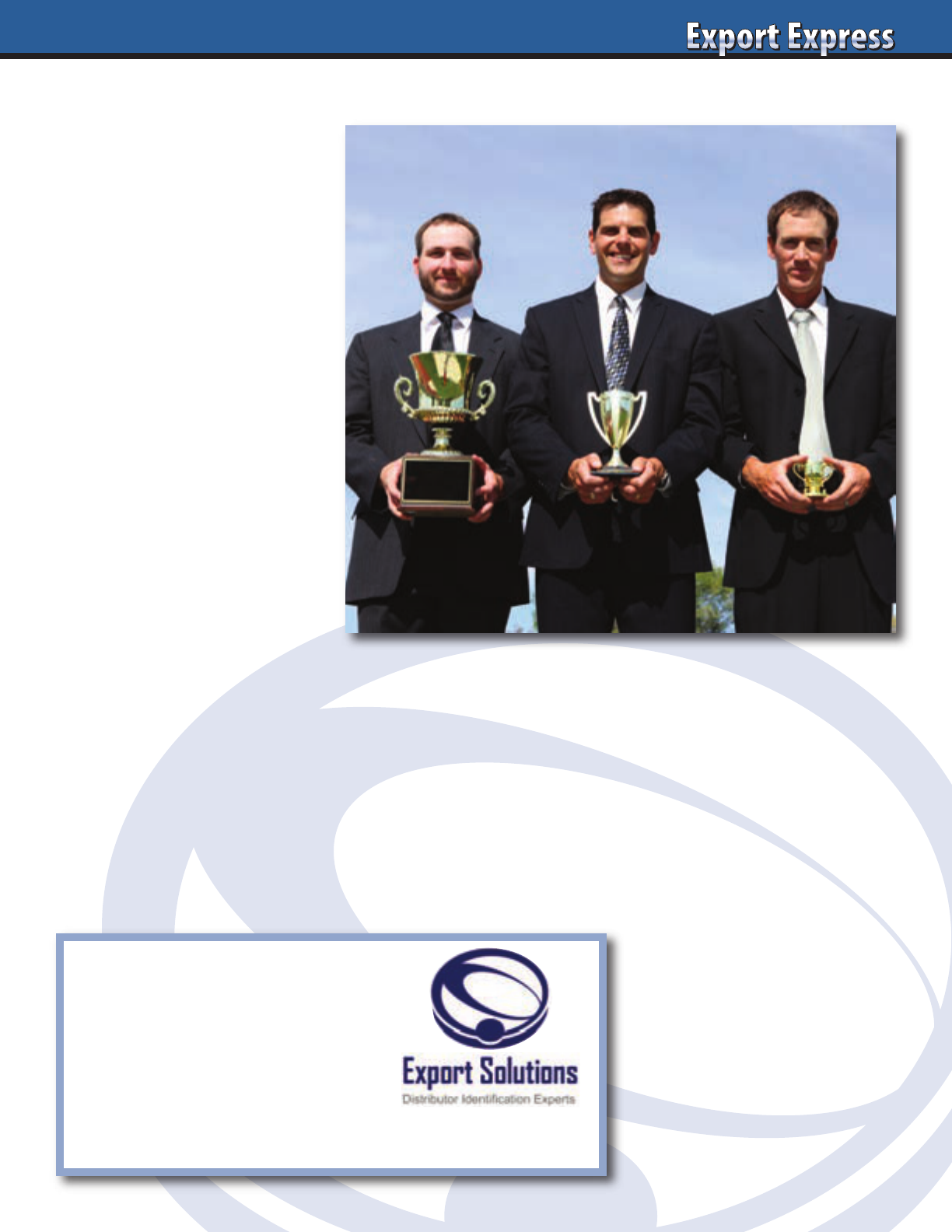
Every supplier should organize a contest
to recognize their Distributor or Sales
Team of the Year. This strategy has
proven to be one of the most efficient
and effective business building ideas.
Sales People Love to Compete
Let’s face it. Sales people are competitive
and if they are not…you may be aligned
with the wrong sales team. Winning
“Distributor of the Year” validates that
they are a “winner” and truly are the
best at what they do. Conversely, under
performance signals to the participant
that they need to act quickly to avoid
finishing at the dreaded bottom of the
heap. Distributors, Importers, Brokers
and sales teams everywhere burst
with pride when they show off their
Distributor of the Year award, even
if it is for one of their smaller brands.
What works?
This depends on the size and scope
of your business. Global brands can
recognize winners for each continent:
Asia, Europe, Africa, and Americas with
an overall international winner. Brands
with a narrower presence can base their
awards upon a region of their business:
For example, you could have an overall
winner for Latin America based upon
regional winners for South America,
Central America, and Caribbean or in
Total Europe with Western, Central,
Southern & Northern Europe competing.
Contest Rules and Structure
Announce the contest in January.
Normally, I like contests that are 50%
dependent on shipment performance
versus quota, 25% on achieving new
product launch acceptance (or other
major initiatives), and 25% for intangible
activities: Breakthrough performance,
success despite adversity etc. The key
is to strike a balance between shipments
(what counts) and other factors as in
many cases shipments don’t tell the
entire story. Publish periodic updates and
rankings. This pushes leaders to remain
focused and laggards to increase intensity.
Other Awards
Some suppliers extend the contest to
include “Retail Field Sales Team of the
Year”, New Distributor of the Year, Most
Improved, and even award retailers for
supportive performance. Others institute
a program that rewards “runners up”
or honorable mention. In general,
structure the contest to maximize the
number of winners.
Prizes and Recognition
The prestige of winning Distributor
of the Year is the biggest incentive. I’ve
witnessed sales organizations delivering
incredible results to win a plaque valued
at $50. The award winner should always
be recognized with a plaque or trophy
that can be permanently viewed in their
board room or waiting room. The award
should be accompanied by a press release
that the distributor can share locally
with their trade magazines. Larger
manufacturers may want to host a local
dinner or party for the entire team of the
winning organization. Smaller suppliers
may reward their Distributor of the Year
with a trip to the supplier’s home country
with a dinner with the CEO or company
owner. Announcing the award at an
annual meeting, distributor conference, or
at a major trade show maximizes impact.
The key is for all competing distributors
to commit that “next year they will win
Distributor of the Year.”
Sell to 96 Countries
9,200 Consumer Products
Distributors
Free Sample Country List
www.exportsolutions.com
Distributor of the Year
67
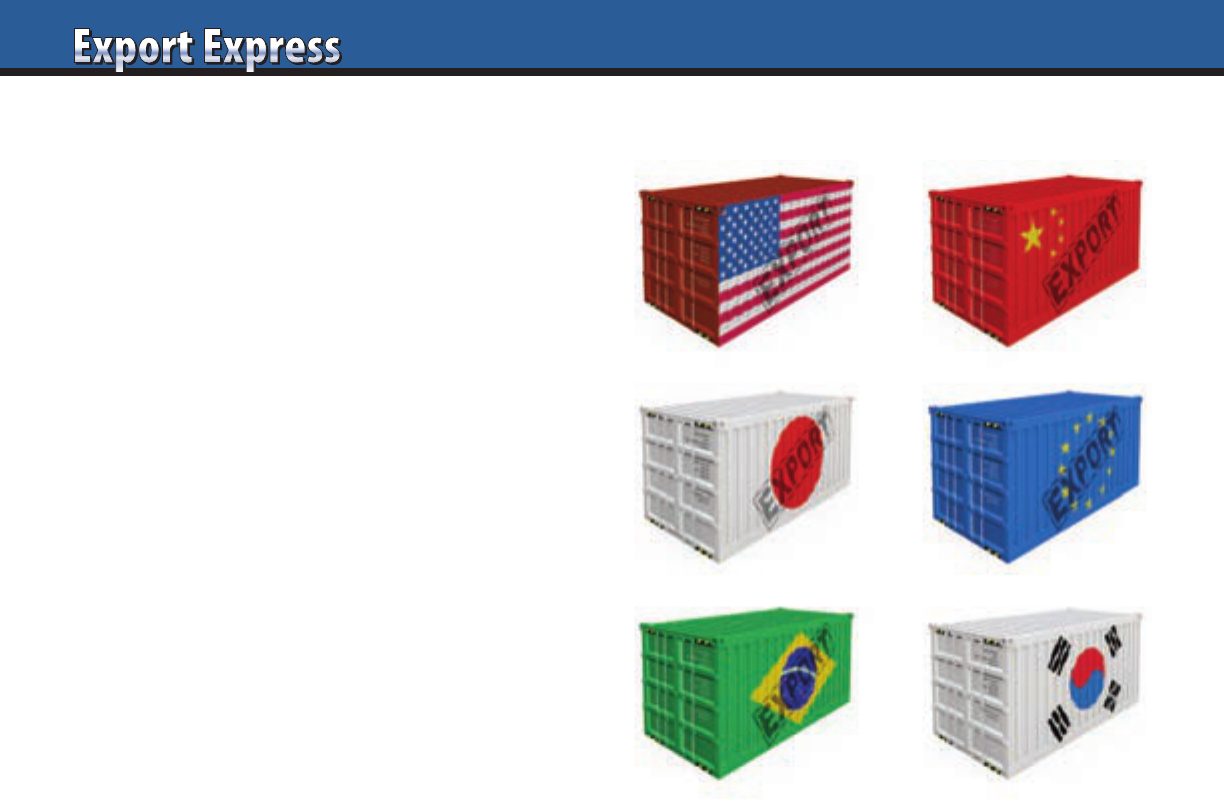
68
Most companies partner with consolidators to source incremental
business from tough to reach geographies. Consolidators are local
companies that group different products from one country into
one container. The consolidator then sells to a list of customers
that may include distributors and retailers. Consolidator business
is typically easier to handle, as you ship existing packages to a
warehouse in your home country and receive payment in local
currency. This practice generally functions well, but you must
balance additional shipments with “loss of control” and
“diverting risk.” Below are Export Solutions’ “Ten Tips”
for building your business through consolidators.
1. Use Consolidators!
Consolidators represent an efficient route to market for new
exporters, niche brands, or for hard to access regions such as
the Middle East.
2. Fee Structure
Consolidators need to make money too! Normally, their fee is
built into a cost calculation to the retailer or offshore distributor.
10% is an average consolidator margin, but there are many
variables. Note that the consolidator margin plus an extra
logistics stop will ultimately drive your price 15% higher
to the consumer than a “direct to distributor” model.
3. Avoid Region Wide Appointments
Consolidators serve as options for islands in the Caribbean or
small countries in the Middle East. However, you should rarely
give them responsibility for bigger markets like Saudi Arabia or
Puerto Rico. Better to deal directly with distributors in strategic
countries. Use the cost differential to invest in brand building
or lower retail prices.
4. Pricing
Typical pricing to consolidators is around 90% of standard list
price. This will provide a discount to compensate for promotion
pricing activity, but not a wide enough gap to risk diverting.
Good consolidator partners will share a transparent price
calculation model from factory gate to overseas store shelves.
5. Which Distributors Form the Consolidators Customer Network?
Part of your assessment process will be to analyze representative
distributors used by a consolidator. You need to decide if the
consolidator’s typical partners are a good fit with your brand
representation requirements. Note: some consolidators “guard”
their distributor lists. However, understanding their customers
is a critical step in assessing their capabilities.
6. Reference Check New Consolidators
It is a standard practice to reference check consolidators.
Many will accurately claim representation of famous brands.
However, the scope of partnership may actually be quite
limited. Ask references about years of partnership, results,
and countries/brands in the consolidator coverage agreement.
7. Mark Packages “For Export Only”
Diverting discussions are significant distractions for most export
managers. Consolidators may be tempted to divert, as they
typically purchase standard packages and receive delivery in
the home country. Labeling packages “For Export Only” or
even “Export” diminish the likelihood that your brand will
be diverted and reduce complaints and accusations from your
national sales team.
8. Beware of Local Laws
Consolidators are an integrated solution, which eliminates
measurable paperwork and stress from an export program.
However, this does not release the brand owner from obligations
to comply with local laws on labeling and distributor contracts.
Naturally, you should also maintain a contract with your
consolidator to guide terms and conditions of your relationship.
9. Request Listing Maps
A frequent complaint is that manufacturer’s lose control of their
export business when dealing with a consolidator. Brands receive
market level shipment reports at best, with limited or no data on
listings by retailer, pricing, or merchandising activity. Request
that your consolidator provide a “Listing Map,” by country at
least twice per year.
10. Periodic Visits to Consolidator Territory
Export managers should conduct market visits to leading
countries managed by their consolidator. Check stores, meet
with distributors, understand growth opportunities. These
programmed visits are likely to be positive, but send a signal
to the consolidator that you are an active partner.
Ten Tips: Best Practices for Using Consolidators
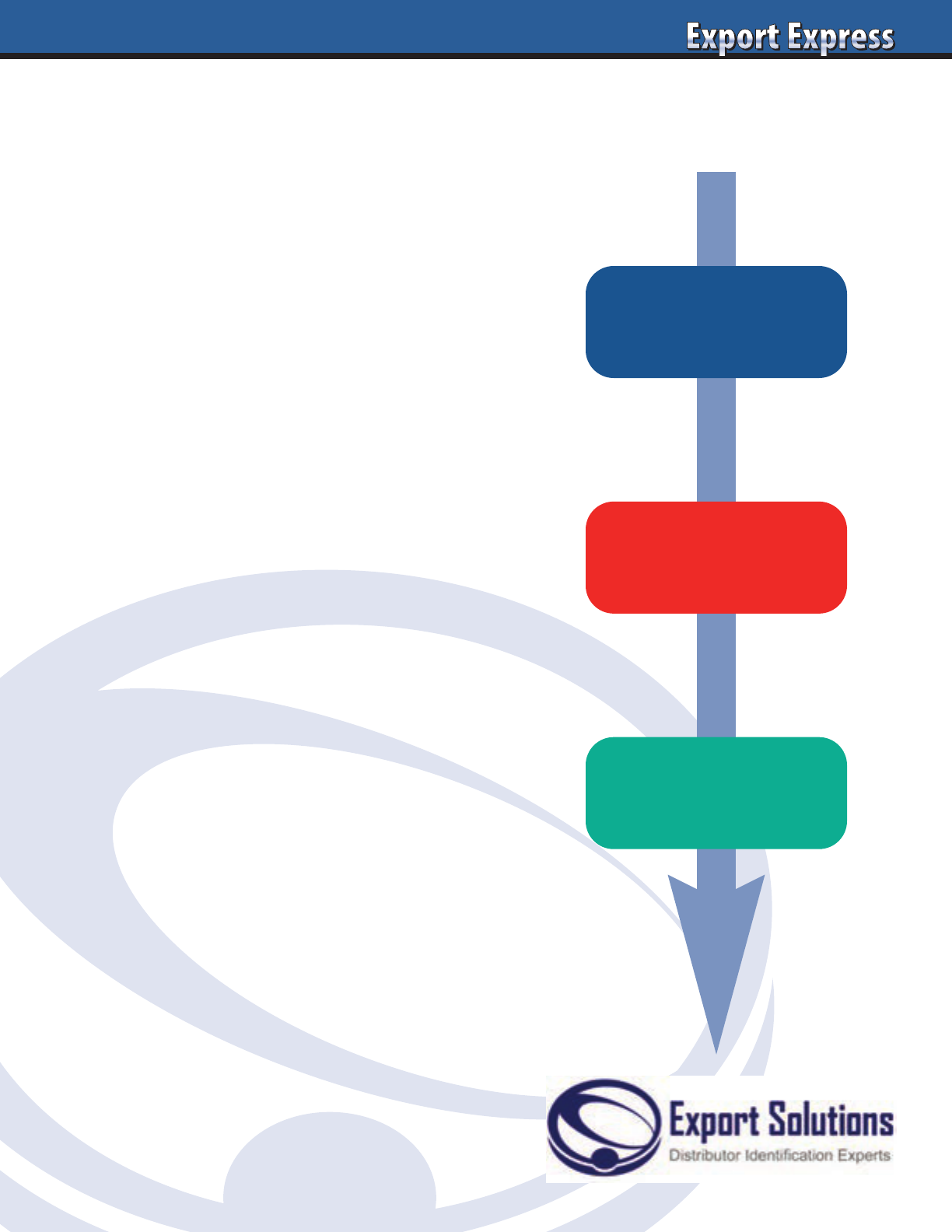
69
Take Your Export Business to the Next Level
Export Solutions Services
Current Business Assessment
Opportunity Gap Analysis
Customer/Channel Prioritization
Broker, Importer, Distributor Identification
USA Entry Plan
Measures: Concept to Shelf
Consumer/Trade Promotion Plan
Connect with Channel/Retailer experts
Team staffing and recruitment
Double Your Business Plans
“Spend time Selling to Distributors
versus Searching for Distributors”
www.exportsolutions.com
Analysis
Partner
Sell
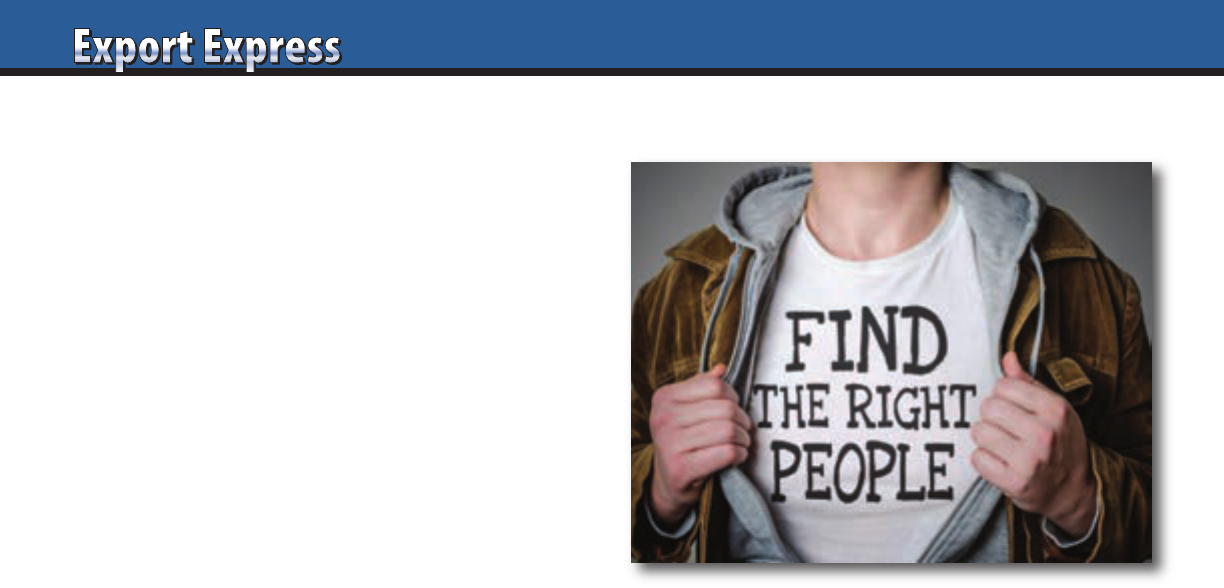
Identifying strong distributors is a critical step in developing your
export business. There is a “science” to partner selection. In some
cases, manufacturers choose the easy way out, electing to work
with small, undercapitalized companies that approach them
randomly at a trade show or via email. Many company’s
distributor networks contain these small, enthusiastic distributors
who aggressively pursued your popular brand, but rarely deliver.
Give them an “A” for effort, but distributor search must include
proper due diligence of all potential candidates, not just the small
one chasing you.
Do you believe that the best distributors are waiting in line
at trade shows or speed dialing export managers? The most
powerful distributors are busy building brands for their existing
partners. However, all distributors are open to representation
of new suppliers. In fact, many of the more strategic distributors
assign a brand manager to new business development. This senior
person is dedicated to evaluating new company representation
inquiries like yours.
Export Solutions’ ten step distributor search process is a proven
method for identifying and selecting distributors that are the right
fit for your brand’s marketplace ambitions. Listed below are some
practical tips on selecting the right company to optimize your
business in a new country.
Establish Partner Selection Criteria
What are the key attributes of your most successful distributors?
Category specialization? Multichannel coverage? Synergy with
related brands? Choosing a large, “best in class” partner versus
a “small, hungry” company willing to pioneer a new brand is
an important preference.
Evaluate Multiple Candidates
Create a large group of potential candidates. This could include
distributors or local producers of related products. Include
qualified candidates that have emailed or visited at a trade fair.
Highlight companies that are specialists in the market sector
that you are aiming at. Export Solutions streamlines this process
with our leading distributor database containing an average of
85 distributors per country.
What is Your Story?
Manufacturers need to supply a compelling story on why the
distributor needs to invest his money and team resources into
your brand. Distributors search for companies with innovative
products back by marketing support. How much money can
the distributor make representing your brand?
Determine Candidates’ Preliminary Interest Level
Send a brief summary of your product proposition and company
credentials to the 5-10 most promising candidates. A follow-up
phone call to your top candidates is an essential personal
connection. Distributors expressing an interest should complete
a brief company overview recapping their corporate capabilities:
annual sales, organizational model, coverage, key principals, etc.
Interview 3-5 Candidates
Normally, we recommend interviewing at least three candidates
depending on the size and complexity of a country. Schedule the
meeting 4-6 weeks in advance. Provide a specific agenda at least
three weeks in advance, including pre-work such as category
market analysis. Meet the distributor’s team that would work
on your business, as well as senior management. Always meet
at the distributor’s office for clues on company culture, scale,
and capabilities.
Independent Assessment of Performance for Existing Brands
Visit supermarkets and other retailers to observe category
conditions. At the same time, evaluate each candidate’s
performance for his existing clients. Do his current brands
maintain a strong presence in the market? Or are his brands hard
to find on the shelf? Complete these visits to leading retailers
independently, as an accompanied trip may lead you to check
stores which may not be representative of marketplace reality.
Prepare Distributor Assessment Grid
Create a list of key questions to ask each candidate. Topics could
include local category dynamics, cost of entry, and distributor
success stories. Create a standard grid to evaluate and compare
all candidates on a common platform. Contact us for our free
Distributor Search Guide with assessment grids, agendas, sample
questions and templates for every aspect of the distributor
search process.
What is the Distributor’s Plan?
If selected, what is the distributor’s plan? Customer targets, price
calculation, marketing plan, volume expectations? Timeline and
benchmarks? Key issues? Resources required? Does the plan
align with your vision and the size of the market opportunity?
Future
Companies conduct rigorous assessments before hiring new
employees. A higher level of intensity must be displayed during
the distributor search process When you choose a distributor,
you are selecting a whole team to represent your company in
a country, not just one individual.
Export Solutions motto:
Select your distributors, do not let your distributors select you.
Select Your Distributors, Do Not Let Your Distributors Select You!
70
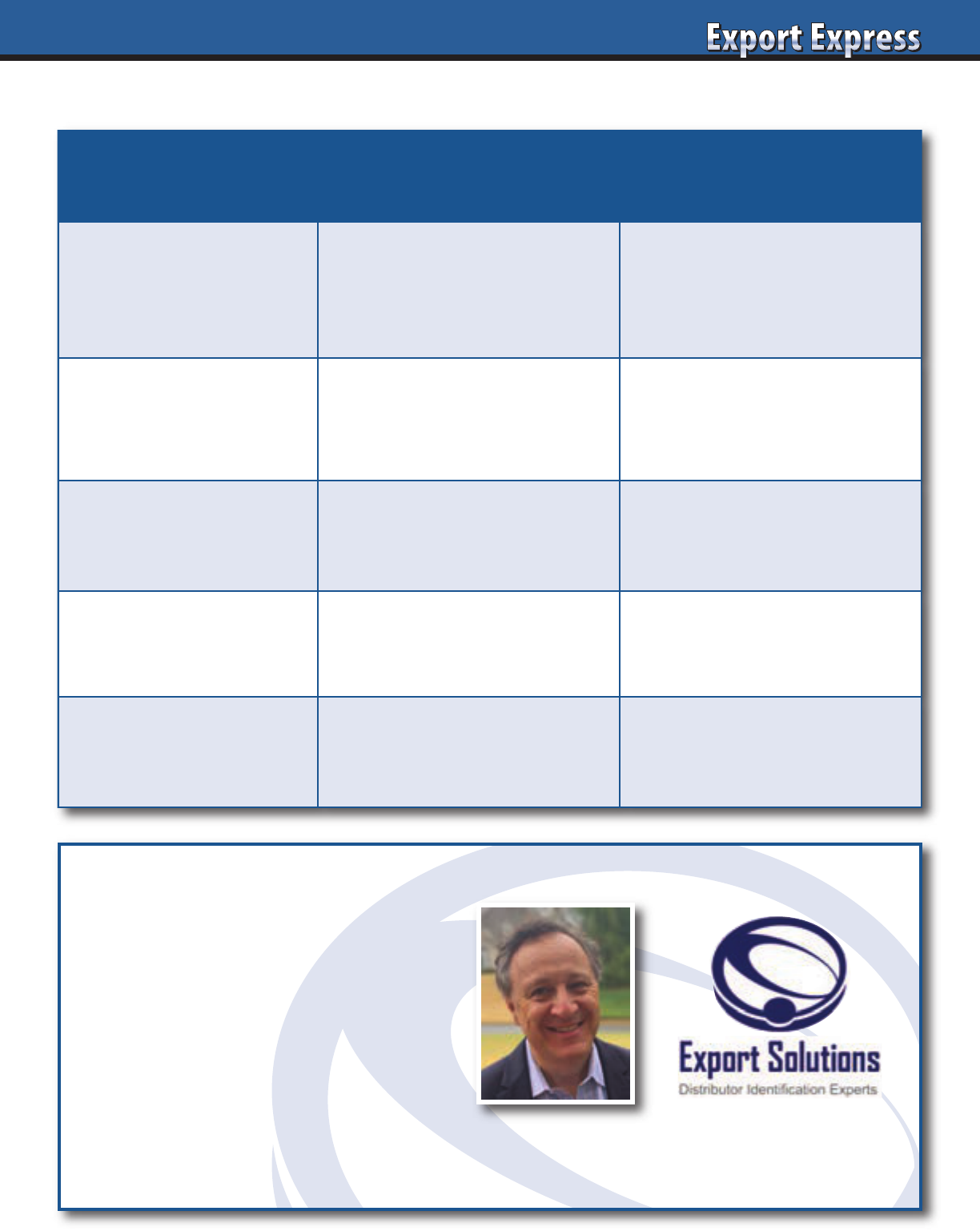
Distributor Search Best Practices
Activity Bad Practice Best Practice
Distributor Profile No portfolio synergies.
Representing similar size,
premium brands from your
aisle/country.
First Contact
Random solicitation by
unknown company.
Trade show or formal phone
meeting with respected
distributor.
Market Visit
Start partnership without
market visit.
Local assessment: office,
store checks, warehouse
inspection.
Year I Plan No plan. “Buy and ReSell.”
Logical plan with targets,
activities, timelines, costs.
Price Calculation
Sell at dead net price.
Arbitrary mark-up.
Transparent price calculation
from factory to store shelf.
71
Talk to an Expert
• Find Distributors in 96 Countries
• International Strategy Road Map
• Fix Problem Markets
• Entry Plans
• Export Workshops
• Motivational Meeting Speaker
Contact Greg Seminara at (001)-404-255-8387 to discuss your business development project.
www.exportsolutions.com
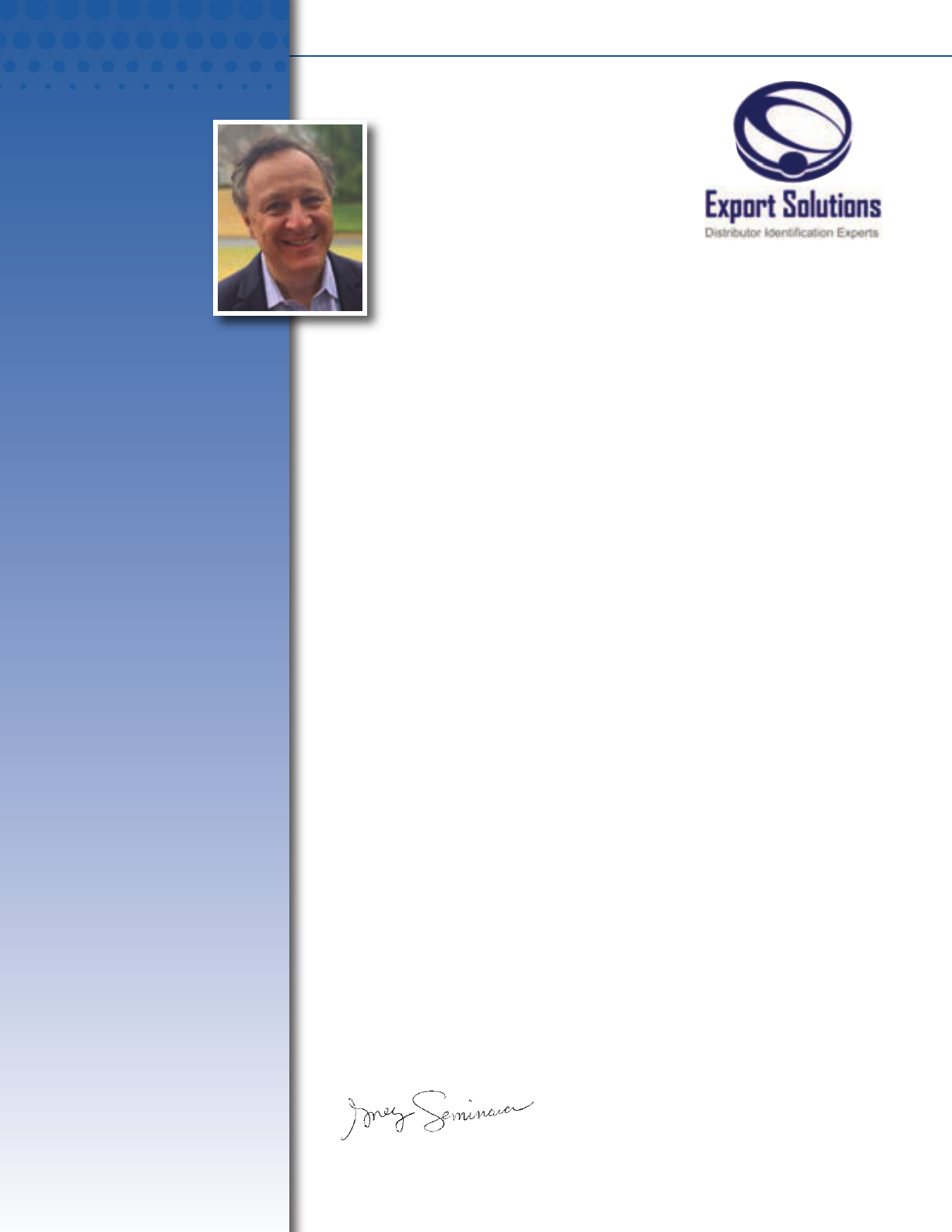
72
2022 marks the fourteen year anniversary
of the launch of Export Solutions’ distributor
database. Many of my friends from export
will recall the story behind the birth. I was
faced with the challenge of identifying
distributor candidates in Italy for a large
multinational. I attacked the project the
“old way”: sorting through business cards,
checking the Embassy, calling colleagues, searching the internet, and after one
month finding five acceptable distributor candidates. Frustrated by the process,
I took six months off and pioneered the first industry database created from the
standpoint of an export manager. Today, brand owners locate names, web sites,
brands represented, and contact information for 80 distributors in Italy and
9,200 distributors across 96 countries in about 10 seconds on my web site.
Below are some important “lessons learned” about finding distributors.
1. 85 Distributors Per Country
Each country offers more distributor options than you think. Every government trade
officer and export manager knows the names of 3-5 distributors per country. Often, we
stick with an underperforming distributor because of the misconception that “there are
no other choices” in a market. Our country lists track an average of 85 distributors of all
sizes and specialties per country. The revelation is that you can instantly find several
qualified distributor options in every country by using our database.
2. Consider Small/Mid Size Distributors
Mega distributors representing 20 or more brands are not usually interested in
pioneering new brands with zero sales. These large distributors are excellent, but are
busy enough with their current portfolio. Many new brands focus their energies on these
“name brand” distributors, but are frustrated with the lack of response. Better approach
is to pursue small to mid size distributors that are hungrier and more entrepreneurial to
launch a new brand. Big distributors are a good choice when you are outsourcing sales
of a brand with measurable existing business.
3. Email Plus Telephone Call
No one speaks these days. We email 100 messages a day and wonder about the lack of
response. Email is a great to tool to communicate news. However, when you need action,
pick up the phone and call. Executives still return phone calls, but will frequently ignore
or delete email messages just to clear the inbox.
4. Rethink Your Trade Show Strategy
Trade shows like Sial, Anuga, Cibus, and ISM are outstanding places to gain visibility for your
brand and contacts with potential new distributors. However, too many brands use the “Hope
and Wait” approach at their booth. Unfortunately, many of the spontaneous visitors at a trade
show are from “time wasters”, incapable of building your brand. Some of our best success
stories come from companies who leverage Export Solutions database to create productive
meetings at trade shows. Basically, they pre-screen candidates from the database in advance
of a trade show and invite the most promising ones to scheduled meetings at the show.
5. Avoid Disappointment – Visit Each Market At Least Once
There are too many disappointments in the world of export. Frequently, I’ll witness a
distributor meeting a brand owner for the first time at a trade show. Within five minutes
they are discussing pricing, followed by exaggerated projections of market potential. Our
business is fairly straight forward to figure out. Visit each market at least one time. Meet
your distributor candidates at their office. Visit a few stores. Then create your plan. Export
is tough, but you increase your chances for success when you complete fundamental in
market due diligence.
www.exportsolutions.com
Distributor Search 2022
Greg Seminara
404-255-8387
“Spend Time Selling to Distributors versus Searching for Distributors”
Strategic Services
Contact Us for
Export Solutions
1. Identify Best in Class
Distributors: 96 Countries
2. Best Practices
Export Strategy
3. Distributor Management
Workshops
4. Export 101:
Let’s Get Started
5. New Market
Prioritization
and Launch Plan
6. Personal Distributor
Introductions:
96 Countries
7. Walmart International
8. Distributor Contracts,
Margins, and Fees
9. Meeting Speaker
10. International
Strategy Expert
Strategic Services
Contact Us for
Export Solutions
1. Identify Best in Class
Distributors: 96 Countries
2. Best Practices
Export Strategy
3. Distributor Management
Workshops
4. Export 101:
Let’s Get Started
5. New Market
Prioritization
and Launch Plan
6. Personal Distributor
Introductions:
96 Countries
7. Walmart International
8. Distributor Contracts,
Margins, and Fees
9. Meeting Speaker
10. International
Strategy Expert

73
Strategic Export
Development Program
Export Passport
Export Passport

74
Distributor Search Challenge
• Some distributors are too big…
• Other distributors are too small!
3
Export Passport identifies
Prime Prospect distributors
that represent the Right Fit
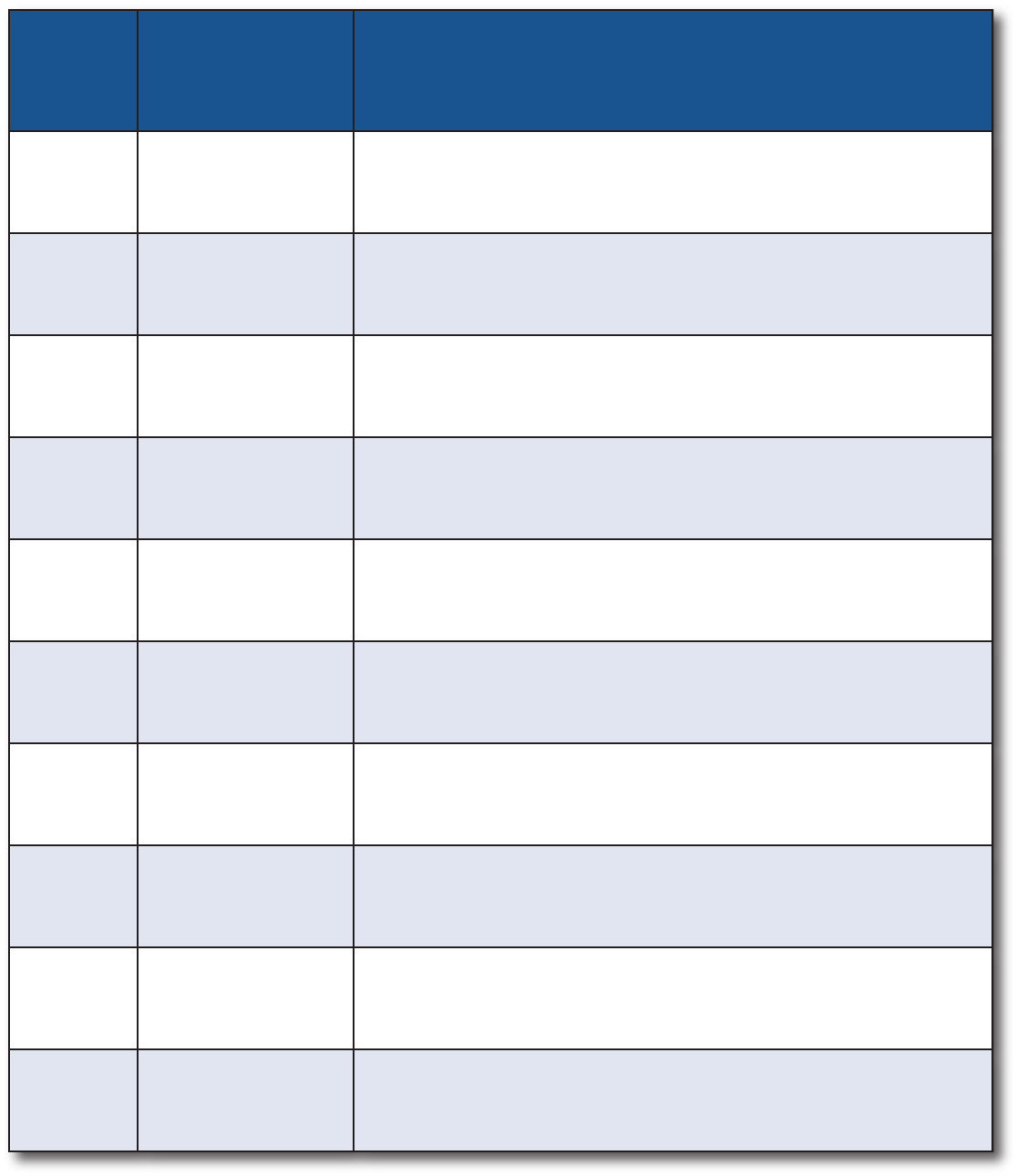
75
Exporter Classification*
Type Description
Export Profile
10 Multinational Strong market share everywhere across multiple categories.
9 Global Multinational. Mix of leading countries and niche participation.
8 Category Champion One core mass category. Strong performance globally.
7 Icon Well known, niche leader. Global availability. Example: Tabasco.
6 Regional Leader Strong share across one continent/region. Some export success.
5 National Hero National treasure, #1 brand. Exports to homesick expats, tourists.
4 Player Respectable share in home country. Opportunistic exports.
3 Participant “Me too” product. Opportunistic exports. “Trader”/private label.
2 Challenger Innovator. Some listings in home country. New to export.
1 Start-up Trying to get traction in home country. Export “dreamer.”
*Export Solutions’ classification system
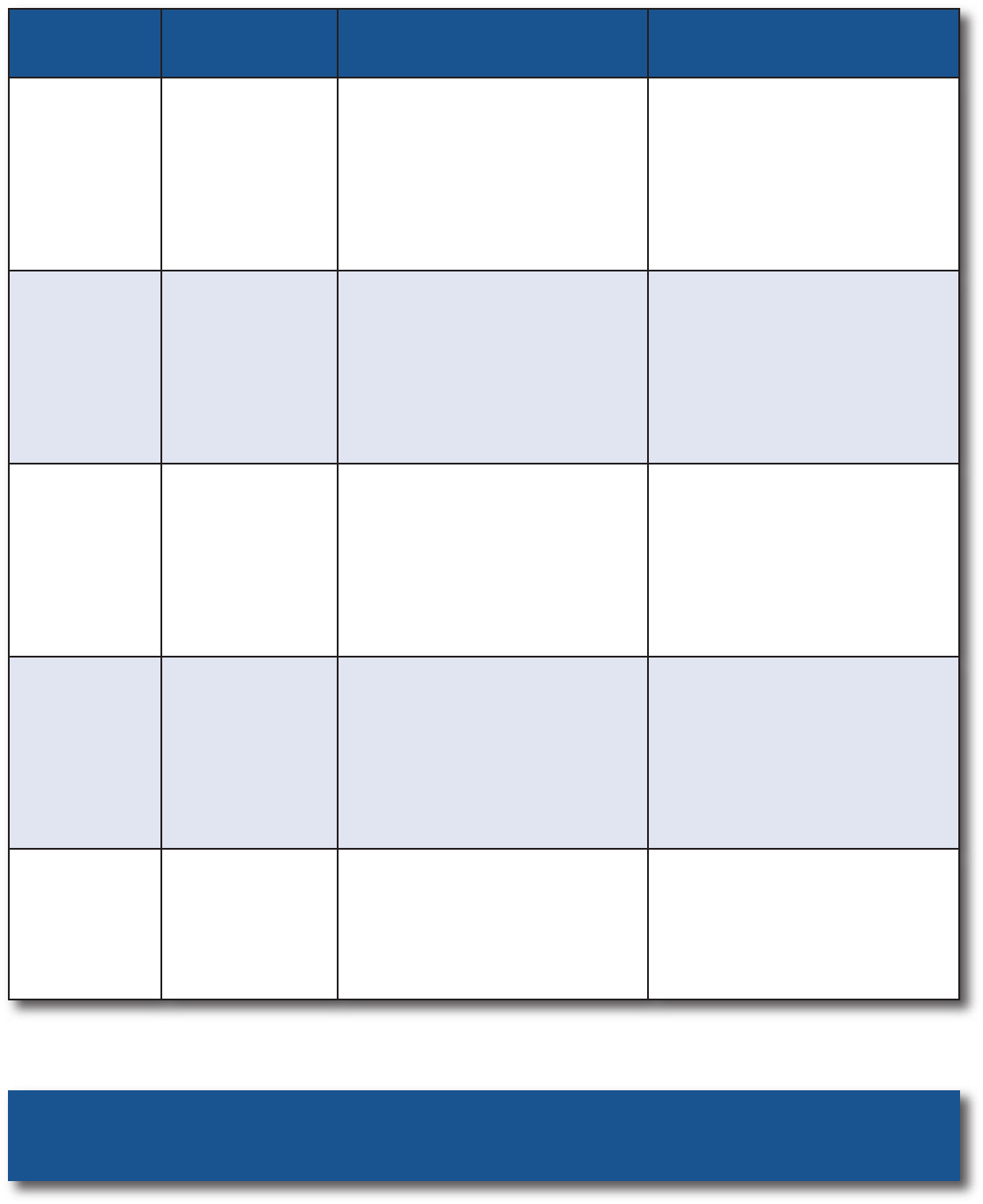
76
Distributor Classification*
Stars Title Description Prime Prospects
HHHHH
Champion
Massive distributor.
Handles multinational/#1
brands across many
categories.
Brand leaders.
$$$ marketing budgets.
Exporter types: 6-10
HHHH
Captain
Category Captain.
Handles leading brands in
one segment.
Category
innovators/leaders.
$$ marketing budgets.
Exporter types: 5-9
HHH
Player
Mid-size distributor.
Handles #2/3 brands or
niche leaders across many
categories.
Differentiated,
premium brands.
$-$$ marketing budgets.
Exporter types: 4-7
HH
Participant
Respected local.
Diversified product
portfolio.
Results equal to investment.
Flexible, challenger brands.
$ marketing budget.
Exporter types: 2-4
H
Pioneer
Small distributor.
Entrepreneurial, open to
innovative new companies.
Start-up brands.
“Pay as you go” marketing.
Exporter types: 1-3
Need more information? Visit www.exportsolutions.com.
*Export Solutions’ classification system
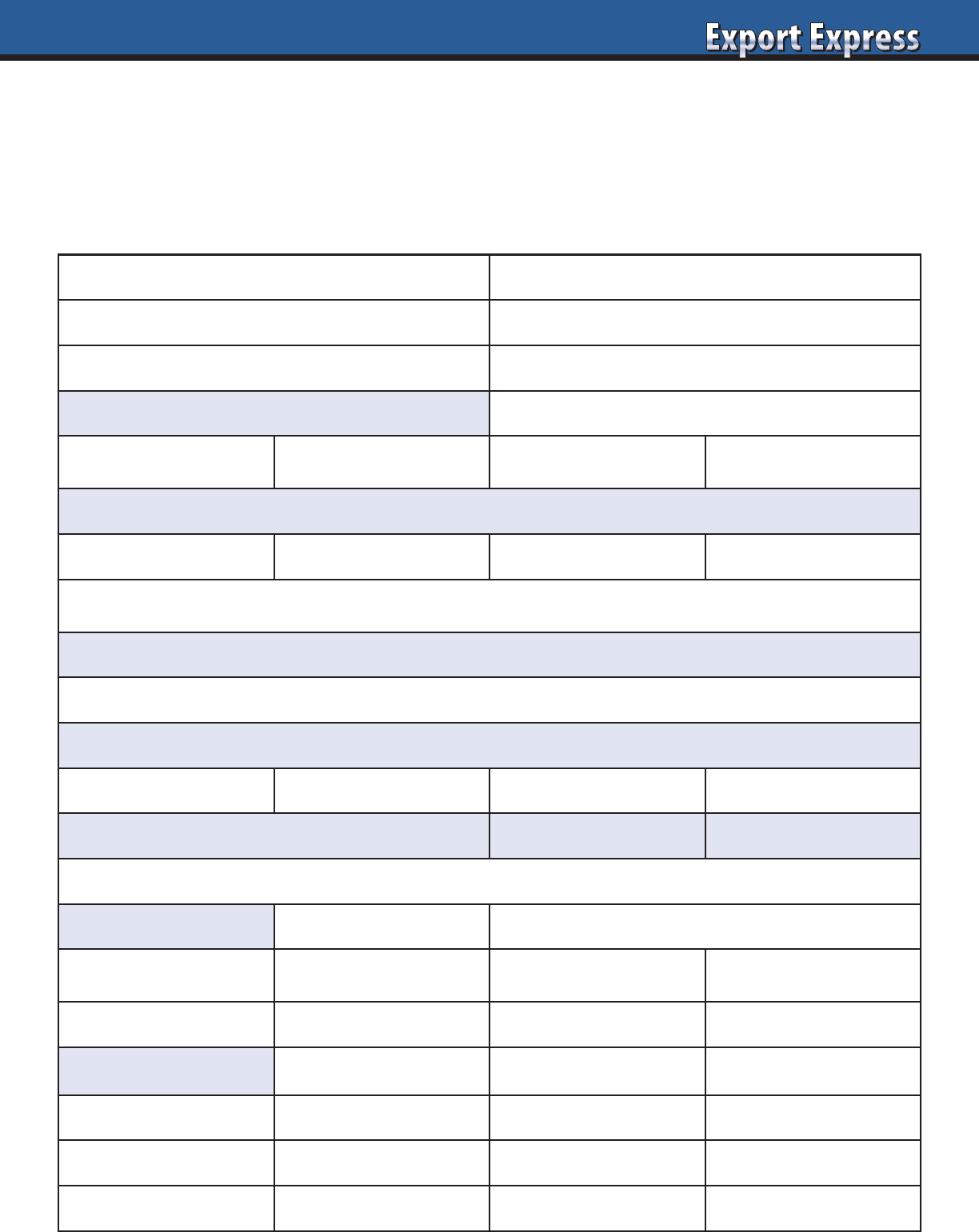
77
Exporter Data Sheet
What Distributors want to Know about Your Company
New Business Opportunity: _____________________________________
(Company Name/Country)
Key Contact: Telephone:
Web Site: Email:
Founding Date: Ownership:
Annual Sales: Total Employees:
0-$50 million $50 million-$250 million $250 million-$1 billion $1 billion +
% Sales International:
0-10% 10-25% 26-50% 50% +
Exporter Classification/Description:_________________________ (#1-10, based upon Export Solutions’ scale)
Core Product Range:
Unique Selling Point:
Market Share:
Home Country: Country A: Country B: Country C:
Current Business in Distributor’s Country: Yes/No: Size $:
Current Customers (Distributor’s Country):
Investment Model: Listing Fees*: Yes/No *average $35 per item,per store
Trade Promotion Budget: Dead net price: 10% of sales: Mass:
Marketing: Digital: Sampling: 360 degree:
Ambition/Size of Prize: Sales: Market Share:
Year 1
Year 2
Year 3

78
Distributor interviews can be compared to a first
date. There is no second date after a bad first date,
even if both parties are interested in each other.
On the other hand, a good distributor first
interview can lead to a lifelong relationship.
Listed below are Export Solutions’ ten tips on
enhancing the productivity of your distributor
interview process.
1. Schedule Interview With Four to Six Weeks Lead Time
This allows you to program several candiate
interviews on your preferred timeline. Long lead
times enhance the chance of distributor senior
management availability and provide sufficient time
for motivated distributors to research your category.
2. Meeting Agenda
Send a meeting agenda three weeks in advance
of meeting. Typical discussion topics include
Distributor credentials, organization model,
coverage by channel, success stories, category
insights, and distributor margin philosophy.
3. Store Visits – Pre-Interview
Export Solutions always conducts independent
store visits prior to our distributor interviews.
This supplies a snapshot of distributor’s performance for
other international brands. It also permits us to quickly become
familiar with local category dynamics, competitive activity,
and pricing.
4. Distributor Assessment Grid/Questions
Prepare an assessment grid template highlighting and
weighting core assessment areas prior to your first interview.
Create a list of potential questions to be asked during the
meetings. Export Solutions provides free sample Distributor
Assessment grids and “10 Questions for Every Distributor
Interview” on our web site.
5. Distributor Presentation: Template or Tailored?
A key indicator of distributor enthusiasm is whether they
created a personal, tailored presentation for your meeting or
swapped brand logos and provided their “standard pitch.” Best
in class presentations allocate equal time for Distributor’s CEO,
functional heads, and your proposed first point of contact.
6. Your Company Presentation
Be prepared to share a 10-15 page presentation on your
company credentials. Stick to the key facts: company metrics,
product point of difference, export success stories, and plans
for the market. Bring plenty of samples for everyone to try.
Note that the distributor will ask for your presentation, so keep
it brief as you do not want a lengthy strategic presentation in
the hands of a distributor that is not selected.
7. Tour Distributor’s Office and Warehouse
Would you buy a house without visiting it? Distributor offices
and warehouses offer valuable clues to distributor activity,
head count, size, and professionalism. Your quick inspection
will validate that the distributor’s activities match claims from
their presentation.
8. What’s Their Plan?
A core question in a positive interview is “What would the
distributor’s plan be if we awarded them the business starting
next Monday?” This provides insights on their plans, timelines,
and process for transitioning and building new brands.
9. What Do You Like About Us?
A good way to measure distributor interest is to ask their
feedback on your opportunity towards the end of the meeting.
Framing the question from a positive point of view allows the
distributor to express interest or concerns.
10. Provide Homework Assignment
Conclude each positive meeting with a request for distributor
to provide a deeper category assessment and a suggested entry
or transition plan. Distributors should supply references for five
of their existing clients. An important insight will be the quality
and response time for completing the “homework.”
Ten Tips: Distributor Interview Preparation and Insights
Need more information? Visit www.exportsolutions.com.
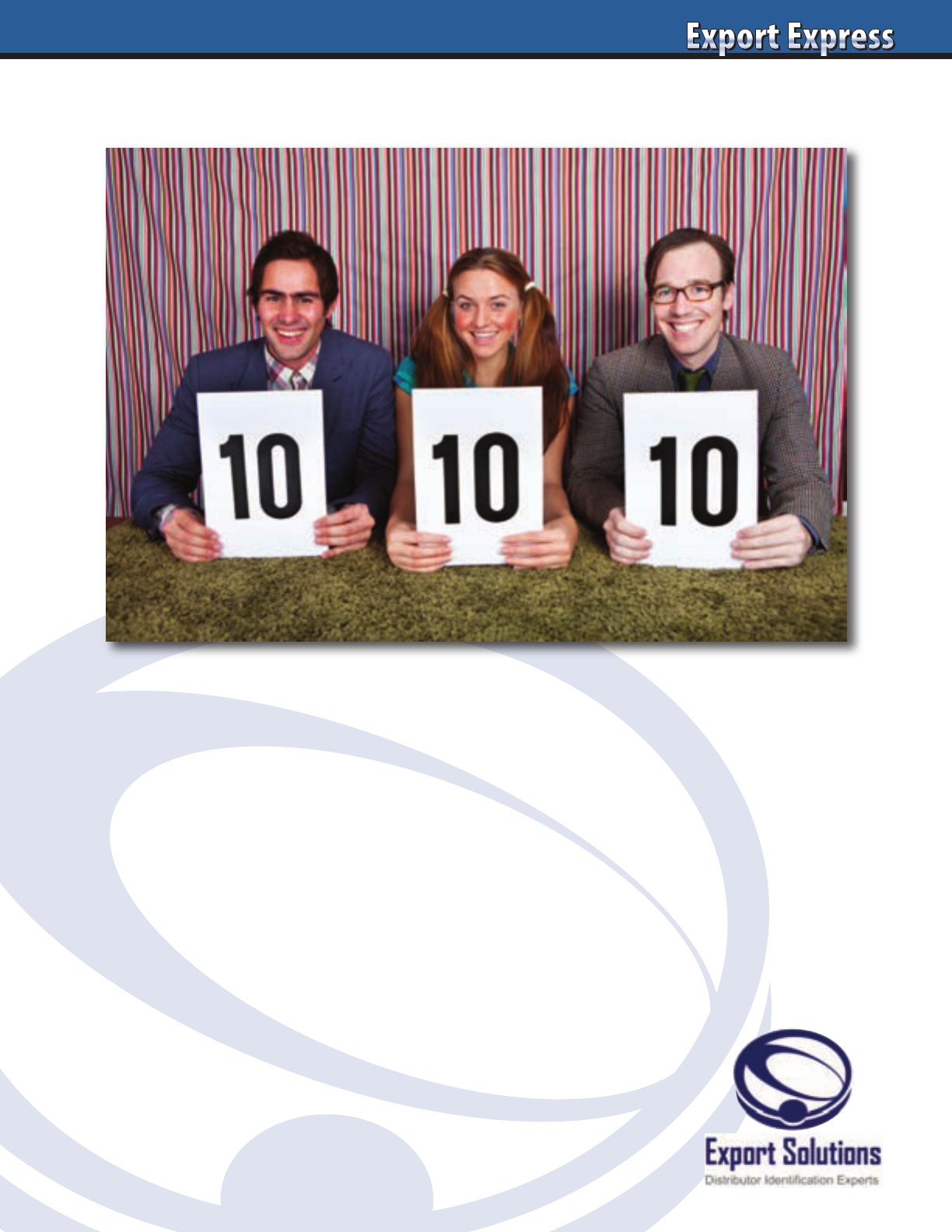
Looking for Top Distributors?
Finding the right distributor is tough work! Why waste time? More than 2,700 companies depend
on our database to quickly find reliable distributors. Export Managers call us everyday to obtain
our personal insights, advice, and comments on the 9,200 distributors in our database.
Export Solutions launched a new “Top 5” help desk service. Top 5 service customers receive
recommendations on the best distributor candidates for your brand in 96 countries. Contact us and
we’ll tell you the Top 5 distributors per country that are a “fit” for your brand and Top 5 distributors
to avoid. We’ve completed more than 300 distributor search projects in Asia, Middle East, Europe,
and throughout the Americas (Brazil/Mexico). Distributor Identification is our core business.
Top 5 Program Details
Export Managers submit list of countries where they require a distributor. Greg Seminara researches
request. Phone meeting in 72 hours to discuss Top 5 candidate results. Purchase Premium
subscription to Export Solutions database for $2575. Includes one year unlimited access to entire
database plus 12 Top 5 phone meetings. Other distributor search packages begin at $150 through
our Talk to an Expert program.
Contact Greg Seminara for Top 5 service.
(001)-404-255-8387
gseminara@exportsolutions.com.
79

80
Every export manger has performed the
time consuming function of reaching out
to potential distributor candidates in
a new country. The process is usually
successful, but requires patience and
perseverance. Top distributors are
overwhelmed with new representation
inquiries. These requests must compete
for attention with the hundreds of emails
in the distributors inbox from his existing
brands. Export Solutions has worked on
more than 300 distributor search projects
across 96 countries. Below are our Best
Practices for contacting new distributors.
Email Plus Phone Call
Email candidates a short, fact based, note.
You may receive an immediate response
from a few hungry and motivated
candidates. More likely scenario is the
need for an immediate phone follow-up.
Work with the contact’s assistant to
schedule a phone meeting or ask to speak
with the person in charge of “important
new business” projects. Periodically, I
will also contact a distributor through
LinkedIn, as that often routes through a
different email address. Lack of response
after several attempts means that the
distributor is not interested. On the other
hand, you must persevere as frequently
the boss may be busy or not glued to
email like the rest of us.
Avoid Mass Mailing
Distributors recognize an email blast from
miles away, guaranteeing a low response
rate. Better to send a personal email,
mentioning the contact’s name, how you
found him and your rationale for contact.
i.e. “we are looking for a partner with a
strong track record building other USA
brands.” Target distributors which may
be a good fit based upon your investment
level and brand ambitions. For example,
large power distributors prefer brands
with strong marketing plans, while
smaller distributors appear more open
to pioneering promising new products
without giant spending budgets.
Company Credentials Information
Do not bombard a candidate with
attachments and PDFs of lovely brochures
prepared by an ad agency. First, many
people automatically delete emails with
attachments from people they don’t know.
Send PowerPoints and project details only
after you have established contact.
What Distributors Want to Know
Distributors want to know who you
are: what is the size of your company,
brand USP (why are you different?)
international success, and plans
(investment strategy) for their market.
Distributors’ mindset is to quickly
calculate how much money they can
make representing your brand and how
tough will it be to sell to their customers!
Market Visit
Distributor response will be improved
if you request an introductory meeting
at their office. This demonstrates that
you are serious about the project and
interested in brand building, not just
selling a few containers. Try to visit at
least three distributors on your trip, more
if it is a large country or you anticipate a
“tough sell.” Schedule your visit at least
6-8 weeks in advance to guarantee
distributor availability.
Distributor Search Guide – Export Solutions
Export Solutions’ web site contains a
free Distributor Search Guide. This guide
is jammed with strategies, ideas, and
templates to guide each step of the
distributor search process. Export
Solutions completes distributor search
projects for leading brands worldwide.
Contacting New Distributor Candidates – Best Practices
Sample Introductory Email
Subject: New Business Opportunity – CerealCo* – USA
Dear Alexander:
CerealCo is a popular cereal brand from the USA.
Founded in 1960, 2022 sales will exceed $300 million
dollars. Our point of difference is that CerealCo offers
high quality gluten-free and organic cereals popular
with many modern consumers. CerealCo exports to
25 countries, including several in Asia.
We are now beginning the process of considering
partners for Indonesia. I understand that you have a
successful track record building other well known USA
grocery brands. Can we arrange an introductory web
meeting for Wednesday at 900 am? I am based in
Atlanta, Georgia, -12 hours versus Jakarta.
For more information, visit our web site
at www.cerealco.com
Kind regards,
Greg Seminara
Export Manager
(001)-404-255-8387
*Note: CerealCo is a fictitious company. Any resemblance
to an actual cereal company is coincidental.
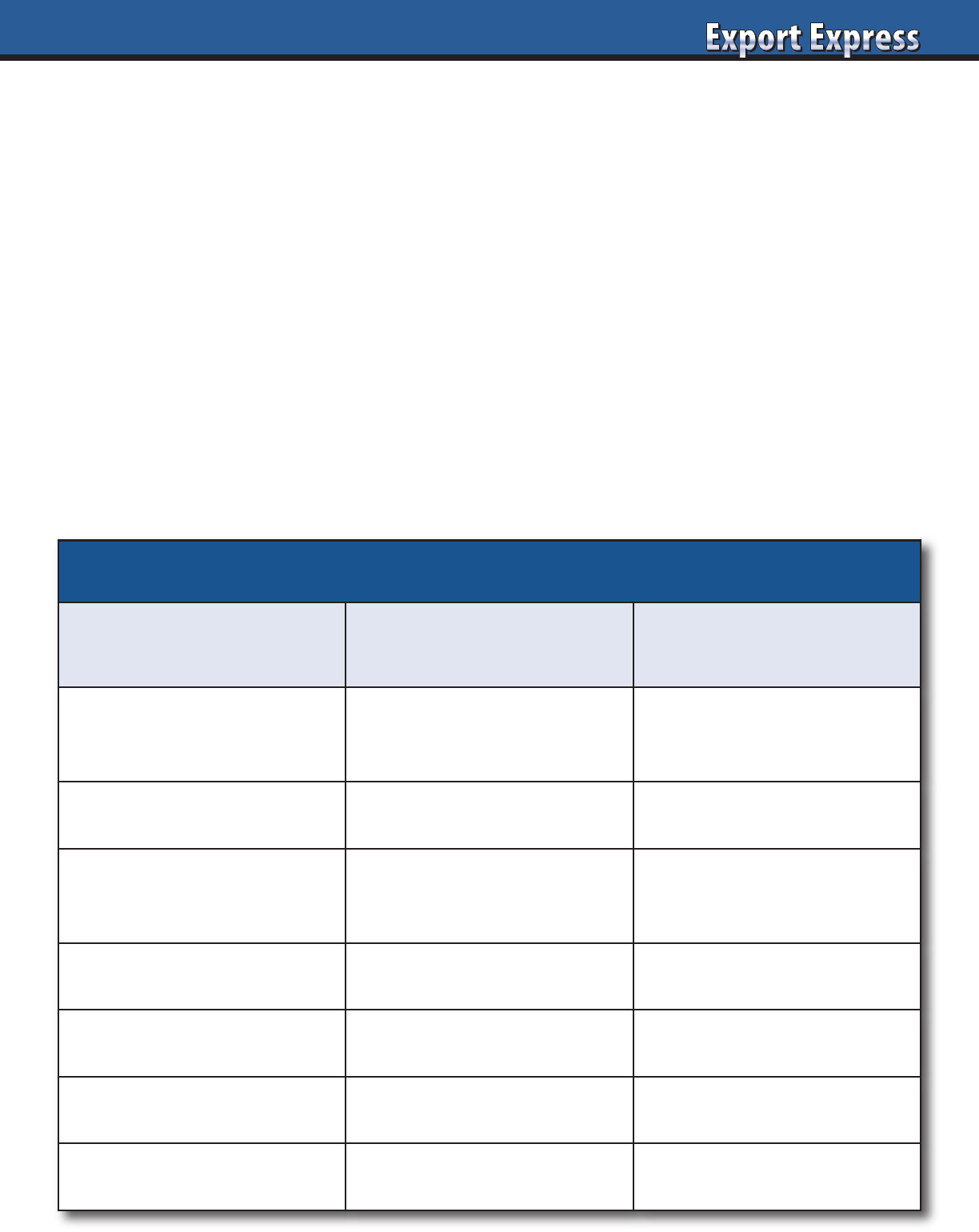
81
Annual Sales:
$300 million US dollars in 2022
History:
CerealCo founded in 1960…62 years old
Core Product Portfolio:
Breakfast Cereals – “Leader in Organic/Gluten-Free Cereals”
Web Site:
www.cerealco.com
International Overview:
Direct sales to 25+ countries. Indirect sales to 50+ countries.
2021 International sales + 25%!
Southeast Asia Status:
CerealCo products available across Asia through a hybrid model
of partnerships, distributors and indirect sales through USA
consolidators. Current net sales of roughly $2 million dollars
in Asia Pacific.
CerealCo Objective:
Align with a distributor with strong brand building capabilities.
Develop a collaborative plan to grow business to comparable
levels to of our successful business in other Asia Pacific countries.
August Market Visit
CerealCo will visit Jakarta the week of August 1.
We will visit stores and meet potential partners to discuss
CerealCo plans.
*Note: CerealCo is a fictitious company. Any resemblance to an actual
cereal company is coincidental.
Company Fact Sheet (add your logo)
CerealCo* Summary – Indonesia Example
Best Practices – Contacting New Distributors
Do Don’t
Email Content
Short introductory email.
Company facts plus web link.
Lengthy email with
generic claims on
“why your brand is the best”
Email Delivery
Send on Monday.
Distributor has week to review
Send on Friday.
Email lost over the weekend.
Email Timing
Should arrive to distributor
at 2:00 pm his time.
After the “morning rush.”
8:00 am/9:00 am emails are
reviewed quickly and deleted
Phone Contact
Start calling 24 hours
after initial email.
Wait a week to call.
Attachments
No attachments on first email.
Web link only.
Send PowerPoints or
pricing on first email
Follow-Up
Constantly, if you believe
it’s a good candidate.
Wait for distributor
to contact you
In Country Meeting
Best opportunity to review
your brand proposition.
Create relationship without
market visit.
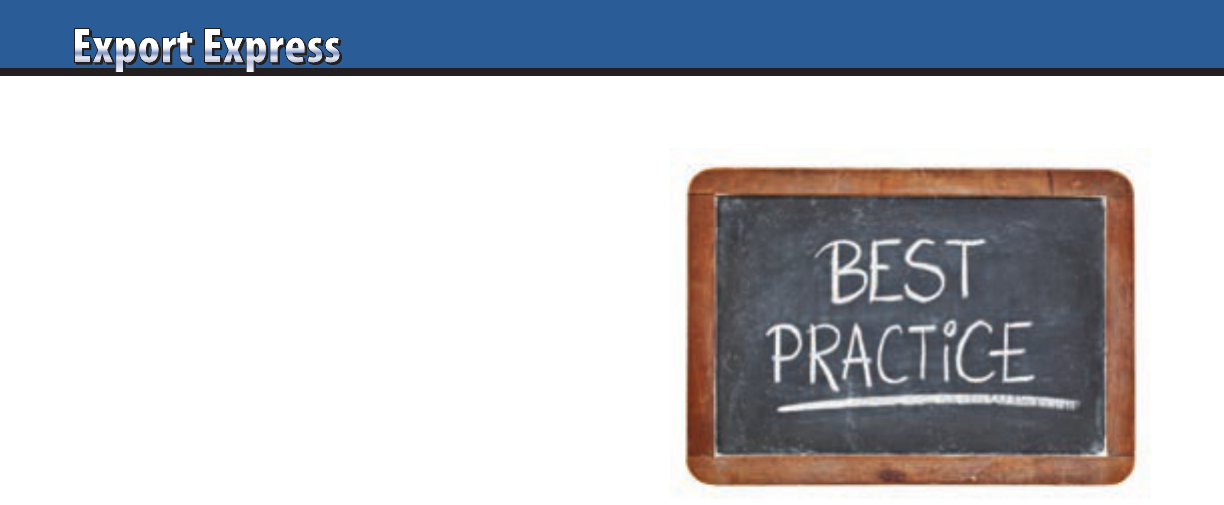
82
Have you ever experienced an incredible
first meeting with a distributor? Strong
alignment, good fit, everyone smiling,
timelines agreed. Then, nothing happens!
The export manager may take up to
six months to translate his outlook from
“done deal” to “dead deal.” There are
two reasons why this occurs.
First, distributors are positive,
competitive athletes, always striving
to win new business. However, in some
cases, the distributors wake up after time
to reflect and decide they really weren’t
that interested in the brand after all.
Failure also results when a strong first
personal meeting at a trade show or
distributors office is followed by
a relationship buried in email
communication, with no personal touch.
Below are Export Solutions’ Ten Tips on
converting promising new business leads
into tangible business partnerships.
1. Zoom/Teams – Don’t Depend on Email
Motivated distributors still return
phone calls, but frequently receive up
to 200 emails a day, many from existing
brand partners. Top distributors’ business
days are captured by a continuous flow of
meetings with customers, principals, and
their own employees. Best bet is to call
a potential partner or set up Zoom
meetings. Email is okay for routine
correspondence, but too easy to ignore
or delete.
2. Follow Up Immediately & Frequently
Time slips away, as Export Managers
focus on existing businesses and
“problems of the day.” One tip is to put
regular follow up reminders on your
computer calendar.
3. Focus on 10 C’s: Category Review,
Calculation, Cost of Plan, Compliance,
Contract, etc.
Described below are critical elements
to translate a “lead” into shipments.
Category Review: How does your
category look in target country? Category
size, competition,pricing,margins, and
merchandising activity.
Calculation: What is the distributor’s
proposed calculation from your factory
gate to the store shelf? What are standard
costs like duties and taxes? What are
flexible or negotiable like trade discounts
and distributor margin?
Cost of Plan: Each
brand needs a plan to
gain market entry. This
includes key account
“sell in,” followed by
consumer and trade
promotion activities.
Look at the distributor’s
proposed plan, as well
as several options with
different price tags.
Compliance: Many
countries feature a
product registration
process and labeling
requirements. In some
countries, this step is
easy with automatic compliance for
a USA or European brand. Or a simple
solution with a small distributor applied
sticker. In other countries like Japan or
Indonesia, plan on one year or more to
navigate the complex process.
Contract: “Ready, Set, Go” can be
delayed by 3-6 months due to contract
negotiations. Company lawyers demand
20 page agreements in English that even
the Brits can’t understand. Distributors
prefer two page letters of understanding
or a handshake deal. Do what is right
for your business, but expect delays
and frustration.
4. Request References
A good idea is to quickly request
distributor references from other brands
they handle. Motivated distributors will
send impressive references right away.
Also, have your credit department run
a Dun and Bradstreet or Equifax report
as soon as possible. Many trade show
meetings are with “pretenders” who state
exaggerated claims and are ultimately too
small to handle your brand. Better to
discover this sooner versus later.
5. Move Beyond the Distributor Owner/MD
The distributor owner “writes the
checks,” but frequently serves as a
“bottleneck.” The key is to quickly get
your brand assigned to a “worker” whose
task is to move your project through the
system and produce an order!
6. Establish Realistic Timelines
Sync with category review dates and
avoid holiday periods. Update timelines
frequently. New distributor relationships
always take longer. Plan on six months
from first meeting to first shipment. Be
pleasantly surprised if things move quicker.
7. Distributor Response Time
Signals Interest Level
How often do you check your emails?
Probably every hour. When I work on
distributor search projects for well
known brands like Pringles, Tabasco,
or Barilla, distributor response is
lightening fast. Motivated distributors
will chase you if they are interested
because they are anxious to start selling
your brand!
8. Establish Regular Checkpoint Calls
I suggest every two weeks at a
minimum. Use a common document of
priorities, action steps, and due dates.
9. Visit the Distributor
It’s amazing the amount of progress that
will be made during a meeting at the
distributor’s office. Also, the distributor
will work hard in advance of your visit
as your project moves up the priority list
and they want to guarantee a favorable
impression. A visit to the distributor’s
market signals your commitment.
Beware if the distributor is reluctant
to schedule your visit. Either he has
changed his mind about a partnership or
his office and capabilities do not match
the bold promises made at the initial
trade show meeting.
10. Parallel Path Two Candidates per Country
A favorable first meeting represents an
excellent start. However, there are still
many steps (think 10 C’s in point 3)
before you sign a contract and receive
your first order. Always keep two
candidates in the process, in case your
top choice disappoints. This can be
tough, but represents a better option
than needing to start the entire process
over again.
Ten Tips: Converting Promising Leads to New Partnerships
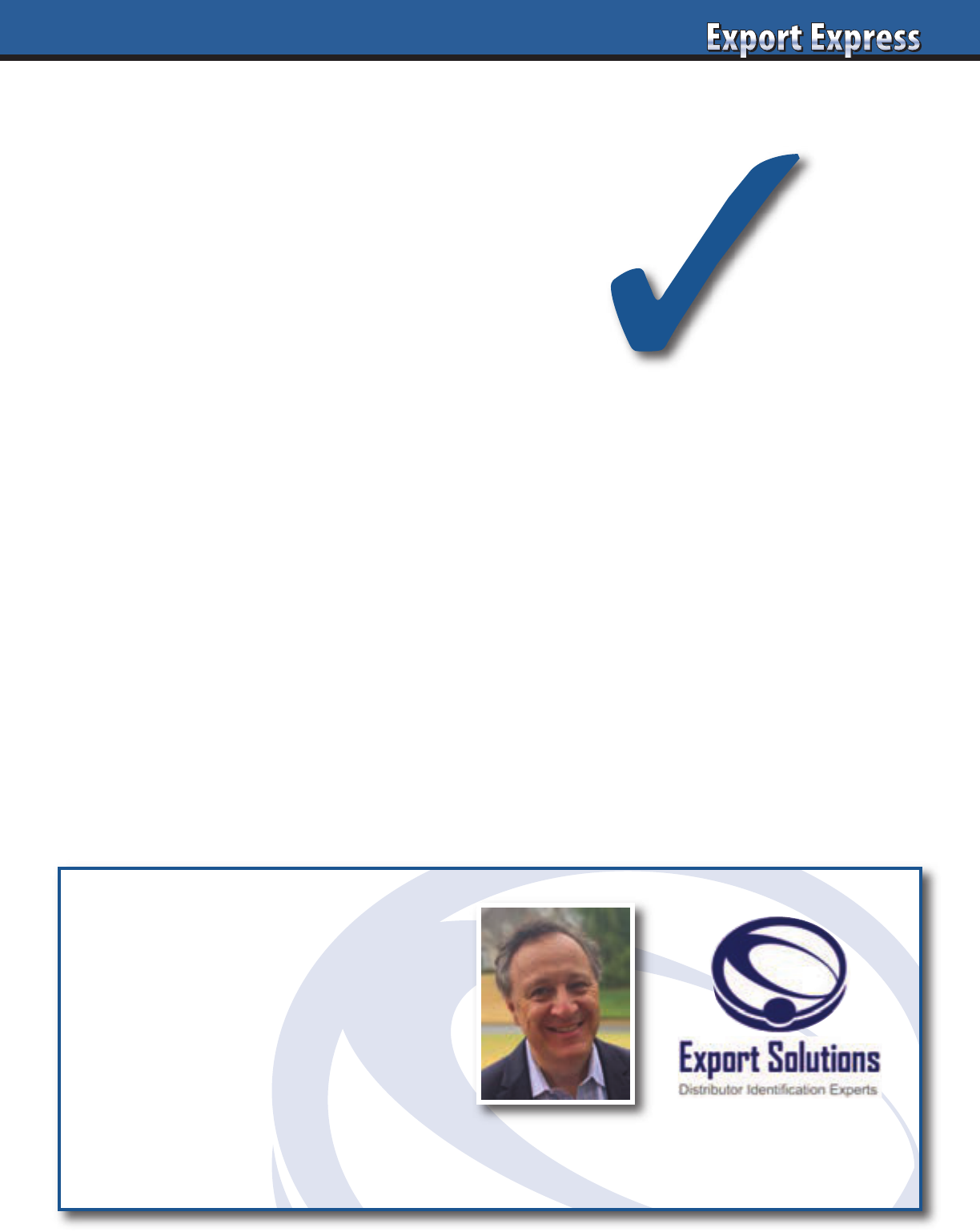
83
Export Solutions’ New Distributor Checklist
____ Contract/Agreement
____ Price Calculation Model
____ Business Plan: objectives, marketing,
spending, key dates
____ Category Review: Pricing, Shelf,
Assortment, Merchandising
____ Label Compliance
____ Shelf Life
____ Order Lead Time
____ Minimum Order
____ Pick up Point
____ Payment Terms
____ Payment Currency
____ Damage Policy
____ Product Registration
____ Forecast: Year 1
____ Pipeline Order & Inventory
____ Brand Facts
____ Product Samples
____ Appointment Letter
____ Brand Specifications in System:
Distributor & Customers
____ Training: Key Account Managers,
Retail, Administrative Staff, Warehouse
____ In Store Standards: Pricing, Shelf
Management, Merchandising
____ FAQ’s/Handling Common Objections
____ Key Account Presentation
____ Customer Appointment Dates
____ Category/Business Review:
Tailored to Each Key Account
____ Retail Sales Contest
____ Checkpoint Calls
____ Market Audit Date
____ Reporting: Track Distribution, Pricing,
Shelf Positioning, Merchandising, etc.
Talk to an Expert
• Find Distributors in 96 Countries
• International Strategy Road Map
• Fix Problem Markets
• Entry Plans
• Export Workshops
• Motivational Meeting Speaker
Contact Greg Seminara at (001)-404-255-8387 to discuss your business development project.
www.exportsolutions.com

84
Does your distributor network require a tune
up? I have lost count of the times I’ve heard a
vice president of international claim that their
company has the best group of distributors
in the world. Or trade show meetings when
a global export manager states that his
company sells to 60 countries and is not
looking for any new distributors. These are
the same executives that struggle every December to achieve their annual
sales budget.
Every year, I am asked to analyze the global distributor network of at least
ten manufacturers for independent feedback. The good news is that my conclusions
are generally positive. Most companies maintain a solid network of international
distributors, committed and capable of serving as good partners. However, the 1/3,
1/3, 1/3 rule always applies. Every company maintains a mix of distributors.
1/3 Leaders Best in class brand builders, delivering outstanding results
1/3 Performers Reliable and capable, normally meet expectations
1/3 Laggards Small, unsophisticated, players…sometimes diverters
The first step to transformational success is to admit that not all your distributors are
a good fit. Management recognizes that you’ve created a strong overall team and will
support your efforts to upgrade underperforming distributors. Some companies cling
to laggards due to history or personal relationships. This loyalty is nice, but ultimately
underachievers deprive you of your ability to reach your own personal business goals.
Each cluster of distributors requires a different level of engagement and support.
Leaders: Love them, reward them and recognize them. What characteristics of your
leaders allow them to deliver superior results? Are your leaders all big or mid-sized?
Category specialists or channel experts? Share best practices from your leaders with
other markets. The best advice with leaders is to support them and deliver outstanding
customer service so that your company is viewed as a preferred supplier.
Performers: Strong contributors to growth. Challenge them to become leaders. With
some companies, a majority of their distributors are viewed as performers which is
a positive indication.
Laggards: These distributors exist with every company and remain easy to identify.
Clue: small shipments to a big country. Or in the case of diverters, big shipments to a
small country. Shipment trends are one clear metric. Other scorecards include authorized
distribution and shelf presence at major accounts, merchandising ideas, and new item
launch success.
A strategic requirement for 2022 is to upgrade the bottom 1/3 (laggards) of your
distributor network. A core responsibility is to secure top talent in every country.
Export Solutions’ distributor database tracks an average of 85 distributors per country,
so plenty of options exist for strong brands. Who are your leaders? Who are your
laggards? What will you do differently in 2022?
1/3, 1/3, 1/3
www.exportsolutions.com
Greg Seminara
404-255-8387
“Spend Time Selling to Distributors versus Searching for Distributors”
1/3, 1/3, 1/3
Strategic Services
Contact Us for
Export Solutions
1. Identify Best in Class
Distributors: 96 Countries
2. Best Practices
Export Strategy
3. Distributor Management
Workshops
4. Export 101:
Let’s Get Started
5. New Market
Prioritization
and Launch Plan
6. Personal Distributor
Introductions:
96 Countries
7. Walmart International
8. Distributor Contracts,
Margins, and Fees
9. Meeting Speaker
10. International
Strategy Expert
Strategic Services
Contact Us for
Export Solutions
1. Identify Best in Class
Distributors: 96 Countries
2. Best Practices
Export Strategy
3. Distributor Management
Workshops
4. Export 101:
Let’s Get Started
5. New Market
Prioritization
and Launch Plan
6. Personal Distributor
Introductions:
96 Countries
7. Walmart International
8. Distributor Contracts,
Margins, and Fees
9. Meeting Speaker
10. International
Strategy Expert

“Select Your Distributors,
Do Not Let Your Distributors Select You”
www.exportsolutions.com
Search by Country, Category, or Country of Origin
85
Searching for New Distributors?
Export Solutions makes life a little easier for more than 3,000 export managers.
Our time saving distributor database serves as a “helper” for identifying more
than 9,200 qualified, local brand builders in 96 countries.
Local Experts
Distributor Coverage
Asia: 2,030
Europe: 3,139
Latin America: 1,574
Middle East: 937
USA/Canada: 1,464
Category Experts
Distributor Coverage
Beverage: 1,691
Candy/Snack: 2,713
International Food: 3,276
Health & Beauty: 1,800
Natural Food: 837
Country Experts
Distributor Coverage
German Brands: 648
Italian Brands: 1,397
UK Brands: 682
USA Brands: 1,189

86
Recipe: Best in Class Partnerships*
Ingredient Brand Owner Distributor
Results
Realistic expectations based upon
investment/market conditions.
Achieve sales increase in excess
of overall market growth.
Category Expertise
Share knowledge, trends,
and category analysis.
Serve as local category expert.
Educate the buyer.
Innovation
Contantly deliver important
new product ideas to market.
Successfully launch new products
into the market.
Investment
Appropriate Investment levels:
marketing/trade promotion.
Optimize return on investment.
Store Presence
Create clear, realistic guidelines
for in-store presence.
Share of shelf exceeds market
share. Maximize visibility.
Ideas
Support market driven ideas
to build the business.
Relentless pursuit of new and
better ways to grow sales.
Reporting
Concentrate on Basics: Listing
Map, Pricing, Merchandising Plan.
Complete reports accurately
and on time.
Focus
Periodic market visits and “rapid
response” to issues.
Appropriate level based upon
brand size and opportunity.
Cost to Serve
Remember that distributors need
to make money too!
Fair margin based upon brand
size and complexity.
Recognition
#1 Fan. Frequent recognition of
good results by all team members.
Strong commitment to exceed
expectations everyday.
*Mix Well for Best Results

87
1. Respect For Their Right
to Make a Reasonable Profit
Distributors have profit targets just like
manufacturers do. Distributors measure
total supplier contribution, defined by
sales multiplied by gross margin. How
much value do you receive from your
distributors relative to your contribution
to their profits?
2. Investment in Brand Support
Distributors love companies that
invest in above the line activities
such as television advertising, radio,
social media, print, and sampling.
Distributor volume is proportional
to your investment in brand support
activities. More marketing dollars
usually translates to greater sales
and profits for the distributor.
3. Awards
Most distributors proudly display their
Distributor of the Year awards in their
office lobby or executive conference
room. Recognition can be given for
distributor of the year, or achievement
of $1 million in sales, most improved
store conditions, or ten years of service.
4. Market Visits (But Not Too Often)
Periodic market visits allow you to share
ideas, monitor progress, and discuss
issues. These trips serve as motivational,
relationship building events, particularly
if you can spend time together “out of
the office.”
5. Endorsement of Local Marketing Events
Best in Class partners maintain the ability
to create unique local programs to build
your brand. Voting with your marketing
dollars stimulates the team to deliver and
continue to bring you their best ideas.
6. Trip Contests – Quota Makers Club
Many believe that achieving your annual
target is a job standard. This is true, but
watch distributors ship cases like crazy
when trying to qualify for a trip to a
resort location! Plus, the trip generates
incredible goodwill and all vow to meet
their objective to return “next year.”
7. Market Research
Distributors aspire to appear as
category experts. Access to syndicated
data from Nielsen plus local consumer
research allows them to distinguish
themselves from other vendors armed
with hollow words and broad claims
on a PowerPoint presentation.
8. Invitation to Your Corporate Headquarters
A trip to the USA or Europe is a dream
come true for distributor brand managers
in emerging markets. Treat them like a
VIP, and they will be loyal forever.
9. Lunch for the Support Staff
Order processing, customer service,
and other administrative people form
the hidden backbone of the distributors
team. Buy the group lunch and you can
be a hero for $100-$200. Guess whose
orders will be handled first at the end
of a quarter?
10. Letter of Thanks
Our industry depends on email too
much. How do you communicate
sincere thanks when someone receives
200 emails a day? Send a personal
letter via the post office recognizing a
successful new product launch, creative
promotion,or above and beyond effort.
Extra points provided for a handwritten
note! These letters are treasured forever.
Ten Things That Distributors Like

88
1. Unrealistic Expectations
Category growth ranges from 1% to 5%
in most Western countries. So how can
a manufacturer demand a 10% increase
in sales in a mature market? It’s possible
if the brand plans a major increase in
marketing spending. However, normally,
business growth parallels overall
market conditions.
2. Direct Contact With Their Assigned Retailers
Tricky retailers attempt to bypass a
distributor by contacting the brand
owner. Normally, the retailer has his
hand out for more money or wants to
“buy direct.” Be polite, but ask the buyer
to work with the distributor or schedule
a joint meeting for your next visit.
3. Cut Marketing Budgets
Leading distributors depend on joint
business plans, often created up to
one year in advance. Last minute
squeezes, translating to budget cutbacks
sometimes need to happen, but still hurt.
The distributor is left with delivering the
bad news and also hitting the sales target,
even with reduced support.
4. Short Shipments
Everyone loses due to short shipments.
Distributors could be assessed penalties
by retailers. Store level shelf space may
be lost and need to be recaptured. Keep
the pipeline filled, particularly during
peak seasonality.
5. Price Increases
Rising raw material input costs may
require adjustments in list prices. The
reality is that price increases are brutal to
implement in many countries. Eventually,
they are incorporated after months of
stand-off’s. In many cases, distributors
are forced to accept the price increase
from the brand, but are forced to swallow
the increase until they can negotiate with
the retailers.
6. Endless Reporting
Some brands are guilty of a constant
stream of reporting requests that take
time to complete. Ask: Is the report really
necessary? Legitimate requests are
forecasts, shipment results, major retailer
listing maps, price surveys, and new
product launch status updates.
7. Frequent Market Visits
Your partners require time to accomplish
their objectives without constant
oversight. Distributors appreciate short,
productive visits on a quarterly basis.
More frequently for a big company
and less often for a small brand. Get in,
conduct your business and off to the next
country. Week long visits to small markets
represent a distraction.
8. Margin Reductions
Distributors depend on their margin to
cover fixed overheads like logistics and
cost of their sales team. Often, their net
margin is only 3-5% or lower. Margin
reductions or increased costs challenge
their ability to operate a financially
healthy business.
9. Last Minute Requests
End of the year volume pushes and
rush orders are part of the business.
However, everything functions better
when normal lead times are respected.
Separate “must do” demands from
“nice to have” requests.
10. Delayed Response to Local Ideas
Manufacturers encourage distributors
to create unique local approaches to
brand building. Retailer buyers also call
their favorite distributors with short term
promotional opportunities to participate
in a special event. Distributors need
quick decisions on your ability to
support their idea. Few things are
more frustrating for a distributor than
a lengthy wait while their proposal is
debated by numerous levels of your
company management.
Ten Things Distributors Don’t Like
Need a hand? Visit www.exportsolutions.com.

Why do Export Managers Partner with
Export Solutions for Distributor Search Help?
4 Industries Leading Distributor Rolodex
• Excellent relationships across 96 countries
• Database tracks 85 distributors per country
• 300+ distributor search projects completed.
4 10 Step Distributor Search Process
• Logical, thorough due diligence process
• Professional approach yields positive results
• Publisher: Distributor Search Guide
4 Independent Expert Assessment
• Expert partner to export managers
• Focused on all aspects of distributor search
• Working for you!
4 Results
• 90%+ success rate
• Align with “Best in Class” distributors
• Typical project takes four months from project brief to distributor selection
4 Make Your Life Easier!
• Identifies 5-8 qualified candidates per country
• Organize meetings with top candidates
• Sounding board during assessment process
• Export Solutions participation sends positive message to distributors.
Export Solutions Can Help!
• Distributor Search helper in 96 countries
Contact Greg Seminara at
gseminara@exportsolutions.com
or (001)-404-255-8387
www.exportsolutions.com
89

90
Is Your Distributor Best In Class?
Best in Class Distributor Average Distributor
Size Top 10 Supplier to Retailers. Top 100 Supplier to Retailers.
Coverage
Countrywide.
Offices outside Capital.
Major retailers only.
Technology
EDI, Web Portal,
Handhelds for sales reps.
Basic desktop capabilities.
Talent
Management:
Multi-national expertise.
“Home grown” talent.
Channel
Covers all channels
and small shops.
Major retailers only.
Marketing Full Brand Management services. Trade promotion only.
Retail Presence
Dominant presence at retail
for distributors brands.
Mixed presence at point of sale.
Cost to Serve Competitive, transparent model. Average cost to serve.
Logistics
Multiple warehouses.
24 hour delivery.
1 warehouse, 48 hour delivery.
Results Results exceed market growth. Results = market growth.

91
10 Questions for Every Distributor Interview
1.Company History
How long have you been in business? Who are the owners?
How many direct, “payrolled” employees do you have?
Approximate annual sales volume?
2. Company Brand Portfolio
What are your top 10 companies/brands represented?
For which channels do you represent each brand?
How long have you represented each brand?
Can you provide senior level references at each “brand owner?”
3. Key Account Buyers
Who is the buyer for our category at the largest retailers in
your market? What other brands do you sell to our buyer?
How frequently do you visit each major customer?
4. New Product Launch Success Story
Provide a recent example of a new brand launch success story.
Key retailer acceptance? Cost of entry? How long did it take?
Key elements of the success strategy?
5. Creative Selling
Provide an example where you took an assigned
marketing/brand support budget and created a successful
local program. How do you measure success?
6. Retail Servicing
How many full time employees do you have visiting retail
stores? Are they located countrywide or just in the capital city?
How do you measure a “good store” in terms of brand presence
versus a “bad store?” Describe your retail reporting system.
7. People
Who would be our point of first contact? Would our contact also
“sell” our brands to major accounts? What other brands is our
contact responsible for? How do we insure that we get our fair
share of attention from your sales force?
8. Business Planning Model
What would your action plan be if we made an agreement to
start with your company? First steps? 90 Day Plan? Reporting?
9. Cost to Serve
How do you model your distributor margin? Range
of margin for our brands? Are you open to promotional
spending split (50/50)?
10. Enthusiasm for our Company
Why is our brand a good match for your company?
Why are you the best partner in the market for our brand?
What commitment are you willing to make?
5 Critical Questions to Thrive in 2025
1. Are we willing to pursue international acquisitions?
2. Would your company consider overseas contract packing (versus export)?
3. Can we test a high spend investment plan (“The Right Way”) in a strategic country?
4. Would your company invest aggressively in offshore head count in advance of sales?
5. Europeans: can we develop the USA market implementing the USA playbook? USA factory,
broker network, competitive pricing, USA team, channel strategy, 30-50% trade promotions?

92
Changing distributors is a messy business, filled with hurt feelings,
business disruption, and legal implications. The good news is that
when you have transitioned to a new distributor, you will benefit
from the enthusiasm and commitment of a highly motivated new
partner. Recapped below are Export Solutions’ Ten Tips for
managing the process of changing distributors.
1. Secure Agreement on Distributor
Change from your Senior Management
In many cases, a terminated distributor will reach out to your
company president or owner to appeal your decision. It makes
sense to brief your management on the situation and your
rationale for the change. If they are not aligned with your point
of view, better to learn in advance of creating a disturbance with
a distributor termination notice that could be retracted.
2. Long Term Distributor vs. Short Term Distributor?
Your approach at handling the process will vary based upon
the length of time of your partnership. Dissolving Long term
relationships (5 years or more) requires careful handling,
documentation of situation, and consideration of marketplace
repercussions. Ending short term partnerships is usually less
complex, as it is normally clear that mutual objectives are not
being met.
3. Probation Period
Putting a distributor on probation sends a warning signal
that termination is possible. Normally, probation periods last
3-6 months and include specific objectives to achieve during
the target period. This approach gives the distributor a “second
chance” to meet expected standards. Termination following a
probation period reduces the risk of a distributor complaining
that “he didn’t know that your company was that unhappy
with his performance.”
4. Check Your Contract
Distributor contracts outline termination process and procedures.
The contract will guide required steps to make a distributor
change. Contract terms are negotiable, particularly when a
distributor relationship is ending by mutual consent. In certain
cases, there may not be a contract which naturally provides a
brand owner greater flexibility. On the other hand, you still must
consider local laws and business practices which may be in place,
even without a contract.
5. Review Local Laws
Many countries have well defined laws regarding termination
of distributors, brokers or “agents.” These laws often dictate a
compensation formula for payments due to the distributor. The
legal rationale relates to the concept that the distributor invested
his own resources to build awareness and “good will” for
your brand in his country and must be compensated for this
investment. Puerto Rico’s Law 75 applies even when there is no
contract signed and only one direct shipment to a local Puerto
Rico distributor or agent.
6. Document Inventory in the Supply Chain
This includes current inventory, orders en route, and pending
orders. One of the biggest issues in any distributor change revolves
around inventory management. Angry terminated distributors may
attempt to “forward buy” or fill the market with discounted goods.
Or they may refuse to transfer inventory to the new distributor. I
have also seen cases where the old distributor attempts to transfer
damaged or outdated inventory to the new distributor.
7. Conduct New Distributor Identification Activities
These should be in process or completed prior to termination of
the under-performing distributor. This will allow you to minimize
the time between termination notification and transition to a new
distributor. It is likely that your current distributor may learn that
you are “interviewing the market” to understand alternatives.
This is all part of the probation process and may further stimulate
the distributor to ramp up his performance levels.
8. Minimize Notification Periods – Contract Buy Out?
Contracts may specify a 3 month to one year notification period
for a terminated distributor. A Brand owner should not want a
terminated partner representing his business any longer than
they have to. The risk to the brand is too high. I prefer 1-2 month
transition period, even if a brand owner is required to “buy out”
the last few months of a contract. It is better for everyone to move
on for a fresh start as quickly as possible.
9. Trade Notification Strategy
It is likely that some customers will be upset with a decision to
make a distributor change. The good news is that “they will get
over it.” On the other hand, it is important to identify potential
sensitive accounts and for the brand owner and the new account
handler to have a prepared response for an unhappy customer.
10. Fast Start Program – Six Months
Your new distributor will be highly motivated to get off to a fast
start to make a strong initial impression. We need to balance this
desire to run fast to “sell” with the critical steps of focusing on
the fundamentals: Sufficient inventory throughout the supply
chain, update new vendor information in customer’s order
management system, education of the sales force on product
benefits etc. “Crawl, Walk, Run.” Normally, the process takes six
months to successfully complete a transition to a new distributor.
Future
Distributor change used to represent a challenging proposition
due to the lack of information on alternate distributor candidates.
Export Solutions’ database tracks over 9,200 distributors in
96 countries. This translates to an average of around 85 different
distributors for each market. This has eased the process of
identifying alternate candidates when distributor change is being
considered or required. Visit www.exportsolutions.com/distributor
Directory.aspx for more information.
Ten Tips – Changing Distributors:
“The Right Way”

93
Where Do You Want to Grow?
Asia/Africa/Middle East
Europe Americas
Use Export Solutions Database
to fill in the Gaps in your
Export Coverage Map
Australia – 274 Distributors
China – 160 Distributors
Hong Kong – 177 Distributors
India – 109 Distributors
Indonesia – 78 Distributors
Japan – 176 Distributors
Korea – 146 Distributors
Malaysia – 128 Distributors
Philippines – 109 Distributors
Singapore – 163 Distributors
Thailand – 94 Distributors
Vietnam – 49 Distributors
Israel – 61 Distributors
Saudi Arabia – 115 Distributors
U.A.E. – 195 Distributors
South Africa – 106 Distributors
Plus 14 more countries
Austria – 68 Distributors
Belgium – 85 Distributors
Croatia – 78 Distributors
France – 125 Distributors
Germany – 188 Distributors
Greece – 90 Distributors
Hungary – 68 Distributors
Italy – 105 Distributors
Netherlands – 155 Distributors
Poland – 90 Distributors
Russia – 108 Distributors
Spain – 157 Distributors
Sweden – 103 Distributors
Switzerland – 100 Distributors
Turkey – 82 Distributors
U.K. – 274 Distributors
Plus 19 more countries
Argentina – 61 Distributors
Bolivia – 52 Distributors
Brazil – 135 Distributors
Canada – 205 Distributors
Chile – 92 Distributors
Colombia – 82 Distributors
Costa Rica – 73 Distributors
Ecuador – 55 Distributors
Guatemala – 61 Distributors
Mexico – 193 Distributors
Panama – 63 Distributors
Paraguay – 57 Distributors
Peru – 82 Distributors
Uruguay – 52 Distributors
USA – 598 Distributors
Venezuela – 38 Distributors
Plus 14 more countries

94
Big Brand Distributors
Large distributors supply an economical
alternative for leading brand manu-
facturers versus operating their own
subsidiary. Normally, they handle
multiple categories and offer critical
mass. A potential issue is the struggle
for attention among brands all vying
for focus from one sales team.
Category Expert
Buyers value partners that serve as
category experts who can share insights
and innovation for the sector. Distributors
dedicated to one sector provide logistics
efficiencies and capability to share best
practices from complimentary products.
Managing product conflicts is a frequent
problem with distributors concentrated
on only one category.
Channel Expert
Many distributors built their business
platform centered on servicing the
supermarket channel. Incremental growth
today is dependent on penetrating under-
served channels such as foodservice,
small shops, or pharmacy. In larger
countries, it’s possible to maintain one
organizational approach for supermarkets
and then appoint a specialist for a
different channel. Alternate channels
normally feature smaller store footprints
which can provide a barrier to entry for
all but the leading brands.
Country Expert
Some distributors have created viable
businesses as the source for brands from
one country. These distributors supply
brands to consumers “homesick” for
their favorite brands at a premium
price. A benefit with this option is
the distributor who can consolidate
shipments from one country and
is connected with the retailers and
consumers for this “expat” segment. This
approach works well for niche products
or brands focused on availability without
marketing investment.
Fine Food Importer
Food enthusiasts everywhere are
passionate about the gourmet experience.
Fine dining restaurants are dependent on
unique products and ingredients from
around the world. The classic fine food
importer fulfills this role. Fine Food
importers seek brands of the highest
quality, with unique attributes and
reputation. Not an option for
commodities or “me-too” type products.
Niche Entrepreneur
Pioneering a brand with no existing
sales is tough in any country. While many
brands would prefer partnering with a
prestigious specialist, the reality is that
a smaller distributor may be your best
option to start. Niche entrepreneurs are
hungry and flexible to work without
significant resources supplied by the
brand. It is important to calibrate your
expectations when working with a niche
entrepreneur and conduct due diligence
on their financial situation.
Evaluate Your Current Distributor Mix
A valuable exercise is to evaluate your
current roster of distributors “by type.”
Which models are delivering superior
results? Which models are lagging
behind? Are there any universal
conclusions which may apply when you
expand to new markets or considering a
distributor change? One type does not fit
all scenarios. However, it is important to
segment your partners and understand
the inherent strengths and issues with
different types of distributor partners.
All distributors are not created equally! Most exporters recognize obvious differences based upon the size of distributor and breadth
of service offering. Export Solutions has identified six common types of distributor business models. Global brands maintain a mix of
distributor relationships. Some partnerships are new while others have evolved for thirty years or more. With time, requirements for
servicing our industry have changed. While some distributors have remained generalists, handling many brands and channels. Others
elected to focus against a specific market segment. Which model delivers the best result for your brand?
Distributor Types: Different Experts for Different Situations
Distributor Types: Different Experts for Different Situations
Distributor Type Model Application
Big Brand Distributor
Large Distributors.
Handles # 1 or # 2 brands.
Multiple categories/channels.
Outsourcing solution. Option for
Latin America, Middle East, Asia,
Europe (excluding large countries)
Category Expert Dedicated to one category
Specialists for Confectionery, Frozen, OTC,
Beverages, Natural Foods, Dairy, Beauty
Channel Expert Dedicated to one channel
Specialists for Foodservice, “small shops”,
or Pharmacy channels
Country Expert
Represents brands exclusively
from one country/region
Specialist for Brands from USA, UK, Germany,
Asia, Italy, or Spain
Fine Food Importer
Represents leading international
gourmet/niche brands.
Handles brands like Tabasco, Maille, Bonne
Maman, Twinings, Bahlsen, Ryvita
Niche Entrepreneur
Small distributor.
Willing to pioneer new brands
with limited marketing support
Option for small brands or countries where
brand does not want to invest.

95
Export Solutions recommends creating your own one page Export Distributor fact sheet template. Insist that all candidates
complete the template 100 percent prior to a phone interview or trade show meeting. Pay particular attention to the annual
sales number, brands represented and manufacturer references. Qualified candidates will enthusiastically complete these
sections. “Pretenders” or time wasters will leave these sections blank or disappear saving you time and money!
Export Distributor Data Sheet:___________________________________
Key Contact: Telephone:
Web Site: Email:
Annual Sales: Total Employees:
Employees, by Function:
Key Account Sales Logistics Marketing Merchandising
Company Owned Warehouse: Yes No
If Yes Warehouse Size: Location:
Channel Coverage (percent sales by channel):
Supermarket Convenience Foodservice Other
Top Five Manufacturer Clients:
Company Name Brands Represented Years Service
1
2
3
4
5
Manufacturer references:
Company Name Contact Name Contact Telephone Contact Email
1
2
3
Why are you interested in distributing our brand?
Why is your company the best candidate to represent our brand in the market?
Feel free to attach your company credentials presentation.
(Distributor Name)

Export managers rarely think about how much money
a distributor is making from representing their company.
Big mistake! How often do you think about your own salary?
How do you feel when you get a raise? Or no bonus or a
reduction of salary? Most distributors are family owned
operations, relying on net profit margins in the 3-5 percent range.
Distributors make money on scale, always looking to attract
companies with existing sales versus pioneering risky new
product ventures.
1. Calculate how much revenue your distributor sources
from representing your company.
A quick estimate can be generated from net sales multiplied
by the distributor margin.
2. What is the work required to build your brand?
How much of the distributor’s resources will you need to achieve
your mutual objectives? Is your brand a tough sale, or growing
a popular item? Dedicated brand manager or shared?
3. How much complexity is involved with your business?
Number of items in your product portfolio? Shelf life?
Temperature control logistics? Highly competitive category
or “niche?” Every day low price or frequent promotions?
Average order size? How much help (pressure!) from
manufacturer? Marketing budget? These inputs directly
impact distributor profitability.
4. Distributor margin is the first place where they generate income!
Distributor executives receive salaries and “owner-operator”
benefits like travel, cars, and jobs for family members.
Country level price calculations are usually based upon the
most expensive customer. A distributor gains income when
other customers do not receive similar discounts and rebates.
5. All distributor margins are not equal!
The key is to examine “what’s included.” Some margins appear
high, but could include periodic trade price promotions. Others
margins may be lower on the surface, but then allocate separate
line item add-ons for logistics, administrative overhead, or
distributor profit margin.
6. Pioneering is extremely difficult!
It may take one year from the time of your first discussion with
a distributor to the time he receives trade payment for his first
shipment. Normally, a distributor must allocate his team
resources for up to a year, with hope for a long term payout.
This is a difficult gamble. Manufacturers must remember this
fact, and understand when distributors refuse to partner with
a company with no existing sales.
7. Marketing investment drives distributor Income.
Funding required consumer and trade marketing investments
stimulates sales. Higher sales generally translates to higher
distributor profit. No investment leads to marginal sales
and lower distributor revenue.
8. Price increases: tough to execute, but pay raise for distributor
Customers are reluctant to accept price increases, because
they hate to raise prices to the consumer. However, currency
fluctuations and raw material prices force manufacturers to take
price increases. Many distributors are very open to a timely,
competitive price increase. Higher invoiced case costs deliver
greater returns at a consistent margin, except if volume suffers.
9. Consider direct talks on margin and compensation
Most employees enjoy an annual performance and salary review.
Many distributors would welcome a review of compensation
trends. This would include sales, resource allocation, currency
fluctuation, trade payment and competitive activity.
10. Open dialogue on alternate financial models
A company with critical mass may operate on an “open book,”
cost plus model with a distributor. A large brand may benefit
from margin rebates when certain volume thresholds are met.
Another approach involves manufacturer funding of a dedicated
“team within a team” at a distributor. For a small brand or new
entry, consider a monthly retainer fee to cover six month start-up
period. Another is an incentive program which rewards the
distributor for achieving volume targets.
11. Helpers are heroes!
Many distributors literally write the check for your invoice from
their own funds. Frequently it is difficult for small-mid size
distributors to dictate payment terms to multinational retailers.
This forces distributors to swallow price increases, extra retailer
fee demands, currency impact etc. Large brand owners that serve
as caring partners that “help” will be rewarded with a healthier
distributor and more focus on their priorities from an
appreciative distributor.
Ten Tips: Distributors Need to Make Money Too!
Need a hand? Visit www.exportsolutions.com.
96

97
Create Your Own Export Library
Looking for a fresh point of view for your
next event or training workshop?
Contact Greg Seminara at
greg@exportsolutions.com
All guides available free at www.exportsolutions.com.
Export Strategy Guide
Distributor Search Guide
Export Handbook
Selling to USA Handbook
Distributor Management Guide
Finance & Logistics
300 Tips for
Export Managers
Idea Guide:
New World – New Business
Export Treasure Chest
My Favorite Templates & Forms
People Power
Strong Teams Build Great Brands
New Distributor
Cooperation Model

98
E-commerce now accounts for five percent of USA omnichannel
sales, up forty percent in the last year according to Nielsen.
This includes almost 12 billion dollars sold through online
grocers. No one can accurately gauge how big e-commerce will
become, but it is safe to predict that it will be much, much bigger
in the next five years. Billion dollar multinationals and scrappy
start-ups are attacking this channel with vigor, widening the
performance gap versus successful national brands. In China and
India, e-commerce accounts for a majority of the sales for many
imported products. Read Export Solutions’ ten tips for capturing
your fair share of the growth in this strategic channel.
1. Conduct E-Commerce Survey for Core Countries
Create a one page template capturing local e-commerce
customers, online grocery trends and current distributor
engagement. Calibrate where each country is on a development
curve. Source best practices from distributors in China, India,
United Kingdom, and the USA where e-commerce maintains
highest acceptance levels.
2. Speak to Millennials
Spend time with young people, learning how they shop and
blaze through digital marketing messages. Learn why millennials
avoid “their mothers brands” and how many rarely make a
“stock up shop” at a neighborhood supermarket. Another
revelation is the trust that they place in online reviews and
key influencer recommendations.
3. Create a Global E-Commerce Strategy
Align with your company’s overall e-commerce strategy.
Establish benchmarks and toolkits to share with your
distributors. Acknowledge the fast pace of development,
allowing flexibility to pivot fast.
4. Distributors: E-Commerce Business Plan
Request each distributor to create a 2022 e-commerce business
plan. Include new distribution targets, marketing plans, and
shipment objectives for e-commerce customers. Challenge
distributors to hire a young person to serve as a dedicated
e-commerce key account manager. Review each distributor’s
e-commerce marketing plan early and often in 2022.
“A distributor respects, what the brand owner inspects.”
5. Learn Online Marketing Tactics
Goodbye end caps and slotting allowances. Hello “pay per click”
and first page search results. Unlimited shelf space exists in
cyberspace, with room for every sku that you (and your
competitors) produce. Face-to-face buyer meetings are replaced
by online marketing menu programs and transparent sales
ranking information. Learn the new rules or you will fail the
e-commerce test.
6. Treat Amazon and Alibaba as Global Customers
Amazon revenue will exceed $500 billion by 2022, including
more than $400 million sourced from sales of goods. Amazon
will comfortably rank as the world’s number two retailer, far
exceeding sales by Carrefour or Costco. Multinational category
leaders have established customer teams to service Amazon.
Many place their best, young talent against this high growth
customer. Multifunctional team roles may share the same titles
in Finance, Supply Chain and Marketing, but the “work” is much
different. What dedicated resources are assigned to Amazon and
Alibaba today at your company?
7. Consider a Web Shop
Direct to consumer represented a complex route to market in the
past. Today, new brands and leading companies are jumping at
the opportunity to showcase their innovation and share in depth
product knowledge through their own proprietary web shop.
Outsourced supply chain experts exist to provide fulfillment
solutions. Tangible profits may be elusive today, but there is
valuable, inexpensive learning to be gained from pioneering
in this area.
8. Hire an International E-Commerce Expert
Appear as a preferred supplier by your distributors by providing
leadership insights into this new trade channel. Distributors in
emerging markets are hungry for best practices in establishing
e-commerce brand building models. Send your e-commerce
expert to core markets to conduct workshop training sessions.
Your investment in an e-commerce strategy and guru positions
your company as a preferred partner helping to build the
distributor’s entire business.
9. Appoint E-Commerce Distributors – Asia
Selling through the e-commerce channel requires different routes
to market capabilities and skill sets than marketing through
brick and mortar supermarkets. Consider appointing a separate
e-commerce distributor in advanced countries like China and
South Korea. A key issue is managing pricing equilibrium
between your conventional distributor and e-commerce partner.
10. Track E-Commerce Results
Establish KPI’s and measure performance at key customers such
as Amazon. Are you getting your fair share of the growth?
E-commerce development is a top 2022 priority for every brand
and distributor. Some may say that e-commerce is evolving
slowly in their country or too complex and unprofitable to
allocate resources. These are the same people whose parents
were probably in the horse and buggy or fax businesses.
Enhanced focus on e-commerce will position you as a leader
(or survivor) for 2025.
Ten Tips: Ex-Selling at E-Commerce

99
This is the time of year when suppliers
are engaged in 2022 planning. A common
approach is to dust off 2021 plans, assess
results to date and update the numbers to
reflect a three to five percent sales increase.
In today’s crowded global marketplace, it
appears tougher every year to exceed
management expectations. More companies
join the battle for coveted shelf space in emerging markets. Repetitive plans
without creativity are likely to fall in the category where you are required to
“spend more to sell less.”
Breakthrough results are possible by testing something new. Skipping conventional
promotional strategies may allow us to explore “new ways to sell old brands.” The basic
concept is to establish an innovative market test, measure results, and strive for a winning
idea to reapply. The success may emerge in the form of new insights or closer distributor
relationship versus case payout alone. This method involves some element of risk. It is okay
for a test to fail, as long you as you “fail fast” (and inexpensively).
Listed below are Export Solutions’ five ideas for stimulating your 2022 test.
1. Brainstorm Out of Office
Dedicate time where the sole objective is to generate new ideas. Escape from the
distractions of the office or a hot conference room. Commit to a specific time on your
calendar. Work alone or as part of a team. Encourage group ownership by circulating test
concepts and seeking feedback. This exercise may apply to your headquarter export unit
or an individual distributor.
2. Blockbuster Event to Digital Marketing
A myriad of options exist for your test. Consider one enormous 360 Marketing event
versus several small promotions. Another alternative is to place heavy emphasis on digital
marketing to reach consumers in an original way. Companies may pursue a high spend test
or a low spend test. Another possibility relates to frequency and depth of your market visits.
3. One Focus Country
Every export manager can identify a country with strong potential with capability
for exponential growth. Select a mid-size country. Vow to visit more frequently. Travel
to secondary cities and participate in distributor sponsored sales training events.
Champion a retail sales contest and support your partners market level ideas.
4. Product
Many companies feature a broad portfolio of products marketed in their home country.
Usually, a narrower range is targeted for export. Why not look at trying a new product
or size or pack in a different country? Is it possible to manage a market test of something
new from your research lab that is not available in your core market?
5. Measures
A sales manager’s reaction is to “just do it.” I admire that spirit and determination to
translate “boardroom promises into retail reality.” However, a test is not a test without
a grade. Establish clear parameters and a timeline for evaluating performance.
What if? Successful companies maintain a passion for leading not copying. Each year,
I attend five or six trade shows and check hundreds of stores. So many brands, so little
shelf space. Most exporters could quickly list of ten or more snack, pasta, or condiment
brands. I am always impressed with new promotional events and innovative ideas from
iconic brands like Pringles, Barilla, and Tabasco (happy 150th birthday!). These brands
are marketed to more than 100 countries and still tackle each year with a fresh approach
and hot ideas to reach picky consumers.
What will you do differently in 2022?
www.exportsolutions.com
Greg Seminara
404-255-8387
“Spend Time Selling to Distributors versus Searching for Distributors”
Test Something…Please!
Strategic Services
Contact Us for
Export Solutions
1. Identify Best in Class
Distributors: 96 Countries
2. Best Practices
Export Strategy
3. Distributor Management
Workshops
4. Export 101:
Let’s Get Started
5. New Market
Prioritization
and Launch Plan
6. Personal Distributor
Introductions:
96 Countries
7. Walmart International
8. Distributor Contracts,
Margins, and Fees
9. Meeting Speaker
10. International
Strategy Expert
Strategic Services
Contact Us for
Export Solutions
1. Identify Best in Class
Distributors: 96 Countries
2. Best Practices
Export Strategy
3. Distributor Management
Workshops
4. Export 101:
Let’s Get Started
5. New Market
Prioritization
and Launch Plan
6. Personal Distributor
Introductions:
96 Countries
7. Walmart International
8. Distributor Contracts,
Margins, and Fees
9. Meeting Speaker
10. International
Strategy Expert

100
Money Matters 2022
Today’s export managers devote more time to finance issues
than their historical role as international brand builders. Global
managers are turning grey from problems in Russia, Ukraine,
and Venezuela. It’s virtually guaranteed that this month a new
crisis will evolve somewhere.
Few money issues should come as a complete surprise. Watch
for clues in distributors’ operations and organization. Study
country benchmarks published by The Economist or other
financial tracking services. Listed below are a few tangible steps
to consider to minimize risk and optimize your financial results
in 2022.
Update Credit History
2021 financial reporting should be completed by all distributors.
Now is a good time to request an updated credit history for all
partners. Recommend that your group finance manager handle
the request to create joint ownership of the issue and to avoid
sensitivity. Run a Dun & Bradstreet report for all distributors.
Track days outstanding trends for the last 24 months.
Review Pricing Calculation
Brand owners and distributors dedicate significant time to
wrestling over the pricing calculation prior to establishing a
relationship. As the years go by, the calculation may “drift,”
although input costs usually shift significantly. Why not take
a fresh look at your pricing model?
Time for a Price Increase?
Raw material prices and transportation costs have surged in
recent months. Many brand owners have taken cost justified
price increases. Retailers may complain, but they understand
the reality of changes based upon their own private label and
transportation costs. In many cases, the retailer may benefit from
a price increase if consumption remains stable and competition
follows the price hike.
Inventory Levels: Important Benchmark
Measurement of inventory through the supply chain is an
important indicator. The key metrics should always be in terms
of number of weeks supply on hand at the distributor and
retailer’s warehouses. Evaluation should be based upon trailing
12 week sales velocity or seasonal trends. Low inventory levels
could indicate cash flow problems. High inventory levels could
suggest sell through issues. Look at trends versus historical levels
and contractual agreements.
Retail Pricing Survey
When was the last time that you requested a market wide audit
of retail prices? Your competition may have adjusted their pricing
higher or lower without your notification. A price survey is also
valuable in advance of a price increase to measure “pre” and
“post” prices for your brand and category.
10% Challenge
Trade spending may be a wise investment if it drives profitable,
incremental sales. This is a good time of year to challenge
distributors with the question: “What type of spend levels
would be necessary to secure a 10% increase in shipments
(consumption) in the next 90 days?” Of course, in emerging
markets you may want to challenge the distributor for a 20-40%
increase or higher.
Distributors Need to Make Money Too
Distributors are squeezed, dealing with increased transportation
costs and demanding retailers. Calculate the gross dollars earned
by the distributor to represent your product. Consider the
financial implications of your requested activity to build your
brand. A healthy relationship is when both the brand owner and
distributor are making money.
Evaluating Distributors?
We can help!
Export Solutions performs
Distributor Search in 96 countries.

101
Pricing is a critical element of our marketing strategy.
The “calculation” defines all pricing inputs from a designated
port to the retail store shelves. Brand owners and distributors
invest significant energy developing a pricing model during
initial negotiations. My experience reveals that the calculation
tends to drift over time, fluctuating from the original guidelines.
This is natural, given changes in cost to serve inputs. However,
the calculation represents a fundamental ingredient to brand
success. Brand owners should review current models to ensure
an understanding of pricing for each country.
1. Do you possess your current pricing calculation from each market?
Many brand owners do not have current price calculations.
In some cases, distributors are reluctant to share them. The price
calculation, with suggested retail price, should be matched with
a retail price survey. This will allow you to compare (not control!)
the official model with “retail reality.”
2. What inputs are included in the price calculation? Any extra costs?
There are no standard price calculation models, even within the
same country. All distributors employ unique methodologies.
The key is to understand what is included and what inputs are not
included. You will also need to request definitions for some line
items. For example, financing in one model could be based upon
a Bill of Lading date in one scenario and delivery date in another.
3. What services are included in the Distributor Margin?
A financially healthy distributor is a good partner. Distributors
are entitled to fair compensation for their work on your brand.
It’s critical to understand what services are included in a
distributor margin. For example, in some scenarios, a distributor
offers a flat, “all inclusive” margin. In others, they may offer
a lower margin, but add an “admin” fee or profit allocation in
addition to the distributor margin. Are distributor margins the
same for all products in your portfolio? Does the distributor
margin change if you double or triple your sales?
4. Who pays for Trade Discounts and Promotions?
In many cases, the manufacturer covers 100% of these brand
specific investments. In other models, the costs are covered by
the distributor or split. The key is to understand who is
responsible and what is the planned investment. There is a big
difference in a distributor funding 1-2 small promotions per year
and funding monthly, high value, deep discount promotions.
5. How are price increases managed?
Price increases are a common activity in our business.
Manufacturers need to adjust prices to reflect fluctuations
in raw material costs, promotional support, and competitive
activity. Manufacturers should understand that some distributors
act as “single vendors” to a retailer. In some cases, distributors
can only implement pricing actions once per year. In other cases,
distributors may apply price increases (or decreases) against all
the brands in their portfolio.
6. How do you handle Currency Fluctuation?
This represents a critical point in certain countries and at times
emerges as an issue with worldwide implications. For example,
the euro/dollar exchange rate has fluctuated from .83 to 1.60,
settling around 1.12 as of today.
Six Questions Regarding your Distributor Pricing Calculation
Create Your Own Export Library
Distributor Search Guide
Export Handbook
Selling to USA Handbook
Distributor Management Guide
Finance & Logistics
All guides available free at www.exportsolutions.com in the Export Tips section.
Idea Guide:
New World – New Business
Export Treasure Chest
My Favorite Templates & Forms
People Power
Strong Teams Build Great Brands

102
Everyone knows their own salary.
But have you given much thought to
the compensation structure for your
distributor partners? Distributor
compensation is often a “murky” issue,
buried in a calculation created years ago
focused on a combination of distributor
margin plus other income for services
rendered. Brand leaders periodically
review their distributor compensation
structure and compare it to the
requirements to service their business in
2022. Listed below are Export Solutions’
“Ten Tips” for analyzing your distributor
compensation model.
1. Convert Distributor Margin
to Gross Dollars Earned
Margin percentages are important, but
another critical measure is absolute
income derived from representing your
brand. This simple calculation of gross
margin multiplied by invoiced sales
provides a baseline number. If applicable,
manufacturers should add bonuses or
subtract retailer rebates.This is the first
step to understanding your true
distributor compensation.
2. Shared Service Model
Typical distributor services may include
importation, warehousing, delivery,
selling, merchandising, invoicing, and
collections. In some cases distributors
reinvest a portion of their margin in trade
discounts or in store marketing activities.
Another major distributor expense is
people, including senior management and
a brand management team. Income from
your brand margin buys your company
a share of total distributor resources.
3. Value Equation:
Distributor vs. Local Subsidiary
An important exercise is to evaluate the
services received from the distributor
relative to what they would cost if you
needed to create your own independent
subsidiary in a country. Your analysis
should include subsidiary allocations
for buildings, information technology,
telecommunications, travel, and
entertainment. Normally, the result
demonstrates that the distributor model
is an efficient outsourcing alternative. The
key is to balance your many company
objectives versus the requirement to
function in a “shared services”
environment where you are “buying”
only part of the distributors time.
4. Pay For Performance
Most food and consumer
goods industry executives
operate in a compensation
structure which includes a
bonus incentive for achieving
and exceeding assigned goals.
Some brand owners have
extended this approach to
distributors so that the entire
team is aligned on a common
plan. All distributor bonus
schemes should reward cases
moved into consumption
versus warehouse inventory.
5. Price Increases mean
Distributor Pay Raise
Many suppliers were
fortunate enough to execute
price increases. In a margin
driven structure, this often
translates to a pay raise for
the distributor, with little
incremental effort other
than implementing the price
increase. On the other hand,
a price decline means a
reduction in distributor
compensation and the
distributor needs to execute
his own “salary” reduction!
6. Contracts and Margins from the 1990’s
Many distributor contracts and margin
calculations date back to the 1990’s or
many years earlier. These agreements are
rarely revised or reviewed based upon
the realities of competing in today’s
marketplace. When was the last time that
you reviewed your Distributor contract,
margin, and service requirements? Does
it still make sense?
7. I don’t know my distributor’s margin
This happens more frequently than you
might imagine. In many arrangements,
the distributor buys your brand at a dead
net price and applies their own internal
methodology for margin development.
Some distributors are protective of this
practice with a rationale that manufacturers
should not “pry” as long as shipments
maintain a positive trajectory.
8. Best in Class Distributor Compensation
Leading Distributors offer an open book
approach based upon a cost to serve
model. Financially astute distributors
provide new suppliers a detailed
template identifying key services and
manufacturers requirements to operate
the business. Smart manufacturers will
benchmark their distributor margin
versus similar brands in the market.
Key inputs include complexity of your
product line, logistics inputs (temperature
requirements, case weight) and size of
your business.
9. Total Compensation:
More than Gross Margin
Examine every line item in your market
price calculation to understand total
distributor revenue sourced from your
brand. Distributors may increase their
income through promotional funds,
added margin for logistics services,
or periodic bill-backs.
10. Distributors have Profit Targets Too!
Distributors are in business to make
money too! It is quite reasonable to
expect that the distributor should realize
a net profit of 3-5 percent. Everyone
hopes to grow their salary base
and receive bonuses for excellent
performance. Winning long term
relationships exist when both parties
profit from business success.
Ten Tips – Distributor Compensation Analysis

103
Cost to Serve: 5 Factors to Consider
Manufacturers must perform self analysis
to understand the costs required to service
their business:
1. How complex is your product line?
One category with 3-5 items is relatively
simple to manage. Or is your company in
many categories with 50-100 items to sell,
inventory, deliver, and merchandise in-store?
2. Logistics: Single largest cost for a distributor.
Freight and warehouse handling complexity
can vary widely by manufacturer. Key
factors include product cube, shelf life, sales
turnover, and typical order. Temperature
controlled logistics usually adds 5-10 points
of margin.
3. Retail Intensiveness. Certain brands
compete in large categories (confectionery/
drinks) with fierce competition for shelf
space. This demands constant attention
by the distributors/brokers sales force on
every store visit. Other brands require little
ongoing retail attention. In these cases,
distributor personnel must simply verify
that authorized brand sizes are available
at each store.
4. Seasonal Brand versus Year-Round Sales?
Naturally, it is easier for a distributor to
service a brand that has a narrow selling
season (Christmas Holiday) than a brand
requiring year-round focus.
5. Manufacturer Involvement and Visibility.
Does the brand require a dedicated brand
manager in the distributor to handle day-
to-day activities? How involved is the
brand owner? Do you speak to him daily
or several times per year? What is the
frequency of brand owners request for
information/reports and market visits?
Pioneering New Brands is Expensive
Brands new to a country bring no
immediate income and are risky for a
distributor. As a result, brands requiring
pioneering frequently experience higher
margins for distributor services. This
surcharge is driven by the fact it may take
up to a year from start until the distributor
derives a meaningful sales level and is paid
for his shipments of your new product.
Market entry planning can take 3 months,
followed by another 3-4 months to sell in
to retail availability. Marketing activities
begin and may take 2-3 months to generate
meaningful sales levels followed by retailer
payment 30-90 days later. Thus, a distributor
may be investing his organization’s
resources for one year before he gets paid!
In some cases, a manufacturer will offer
the distributor or broker a small, monthly
fixed retainer fee during the launch
planning period. This supplies income for
resources allocated before your partner
receives payment.
Marketing Investment:
How Much and Who Pays?
Brands with a strong financial
commitment to marketing should
generate higher sales for the distributor.
Marketing investments include spending
for consumer awareness activities such as
advertising and sampling, as well as trade
development events such as listing fees,
special displays, and in-store campaigns.
Brands with strong marketing budgets
typically enjoy lower margin structures.
In some cases, the distributors agree to
share the marketing costs as part of their
margin calculation. This practice may
apply to large brands or new products.
Distributor sharing of marketing
expenses may result in a slightly
higher margin, but also in increased
accountability, efficiency and a unique
sense of partnership.
What is the Size of the Prize?
Margins and commissions represent your
partner’s "salary." Brands with existing
business deliver immediate and reliable
cash flow. Most distributors’ costs
are fixed: sales force, warehouse,
management, administration, etc. Brands
with current sales deliver incremental
profits for the distributor by leveraging
the distributors’ existing infrastructure.
The distributor must offer a competitive
margin to attract these brands to deliver
a cost savings versus the brands current
organizational strategy. Manufacturers
with significant existing business are in
a strong negotiating position.
Bonus Incentives Versus Scale Discounts
Supplemental compensation schemes
may be used to incent distributors/
brokers or to obtain cost savings once
certain volume thresholds are reached.
One approach is to pay a bonus based
upon reaching critical annual sales
targets. In other situations, manufacturers
may structure margin calculations to
receive rebates/margin reductions once
business reaches a certain sales level. For
example, reduction of margin from 25%
to 23% once 3 million in sales are reached,
20% once 5 million in sales are reached.
Other plans call for a reduced margin
only on levels exceeding the thresholds.
For example 25% margin on first one
million in sales, 22% margin on sales
above one million.
Distributor Margins & USA Broker Commissions: What’s Fair?
Short Answer – Prevailing Rates*
12-20% Distributor Margin Leading companies with sizable budgets:
consumer marketing and trade promotion
20-30% Distributor Margin Mid-size companies with some investment:
marketing and trade promotion
30-50% Distributor Margin Niche brands or start-ups with little or no
upfront marketing investment
2% USA Broker Commission Leading companies/brands – full service
(HQ sales + retail)
3-5% USA Broker Commission Average size brands – full service
(HQ sales + retail)
5- 10% USA Broker Commission Niche brands or “start-ups” requiring
full service
Distributor margins do not include optional distributor contributor to trade promotion
*Distributor margins and broker commissions can vary based upon local factors such
as retail requirements, logistics costs, financing fees, and complexity of servicing a
manufacturers business. Contact Export Solutions to discuss typical margins/com-
missions for a specific country or brand.

104
When was the last time you reviewed your distributor contracts?
Fortunately, both brand owners and distributors only dedicate
time to these documents at the start of a relationship or when the
end is near. View our ten tips on handling distributor contracts.
1. Contract, Letter, or Handshake deal?
Most companies maintain a mix of these type of relationships.
This is normal, although most wish to standardize the model.
The rule of thumb is that the “more money you spend, the more
detailed the contract you need.” A simple two page letter of
understanding may be appropriate for a small business or a
handshake commitment in situations where the distributor
“buys and resells.” However, fully supported brand launches
and business management of a global brand usually requires
a detailed contract to protect both parties.
2. Sole Versus Exclusive Distributor
Most distributors demand country exclusivity. This is standard,
but may cause problems if the region is subject to inbound
shipments from global customers, e-commerce, or grey market
traders. A compromise is to offer a contract as the “sole”
distributor, providing protection from the manufacturer
appointing multiple partners in a country.
3. Distributors are Customers
At contract time, some manufacturers fail to remember that
distributors are customers, buying your product and reselling
to all local retailers. Suppliers may forward “one way” contracts
that are biased to terms favoring the manufacturer. Would you
send a contract like that to Kroger, Carrefour, or Tesco? Key is
to strike a reasonable balance favoring commercial sensibilities.
4. E-Commerce Implications
Many distributor contracts were executed before the advent
of e-commerce. Revised agreements may be necessary
incorporating e-commerce service requirements: items,
pricing, inventory, metrics, channel exclusivity.
5. Local Law Dominates
Overseas companies should have their contract reviewed by
a local law firm to guarantee compliance with local regulations.
For example, in Puerto Rico and Belgium, distributor (agent)
protection laws supercede any contract language.
6. Point of Arbitration
Normally, the brand owner automatically assigns his home
country as a point of arbitration for any disputes. In some cases,
both parties select a neutral country like Switzerland. A global
corporate counsel once taught me that ultimately any dispute
will need to be resolved in the distributor’s home country. For
example, a USA company can sue a distributor in a USA court.
It is unlikely that the distributor will hire a USA lawyer or even
show up. The USA court may enter a judgement, but the brand
owner still needs to go to the distributor’s country for enforcement.
7. Notification of Contract Termination
Standard contracts appear for two or three years with provisions
for automatic renewal. Distributors fight for long lead times;
a loss of brand can represent a major disruption. From a brand
owner’s side, would you want a terminated employee working
for you for six months or one year? I prefer three months
notification, but that can also backfire if the distributor
resigns your business.
8. Loss of Major Principal
Sadly, I have witnessed distributor bankruptcies because they
were doing “too well.” A distributor grows the brand to a size
where the manufacturer decides to take the brand back and form
a subsidiary. The distributor scrambles, but sometimes they need
to lay off more people and causes a rapid exit of other brands.
2022 contracts should require distributors to inform you within
10 days of notification (not effective date) of any loss of principal
representing ten percent or more of their business.
9. Global/Regional Customers
Large players like Walmart, Costco, Amazon, and Carrefour can
be difficult to manage. They demand best pricing system wide or
threaten to trans ship from other locations. In some cases, these
retailers may demand to “buy direct.” In this case, you can add
an “indent” clause permitting this practice while compensating
the distributor for local services such as merchandising.
10. Late Payments & Currency Exchange Rate
A distributor that pays late signals financial difficulties. Include
a clause that allows you the option to consider the contract in
default with payment delays beyond 45 days or with frequent
problem payers. The benchmark for calculating currency
exchange rates should be specified in the contract. I have seen
cases where a distributor assigns a five to ten percent benefit in
his favor to protect against the possibility of currency swings.
10 Tips: Distributor Contracts 2022
Need more information? Visit www.exportsolutions.com.

105
Many of the most successful business
deals are clinched long after 9:00 pm.
Barriers come down once your buyer
or distributor escapes the handcuffs
of an office environment. High impact
schedules filled with meetings, emails,
and deadlines leave us too little time to
cultivate relationships. Technology, travel,
and industry globalization have created
seismic shifts in our business practices.
One fundamental that hasn’t changed is
that relationships count and customers
prefer do business with people they like.
Export Solutions shares a few ideas to
build relationships to build your business
with key buyers and distributors.
Factory Tour
A well executed visit to your production
facility represents a perfect opportunity
to demonstrate your category leadership
and commitment to quality. Couple the
factory tour with a meeting with your
Research and Development team to
impress the buyer (or distributor) with
your plans for the future. Finish the
day with a dinner with your company
president or other senior executive. This
will provide an excellent opportunity for
you to serve as a “host” and create lasting
impressions of your brand beyond
numbers on a price list.
Share a Business Book
An inexpensive way to enhance your
connectivity is to mail your buyers
and distributors a recent business book.
Include a short personal note saying
“I recently read this book and thought
that you might enjoy it.” Another idea is
to provide a gift of a “coffee table style”
book of photos from your city. Inscribe
the book with a personal note and even
an invitation such as, “I hope you can
visit our city and company headquarters
one day.” You would be surprised
about how many of these books wind up
displayed in the company’s waiting room.
Speaking Invitation
Distributor executives and senior level
buyers can share broad perspectives
on industry observations sourced from
a variety of suppliers. Most would be
flattered by an invitation to speak at your
companies annual sales meeting or local
industry conference. Suggested topics are
the retailer’s own success story, trends
and innovation or another area where the
distributor or retailer has demonstrated
a unique capability. Organizing and
hosting the speaker normally requires
significant interaction on speaking topic
and logistics, supplying further
personalized contact opportunities.
Online Networking
Linkedin counts almost 600 million
participants and Facebook has more
than 2.5 billion users. These tools facilitate
connectivity. I have been thrilled with
invitations to connect via Linkedin with
peers from my early career days. Now
I can keep up with their progress and
rekindle important relationships.
Road Trip
Admit it. When you go on vacation,
you always check the local supermarkets.
We are all students of the industry and
enjoy visiting international retailers to
view new formats and category trends.
Why not invite a buyer to visit an
international market with you? You
could bring the buyer or prospective new
distributor to visit a country where your
brand looks impressive at retail. The same
approach applies to an invitation to visit
an international trade show to see
innovation in a different country.
Handwritten Notes
Email, texts, and twitter have replaced
the art of a handwritten note. One of my
mentors is now the CEO of a mid-sized
company. He ordered casual note cards
to send out quick personal notes. Every
week, he invests the time to send out
multiple notes to the many people he
meets. This ranges from a buyer at a
regional retailer to a sales representative
who sold a nice display. These notes come
from the heart and often mean a great
deal to the recipient. No surprise that this
mentor is one of the best liked and most
respected people in the industry.
Recognition Plaques
Everyone likes to receive an award.
Distributors proudly display these
plaques in their office lobbies as a
statement to their achievements.
Buyers can be presented plaques for
reaching 100,000 dollars of purchases or
100 million units of purchases…you can
always find a reason to celebrate! The
plaques normally cost $100 or less but
can deliver significant intangible benefits.
Old Reliables
Golf still represents a great five hour
bonding experience unless you are a
lousy hacker like me. Dinner at a first
class restaurant with your distributor
and their spouse may be a treat. Birthday
cards may be old fashioned but send
an important message. Buy lunch for
the retailers or distributors administrative
staff. You’ll get the reputation as a person
who appreciates the team behind
the scenes.
You will be pleasantly surprised to
discover that your buyers and distributors
like to have fun as much as you do!
Build Relationships to Build Business
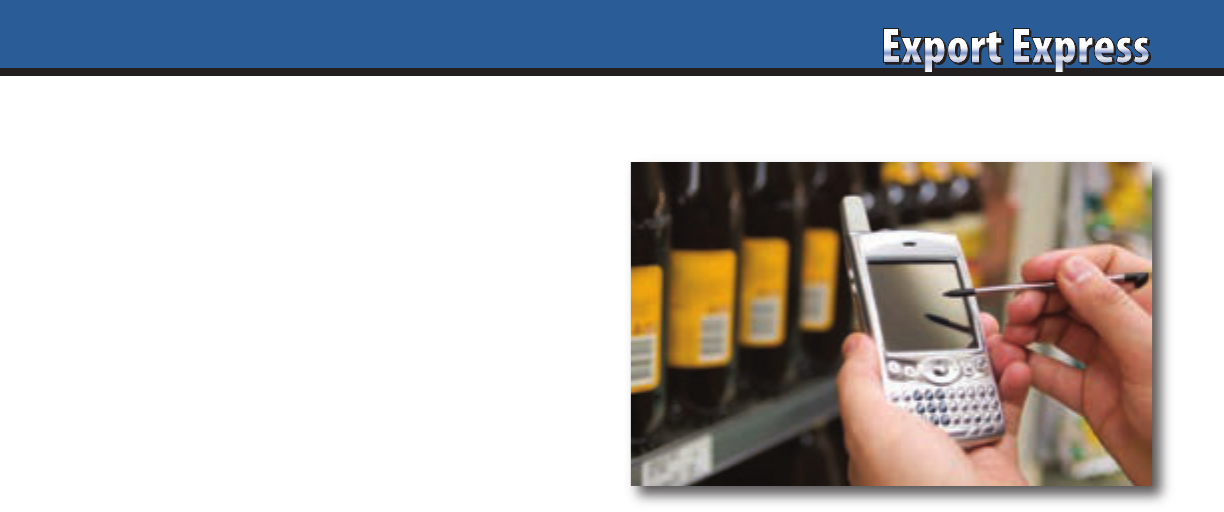
106
Many brands source 80 percent of sales or more from the shelf.
However, most export manager market visits include only a quick
trip to a store by the airport or distributors office. Formal retail checks
may be highly orchestrated, with some sales teams pre-selecting and
beautifying stores in advance. This creates a favorable, but unrealistic
view of actual store conditions. I will always remember the true story
of the CEO of Clorox visiting a supermarket in Chicago. He entered
the store and walked to the primary location of Clorox products. The
CEO discovered a letter taped to the shelf fixture. My memory fades
but the letter’s basic message was: “Dear CEO of Clorox. Thank
you for coming to our store. Can you remind your representative to
change the shelf back to the way it normally is following your visit?”
Listed below are Export Solutions’ Ten Tips for generating increased
sales everyday through a strategic approach to store checks.
1. Market Wide Retail Audit Creates an Accurate Benchmark
This requires the participation of 2-4 people (depending on market
size) from your company matched by an equivalent number of people
from your distributor/retail sales team. Each two person team is
committed to spend a full day at retail and is assigned a certain city
or section of town. Teams can usually visit 10-15 stores per day giving
you a broad spectrum of results across the market. Each store should
be measured by an identical scorecard. Ideally, the entire group should
meet at the end of the day to share observations and next steps.
2. Sync Store Audit Dates to Major Events
Schedule retail field audit dates to align with the major events
on your annual promotional calendar. High priority events could
include new product retail availability, peak seasonality, marketing
campaign launch, or a retailer driven merchandising program.
Unannounced, independent checks of stores chosen at random
allows an unbiased view of your brands presence.
3. Define and Publicize Realistic In-Store Guidelines
The first step is to ensure that each member of your sales team is
“crystal clear” on your brands in-store objectives. Create a shelf
conditions standards book, including photos that can be distributed
and shared online. Ensure that each sales representative owns a
written copy of your guidelines. Objectives should be realistic based
upon current brand turnover not “dreams” based upon higher sales
levels from your home market.
4. Store Objectives Should Be Specific and Measurable
Objectives should be direct, without much wriggle room for
interpretation. Assign specific goals that can be measured by
a “Yes/No” question or a numeric response. It is easy to count
brand share of category space, items per store, facings per store,
out of stocks, and pricing. For example, a major brand could track
performance versus a goal of shelf space equal to market share.
A niche product could measure average number of items per
store. “Yes/No” objectives could be location on the eye level shelf
or positioning next to your prime competitor. Design a model that
acknowledges the difference in store sizes from hypermarket to
neighborhood shop.
5. Create a Standard Scorecard to Evaluate Every Store
How did your brand look in the last store visited? Was it an “A, B, C,
D, E, or an F?” Why? Establishment of a grading system allows you
to provide an objective report card for each store. Normally, a system
of awarding points for share of shelf space, retail availability, and off
shelf merchandising is simple to execute.
6. Coordinate Your Shelf Metrics with Distributors Retail Reporting System
Best in class distributor sales representatives use handheld retail
reporting systems. More advanced technology extends far beyond
order management to capture store conditions for key brands.
Organize a meeting with your distributor’s sales technology guru.
How can you fit your objectives into their information technology
platform? How can your brand’s objectives be elevated in terms
of priority handling from the sales force?
7. Identify Shelf Conditions “Influencers”
Normally, an export manager’s communication loop includes the
distributor owner, brand manager, and the retailer’s category buyer.
Feedback on store conditions will reach your normal contacts, but
they may only serve as “filters” to the real gatekeepers of the
retailer’s shelves. Understand who allocates shelf space and product
positioning at each retailer. Which of your sales team is assigned
to call on the shelf decision maker? You may learn that the shelf
management team is a unique set of contacts, requiring sales efforts
and perseverance, just like your buyer.
8. The Retailers Schematic/Planogram Serves as the Official Record
Request the official planogram for your category from each of the
4-6 largest retailers for each market. Compare the planogram to
observations from store checks. Your biggest short term opportunity
may simply involve securing compliance to the agreed upon layout.
Reward key account sales people for implementing improvements
to the official planogram.
9. Written Feedback Documents Trends
Everyone is guilty of providing vague feedback that store check
results “looked good” or “need improvement.” A formal letter
analyzing store conditions versus expectations and objectives is
appropriate following a retail audit. Invest time to supply detailed
comments, including store location and specific success or problem
observed. Positive notes recognizing progress are always
appreciated. Avoid “harping” on minor shelf imperfections
that may be distracting and costly to fix.
10. Dedicate Time to Store Checks
Escape the handcuffs of conference room planning sessions to
see stores. Retail outlets serve as showcases for our brands and the
location where inventory is translated to a consumer purchase. Your
attention to store conditions will linger with the sales team long after
your plane departs. Send a strong signal that you are focused on
your retail showcase and watch your brand presence improve!
Ten Tips: Professional Approach to Store Checks

107
Fifteen Tips: Achieve Preferred Supplier Status
A natural goal is to achieve “Preferred
Supplier Status” with retailers and your
distributors. Satisfied trading partners
generate superior results. “Vendor of the
Year” does not mean “Spender of the
Year.” Listed below are 15 tips to be
viewed as a Preferred Supplier with
your distributors and retail customers.
1. Invest in Brand Support
Marketing activities drive incremental
sales and cultivate the health of your
brand and category. Supplier investments
in consumer awareness and retailer
development activities help everyone
achieve their sales objectives.
2. Innovate, Innovate, Innovate
The CPG/FMCG industry is fast paced,
with frequent new product introductions.
Companies which invest in research to
deliver new product ideas out-perform
and lead the category.
3. Keep the Supply Chain Filled
Short shipments cause a chain reaction
of problems throughout the supply chain.
Seek to attain a 98% case fill rate or better.
4. Distributors Need to Make
Money Too!
Retailers, Manufacturers, and Distributors
seek to achieve a reasonable profit.
Distributors ( Importers/Brokers)
are often “squeezed” as middlemen.
Distributor Margin reductions translate
to cutbacks in sales personnel, customer
service, investments in technology, and
ultimately impact results for your brand.
A financially healthy distributor is a
productive partner.
5. Focus on Priorities versus Minutiae
All partners are guilty of getting
absorbed in the details of the business.
Maintain attention on the key elements
which drive business success.
Minimize “non-essential” reports.
6. Serve as Category Expert
It’s a challenge for Retailer buyers and
distributors to master all the categories.
Preferred suppliers provide fresh and
unbiased insights into category trends,
product development, and analysis of
category data.
7. Visit the Market, But not Too Often
Distributors and Retailers welcome
your periodic visits. Insights on market
development and problem solving “face
to face” are
invaluable. On the
other, you need to
provide distributors
the time and freedom
to build the business
without distraction
of preparation and
management of
frequent supplier
market visits.
8. Calibrate Time
Commitment to
Compensation
A first step is to
evaluate what your
brand represents
to a distributor
(or retailer) in
terms of annual
revenue/profit
contribution. Reflect
on the activities
requested to service
your business in
relation to your
contribution.
9. Keep Your
Commitments
Preferred suppliers
are viewed as trusted partners. Reliable
suppliers secure more than their fair
share of retailer and distributor focus.
Last minute cutbacks in marketing
support are sometimes necessary,
but damage your credibility.
10. Respond to Local Ideas
Distributors and Retailers know their
markets. Give them the support they
request on a new promotion idea or sales
campaign. Let them build ownership of
an idea and the ultimate results. Good
ideas will build credibility and sales.
11. Pay Bill-backs on a Timely Basis
Many distributors are small businesses
with tight cash flow. It is always positive
to be viewed as a “Prompt Payer” of
legitimate invoices.
12. Support Distributor with Corporate
Headquarters
Many companies enjoy long term
relationships with their distributor
network. The Distributor depends on
you to serve as their advocate with senior
management of your company. Fight for
their ideas and defend their business
performance, where appropriate.
Remember that all organizations
experience a mix of “good years
and bad years.”
13. Share Best Practices
Industry participants are all “students
of the game” and are generally open
to learning about strategies from other
markets/retailers. On the other hand,
we must recognize that all markets have
subtle differences and not all approaches
are transferable.
14. Provide Proper Lead Time to Achieve
Desired Results
The consumer goods industry is relatively
organized with established protocols and
timelines. Exceptions can be made in case
of product recall or breakthrough
innovation. Everything functions better
when timelines are adhered to.
15. Recognize Achievement
Take the time to say “Thanks” or “Well
done.” This acknowledgement may be
in the form of a personal note, phone call,
or public recognition.

108
Don’t Tell Your Boss!
Finding qualified new distributors is tough! Export Solutions makes life a little
easier with our time saving distributor database.
• Coverage: 96 Countries. 9,200+ distributors of food, beverage, and snack
products. Includes 2,713 snack and 3,276 international food distributors.
• New: 1,397 worldwide distributors specializing in Italian Food products.
• Annual subscription to the database costs less than the price of one business trip.
• 3,000 brand owners and government trade organizations use Export Solutions’
database to “fill in the gaps” in their export coverage map.
“Spend time Selling to Distributors
versus Searching for Distributors”
www.exportsolutions.com

